Synthetic gene clusters
Mirsky , et al.
U.S. patent number 10,662,432 [Application Number 15/706,353] was granted by the patent office on 2020-05-26 for synthetic gene clusters. This patent grant is currently assigned to THE REGENTS OF THE UNIVERSITY OF CALIFORNIA. The grantee listed for this patent is The Regents of the University of California. Invention is credited to Ethan Mirsky, Karsten Temme, Christopher A. Voigt, Dehua Zhao.
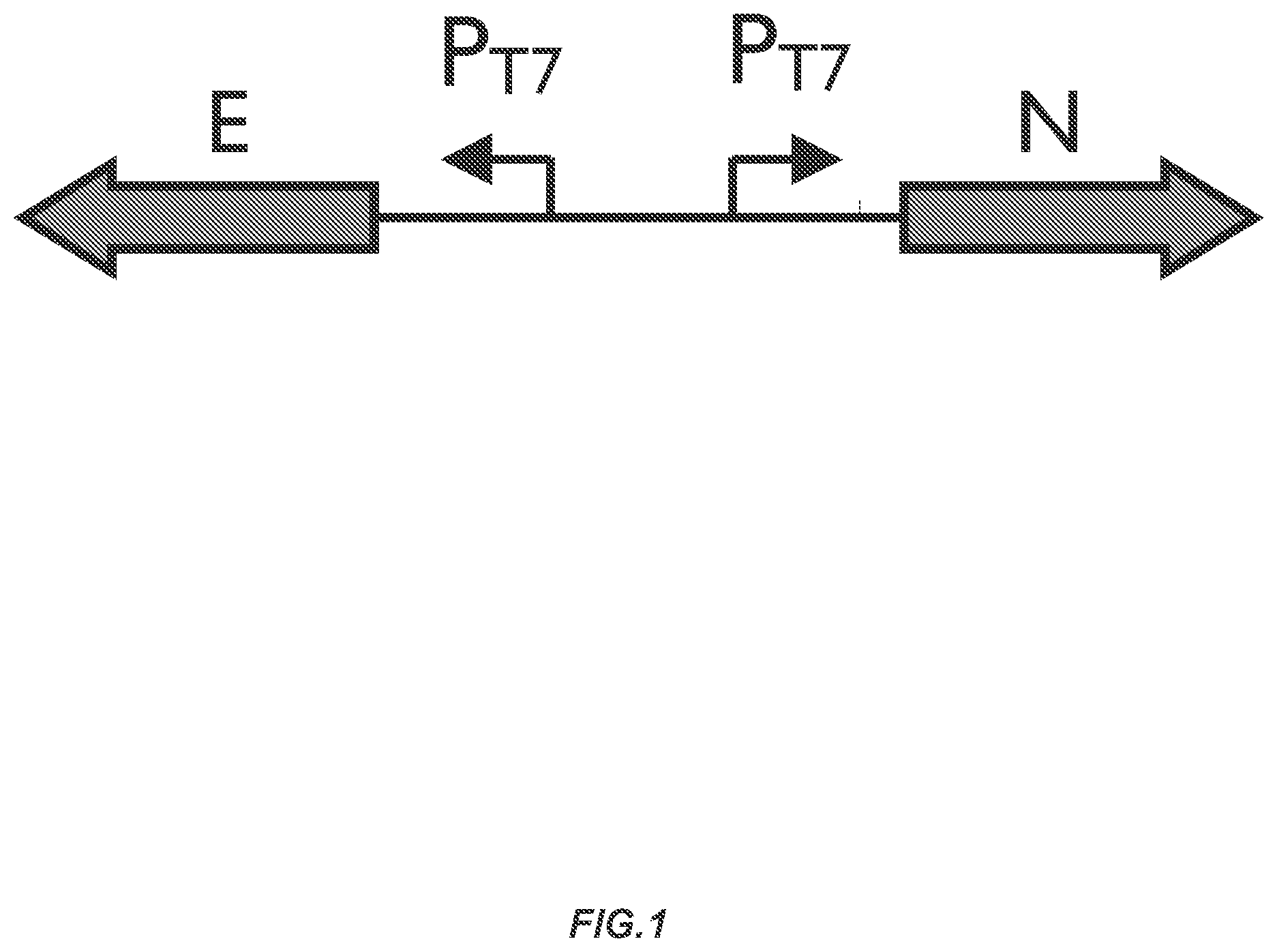

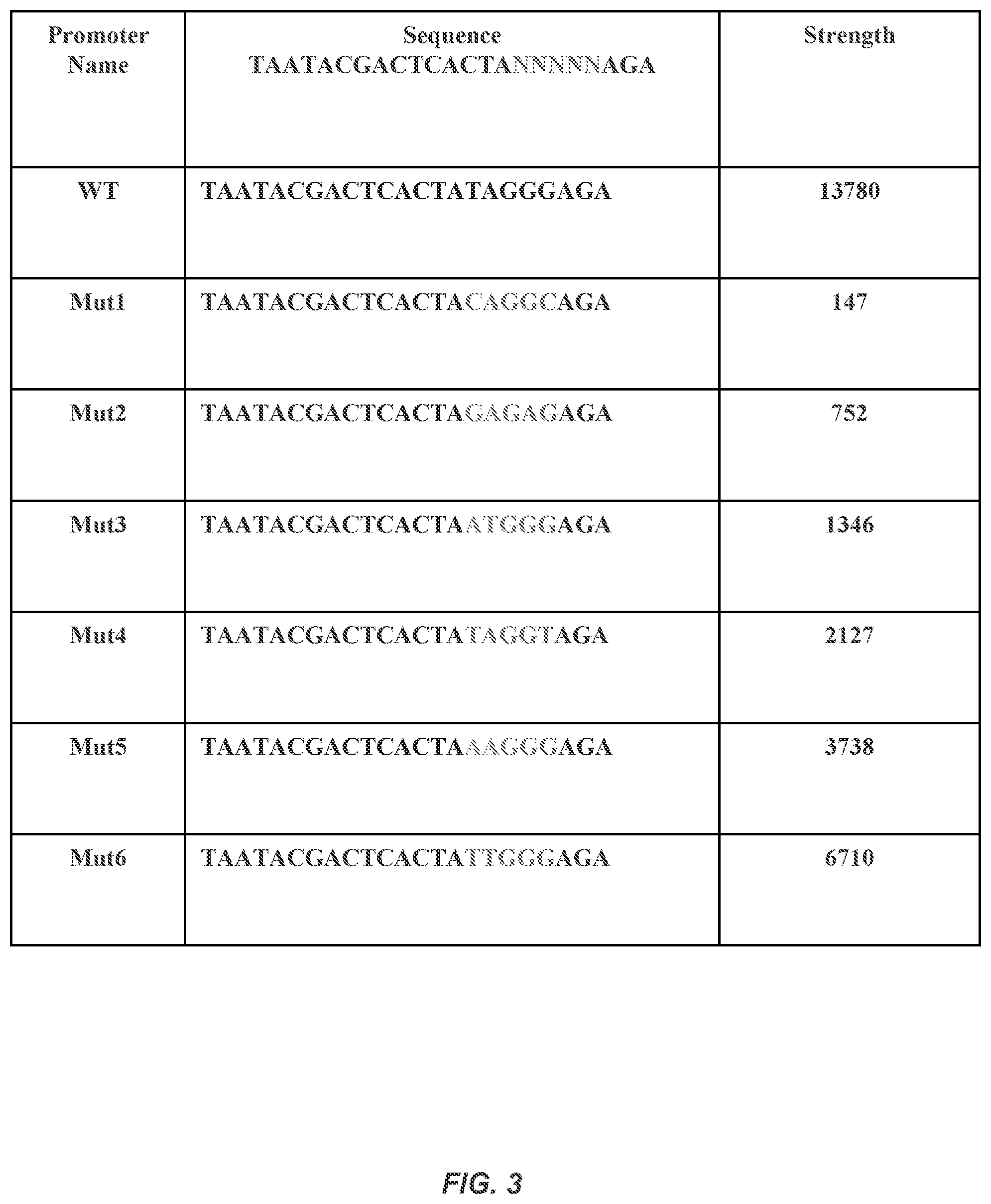
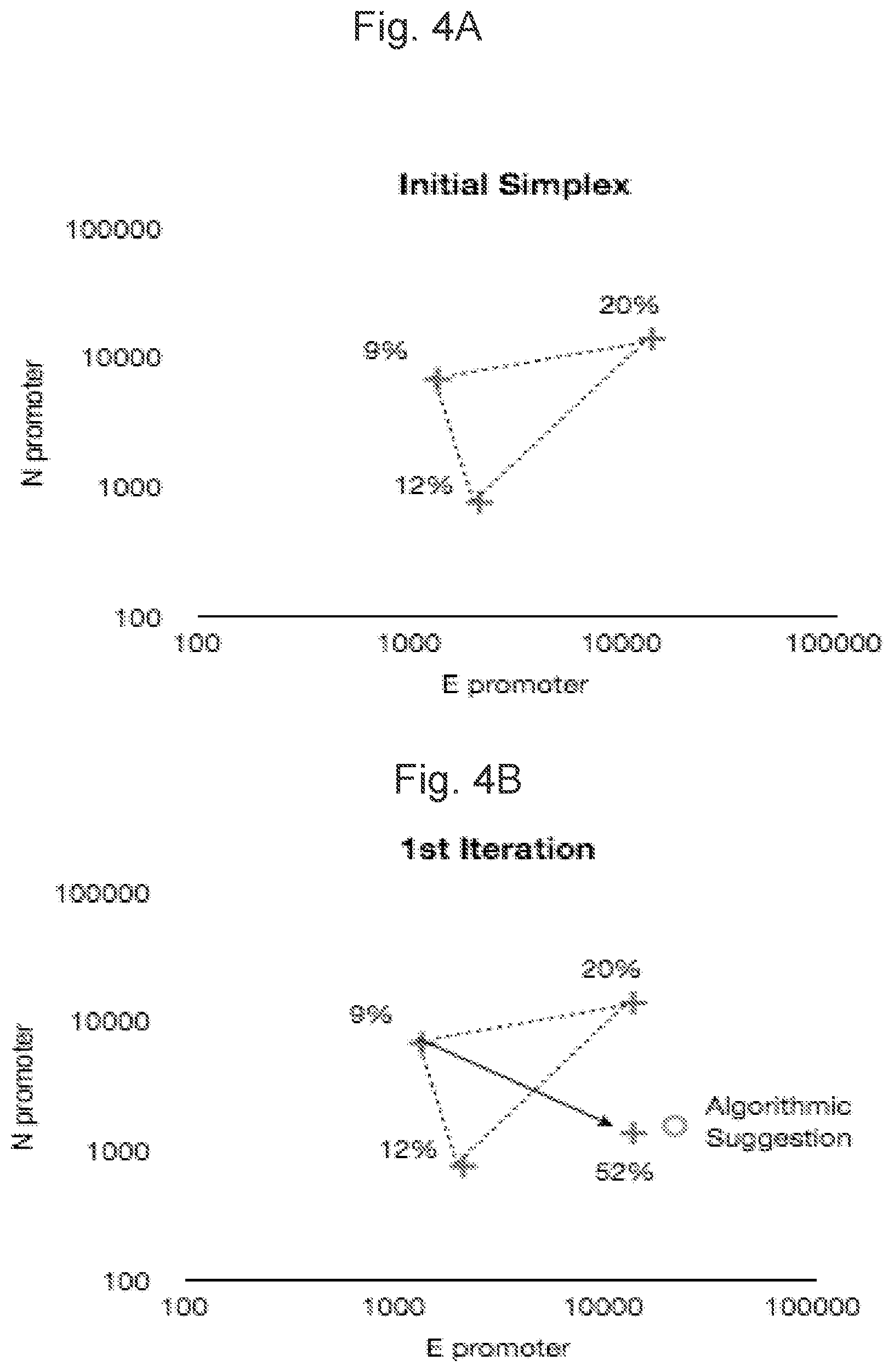
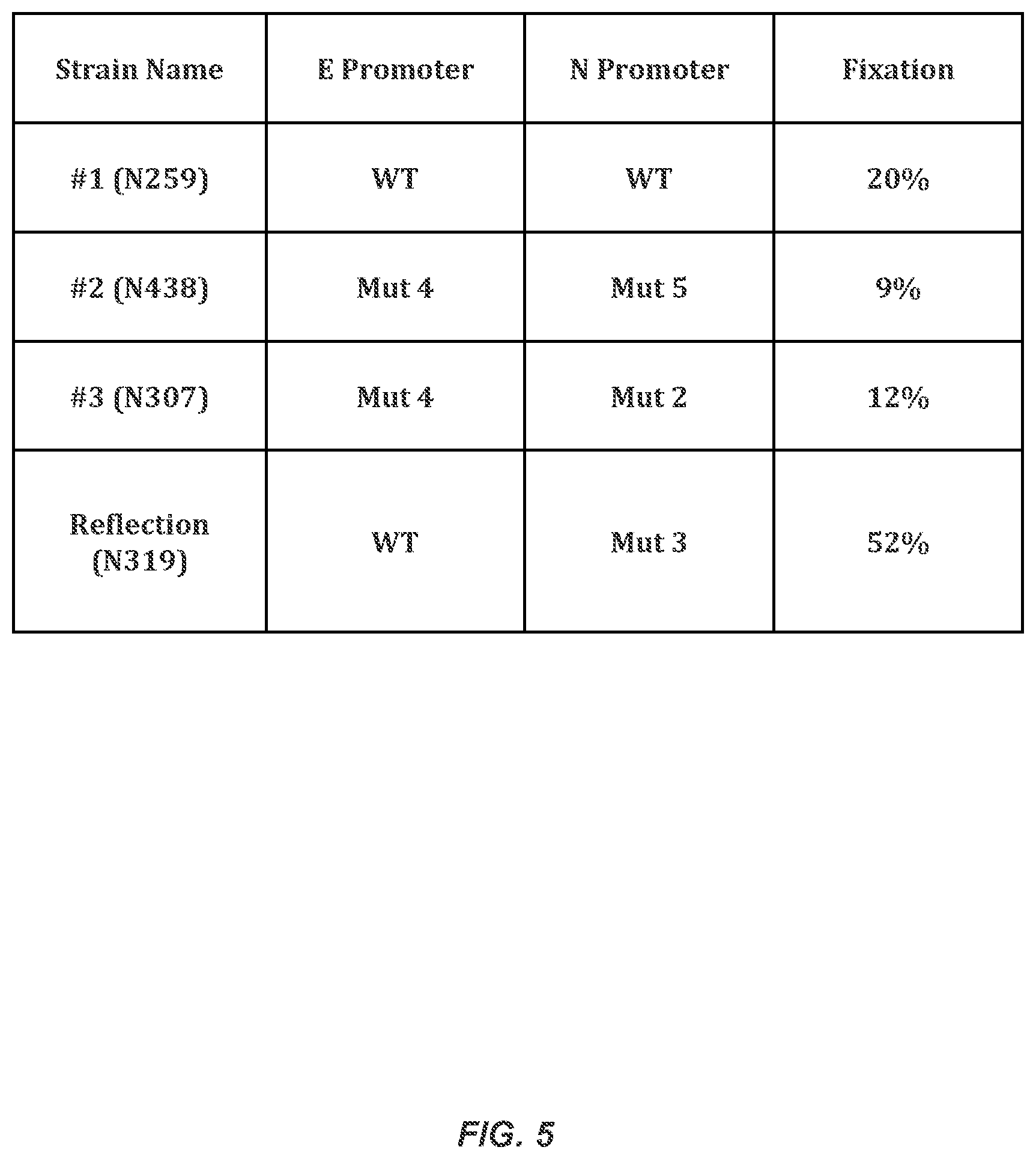
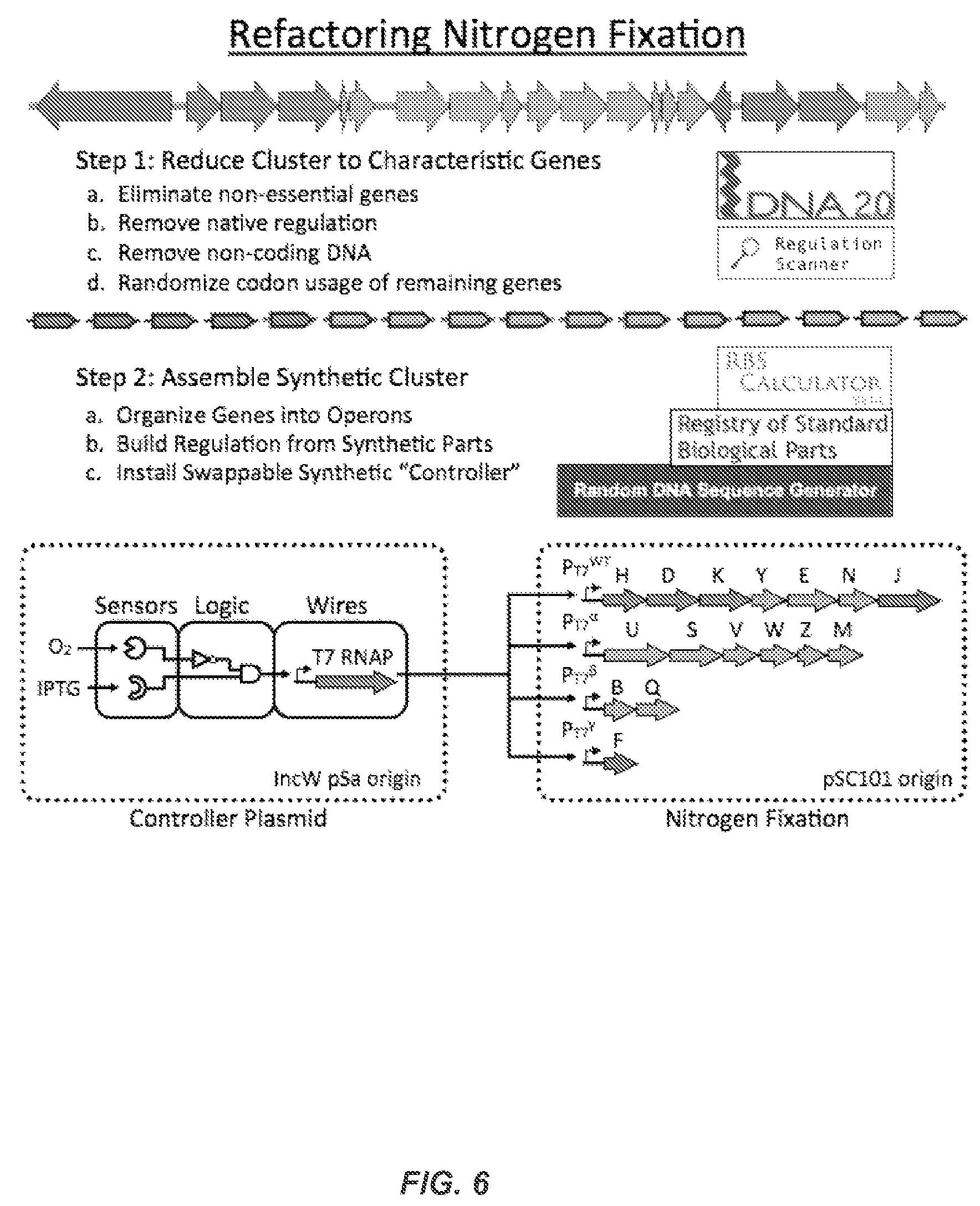

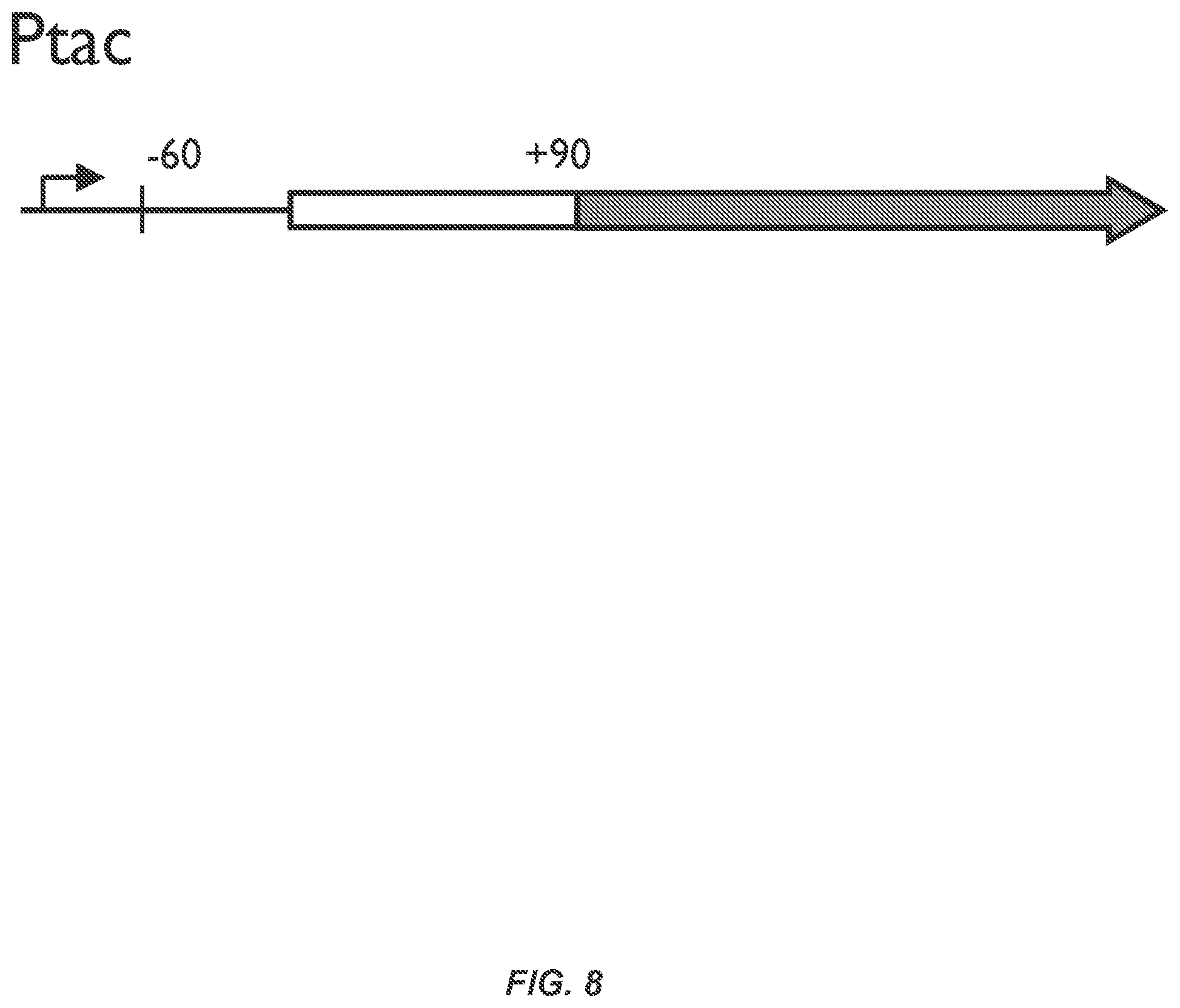
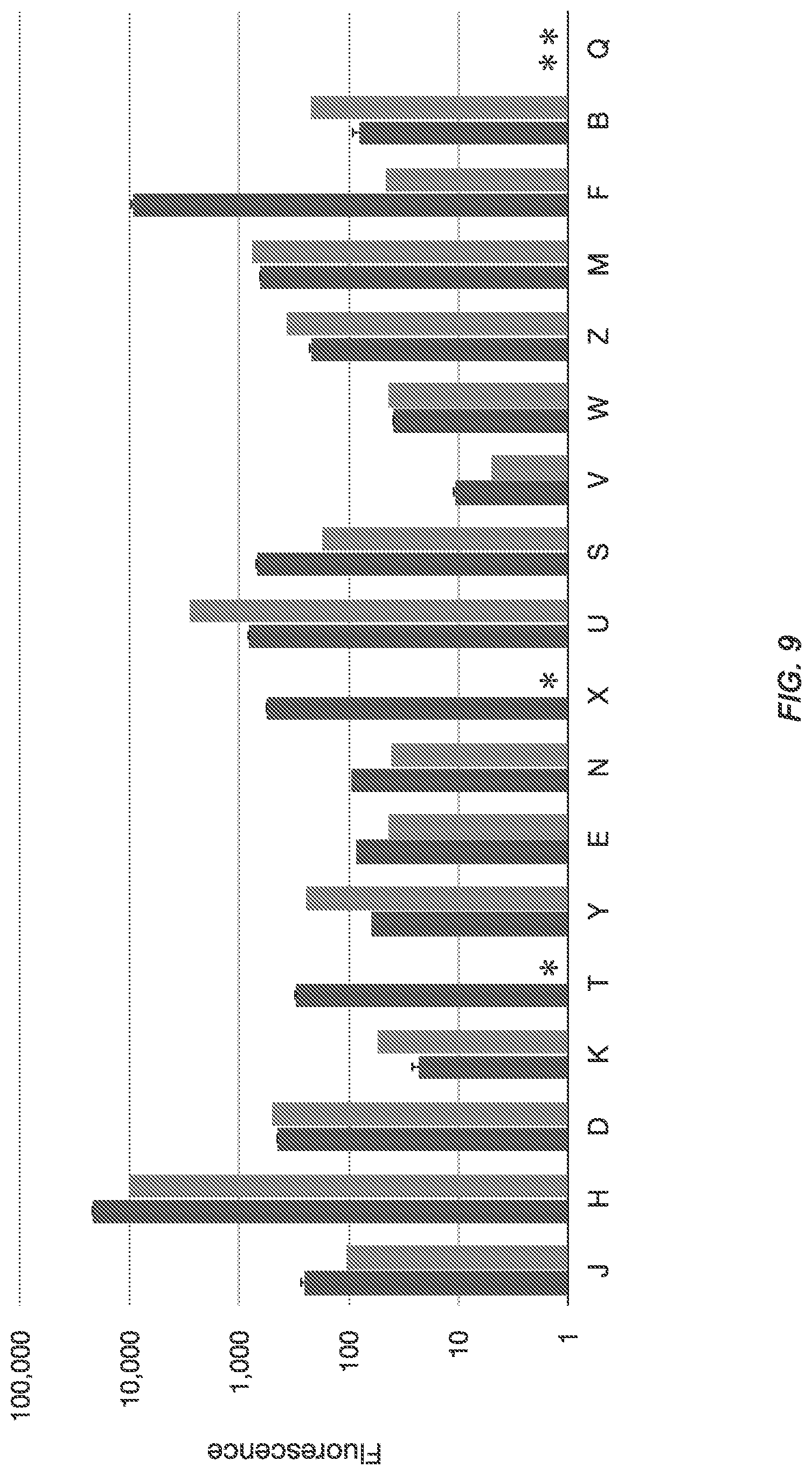
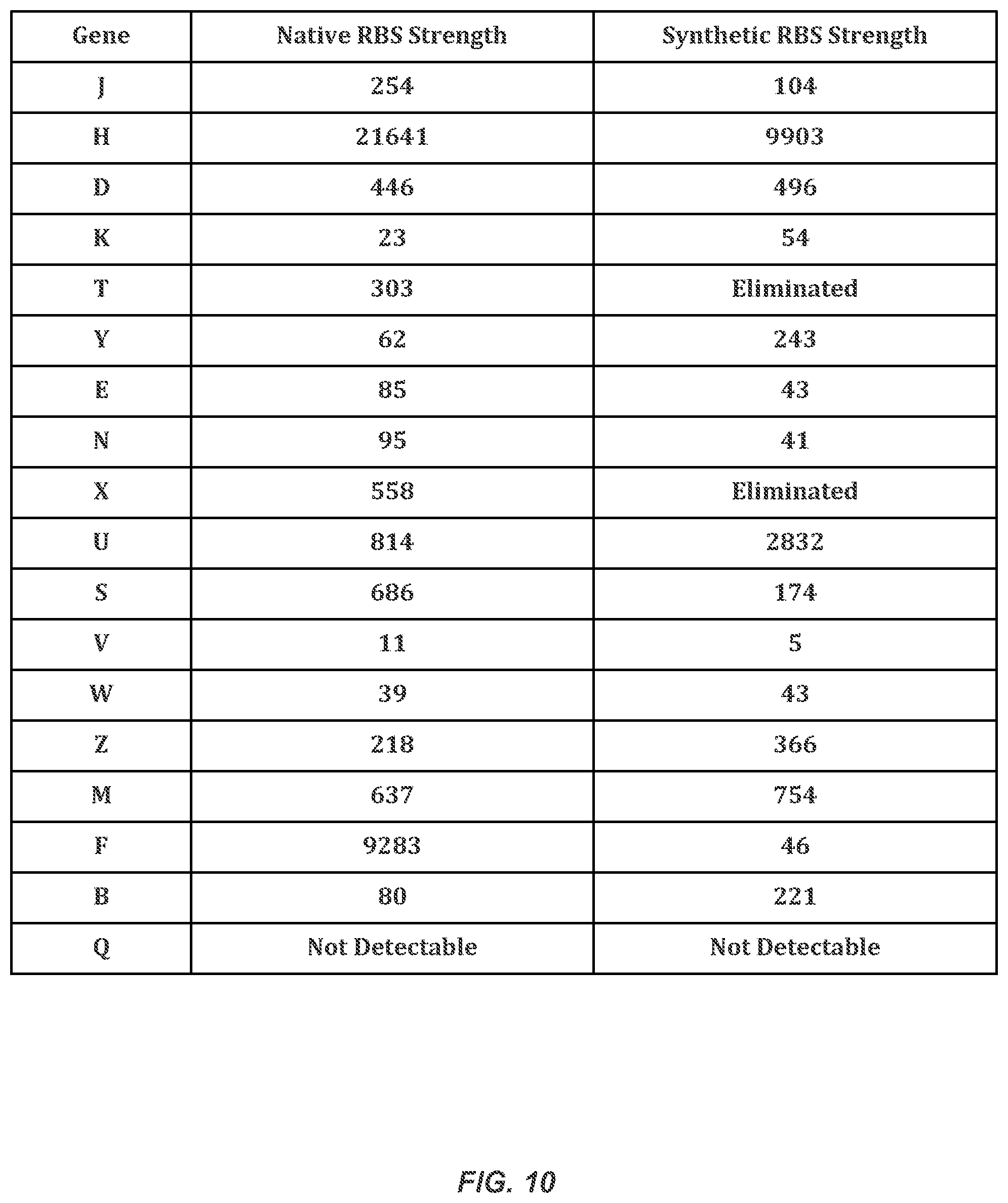

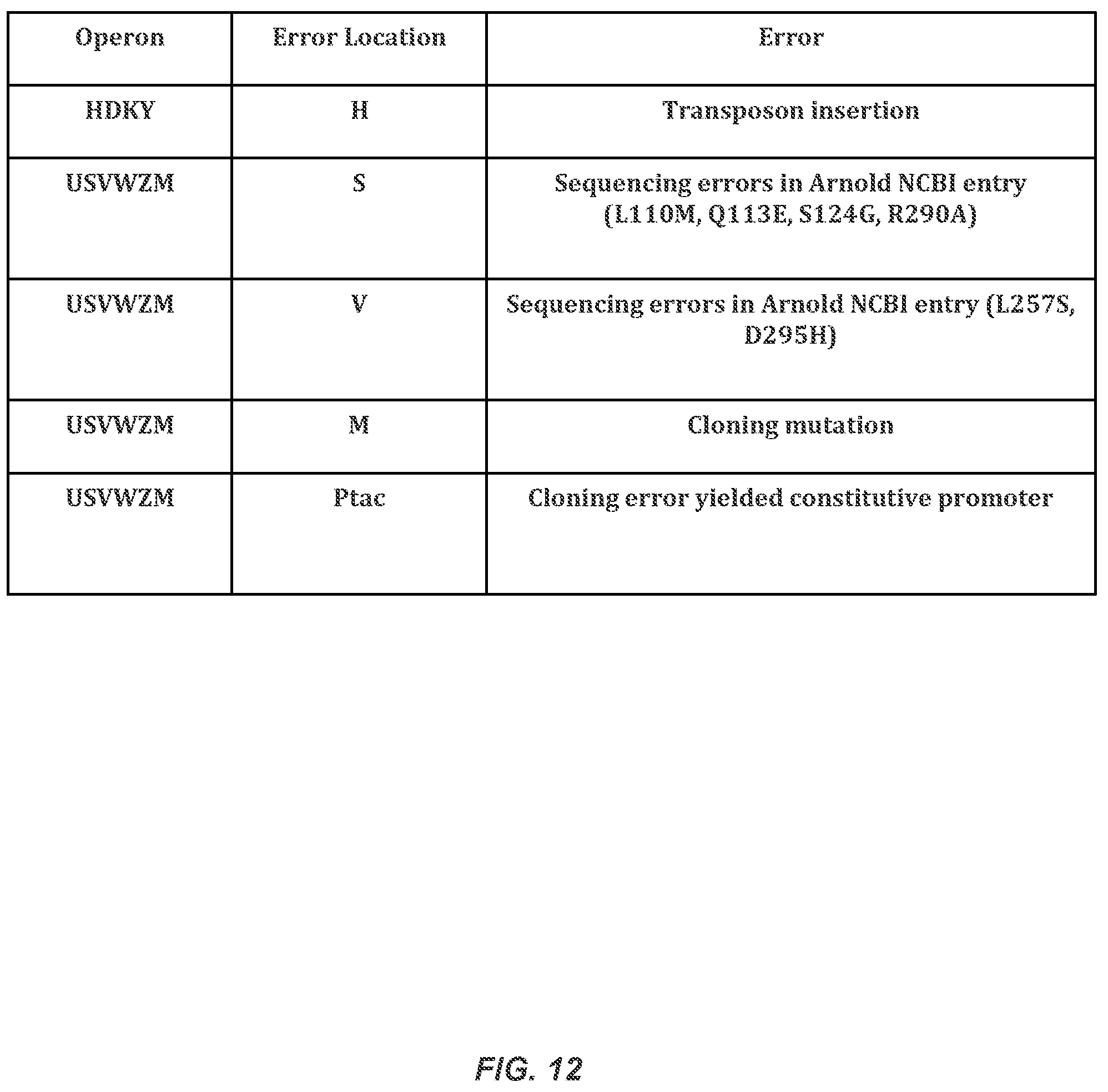
View All Diagrams
| United States Patent | 10,662,432 |
| Mirsky , et al. | May 26, 2020 |
Synthetic gene clusters
Abstract
Methods for making synthetic gene clusters are described.
| Inventors: | Mirsky; Ethan (San Francisco, CA), Temme; Karsten (San Francisco, CA), Voigt; Christopher A. (Belmont, MA), Zhao; Dehua (Allston, MA) | ||||||||||
|---|---|---|---|---|---|---|---|---|---|---|---|
| Applicant: |
|
||||||||||
| Assignee: | THE REGENTS OF THE UNIVERSITY OF
CALIFORNIA (Oakland, CA) |
||||||||||
| Family ID: | 47357740 | ||||||||||
| Appl. No.: | 15/706,353 | ||||||||||
| Filed: | September 15, 2017 |
Prior Publication Data
| Document Identifier | Publication Date | |
|---|---|---|
| US 20180073028 A1 | Mar 15, 2018 | |
Related U.S. Patent Documents
| Application Number | Filing Date | Patent Number | Issue Date | ||
|---|---|---|---|---|---|
| 15288916 | Oct 7, 2016 | 9957509 | |||
| 14126307 | 9512431 | ||||
| PCT/US2012/042502 | Jun 14, 2012 | ||||
| 61497781 | Jun 16, 2011 | ||||
| Current U.S. Class: | 1/1 |
| Current CPC Class: | C12N 15/52 (20130101); C07K 14/255 (20130101); C12N 15/635 (20130101); G16B 30/00 (20190201); C12N 15/67 (20130101); C07K 14/26 (20130101); G16B 25/00 (20190201); C12N 15/74 (20130101); C12N 15/63 (20130101); C12Y 118/06001 (20130101); C12N 9/0095 (20130101) |
| Current International Class: | C12N 15/63 (20060101); C12N 15/00 (20060101); C12N 1/20 (20060101); G16B 25/00 (20190101); G16B 30/00 (20190101); C07K 14/255 (20060101); C07K 14/26 (20060101); C12N 9/02 (20060101); C12N 15/52 (20060101); C12N 15/67 (20060101); C12N 15/74 (20060101) |
References Cited [Referenced By]
U.S. Patent Documents
| 5916029 | June 1999 | Smith et al. |
| 6548289 | April 2003 | Beynon et al. |
| 7084331 | August 2006 | Tsuyoshi et al. |
| 7470427 | December 2008 | Cocking |
| 8076142 | December 2011 | Huang et al. |
| 8137665 | March 2012 | Cocking |
| 8268584 | September 2012 | Harwood et al. |
| 8377671 | February 2013 | Cournac et al. |
| 9321697 | April 2016 | Kumar et al. |
| 9487451 | August 2016 | Doty et al. |
| 9512431 | December 2016 | Mirsky |
| 9657298 | May 2017 | Soto, Sr. et al. |
| 9975817 | May 2018 | Temme et al. |
| 10384983 | August 2019 | Temme et al. |
| 2004/0241847 | December 2004 | Okuyama et al. |
| 2005/0081262 | April 2005 | Cook et al. |
| 2006/0127988 | June 2006 | Wood et al. |
| 2006/0243011 | November 2006 | Someus |
| 2009/0105076 | April 2009 | Stewart et al. |
| 2010/0028870 | February 2010 | Welch |
| 2012/0015806 | January 2012 | Paikray et al. |
| 2014/0011261 | January 2014 | Wang et al. |
| 2014/0230504 | August 2014 | Finlayson et al. |
| 2014/0336050 | November 2014 | Soto, Sr. et al. |
| 2015/0101373 | April 2015 | Munusamy et al. |
| 2015/0239789 | August 2015 | Kang et al. |
| 2015/0315570 | November 2015 | Zhao et al. |
| 2016/0292355 | October 2016 | Lou et al. |
| 2018/0290942 | October 2018 | Voigt et al. |
| 2018/0297905 | October 2018 | Temme et al. |
| 2018/0297906 | October 2018 | Temme et al. |
| 2019/0039964 | February 2019 | Temme et al. |
| 2019/0144352 | May 2019 | Temme et al. |
| 2051071 | Mar 1993 | CA | |||
| 103451130 | Dec 2013 | CN | |||
| H01-225483 | Sep 1989 | JP | |||
| 93/05154 | Mar 1993 | WO | |||
| 99009834 | Mar 1999 | WO | |||
| 2001007567 | Feb 2001 | WO | |||
| 2006005100 | Jan 2006 | WO | |||
| 2009060012 | May 2009 | WO | |||
| 2009091557 | Jul 2009 | WO | |||
| 2011099019 | Aug 2011 | WO | |||
| 2011099024 | Aug 2011 | WO | |||
| 2011154960 | Dec 2011 | WO | |||
| 2013076687 | May 2013 | WO | |||
| 2014042517 | Mar 2014 | WO | |||
| 2014071182 | May 2014 | WO | |||
Other References
|
Pfleger et al.; "Combinatorial engineering of intergenic regions in operons tunes expression of multiple genes"; Nature Biotechnology. 24(8):1027-1031 (2006). cited by applicant . Sleight et al.; "Designing and engineering evolutionary robust genetic circuits"; J. Biological Engineering; 4:12, 2010 (20 pages). cited by applicant . Temme et al.; "Refactoring the nitrogen fixation gene cluster from Klebsiella oxytoca"; Proc. Natl. Acad. Sci. USA; 109(18):7085-7090 (2012) ePub Apr. 16, 2021. cited by applicant . "T7 RNA Polymerase Expression System for Bacillus megaterium"; T7 RNAP Expression System Handbook, Jan. 2010, .COPYRGT. MoBiTec GmbH, 18 pages. cited by applicant . The International Search Report and Written Opinion from PCT/US2012/042502, dated Jan. 31, 2013. cited by applicant . Chan et al., "Refactoring bacteriophage T7," Molecular Systems Biology, 2005, vol. 1, No. 1, pp. E1-E10 (doi: 10.1038/msb4100025). cited by applicant . Fischbach et al., "Prokaryotic gene clusters: A rich toolbox for synthetic biology," Biotechnology Journal, 2010, 15(12): 1277-1296. cited by applicant . Mirsky, Ethan M. (2012) Refactoring the Salmonella Type III Secretion System. (Doctoral Dissertation) Apr. 12, 2012 Retrieved from web at Proquest site (media.proquest.com/media/pq/classic/doc/2644519781/fmt/aijrep/NPDF?hl=&c- it:auth=Mirsky). cited by applicant . Temme, Karsten Louis. (2011) Designing and Engineering Complex Behavior in Living Machines. (Doctoral Dissertation) Oct. 1, 2011. Retrieved from the web at escholarship.org/uc/item/1r41x99s. cited by applicant . Voigt et al., "Genetic parts to program bacteria " Current Opinion in Biotechnology, 2006, 17(5):548-557. cited by applicant . Voigt, C. (2011) "Gaining Access: Rebuilding Genetics from the Ground Up". Institute of Medicine Board on Global Health Forum on Microbial Threats. Mar. 14, 2011 (Mar. 14, 2011). Retrieved from the web at iom.edu/.about./media/Files/ActivityFiles/PublicHealth/MicrobialThreats/2- 011-MAR-14/Voigt.pdf. cited by applicant . The Extended European Search Report from EP Appl. No. 12800054.4, dated Dec. 19, 2014. cited by applicant . Bageshwar, et al., "An Environmentally Friendly Engineered Azotobacter Strain That Replaces a Substantial Amount of Urea Fertilizer while Sustaining the Same Wheat Yield," 2017, App. Env. Micr. Article. cited by applicant . Kim, et al., "Constitutive expression of nitrogenase system in Klebsiella oxytoca by gene targeting mutation to the chromosomal nifLA operon," Journal of Biotechnology, vol. 10, 1989, pp. 293-302. cited by applicant . Marx, et al. "Broad-Host-Range cre-lox System for Antibiotic Marker Recycling in Gram-Negative Bacteria," BioTechniques, vol. 33, 2002, pp. 1062-1067. cited by applicant . Blanco, et al., "Sequence and molecular analysis of the nifL gene of Azotobacter vinelandii," Molecular Microbiology, vol. 9(4), 1993, pp. 869-879. cited by applicant . Hidaka, et al., "Promotion of the Growth of Rice by Inoculation of Nitrogen-Fixing-Activity-Enhanced Bacteria to the Rhizosphere," In: Pedrosa F.O., Hungria M., Yates G., Newton W.E. (eds.) Nitrogen Fixation: From Molecules to Crop Productivity. Current Plant Science and Biotechnology in Agriculture, 2002, vol. 38. Springer, Dordrecht. cited by applicant . Bali, et al., "Excretion of Ammonium by a nifL Mutant of Azotobacter vinelandii fixing Nitrogen.," Applied and Environmental Microbiology, May 1992, pp. 1711-1718. cited by applicant . Macneil, et al., "Mutations in nif Genes That Cause Klebsiella pneumoniae to be Derepressed for Nitrogenase Synthesis in the Presence of Ammonium," J Bacteriol., Nov. 1980; 144(2), pp. 744-751. cited by applicant . Qiu, et al., "Construction of Genetically Engineered Strains of Enterobacter cloacae (nifL.about.(-)A.about.(c))," Acta Phytophysiologica Sinica., [Jan. 1, 1999, 25(3), pp. 269-273]. cited by applicant . Roncato-Maccari, et al., "Endophytic Herbaspirillum seropedicae expresses nif genes in gramineous plant,." FEMS Microbiology Ecology, 2003; 45, pp. 39-47. cited by applicant. |
Primary Examiner: Mahatan; Chaning S
Attorney, Agent or Firm: Kilpatrick Townsend & Stockton LLP
Government Interests
STATEMENT AS TO RIGHTS TO INVENTIONS MADE UNDER FEDERALLY SPONSORED RESEARCH AND DEVELOPMENT
This invention was made with government support under grant nos. CFF0943385 and EEC0540879 awarded by the National Science Foundation and grant no. R01 AI067699, awarded by the National Institutes of Health. The government has certain rights in the invention.
Parent Case Text
CROSS-REFERENCE TO RELATED PATENT APPLICATIONS
The present application is a Division of U.S. application Ser. No. 15/288,916, filed Oct. 7, 2016, which is a Continuation of U.S. application Ser. No. 14/126,307, filed Jun. 14, 2012, which is a US National Stage (371) of International Application No. PCT/US2012/042502, filed Jun. 14, 2012, which claims benefit of priority to U.S. Provisional Patent Application No. 61/497,781, filed Jun. 16, 2011, each of which is incorporated by reference.
Claims
What is claimed is:
1. A method of altering regulation of a plurality of native bacterial genes associated with a function in a cell, comprising: providing a bacterial cell for expressing gene products; providing a gene cluster having a plurality of native bacterial genes having coding sequences; modifying the gene cluster by making at least one modification in a coding region or an intergenic region; operably linking at least one heterologous transcriptional regulatory sequence to at least one coding sequence within the modified gene cluster wherein the at least one heterologous transcriptional regulatory sequence is from the same species as the plurality of native bacterial genes; and expressing gene products of the modified gene cluster in the bacterial cell under the control of a polypeptide that binds directly or indirectly to the at least one heterologous transcriptional regulatory sequence.
2. The method of claim 1, wherein the gene cluster modification comprises replacing at least one native codon within one of the coding sequences to modify at least one native regulatory sequence using a synonymous codon.
3. The method of claim 2, wherein at least two coding sequences of the plurality of native bacterial genes have at least one native codon replaced with a synonymous codon.
4. The method of claim 2, wherein the synonymous codon is a maximal distance from a corresponding native codon.
5. The method of claim 1, wherein the polypeptide that binds directly or indirectly to the at least one heterologous transcriptional regulatory sequence is expressed from a control expression cassette, the control expression cassette comprising a control promoter operably linked to a polynucleotide sequence encoding the polypeptide.
6. The method of claim 1, wherein the polypeptide that binds directly or indirectly to the at least one heterologous transcriptional regulatory sequence is heterologous to the cell.
7. The method of claim 1, wherein the polypeptide that binds directly or indirectly to the at least one heterologous transcriptional regulatory sequence is from the same species as the plurality of native bacterial genes.
8. The method of claim 1, further comprising: detecting the magnitude of gene expression of the expressed gene products by computation.
9. The method of claim 8, wherein the computation comprises a numerical optimization algorithm.
10. The method of claim 1, wherein modifying the gene cluster comprises replacing at least one intergenic region to remove at least one native regulatory sequence selected from the group consisting of a ribosome binding site, a terminator, and a promoter.
11. The method of claim 1, wherein modifying the gene cluster comprises: altering at least one intergenic region within the gene cluster to modify a native regulatory sequence.
12. The method of claim 11, further comprising: identifying the native regulatory sequence using computation.
13. The method of claim 11, wherein the polypeptide that binds directly or indirectly to the at least one heterologous transcriptional regulatory sequence is from the same species as the plurality of native bacterial genes.
14. The method of claim 11, wherein the polypeptide that binds directly or indirectly to the at least one heterologous transcriptional regulatory sequence is expressed from a control expression cassette, the control expression cassette comprising a control promoter operably linked to a polynucleotide sequence encoding the polypeptide.
15. The method of claim 11, further comprising: detecting the magnitude of gene expression of the expressed gene products by computation.
Description
BACKGROUND OF THE INVENTION
Genetically programming cells require sensors to receive information, circuits to process the inputs, and actuators to link the circuit output to a cellular response (Andrianantoandro E, et al., Mol Syst Biol 2 (2006); Chin J W Curr Opin Struct Biol 16: 551-556 (2006); Voigt C A Curr Opin Biotech 17: 548-557 (2006); Tan C, Mol Biosyst 3: 343-353 (2007)). In this paradigm, sensing, signal integration, and actuation are encoded by distinct `devices` comprised of genes and regulatory elements (Knight T K, Sussman G J Unconventional Models of Computation 257-272 (1997); Endy D Nature 438: 449-453 (2005)). These devices communicate with one another through changes in gene expression and activity. For example, when a sensor is stimulated, this may lead to the activation of a promoter, which then acts as the input to a circuit.
BRIEF SUMMARY OF THE INVENTION
Embodiments of the present invention provide a polynucleotide comprising a synthetic operon, wherein the operon comprises at least two coding sequences under the control of a heterologous transcriptional regulatory sequence, wherein each coding sequence is operably linked to a heterologous ribosome binding site (RBS). In some embodiments, the coding sequences are from the same native operon and the heterologous RBSs regulate translation of the coding sequences in a ratio that is substantially similar to the ratio of native translation from the native operon. In some embodiments, the coding sequences are from different native operons and the heterologous RBSs regulate translation of the coding sequences in a ratio that is substantially similar to the ratio of native translation from the native operon. In some embodiments, the coding sequences are from the same native operon and the coding sequences in the operon comprise one or more altered codon compared to the native operon. In some embodiments, codons of one or more coding sequence have been selected for maximal distance from codon usage of a corresponding coding sequence in the native operon.
In some embodiments, at least two coding sequences encode different proteins encoded by the Klebsiella pneumoniae nif gene cluster. In some embodiments, the proteins are selected from the group consisting of nifJ, nifH, nifD, nifK, nifY, nifE, nifN, nifU, nifS, nifV, nifW, nifZ, niM, nifF, nifB, and nifQ (e.g., wherein the coding sequences are substantially identical to those listed in FIG. 18). In some embodiments, the operon comprises coding sequences for Klebsiella pneumoniae nifH, nifD, nifK, and nifY. In some embodiments, the operon comprises coding sequences for Klebsiella pneumoniae nifE and nifN. In some embodiments, the operon comprises coding sequences for Klebsiella pneumoniae nifU, nifS, nifV, nifW, nifZ, and nifM. In some embodiments, the operon comprises coding sequences for Klebsiella pneumoniae nifB and nifQ.
In some embodiments, at least two coding sequences encode different proteins of the Salmonella typhimurium Type III secretion system. In some embodiments, the proteins are selected from the group consisting of PrgH, PrgI, PrgJ, PrgK, OrgA, OrgB, InvA, InvC, InvE, InvF, InvG, InvI, InvJ, SpaO, SpaP, SpaQ, SpaR, and SpaS (e.g., wherein the coding sequences are substantially identical to those listed in FIG. 24). In some embodiments, the operon comprises coding sequences for Salmonella typhimurium PrgH, PrgI, PrgJ, PrgK, OrgA, and OrgB. In some embodiments, the operon comprises coding sequences for Salmonella typhimurium InvA, InvC, InvE, InvF, InvG, InvI, InvJ, SpaO, SpaP, SpaQ, SpaR, and SpaS.
Embodiments of the present invention also provide for a host cell (optionally isolated) comprising a polynucleotide as described above or elsewhere herein. In some embodiments, the host cell is a prokaryotic or eukaryotic cell (including but not limited to a mammalian or plant or fungal cell).
Embodiments of the present invention also provide a system comprising a set of two or more different synthetic operons, the two or more operons each comprising at least two coding sequences under the control of a heterologous transcriptional regulatory sequence, wherein each coding sequence is operably linked to a heterologous ribosome binding site (RBS), wherein the transcriptional regulatory sequence of each operon in the set is controlled by the same transcriptional activator or repressor polypeptide(s).
In some embodiments, the system further comprises an expression cassette comprising a promoter operably linked to a polynucleotide encoding the transcriptional activator or repressor polypeptide(s). In some embodiments, the promoter of the expression cassette is an inducible promoter. In some embodiments, the polynucleotide in the expression cassette encodes a transcriptional repressor. In some embodiments, the polynucleotide in the expression cassette encodes a transcriptional activator. In some embodiments, the transcriptional activator is an RNA polymerase (RNAP). In some embodiments, the RNAP is T7 RNAP or is substantially similar to T7 RNAP.
In some embodiments, the transcriptional regulatory sequences of at least two of the operons are different.
In some embodiments, the coding sequences in the operons are organized such that coding sequences having substantially similar native expression are grouped into the same operon. In some embodiments, the transcriptional regulatory sequence of at least two operons have different promoters that are differentially regulated by T7 RNA polymerase and wherein the different strength of the promoters correspond to the relative strength of native promoters of the coding sequences.
In some embodiments, the expression cassette and the synthetic operons are expressed in a cell. In some embodiments, the cell is from a different species than the species from which the native operon was isolated. In some embodiments, the cell is from the same species from which the native operon was isolated.
In some embodiments, the system encodes a nitrogenase. In some embodiments, the system comprises a first operon comprising coding sequences for Klebsiella pneumoniae nifH, nifD, nifK, and nifY; a second operon comprising coding sequences for Klebsiella pneumoniae nifE and nifN; a third operon comprising coding sequences for Klebsiella pneumoniae nifU, nifS, nifV, nifW, nifZ, and nifM; and a fourth operon comprising coding sequences for Klebsiella pneumoniae nifB and nifQ. In some embodiments, the first, second, third, and fourth operon comprising a T7 RNA polymerase (RNAP) promoter and the system further comprises an expression cassette comprising a promoter operably linked to a polynucleotide encoding an RNAP substantially identical to T7 RNA polymerase (RNAP).
In some embodiments, the system encodes a type III secretion system. In some embodiments, the type III secretion system is a Salmonella typhimurium type III secretion system. In some embodiments, the system comprises a first operon comprising coding sequences for Salmonella typhimurium PrgH, PrgI, PrgJ, PrgK, OrgA, and OrgB and a second operon comprising coding sequences for Salmonella typhimurium InvA, InvC, InvE, InvF, InvG, InvI, InvJ, SpaO, SpaP, SpaQ, SpaR, and SpaS.
Embodiments of the present invention also provide a method for replacing native regulation of a set of genes collectively associated with a function with synthetic regulation. In some embodiments, the method comprises providing coding sequences for a set of polypeptides encoded by genes collectively associated with a function; changing codon identity within at least one coding sequence, thereby removing at least one regulatory sequence within the coding sequence; organizing the coding sequences into one or more synthetic operon(s); operably linking one or more heterologous transcriptional regulatory sequence to the operon(s), thereby controlling the magnitude of gene expression from the operon(s); and expressing the one or more synthetic operon(s) in a cell under the control of a polypeptide that binds directly or indirectly to the heterologous transcriptional regulatory sequence.
In some embodiments, the polypeptide is heterologous to the cell.
In some embodiments, the providing comprises obtaining the gene nucleotide sequences and eliminating non-coding sequences.
In some embodiments, the set of genes is from a gene cluster. In some embodiments, the set of genes are from a prokaryote. In some embodiments, the genes are from a native operon.
In some embodiments, the at least one regulatory sequence is identified using computation. In some embodiments, the computation comprises searches of coding sequences for ribosome binding sites, terminators, and/or promoters.
In some embodiments, removing the at least one regulatory sequence comprises replacement of native codons in the coding sequence with non-native synonymous codons. In some embodiments, the removing comprises selecting non-native codons having maximal distance from codons of the native coding sequence. In some embodiments, the removing comprises selecting non-native codons for optimal expression in a host cell.
In some embodiments, the method further comprises identifying and removing one or more of transposon insertion sites, sites that promote recombination, sites for cleavage by restriction endonucleases, and sites that are methylated.
In some embodiments, the organizing comprises grouping coding sequences into operons based on substantially similar native expression level.
In some embodiments, the organizing comprises ordering coding sequences within operons such that the highest expressing gene (based on native expression) occurs first and the lowest expressing gene (based on native expression) occurs last. In some embodiments, organization is based on native temporal expression, function, ease of manipulation of DNA, and/or experimental design. In some embodiments, magnitude of expression of coding sequences substantially correspond to the ratio of proteins encoded by the coding sequences as measured in the native system. In some embodiments, magnitude of expression of coding sequences is determined by computation. In some embodiments, the computation comprises a numerical optimization algorithm.
In some embodiments, the numerical optimization algorithm a Nelder-Mead algorithm, a Newton's method, a quasi-Newton method, a conjugate gradient method, an interior point method, a gradient descent, a subgradient method, a ellipsoid method, a Frank-Wolfe method, an interpolation method and pattern search methods, or an ant colony model.
In some embodiments, the heterologous transcriptional regulatory sequence(s) comprise a T7 RNAP promoter(s).
In some embodiments, the heterologous transcriptional regulatory sequence(s) comprise an inducible promoter.
In some embodiments, the method further comprises operably linking a heterologous ribosomal binding site (RBS) to one or more coding sequence in the synthetic operon. In some embodiments, different RBSs are operably linked to different coding sequences. In some embodiments, the RBSs regulate translation of the coding sequences in a ratio that is substantially similar to the ratio of native translation from the native operon.
In some embodiments, the method further comprises operably linking a heterologous transcriptional terminator sequence to one or more coding sequence in the synthetic operon. In some embodiments, the terminators are T7 RNAP terminators. In some embodiments, terminators for different operons are different.
In some embodiments, the method further comprises operably linking a buffer sequences between two functional sequences in an operon wherein the functional sequences are selected from the group consisting of a promoter, ribosome binding site, coding sequence, and terminator. In some embodiments, the buffer sequence is selected from the group consisting of a random sequence, a UP-region of a promoter, an extended 5-UTR sequence, and a RNAase cleavage site.
In some embodiments, the operons are expressed from a plasmid. In some embodiments, the plasmid has a low copy origin of replication.
In some embodiments, the polypeptide that binds directly or indirectly to the heterologous transcriptional regulatory sequence is expressed from a control expression cassette, the expression cassette comprising a control promoter operably linked to a polynucleotide sequence encoding the polypeptide. In some embodiments, the expression cassette is contained in a control plasmid separate from a plasmid containing the operons. In some embodiments, the control promoter is an inducible promoter.
In some embodiments, the heterologous polypeptide comprises an RNA polymerase (RNAP). In some embodiments, the RNAP is T7 RNAP. In some embodiments, the expression cassette is an environmental sensor.
Embodiments of the invention also provide for a method for determining an experimentation point for controlling the magnitude of expression of two or more genes (e.g., within a synthetic operon). In some embodiments, the method comprises: receiving one or more input data points, wherein the input data points provide information about one or more regulatory elements and a system property; and determining, with a computer, a next data point using a computational method, wherein the next data point provides information about the one or more regulatory elements.
In some embodiments, the method further comprises using the next data point for further experimentation to optimize expression of the two or more genes. In some embodiments, the regulatory elements include, e.g., ribosomal binding sites and/or transcriptional regulatory elements.
In some embodiments, the computational method is a numerical analysis technique. In some embodiments, the numerical optimization method is the Nelder-Mead algorithm, the Newton's method, the quasi-Newton method, a conjugate gradient method, an interior point method, a gradient descent, a subgradient method, a ellipsoid method, the Frank-Wolfe method, an interpolation method and pattern search methods, or an ant colony model. In some embodiments, the numerical optimization method used to determine the next data point for further experimentation requires considering the reflection point, expansion point, or contraction point based on the one or more input data points.
In some embodiments, the computational method is a design of experiments (DoE) method.
Embodiments of the invention also provide for a computer program product comprising a tangible computer readable medium storing a plurality of instructions for controlling a processor to perform an operation for determining an experimentation point for controlling the magnitude of expression of two or more genes, the instructions comprising receiving one or more input data points, wherein the input data points provide information about one or more regulatory elements and a system property; and determining, with a computer, a next data point using a computational method, wherein the next data point provides information about the one or more regulatory elements.
DEFINITIONS
A recitation of "a", "an" or "the" is intended to mean "one or more" unless specifically indicated to the contrary.
A polynucleotide or polypeptide sequence is "heterologous to" an organism or a second sequence if it originates from a foreign species, or, if from the same species, is modified from its original form. For example, a promoter operably linked to a heterologous coding sequence refers to a coding sequence from a species different from that from which the promoter was derived, or, if from the same species, a coding sequence which is not naturally associated with the promoter (e.g. a T7 RNA polymerase promoter operably linked to a synthetic nifoperon).
The term "operably linked" refers to a functional linkage between a nucleic acid expression control sequence (such as a promoter, or array of transcription factor binding sites) and a second nucleic acid sequence, wherein the expression control sequence directs transcription of the nucleic acid corresponding to the second sequence. In the context of a ribosomal binding site (RBS) and coding sequences, the term refers to the functional linkage of the RBS to the coding sequence wherein the RBS recruits ribosomes for translation of the coding sequence on an RNA.
A "cognate pair" as used herein refers to a sequence-specific DNA binding polypeptide and a target DNA sequence that is bound by the particular sequence-specific DNA binding polypeptide. For sequence-specific DNA binding polypeptides that bind more than one target nucleic acid, the cognate pair can be formed with the sequence-specific DNA binding polypeptide and any one of the target DNA sequences the polypeptide binds.
"Orthogonal" transcriptional systems refer to systems (e.g., one, two, three, or more) of transcriptional regulatory elements comprising target DNA sequences regulated by their cognate sequence-specific DNA binding polypeptide such that the sequence-specific DNA binding polypeptides in the system do not have "cross-talk," i.e., the sequence-specific DNA binding polypeptides do not interfere or regulate transcriptional regulatory elements in the system other than the transcriptional regulatory elements containing the cognate target DNA sequence of the sequence-specific DNA binding polypeptide.
"Sequence-specific DNA binding polypeptides" refer to polypeptides that bind DNA in a nucleotide sequence specific manner. Exemplary sequence-specific DNA binding polypeptides include, but are not limited to transcription factors (e.g., transcriptional activators), RNA polymerases, and transcriptional repressors.
A "transcriptional activator" refers to a polypeptide, which when bound to a promoter sequence, activates or increases transcription of an RNA comprising the operably-linked coding sequence. In some embodiments, the transcriptional activator bound to a target sequence in a promoter can assist recruitment of RNA polymerase to the promoter. A "transcriptional repressor" refers to a polypeptide, which when bound to a promoter sequence, blocks or decreases transcription of an RNA comprising the operably-linked coding sequence. In some embodiments, the transcriptional repressor blocks recruitment of the RNA polymerase to the promoter or blocks the RNA polymerase's movement along the promoter.
The term "coding sequence" as used herein refers to a nucleotide sequence beginning at the codon for the first amino acid of an encoded protein and ending with the codon for the last amino acid and/or ending in a stop codon.
The term "host cell" refers to any cell capable of replicating and/or transcribing and/or translating a heterologous gene. Thus, a "host cell" refers to any prokaryotic cell (including but not limited to E. coli) or eukaryotic cell (including but not limited to yeast cells, mammalian cells, avian cells, amphibian cells, plant cells, fish cells, and insect cells), whether located in vitro or in vivo. For example, host cells may be located in a transgenic animal or transgenic plant. prokaryotic cell (including but not limited to E. coli) or eukaryotic cells (including but not limited to yeast cells, mammalian cells, avian cells, amphibian cells, plant cells, fish cells, and insect cells).
"Transcriptional regulatory elements" refer to any nucleotide sequence that influences transcription initiation and rate, or stability and/or mobility of a transcript product. Regulatory sequences include, but are not limited to, promoters, promoter control elements, protein binding sequences, 5' and 3' UTRs, transcriptional start sites, termination sequences, polyadenylation sequences, introns, etc. Such transcriptional regulatory sequences can be located either 5'-, 3'-, or within the coding region of the gene and can be either promote (positive regulatory element) or repress (negative regulatory element) gene transcription.
The term "nucleic acid" or "polynucleotide" refers to deoxyribonucleotides or ribonucleotides and polymers thereof in either single- or double-stranded form. Unless specifically limited, the term encompasses nucleic acids containing known analogues of natural nucleotides that have similar binding properties as the reference nucleic acid and are metabolized in a manner similar to naturally occurring nucleotides. Unless otherwise indicated, a particular nucleic acid sequence also implicitly encompasses conservatively modified variants thereof (e.g., degenerate codon substitutions) and complementary sequences as well as the sequence explicitly indicated. Specifically, degenerate codon substitutions may be achieved by generating sequences in which the third position of one or more selected (or all) codons is substituted with mixed-base and/or deoxyinosine residues (Batzer et al., Nucleic Acid Res. 19:5081 (1991); Ohtsuka et al., J. Biol. Chem. 260:2605-2608 (1985); Rossolini et al., Mol. Cell. Probes 8:91-98 (1994)). The term nucleic acid is used interchangeably with gene, cDNA, and mRNA encoded by a gene.
The terms "polypeptide," "peptide" and "protein" are used interchangeably herein to refer to a polymer of amino acid residues. The terms apply to amino acid polymers in which one or more amino acid residue is an artificial chemical mimetic of a corresponding naturally occurring amino acid, as well as to naturally occurring amino acid polymers and non-naturally occurring amino acid polymers. As used herein, the terms encompass amino acid chains of any length, including full-length proteins, wherein the amino acid residues are linked by covalent peptide bonds.
Two nucleic acid sequences or polypeptides are said to be "identical" if the sequence of nucleotides or amino acid residues, respectively, in the two sequences is the same when aligned for maximum correspondence as described below. The term "complementary to" is used herein to mean that the sequence is complementary to all or a portion of a reference polynucleotide sequence.
Examples of algorithms that are suitable for determining percent sequence identity and sequence similarity are the BLAST and BLAST 2.0 algorithms, which are described in Altschul et al., Nucleic Acids Res. 25:3389-3402 (1997), and Altschul et al., J. Mol. Biol. 215:403-410 (1990), respectively. Software for performing BLAST analyses is publicly available on the Web through the National Center for Biotechnology Information (ncbi.nlm.nih.gov). This algorithm involves first identifying high scoring sequence pairs (HSPs) by identifying short wordlength (W) in the query sequence, which either match or satisfy some positive-valued threshold score (T) when aligned with a word of the same length in a database sequence. T is referred to as the neighborhood word score threshold (Altschul et al., supra). These initial neighborhood word hits act as seeds for initiating searches to find longer HSPs containing them. The word hits are extended in both directions along each sequence for as far as the cumulative alignment score can be increased. Cumulative scores are calculated using, for nucleotide sequences, the parameters M (reward score for a pair of matching residues; always >0) and N (penalty score for mismatching residues; always <0). For amino acid sequences, a scoring matrix is used to calculate the cumulative score. Extension of the word hits in each direction are halted when: the cumulative alignment score falls off by the quantity X from its maximum achieved value; the cumulative score goes to zero or below, due to the accumulation of one or more negative-scoring residue alignments; or the end of either sequence is reached. The BLAST algorithm parameters W, T, and X determine the sensitivity and speed of the alignment. The BLASTN program (for nucleotide sequences) uses as defaults a wordlength (W) of 11, an expectation (E) or 10, M=5, N=-4 and a comparison of both strands. For amino acid sequences, the BLASTP program uses as defaults a wordlength of 3, and expectation (E) of 10, and the BLOSUM62 scoring matrix (see Henikoff and Henikoff, Proc. Natl. Acad. Sci. USA 89:10915, (1989)) alignments (B) of 50, expectation (E) of 10, M=5, N=-4, and a comparison of both strands.
The BLAST algorithm also performs a statistical analysis of the similarity between two sequences (see, e.g., Karlin and Altschul, Proc. Natl. Acad. Sci. USA 90:5873-5787, (1993)). One measure of similarity provided by the BLAST algorithm is the smallest sum probability (P(N)), which provides an indication of the probability by which a match between two nucleotide or amino acid sequences would occur by chance. For example, a nucleic acid is considered similar to a reference sequence if the smallest sum probability in a comparison of the test nucleic acid to the reference nucleic acid is less than about 0.2, more preferably less than about 0.01, and most preferably less than about 0.001.
"Percentage of sequence identity" is determined by comparing two optimally aligned sequences over a comparison window, wherein the portion of the polynucleotide sequence in the comparison window may comprise additions or deletions (i.e., gaps) as compared to the reference sequence (which does not comprise additions or deletions) for optimal alignment of the two sequences. The percentage is calculated by determining the number of positions at which the identical nucleic acid base or amino acid residue occurs in both sequences to yield the number of matched positions, dividing the number of matched positions by the total number of positions in the window of comparison and multiplying the result by 100 to yield the percentage of sequence identity.
The term "substantial identity" of polynucleotide sequences means that a polynucleotide comprises a sequence that has at least 25% sequence identity to a designated reference sequence. Alternatively, percent identity can be any integer from 25% to 100%, for example, at least: 25%, 30%, 35%, 40%, 45%, 50%, 55%, 60%, 65%, 70%, 75%, 80%, 85%, 90%, 95%, or 99% compared to a reference sequence using the programs described herein; preferably BLAST using standard parameters, as described below. One of skill will recognize that the percent identity values above can be appropriately adjusted to determine corresponding identity of proteins encoded by two nucleotide sequences by taking into account codon degeneracy, amino acid similarity, reading frame positioning and the like. Substantial identity of amino acid sequences for these purposes normally means sequence identity of at least 40%. Percent identity of polypeptides can be any integer from 40% to 100%, for example, at least 40%, 45%, 50%, 55%, 60%, 65%, 70%, 75%, 80%, 85%, 90%, 95%, or 99%. In some embodiments, polypeptides that are "substantially similar" share sequences as noted above except that residue positions that are not identical may differ by conservative amino acid changes. Conservative amino acid substitutions refer to the interchangeability of residues having similar side chains. For example, a group of amino acids having aliphatic side chains is glycine, alanine, valine, leucine, and isoleucine; a group of amino acids having aliphatic-hydroxyl side chains is serine and threonine; a group of amino acids having amide-containing side chains is asparagine and glutamine; a group of amino acids having aromatic side chains is phenylalanine, tyrosine, and tryptophan; a group of amino acids having basic side chains is lysine, arginine, and histidine; and a group of amino acids having sulfur-containing side chains is cysteine and methionine. Exemplary conservative amino acids substitution groups are: valine-leucine-isoleucine, phenylalanine-tyrosine, lysine-arginine, alanine-valine, aspartic acid-glutamic acid, and asparagine-glutamine.
BRIEF DESCRIPTION OF THE DRAWINGS
FIG. 1 depicts a scheme illustrating nifE and nifN genes under the control of unique T7 promoters.
FIG. 2 illustrates the quantitatively measurement of the capacity of the synthetic operon to complement a nifEN knockout strain and recover the ability to fix nitrogen.
FIG. 3 illustrates a library of wild-type (SEQ ID NO:157) and mutant T7 promoters (SEQ ID NOS:158-163) and their strength to control gene expression. T7 promoter seed sequence=SEQ ID NO: 156.
FIGS. 4A-4B illustrates strengths of T7 promoters to control nifE and nifN genes in selected mutant strains. FIG. 4A depicts strengths of three strains. FIG. 4B depicts the calculated Reflection coordinates.
FIG. 5 illustrates the nitrogen fixation in the Reflection strain and the initial strains.
FIG. 6 illustrates the method of refactoring nitrogen fixation.
FIG. 7 illustrates the nif gene cluster from Klebsiella oxytoca.
FIG. 8 depicts a scheme of a fluorescent reporter plasmid in which the 150 bp surrounding a gene's start codon (from -60 to +90) was fused to the mRFP gene and expressed under the control of the Ptac promoter.
FIG. 9 illustrates the measured fluorescence by flow cytometry.
FIG. 10 illustrates the multiple clones used to identify the synthetic ribosome binding site that best matched the native ribosome binding site.
FIG. 11 illustrates the chimeric operons.
FIG. 12 lists the errors in the fully synthetic operons.
FIG. 13 shows that each synthetic operon required different levels of IPTG concentration for optimal function. It also shows the performance of individual operons in the T7 Wires system under Ptac promoter control.
FIG. 14 shows a table of the control of the synthetic operons in the system.
FIG. 15 shows nitrogen fixation from a full synthetic cluster expressed in a complete nif knockout strain.
FIG. 16 illustrates the use of either controller #1 or controller #2 to produce the same performance from the full synthetic cluster.
FIG. 17 depicts a detailed schematic of the full synthetic cluster.
FIG. 18 shows DNA sequences for native genes (SEQ ID NOS:1, 3, 5, 7, 9, 11, 13, 15, 17, 19, 21, 23, 25, 27, 29 and 31) and synthetic genes (SEQ ID NOS:2, 4, 6, 8, 10, 12, 14, 16, 18, 20, 22, 24, 26, 28, 30, and 32), as well as the percent common nucleotide and codon identities between each pair.
FIG. 19 shows the names and sequences of parts of the synthetic controller (SEQ ID NOS:33-51).
FIG. 20 lists the names, sequences and strengths of each components of the full cluster (SEQ ID NOS:52-118).
FIG. 21 shows a diagram of the RBS test vector.
FIGS. 22A-22B depicts schematics of the inv-spa and prg-org operons and the plasmids used. FIG. 22A shows a schematic of .DELTA.prg-org Salmonella SL1344 knock-out strain. The inv-spa and prg-org operons are boxed. FIG. 22B shows a schematic of the prg-org operon test vector and reporter plasmid. The control plasmid and reporter plasmid are on the right.
FIGS. 23A-23B shows a western blot of secreted protein expressed from the synthetic prg-org operon in .DELTA.prg-org knock-out strain. FIG. 23A shows that the .DELTA.prg-org knock-out strain does not express the prg-org operon. FIG. 23B shows that the synthetic refactored prg-org operon in Salmonella .DELTA.prg-org cells can be controlled by the addition of IPTG.
FIG. 24 shows the synthetic RBS and synthetic operon sequences of the T3SS (SEQ ID NOS:119-155).
FIG. 25 shows a block diagram of a computer system.
FIG. 26 illustrates the process of refactoring a gene cluster. The wild-type K. oxytoca nitrogen fixation gene cluster is shown at top. The genes are colored by function: blue (nitrogenase), green (co-factor biosynthesis, shading corresponds to operons), yellow (e-transport), and grey (unknown). The thin arrows show the length and orientation of the seven operons and a horizontal bar indicates overlapping genes. The recoded genes are shown as dashed lines. The symbols used to define the refactored cluster and controller are defined in FIGS. 29 and 30, respectively
FIGS. 27A-27C illustrates the robustness of the nitrogen fixation pathway to changes in the expression of component proteins. FIG. 27A The pathway for nitrogenase maturation is shown and proteins are coloured by function (FIG. 26). The metal clusters are synthesized by the biosynthetic pathway (23, 24). Nitrogen fixation catalyzed by the matured nitrogenase is shown with its in vivo electron transport chain. FIG. 27B The tolerance of nitrogenase activity to changes in the expression of component proteins are shown. Activity is measured via an acetylene reduction assay and the % compared to wild-type K. oxytoca is presented. Wild-type operons are expressed from a P.sub.tac promoter on a low copy plasmid. The promoter activity is calculated as the output of the P.sub.tac promoter at a given concentration of IPTG and compared to a constitutive promoter. The effect of not including NifY (-Y) and NifX (-X) are shown in red. FIG. 27C The comparison of the strength of wild-type (black) and synthetic (white) ribosome binding sites (RBSs) is shown. The RBSs were measured through an in-frame transcriptional fusion (-60 to +90) with mRFP. The strength is measured as the geometric average from a distribution of cells measured by flow cytometry. The synthetic RBSs of nifF and nifQ are not intended to match the wild-type measurement. Error bars represent the standard deviation of at least three experiments performed on different days.
FIGS. 28A-28C illustrates converting to T7* RNAP Control. FIG. 28A Nitrogenase activity is shown as a function of promoter strength for each refactored operon in respective K. oxytoca knockout strains (.DELTA.nifHDKTY, .DELTA.nifENX, .DELTA.nifJ, .DELTA.nifBQ, .DELTA.nifF, and .DELTA.nifUSVWZM). Vertical dashed lines indicate strength of the mutant T7 promoter that controls each operon in the complete refactored gene cluster. FIG. 28B A controller plasmid decouples operon expression from the inducible promoter. A T7 RNAP variant (T7*) was designed to reduce toxicity. A set of 4 mutated T7 promoters were used to control the expression of each operon (part numbers and sequences for mutants 1-4 are listed in the Materials and Methods section). Ptac activity under 1 mM IPTG induction is indicated by a dashed horizontal line. FIG. 28C Nitrogenase activity is compared for each refactored operon under the control of the P.sub.tac promoter at the optimal IPTG concentration (black) and the controller (part D) with 1 mM IPTG and expression controlled by different T7 promoters (white). The T7 promoters used are WT for operons HDKY, EN and J; promoter 2 for operons BQ and USVWZM; and promoter 3 for F. Error bars represent the standard deviation of at least three experiments performed on different days.
FIG. 29 shows a comprehensive schematic for the complete refactored gene cluster and controller. Each of the 89 parts is represented according to the SBOL visual standard (sbolstandard.org), and the SynBERC Registry part number (registry.synberc.org) and part activity are shown. The T7 promoter strengths are measured with red fluorescent protein (mRFP) and reported in REU (see, Materials and Methods). Terminator strengths are measured in a reporter plasmid and reported as the fold-reduction in mRFP expression when compared to a reporter without a terminator. The RBS strength is reported in as arbitrary units of expression from the induced P.sub.tac promoter (1 mM IPTG) and a fusion gene between the first 90 nucleotides of the gene and red fluorescent protein. The nucleotide numbers for the plasmids containing the refactored cluster and controller are shown. The codon identity of each recoded gene as compared to wild-type is shown as a percent.
FIGS. 30A-30D shows the regulation of the complete refactored gene cluster. FIG. 30A Nitrogenase activity for the three controllers are shown: IPTG-inducible, aTc-inducible, and IPTG ANDN aTc logic. The gas chromatography trace is shown for each as well as the calculated percent of wild-type activity, (7.4%.+-.2.4%, 7.2%.+-.1.7% and 6.6%.+-.1.7% respectively). Standard deviation is calculated using data from at least two experiments performed on different days. FIG. 30B .sup.15N incorporation into cell biomass is shown. Nitrogen fixation from N.sub.2 gas by the refactored gene cluster was traced using .sup.15N.sub.2 and measured using isotope ratio mass spectronomy (IRMS). Data are represented as the fraction of cellular nitrogen that is .sup.15N. The standard deviation represents two experiments performed on different days. FIG. 30C The effect of ammonia on regulation of nitrogenase expression is shown. Acetylene reduction traces shown with (red) and without (blue) addition of 17.5 mM ammonium acetate for wild type cells (left) and cells bearing synthetic nif system (right). The synthetic system was induced by Controller #1 using 1 mM IPTG and exhibited nitrogenase activity of 1.1%.+-.0.5% and 6.1%.+-.0.4% with and without ammonium acetate respectively. FIG. 30D T7* RNAP expression of Controller #1 corresponding to Part C is shown. Strains carrying Controller #1 and a RFP reporter plasmid were characterized under 1 mM IPTG induction with or without addition of ammonium acetate.
FIG. 31 shows the nifoperon deletions used in this study. The solid lines show the region of deleted nifoperons. The dashed line in NF25 shows the retained nifLA operon.
FIG. 32 depicts a table of construction and verification of all K. oxytoca nif gene deletion mutants (SEQ ID NOS: 164-177).
FIGS. 33A-33B shows promoter characterization using Relative Expression Units. FIG. 33A Conversion of arbitrary units into Relative Expression Units (REU). Promoters were characterized using mRFP1 fluorescent reporter protein in N155 (Measured Promoters). Data were first normalized by the fluorescence of N110 (Internal Standard) and then scaled by the fluorescence of N155(J23100) to account for RBS differences between N155 and N110 (RBS Adjustment). To directly compare our measurements to expression levels of the Kelly et al. standards, we further multiplied by the ratio of N110 fluorescence to the fluorescence of a Kelly standard plasmid expressing mRFP1 (RFP Promoter Standard). A final conversion factor is applied to compare all measurements to the Kelly et al. J23101-EGFP promoter standard based on a strong linear correlation of promoter strength (RPU) between constructs expressing mRFP and EGFP. Solid and dashed boxes were drawn to indicate which plasmids were measured at different facilities. Asterisked and non-asterisked units were measured in different facilities and correspond to the conversion factors directly above. FIG. 33B Promoter characterization for P.sub.tac promoter (left) and P.sub.tet promoter (right). The promoter strengths of Ptac promoter and P.sub.tet promoter were measured under varied concentrations of inducers (IPTG or aTc). The strengths of T7 promoters (WT and mutants, FIG. 28B) are shown as horizontal dotted lines.
FIGS. 34A-34B illustrates debugging of the refactored operons. FIG. 34A The process is shown for the identification of problem sequences within a refactored operon. After design and synthesis, the problematic DNA is crossed with wild-type to create a chimeric library, which is screened. This is done iteratively to reduce the size of the problematic region until the specific errors are identified. FIG. 34B The debugging process led to the correction of RBS strengths (red arrows), the recoded sequence of nifH, and numerous nucleotide errors found in the sequenced cluster in the database. Amino acid mutations to correct errors in the synthetic sequence are shown.
FIG. 35 depicts a table of DNA sequence errors in nif cluster sequence X13303.1.
FIG. 36 shows cell growth supported by nitrogen fixation. The dotted line indicates initial seeding density of OD600 0.5. Wild-type Klebsiella grew to an OD600 2.57.+-.0.07 after 36 hours of incubation in depression conditions. Eliminating the full nif cluster severely inhibited cell growth (.DELTA.nif OD600 0.76.+-.0.02). Complementing the knockout strain with the refactored cluster and Controller #1 under 1 mM IPTG induction yielded growth of OD600 1.10.+-.0.03.
FIG. 37 shows expression of synthetic nifH variants. Western blot assay to detect the expression of synthetic nifH.sub.v1 (left) and synthetic nifH.sub.v2 (right). All constructs bore P.sub.tac-nifHDK with the synthetic gene indicated. Cultures were induced with 50.mu.M IPTG.
FIG. 38 depicts a table of DNA sequences of synthetic parts (SEQ ID NOS: 178-238).
FIG. 39 shows maps of key plasmids. SBOL graphical notation is used to describe genetic parts: the BioBrick prefix and suffix are open squares, and terminators are in the shape of a T.
DETAILED DESCRIPTION
I. Introduction
The present invention relates to gene cluster engineering. It has been discovered how to recombinantly and computationally manipulate and select native gene cluster coding sequences and heterologous regulatory sequences such that the coding sequences are under control of heterologous regulation and produce the functional product of the gene cluster (e.g., a native operon). By eliminating native regulatory elements outside of, and within, coding sequences of gene clusters, and subsequently adding synthetic regulatory systems, the functional products of complex genetic operons and other gene clusters can be controlled and/or moved to heterologous cells, including cells of different species other than the species from which the native genes were derived.
As demonstrated below, the inventors have re-engineered the Klebsiella oxytoca Nif gene cluster as well as a Salmonella Type III protein secretion system, thereby generating functional products (e.g., nitrogen fixing enzymes and peptide secretion complexes, respectively) under control of a heterologous regulatory system. Once re-engineered, the synthetic gene clusters can be controlled by genetic circuits or other inducible regulatory systems, thereby controlling the products' expression as desired.
II. Generation of Synthetic Gene Clusters
It is believed that the methods described herein can be used and adapted to re-engineer regulation of essentially any operon or other gene cluster. Generally, the native operons or gene clusters to be engineered will have the same functional product in the native host. For example, in some embodiments, at least a majority of the gene products within the native operon or gene cluster to be re-engineered will each function to produce a specific product or function of the native host. Functional products can include, for example, multi-component enzymes, membrane-associated complexes, including but not limited to complexes that transport biological molecules across membranes, or other biologically active complexes. For example, in some embodiments, the functional products are, e.g., a Type III protein secretion system, a bacterial microcompartment, a gas vesicle, a magnetosome, a cellulosome, an alkane degradation pathway, a nitrogen fixation complex, a polybiphenyl degradation complex, a pathway for biosynthesis of Poly (3-hydroxbutyrate), nonribosomal peptide biosynthesis enzymes, polyketide biosynthesis gene cluster products, a terpenoid biosynthesis pathway, an oligosaccharide biosynthesis pathway, an indolocarbazole biosynthesis pathway, a photosynthetic light harvesting complex, a stressosome, or a quorum sensing cluster. See, Fischbach and Voigt, Biotechnol. J., 5:1277-1296 (2010), which is incorporated by reference, for a detailed description and examples of each.
Native operons or gene clusters used in embodiments of the present invention can be derived (originated) from prokaryotes or eukaryotes.
As used herein, "native" is intended to refer to the host cell or host genome from which an operon or gene cluster is originally derived (e.g., as the operon is found in nature). Thus, "native expression" of an operon refers to the specific expression levels and patterns of a set of genes in an operon or gene cluster in a native host.
An operon refers to a unit of DNA comprising multiple separate coding sequences under the control of a single promoter. The separate coding sequences are typically expressed within a single RNA molecule and subsequently translated separately, e.g., with varying translation levels due to the strength of ribosomal binding sites (RBSs) associated with the particular coding sequences. Operons are most typically found in prokaryotic cells.
Gene clusters refer to sets of genes having a common function or function product. Genes are typically found within physical proximity to each other within genomic DNA (e.g., within one centiMorgan (cM)). Gene clusters can occur in prokaryotic or eukaryotic cells.
A. Coding Sequences
Once a native operon or gene cluster has been identified for re-engineering, the coding sequences to be re-engineered can be identified. Generally, it will be desirable to start with only the coding sequences from the native operon or gene cluster, thereby removing native promoters and other non-coding regulatory sequences. Depending on the function of the various gene products of the native operon or gene cluster, in some embodiments all of the coding sequences of a native operon or gene cluster are re-engineered.
Alternatively, one or more coding sequences can be omitted from the re-engineering process. For example, it may be known that one or more of the gene products in a native operon or gene cluster do not contribute to the function product of the operon or may not be necessary for generation of the operon's or cluster's product. For example, as described in the examples below, in re-engineering the Nifoperon, the nifT gene had no known function and notably it was known that elimination of nifT did not to significantly affect the ultimate function of the operon, i.e., nitrogen fixation. Thus, nifT was not included in the re-engineering process.
In some embodiments, the operon or gene cluster will include coding sequences for regulatory proteins that regulate expression or activity of one or more of the other products of the operon or gene cluster. In such embodiments, it can be desirable to omit such regulatory proteins from the re-engineering process because synthetic regulation will be employed instead. For example, as described in the examples below, in re-engineering the nifoperon, nifL and nifA were known to act as regulatory genes for the nifoperon and thus were omitted so that synthetic regulation could be instead used.
Once the set of gene products to be re-engineered has been identified, one can start with the native coding sequence, or the amino acid sequences of the gene products. For example, in some embodiments, the amino acid sequences of the gene products can be used to produce a synthetic coding sequence for expression in the host cell in which the re-engineered products are to be ultimately expressed.
In some embodiments, the native coding sequences of the set of gene products to be re-engineered are used as a starting point. In this case, in some embodiments, sequences not essential to production of the gene products is eliminated. For example, ribosome binding sites, terminators, or promoters within the coding sequences can be eliminated. In some embodiments, the nucleotide sequences of the coding sequences are analyzed using an algorithm (i.e., in a computer) to identify ribosome binding sites, terminators, or promoters within the sequence(s).
Nonessential regulatory sequences within the coding sequences can be reduced or eliminated by altering the codons of the native coding sequence(s). Regulatory sequences comprising codons can be disrupted, for example, by changing the codons to synonymous codons (i.e., encoding the same amino acid) thereby leaving the encoded amino acid sequence intact while changing the coding sequence. One or more codons of one or more coding sequences can be altered.
In some embodiments, at least 5%, 10%, 15%, 20% or more codons of one or more native coding sequence to be inserted into a synthetic operon are replaced. In some embodiments, at least 5%, 10%, 15%, 20%, 30%, 40%, 50% or more codons of each of the native coding sequences to be inserted into a synthetic operon are replaced.
In some embodiments, replacement codons can be selected, for example, to be significantly divergent from the native codons. The codon changes can result in codon optimization for the host cell, i.e., the cell in which the polynucleotide is to be expressed for testing and/or for ultimate expression. Methods of codon optimization are known (e.g., Sivaraman et al., Nucleic Acids Res. 36:e16 (2008); Mirzahoseini, et al., Cell Journal (Yakhteh) 12(4):453 Winter 2011; U.S. Pat. No. 6,114,148) and can include reference to commonly used codons for a particular host cell. In some embodiments, one or more codon is randomized, i.e., a native codon is replaced with a random codon encoding the same amino acid. This latter approach can help to remove any cis-acting sequences involved in the native regulation of the polypeptide. In some embodiments, codons are selected to create a DNA sequence that is maximally distant from the native sequence. In some embodiments, an algorithm is used to eliminate transcriptionally functional sequences in a gene encoding the polypeptide. For example, in some embodiments, ribosome binding sites, transcriptional regulatory elements, terminators, or other DNA sequences bound by proteins are removed from the native coding sequence. Notably, the functional sequences removed can be functional in the native species (from which the sequence was originally derived), in the heterologous host cell, or both. In some embodiments, optimizing comprises removal of sequences in the native coding sequence that are functional for heterologous transcriptional activators or repressors to be used to regulate the synthetic operons to be generated.
Generation of synthetic coding sequences, as well as the remaining portions of the synthetic operon, in many cases will be performed de novo from synthetic oligonucleotides. Thus, in some embodiments, codons are selected to create a DNA sequence that does not generate difficulties for oligonucleotide production or combination. Thus, in some embodiments, codon sequences are avoided that would result in generation of oligonucleotides that form hairpins.
In some embodiments, as noted above, codon alteration will depend on the host cell used. Host cells can be any prokaryotic cell (including but not limited to E. coli) or eukaryotic cell (including but not limited to yeast cells, mammalian cells, avian cells, amphibian cells, plant cells, fish cells, and insect cells).
Nonessential regulatory sequences within native sequences can be identified, in some embodiments, using an algorithm performed by a processor executing instructions encoded on a computer-readable storage medium. For example, in some embodiments, ribosome binding sites are identified using a thermodynamic model that calculates the free energy of the ribosome binding to mRNA. In some embodiments, promoters are identified with an algorithm using a position weighted matrix. In some embodiments, transcriptional terminators are identified by an algorithm that identifies hairpins and/or poly-A tracks within sequences. In some embodiments, an algorithm identifies other transcriptionally functional sequences, including but not limited to transposon insertion sites, sites that promote recombination, sites for cleavage by restriction endonucleases, and/or sequences that are methylated.
In view of the alterations described above, in some embodiments, a coding sequence in a synthetic operon of the invention is less than 90, 85, 80, 75, or 70% identical to the native coding sequence. In some embodiments, the coding sequence encodes a protein sequence that is identical to the native protein or is at least 80, 85, 90 or 95% identical to the native protein. In some embodiments, less than 70%, 60%, or 50% of codons in one, two or more coding sequences in a synthetic operon are identical to the codons in the native coding sequence.
B. Organizing Coding Sequences into Synthetic Operons
Once coding sequences have been selected (e.g., and substantially "cleaned" of native or spurious regulatory sequences), the coding sequences are organized into one or more synthetic operon(s). Organization of the synthetic operon(s) includes insertion of various heterologous transcriptional and translational sequences between, before, and/or after the coding sequences so that expression of each coding sequence is controlled as desired. Thus, for example, 5' promoter sequences can be selected to drive expression of an operon RNA comprising the coding sequences of the operon. Selection of one or more terminator of appropriate strength will also affect expression levels. Moreover, the order of the coding sequences within a synthetic operon and/or selection of RBSs for the coding sequences allows for control of relative translation rates of each coding sequence, thereby allowing several levels of control for absolute and relative levels of the final protein products.
Because each synthetic operon can have its own promoter, different synthetic operons can be expressed at different strengths. Thus, in some embodiments, coding sequences are organized into different operons based on the relative native expression levels. Said another way, in some embodiments, coding sequences are organized into operons by grouping coding sequences expressed at substantially the same native level in a particular synthetic operon.
Moreover, because coding sequences at the 5' (front) end of an RNA can be expressed at a higher level than coding sequences further 3', in some embodiments, coding sequences are ordered within a synthetic operon such that the highest expressing coding sequence (in the native context) occurs first and the lowest expressing gene occurs last. In some embodiments, organization of genes within operons is based on native temporal expression, function, ease of manipulation of DNA, and/or experimental design.
In designing the transcriptional (e.g., promoters) and translational (e.g., RBSs) controls of the synthetic operons, the ratio of proteins measured in the native system can be considered. Thus, in some embodiments, two or more coding sequences that are expressed in a native context at substantially the same level and/or that are desirably expressed in an approximately 1:1 ratio to achieve functionality (e.g., where two or more members are part of a functional complex in a 1:1 ratio) are placed in proximity to each other within a synthetic operon. "Proximity" will generally mean that coding sequences are adjacent to each other in the synthetic operon.
In some embodiments, relative expression levels of coding sequences within and, in some embodiments, between synthetic operons is determined by testing one or more test operons for desired expression and/or desired functionality and then improving expression based on the initial results. While this method can be performed in a "trial and error" basis, in some embodiments, a numerical optimization method is employed to guide selection of regulatory elements in order to alter gene expression and to improve desired system properties. Such methods, for example, can be performed by a processor executing instructions encoded on a computer-readable storage medium (discussed further below). Exemplary numerical optimization methods include but are not limited to, a Nelder-Mead algorithm, a Newton's method, a quasi-Newton method, a conjugate gradient method, an interior point method, a gradient descent, a subgradient method, a ellipsoid method, a Frank-Wolfe method, an interpolation method and pattern search methods, or an ant colony model. In some embodiments, a computational design of experiments (DoE) method is employed to alter gene expression and to improve desired system properties in the synthetic operons.
Transcriptional regulatory elements, ribosomal binding sites, terminators, and other sequences affecting transcription or translation can be selected from existing collections of such sequences, and/or can be generated by screening of libraries generated by design or by random mutation. Exemplary regulatory sequences include cis-acting nucleotide sequences bound by a sequence-specific DNA binding polypeptide, e.g., a transcriptional activator or a transcriptional repressor. Exemplary transcriptional activators include, but are not limited to, sigma factors, RNA polymerases (RNAPs) and chaperone-assisted activators. In some embodiments, the transcriptional activator/cis-acting sequence cognate pair will be orthogonal to the host cell. Said another way, the regulatory sequence will not be bound by other host cells proteins except for the heterologous transcriptional activator that binds the cis-acting sequence.
i. Sigma Factors
In some embodiments, the sequence-specific DNA binding polypeptide is a sigma (G) factor and the regulatory sequence of the synthetic operon comprises the sigma factor's cognate cis-acting nucleotide sequence. Sigma factors recruit RNA polymerase (RNAP) to specific promoter sequences to initiate transcription. The .sigma. 70 family consist of 4 groups: Group 1 are the housekeeping .sigma.s and are essential; groups 2-4 are alternative .sigma.s that direct cellular transcription for specialized needs (Gruber and Gross, Annu. Rev. Microbiol., 57:441-466 (2003)). Group 4 .sigma.s (also known as ECF .sigma.s; extracytoplasmic function) constitute the largest and most diverse group of .sigma.s, and have been classified into 43 subgroups (Staron et al., Mol Microbiol 74(3): 557-81 (2009)).
In some embodiments, the set of sequence-specific DNA-binding polypeptides comprise multiple sigma factors. In some embodiments, the set comprises sigma factors from Group 1, Group 2, Group 3, and/or Group 4 Sigma factors. The ECF subgroup of Group 4 is thought to recognize different promoter sequences, making these as particularly useful for constructing orthogonal .sigma.-promoter systems. However, it will be appreciated that any group of sigma factors can be used according to the methods of the embodiments of the invention to develop cognate pairs.
TABLE-US-00001 TABLE 1 Group Nr.sup.a ID.sup.b GI.sup.c SPECIES.sup.d CLASS.sup.d PHYLUM.sup.d ECF01 >3473 109899616 Pseudoalteromonas atlantica T6c Gammaproteobacteria Proteobacteria ECF01 >4085 114562024 Shewanella frigidimarina NCIMB 400 Gammaproteobacteria Proteobacteria ECF02 >2817 16130498 Escherichia coli K12 Gammaproteobacteria Proteobacteria ECF02 >915 119774011 Shewanella amazonensis SB2B Gammaproteobacteria Proteobacteria ECF03 >1198 29350055 Bacteroides thetaiotaomicron VPI-5482 Bacteroidetes ECF03 >1244 34541012 Porphyromonas gingivalis W83 Bacteroidetes ECF04 >1609 21673117 Chlorobium tepidum TLS Chlorobi ECF04 >1617 68549683 Pelodictyon phaeoclathratiforme BU-1 Chlorobi ECF05 >965 28868416 Pseudomonas syringae pv. tomato str. DC3000 Gammaproteobacteria Proteobacteria ECF05 >1054 67154316 Azotobacter vinelandii AvOP Gammaproteobacteria Proteobacteria ECF06 >3576 15595669 Pseudomonas aeruginosa PAO1 Gammaproteobacteria Proteobacteria ECF06 >853 26987094 Pseudomonas putida KT2440 Gammaproteobacteria Proteobacteria ECF07 >980 67154823 Azotobacter vinelandii AvOP Gammaproteobacteria Proteobacteria ECF07 >1134 15598606 Pseudomonas aeruginosa PAO1 Gammaproteobacteria Proteobacteria ECF08 >3580 15595872 Pseudomonas aeruginosa PAO1 Gammaproteobacteria Proteobacteria ECF08 >3627 70730114 Pseudomonas fluorescens Pf-5 Gammaproteobacteria Proteobacteria ECF09 >3581 15597622 Pseudomonas aeruginosa PAO1 Gammaproteobacteria Proteobacteria ECF09 >1009 70730971 Pseudomonas fluorescens Pf-5 Gammaproteobacteria Proteobacteria ECF10 >3486 77360766 Pseudoalteromonas haloplanktis TAC125 Gammaproteobacteria Proteobacteria ECF10 >2914 88706154 gamma proteobacterium KT 71 Gammaproteobacteria Proteobacteria ECF11 >3726 28868260 Pseudomonas syringae pv. tomato str. DC3000 Gammaproteobacteria Proteobacteria ECF11 >987 28899132 Vibrio parahaemolyticus RIMD 2210633 Gammaproteobacteria Proteobacteria ECF12 >807 86158800 Anaeromyxobacter dehalogenans 2CP-C Deltaproteobacteria Proteobacteria ECF12 >808 108762328 Myxococcus xanthus DK 1622 Deltaproteobacteria Proteobacteria ECF13 >1146 33152898 Haemophilus ducreyi 35000HP Gammaproteobacteria Proteobacteria ECF13 >1025 37524103 Photorhabdus luminescens subsp. laumondii TTO1 Gammaproteobacteria Proteobacteria ECF14 >3200 15608361 Mycobacterium tuberculosis H37Rv Actinobacteria ECF14 >1324 21223516 Streptomyces coelicolor A3(2) Actinobacteria ECF15 >436 77464848 Rhodobacter sphaeroides 2.4.1 Alphaproteobacteria Proteobacteria ECF15 >524 16127705 Caulobacter crescentus CB15 Alphaproteobacteria Proteobacteria ECF16 >3622 104782321 Pseudomonas entomophila L48 Gammaproteobacteria Proteobacteria ECF16 >973 161378140 Pseudomonas putida KT2440 Gammaproteobacteria Proteobacteria ECF17 >1691 15607875 Mycobacterium tuberculosis H37Rv Actinobacteria ECF17 >1458 21221399 Streptomyces coelicolor A3(2) Actinobacteria ECF18 >4451 21230791 Xanthomonas campestris pv. campestris str. ATCC Gammaproteobacteria Proteobacteria 33913 ECF18 >4438 21242133 Xanthomonas axonopodis pv. citri str. 306 Gammaproteobacteria Proteobacteria ECF19 >3197 15607586 Mycobacterium tuberculosis H37Rv Actinobacteria ECF19 >1315 21219164 Streptomyces coelicolor A3(2) Actinobacteria ECF20 >992 70731405 Pseudomonas fluorescens Pf-5 Gammaproteobacteria Proteobacteria ECF20 >2913 88706222 gamma proteobacterium KT 71 Gammaproteobacteria Proteobacteria ECF21 >1280 29350128 Bacteroides thetaiotaomicron VPI-5482 Bacteroidetes ECF21 >2825 89889680 Flavobacteria bacterium BBFL7 Bacteroidetes ECF22 >4450 21232074 Xanthomonas campestris pv. campestris str. ATCC Gammaproteobacteria Proteobacteria 33913 ECF22 >1147 21243541 Xanthomonas axonopodis pv. citri str. 306 Gammaproteobacteria Proteobacteria ECF23 >231 15895043 Clostridium acetobutylicum ATCC 824 Firmicutes ECF23 >1851 30261806 Bacillus anthracis str. Ames Firmicutes ECF24 >69 16079737 Bacillus subtilis subsp. subtilis str. 168 Firmicutes ECF24 >1034 32470052 Escherichia coli Gammaproteobacteria Proteobacteria ECF25 >1645 170078575 Synechococcus sp. PCC 7002 Cyanobacteria ECF25 >1643 17230772 Nostoc sp. PCC 7120 Cyanobacteria ECF26 >4464 58581966 Xanthomonas oryzae pv. oryzae KACC10331 Gammaproteobacteria Proteobacteria ECF26 >837 77459110 Pseudomonas fluorescens PfO-1 Gammaproteobacteria Proteobacteria ECF27 >4265 21222299 Streptomyces coelicolor A3(2) Actinobacteria ECF27 >1331 31795084 Mycobacterium bovis AF2122/97 Actinobacteria ECF28 >1088 114563849 Shewanella frigidimarina NCIMB 400 Gammaproteobacteria Proteobacteria ECF28 >1040 15641058 Vibrio cholerae O1 biovar eltor str. N16961 Gammaproteobacteria Proteobacteria ECF29 >371 13476734 Mesorhizobium loti MAFF303099 Alphaproteobacteria Proteobacteria ECF29 >2688 71281387 Colwellia psychrerythraea 34H Gammaproteobacteria Proteobacteria ECF30 >35 16079766 Bacillus subtilis subsp. subtilis str. 168 Firmicutes ECF30 >83 18309341 Clostridium perfringens str. 13 Firmicutes ECF31 >2963 85713274 Idiomarina baltica OS145 Gammaproteobacteria Proteobacteria ECF31 >34 16080921 Bacillus subtilis subsp. subtilis str. 168 Firmicutes ECF32 >1122 4581629 Erwinia amylovora Gammaproteobacteria Proteobacteria ECF32 >3724 28868612 Pseudomonas syringae pv. tomato str. DC3000 Gammaproteobacteria Proteobacteria ECF33 >375 27378153 Bradyrhizobium japonicum USDA 110 Alphaproteobacteria Proteobacteria ECF33 >423 39934888 Rhodopseudomonas palustris CGA009 Alphaproteobacteria Proteobacteria ECF34 >3302 77164965 Nitrosococcus oceani ATCC 19707 Gammaproteobacteria Proteobacteria ECF34 >1384 21218750 Streptomyces coelicolor A3(2) Actinobacteria ECF35 >3582 15598092 Pseudomonas aeruginosa PAO1 Gammaproteobacteria Proteobacteria ECF35 >1119 24375055 Shewanella oneidensis MR-1 Gammaproteobacteria Proteobacteria ECF36 >3196 15609206 Mycobacterium tuberculosis H37Rv Actinobacteria ECF36 >1595 21219385 Streptomyces coelicolor A3(2) Actinobacteria ECF37 >3390 89094252 Oceanospirillum sp. MED92 Gammaproteobacteria Proteobacteria ECF37 >2513 83718468 Burkholderia thailandensis E264 Betaproteobacteria Proteobacteria ECF38 >1322 21222029 Streptomyces coelicolor A3(2) Actinobacteria ECF38 >1442 152967344 Kineococcus radiotolerans SRS30216 Actinobacteria ECF39 >1438 21223369 Streptomyces coelicolor A3(2) Actinobacteria ECF39 >2973 84494624 Janibacter sp. HTCC2649 Actinobacteria ECF40 >3198 15610550 Mycobacterium tuberculosis H37Rv Actinobacteria ECF40 >1380 62389491 Corynebacterium glutamicum ATCC 13032 Actinobacteria ECF41 >491 16127496 Caulobacter crescentus CB15 Alphaproteobacteria Proteobacteria ECF41 >1141 77459658 Pseudomonas fluorescens PfO-1 Gammaproteobacteria Proteobacteria ECF42 >3583 15596548 Pseudomonas aeruginosa PAO1 Gammaproteobacteria Proteobacteria ECF42 >4454 77747962 Xanthomonas campestris pv. campestris str. ATCC Gammaproteobacteria Proteobacteria 33913 ECF43 >4437 21244845 Xanthomonas axonopodis pv. citri str. 306 Gammaproteobacteria Proteobacteria ECF43 >3477 109897287 Pseudoalteromonas atlantica T6c Gammaproteobacteria Proteobacteria
In addition to native sigma factors, chimeric or other variant sigma factors can also be used in the method of the invention. For example, in some embodiments, one or more sigma factor are submitted to mutation to generate library of sigma factor variants and the resulting library can be screen for novel DNA binding activities.
In some embodiments, chimeric sigma factors formed from portions of two or more sigma factors can be used. Accordingly, embodiments of the invention provide for generating a library of polynucleotides encoding chimeric sigma factors, wherein the chimeric sigma factors comprise a domain from at least two different sigma factors, wherein each of the domains bind to the -10 or -35 region of a regulatory element; and expressing chimeric sigma factors from the library of polynucleotides, thereby generating a library of chimeric sigma factors. For example, in some embodiments, chimeric sigma factors are generated comprising a "Region 2" from a first sigma factor and a "Region 4" from a second sigma factor, thereby generating chimeric sigma factors with novel DNA binding activities. "Region 2" of sigma factors is a conserved domain that recognizes -10 regions of promoters. "Region 4" is a conserved domain of sigma factors that recognizes -35 regions of promoters. It will be appreciated that chimeric sigma factors can be generated from any two native sigma factors that bind different target DNA sequences (e.g., different promoter sequences). It has been found that chimeric sigma factors formed from the ECF2 and ECF11 subgroups have unique DNA binding activities useful for generating orthogonal sets as described herein. Exemplary chimeric sigma factors include, but are not limited to, ECF11_ECF02 (containing amino acids 1-106 from ECF02_2817 and 122-202 from ECF11_3726) and ECF02_ECF11 (containing amino acids 1-121 from ECF11_3726 and 107-191 from ECF02_2817).
The ECF11_ECF02 amino acid sequence is as follows (SEQ ID NO:239):
TABLE-US-00002 1 MRITASLRTFCHLSTPHSDSTTSRLWIDEVTAVARQRDRDSFMRIYDHFAPRLLRYLTGL 61 NVPEGQAEELVQEVLLKLWHKAESFDPSKASLGTWLFRIARNLYIDSVRKDRGWVQVQNS 121 LEQLERLEAISNPENLMLSEELRQIVERTIESLPEDLRMAITLRELDGLSYEEIAAIMDC 181 PVGTVRSRIFRAREAIDNKVQPLIRR*
The ECF02_ECF11 amino acid sequence is as follows (SEQ ID NO:240):
TABLE-US-00003 1 MSEQLTDQVLVERVQKGDQKAFNLLVVRYQHKVASLVSRYVPSGDVPDVVQEAFIKAYRA 61 LDSFRGDSAFYTWLYRIAVNTAKNYLVAQGRRPPSSDVDAIEAENFEQLERLEAPVDRTL 121 DYSQRQEQQLNSAIQNLPTDQAKVLRMSYFEALSHREISERLDMPLGTVKSCLRLAFQKL 181 RSRIEES*
ii. RNA Polymerases
In some embodiments, the sequence-specific DNA-binding polypeptide is a polypeptide having DNA binding activity and that is a variant of the T7 RNA polymerase (RNAP) and the RNAP's cognate cis-acting sequence (e.g., a promoter recognized by the RNAP) is operably linked to the synthetic operon to control the operon's expression. The T7 RNAP amino acid sequence (SEQ ID NO:241) is as follows:
TABLE-US-00004 1 mntiniaknd fsdielaaip fntladhyge rlareqlale hesyemgear frkmferqlk 61 agevadnaaa kplittllpk miarindwfe evkakrgkrp tafgflgeik peavayitik 121 ttlacltsad nttvqavasa igraiedear fgrirdleak hfkknveeql nkrvghvykk 181 afmqvveadm lskgllggea wsswhkedsi hvgvrcieml iestgmvslh rqnagvvgqd 241 setielapey aeaiatraga lagispmfqp cvvppkpwtg itgggywang rrplalvrth 301 skkalmryed vympevykai niaqntawki nkkvlavanv itkwkhcpve dipaiereel 361 pmkpedidmn pealtawkra aaavyrkdka rksrrislef mleqankfan hkaiwfpynm 421 dwrgrvyays mfnpqgndmt kglltlakgk pigkegyywl kihgancagv dkvpfperik 481 fieenhenim acaksplent wwaeqdspfc flafcfeyag vqhhglsync slplafdgsc 541 sgiqhfsaml rdevggravn llpsetvgdi ygivakkvne ilqadaingt dnevvtvtde 601 ntgeisekvk lgtkalagqw laygvtrsvt krsvmtlayg skefgfrqqv ledtiqpaid 661 sgkglmftqp nqaagymakl iwesysvtvv aaveamnwlk saakllaaev kdkktgeilr 721 krcavhwvtp dgfpvwqeyk kpiqtrinlm flggfrlqpt intnkdseid ahkqesgiap 781 nfvhsqdgsh lrktvvwahe kygiesfali hdsfgtipad aanlfkavre tmvdtyescd 841 vladfydqfa dqlhesqldk mpalpakgnl nlrdilesdf afa
The T7 RNAP promoter has also been characterized (see, e.g., Rong et al., Proc. Natl. Acad. Sci. USA, 95(2):515-519 (1998)) and is well known.
Methods have been discovered for generating orthogonal pairs of RNAP variants and target promoter variants. Due to toxicity of expression of native T7 RNAP, a series of mutations and modifications can be designed such that a library of RNAP variants can be expressed and tested for activity in cells without excessive toxicity. Accordingly, embodiments of the invention provide for one or more of the following modifications (and thus, for example, an embodiment of the invention provides for host cells comprising expression cassettes, or nucleic acids comprising expression cassettes, wherein the expression cassette encodes a RNAP variant substantially identical to T7 RNAP, wherein the expression cassette comprises one or more of the following):
Expression of the T7 RNAP variant can be expressed from a low copy plasmid. Expression of the RNAP can be controlled by a separately encoded protein from a separate vector, thereby blocking expression of the RNAP until a second vector is added to the cells promoting RNAP expression;
Translational control: a GTG start codon; weak ribosomal binding sites, and/or random DNA spacers to insulate RNAP expression can be used;
A molecular tag to promote rapid degradation of the RNAP. For example, an Lon N-terminal tag will result in rapid degradation of the tagged RNAP by the Lon protease system.
A mutated RNAP active site (e.g., within amino acids 625-655 of T7 RNAP). For example, it ha been discovered that a mutation of the position corresponding to amino acid 632 (R632) of T7 RNAP can be mutated to reduce the RNAP's activity. In some embodiments, the RNAP contains a mutation corresponding to R632S.
Moreover, a variety of mutant T7 promoters have been discovered that can be used in a genetic circuit. Thus, in some embodiments, the regulatory sequence of a synthetic operon comprises a mutant sequence as set forth in the table below (SEQ ID NOS:156-163).
TABLE-US-00005 Strength Promoter Sequence (2009.10.02 Name TAATACGACTCACTANNNNNAGA to 2009.10.09) WT TAATACGACTCACTATAGGGAGA 5263 Mut1 TAATACGACTCACTACAGGCAGA 365 Mut2 TAATACGACTCACTAGAGAGAGA 366 Mut3 TAATACGACTCACTAATGGGAGA 577 Mut4 TAATACGACTCACTATAGGTAGA 1614 Mut5 TAATACGACTCACTAAAGGGAGA 1018 Mut6 TAATACGACTCACTATTGGGAGA 3216
A number of different stem loop structures that function as terminators for T7 RNAP have also been discovered. See, Table directly below (SEQ ID NOS:242-253). Accordingly, an embodiment of the invention provides for a synthetic operon comprising a promoter functional to a native T7 RNAP or an RNAP substantially identical thereto, wherein the operably linked polynucleotide comprises a terminator selected from the table directly below. Terminators with different sequences can be selected for different transcripts to avoid homologous recombination.
TABLE-US-00006 Sequence Strength Terminator TANNNNAACCSSWWSSSSSTCWWW (2009.12.16 Name WCGSSSSSSWWSSGGTTTTTTGT Assay) 52 TATAAAACGGGGGGCTAGGGGTTT 107 TTTGT 23 TACTCGAACCCCTAGCCCGCTCTT 714 ATCGGGCGGCTAGGGGTTTTTTGT 72 TAGCAGAACCGCTAACGGGGGCGA 1051 AGGGGTTTTTTGT 48 TACTCGAACCCCTAGCCCGCTCTT 1131 ATCGGGCGGCTAGGGGTTTTTTGT 1 TACATATCGGGGGGGTAGGGGTTT 1297 TTTGT 2 TACATATCGGGGGGGTAGGGGTTT 1333 TTTGT WT TAGCATAACCCCTTGGGGCCTCTA 1395 AACGGGTCTTGAGGGGTTTTTTGT 31 TACCCTAACCCCTTCCCCGGTCAA 1586 TCGGGGCGGATGGGGTTTTTTGT 58 TAGACCAACCCCTTGCGGCCTCAA 1608 TCGGGGGGGATGGGGTTTTTTGT 25 TACTCTAACCCCATCGGCCGTCTT 1609 AGGGGTTTTTTGT 17 TACCTCAACCCCTTCCGCCCTCAT 1887 ATCGCGGGGCATGCGGTTTTTTGT
In some embodiments, RNAP variants can be designed comprising an altered specificity loop (corresponding to positions between 745 and 761). Thus in some embodiments, an RNAP is provided that is identical or substantially identical to T7 or T3 RNAP but has a Loop Sequence selected from those in the tables directly below between positions 745 and 761. Loop Sequences=SEQ ID NOS:254, 255, 257 and 259. Promoter Sequences=SEQ ID NOS:157, 256, 258 and 260.
TABLE-US-00007 A RNAP RNAP Promoter Promoter Family Scaffold Plasmid Plasmid Loop Sequence Sequence T7 N249 N249 N155 VWQEYKKPIQTRLNLMFLGQ TAATACGACTCA FRLQPTINTNKDSEIDAHK CTATAGGGAGA T3 N115 N377:115 N352 VWQEYKKPIQKRLDMIFLGQ TAATAACCCTCA FRLQPTINTNKDSEIDAHK CTATAGGGAGA K1F N115 N421:115 N353 VWQEYKKPIQTRLNLMFLGS TAATAACTATCA FNLQPTVNTNKDSEIDAHK CTATAGGGAGA N4 N77 W78 W74 VWQEYKKPIQTRIDCVILGT TAATAACCCACA HRMALTINTNKDSEIDAHK CTATAGGGAGA
TABLE-US-00008 B T7 T3 K1F N4 promoter promoter promoter promoter T7 2177 24 17 14 RNAP T3 83 1062 14 14 RNAP K1F 45 26 463 13 RNAP N4 51 147 46 2616 RNAP
iii. Activators Requiring Chaperones
In some embodiments, the set of sequence-specific DNA-binding polypeptides comprise polypeptides having DNA binding activity and that require a separate chaperone protein to bind the sequence-specific DNA-binding polypeptide for the sequence-specific DNA-binding polypeptide to be active. Exemplary transcriptional activators requiring a chaperone for activity include, but are not limited to activator is substantially similar to InvF from Salmonella typhimurium, MxiE from Shigella flexneri, and ExsA from Pseudomonas aeruginosa. These listed activators require binding of SicA from Salmonella typhimurium, IpgC from Shigella flexneri, or ExsC from Psuedomonas aeruginosa, respectively, for activation.
Sequence information for the above components are provides as follows (SEQ ID NOS:260-273):
TABLE-US-00009 Name Type DNA sequence encoding the named polypeptide Optional Mutation sicA Gene atggattatcaaaataatgtcagcgaagaacgtgttgcggaaa tgatttgggatgccgttagtgaaggcgccacgctaaaagacgt tcatgggatccctcaagatatgatggacggtttatatgctcat gcttatgagttttataaccagggacgactggatgaagctgaga cgttctttcgtttcttatgcatttatgatttttacaatcccga ttacaccatgggactggcggcagtatgccaactgaaaaaacaa tttcagaaagcatgtgacctttatgcagtagcgtttacgttac ttaaaaatgattatcgccccgttttttttaccgggcagtgtca attattaatgcgtaaggcagcaaaagccagacagtgttttgaa cttgtcaatgaacgtactgaagatgagtctctgcgggcaaaag cgttggtctatctggaggcgctaaaaacggcggagacagagca gcacagtgaacaagaaaaggaataa sicA* Mutant sicA atggattatcaaaataatgtcagcgaagaacgtgttgcggaaa The large "t" of the sicA tgatttgggatgccgttagtgaaggcgccacgctaaaagacgt sequence above was tcatgggatccctcaagatatgatggacggtttatatgctcat mutated to "a" by error- gcttatgagttttataaccagggacgactggatgaagctgaga prone PCR. This cgttattcgttacttatgcatttatgatttttacaatcccgat mutation was made to tacaccatgggactggcggcagtatgccaactgaaaaaacaat reduce cross talk ttcagaaagcatgtgacctttatgcagtagcgtttacgttact between SicA and taaaaatgattatcgccccgtatttttaccgggcagtgtcaat MxiE. tattaatgcgtaaggcagcaaaagccagacagtgttttgaact tgtcaatgaacgtactgaagatgagtctctgcgggcaaaagcg ttggtctatctggaggcgctaaaaacggcggagacagagcagc acagtgaacaagaaaaggaataa invF Gene with atgctaaatacgcaggaagtacttaaagaaggagagaagcgga The accepted start new start aaatccgcagcccggaagcatggtttatacagacgtgttccgc codon (the large "atg") codon gcaaaagctgcatatgtcattttctgaaagccgacacaatgaa was determined to be aattgcctgattcaggaaggcgcgctgcttttttgcgagcagg incorrect and a correct ccgttgtcgcaccagtatcaggagacctggtttttcgaccgtt upstream start codon aaaaattgaagtactcagcaaattactggcatttatcgatggc was found. gcaggattagtggacacgacatatgctgaatccgataaatggg ttttgctgagtcctgagtttcgcgctatttggcaagatcgtaa acgctgcgagtactggtttttgcagcaaattattacgccttct ccggccttcaataaggtactggcgctgttacgaaaaagcgaga gttactggttggttggctatttactcgctcagtcaaccagcgg caacacgatgagaatgctgggagaagactatggcgtttcttat acccattttcgtcgtttgtgcagcagagcgttgggcggaaaag cgaagagtgaattacgaaactggcgtatggcgcaatcgctgct gaatagtgtagaaggccacgagaacatcacccaattagccgtt aatcatggttactcatcgccttcacatttttctagtgagatca aagagctgatcggcgtttcgccgcggaaattatcaaatattat tcaattggcagacaaatga psicA Promoter ccacaagaaacgaggtacggcattgagccgcgtaaggcagtag cgatgtattcattgggcgttttttgaatgttcactaaccaccg tcggggtttaataactgcatcagataaacgcagtcgttaagtt ctacaaagtcggtgacagataacaggagtaagta ipgC Gene atgtctttaaatatcaccgaaaatgaaagcatctctactgcag taattgatgcaattaactctggcgctacactgaaagatattaa tgcaattcctgatgatatgatggatgacatttattcatatgct tatgacttttacaacaaaggaagaatagaggaagctgaagttt tcttcaggtttttatgtatatacgacttttacaatgtagacta cattatgggactcgcagctatttatcagataaaagaacagttc caacaagcagcagacctttatgctgtcgcttttgcattaggaa aaaatgactatacaccagtattccatactggacaatgtcagct tcggttgaaagcccccttaaaagctaaagagtgcttcgaactc gtaattcaacacagcaatgatgaaaaattaaaaataaaagcac aatcatacttggacgcaattcaggatatcaaggagtaa mxiE Gene with atgagtaaatataaaggcctgaacaccagcaacatgactacat The wide type gene has codon ctacagctctggtcatgaaccggtgaacgttgaactggtgaaa "ttttttttt" in this enlarged optimization gataaagaacgtaacatcatcgaactggcaccggcgtggaaag sequence region. One gctttttctttgtgcgtaaccagaacatcaaattcagcgataa more "t" was added to cgttaactaccactaccgcttcaacatcaactcttgcgcaaaa make "tttttttttt" and then ttcctggcgttttgggattattttagcggcgccctggttgaac the entire gene was attctcacgcagaaaaatgcatccatttctaccacgaaaacga codon optimized by tctgcgtgatagctgtaatacggaatctatgctggataaactg GenScript. The atgctgcgcttcatttttagtagcgatcagaacgtgtctaatg additional "t" was added ccctggcaatgatccgtatgaccgaaagttatcatctggttct to make this ORF in- gtacctgctgcgtacgattgaaaaagaaaaagaagtgcgcatc frame. In addition, the aaaagcctgaccgaacactatggcgtttctgaagcgtactttc wide-type gene starts gtagtctgtgtcgcaaagcgctgggtgccaaagtgaaagaaca with "g" and this gctgaacacgtggcgcctggtgaatggcctgctggatgttttc synthetic gene starts ctgcataaccagaccattacgagcgcggccatgaacaatggtt with "a." atgcgtctaccagtcacttcagcaatgaaattaaaacgcgtct gggctttagtgcccgcgaactgagcaacatcaccttcctggtg aagaaaattaatgaaaaaatctaa pipaH9.8 Promoter gcgaaaatgacatcaaaaacgccattaacctgatgttctgggg aatataaatgtcaggctagggtcaaaaatcgtggcgttgacaa aatggctgcgttacgtcattgagcatatccaggactggccggc aaaccgggtacgcgatctgttgccttggaaagttgatctgacc tctcagtaaatatcaatacggttctgacgagccgcttaccgtt caaatatgaagtacgatgtttaactaaccgaaaaacaagaaca atacggtgcaaacaggccattcacggttaactgaaacagtatc gtttttttacagccaattttgtttatccttattataataaaaa agtgct pipaH9.8* Promoter gcgaaaatgacatcaaaaacgccattaacctgatgttctgggg The enlarged "ta" above with mutation aatataaatgtcaggctagggtcaaaaatcgtggcgttgacaa of pipaH9.8 was aatggctgcgttacgtcattgagcatatccaggactggccggc mutated to "ag" by aaaccgggtacgcgatctgttgccttggaaagttgatctgacc saturation mutagenesis. tctcagtaaatatcaatacggttctgacgagccgcttaccgtt This mutation was made caaatatgaagtacgatgtttaactaaccgaaaaacaagaaca to reduce leaky atacggtgcaaacaggccattcacggttaactgaaacagtatc expression of pipaH9.8. gtttttttacagccaattttgtttatccttattaagataaaaa agtgct exsC Gene atggatttaacgagcaaggtcaaccgactgcttgccgagttcg caggccgtatcggtttgccttccctgtccctcgacgaggaggg catggcgagcctcctgttcgacgaacaggtgggcgtcaccctg ttgctgctcgccgagcgcgagcgtctgttgctggaggccgatg tggcgggcatcgatgtgctgggcgaggggatattcgccagctc gccagcttcaaccgccattggcaccgtttcgatctgcatttcg gcttcgacgagctgaccggcaaggtccagttgtatgcgcagat tctcgcagcgcaactgaccctcgaatgcttcgaggcgaccttg gccaatctgctcgatcacgccgagttctggcagcgcctgctgc cgtgcgacagtgatcgcgaggcggtcgctgcggtcggcatgag ggtttga exsD Gene atggagcaggaagacgataagcagtactcccgagaagcggtgt tcgctggcaggcgggtatccgtggtgggctcggacgcccgctc gcggggtcgggtgccgggttacgcatcgagcagtttgtatcgt gagtccggaatcatcagtgcgcggcaactggcgttgctgcagc ggatgctgccgcgcctgcggctggagcaactgttccgctgcga gtggttgcagcagcgcctggcgcgcggcctggcgctggggcgc gaagaggtgcggcagattctcctctgcgcggcgcaggacgacg acggctggtgctccgaactgggcgaccgggtcaacctcgccgt gccgcagtcgatgatcgactgggtcctgctgccggtctatggc tggtgggaaagcctgctcgaccaggcgatccccggctggcgcc tgtcgctggtggagctggagacccagtcccggcaactgcgagt caagtccgaattctggtcccgcgtggccgagctggagccggag caggcccgcgaggaactggccagggtcgccaagtgccaggcgc gcacccaggaacaggtggccgaactggccggcaagctggagac ggcttcggcactggcgaagagcgcctggccgaactggcagcgg ggcatggcgacgctgctcgccagcggcgggctggccggcttcg agccgatccccgaggtcctcgaatgcctctggcaacctctctg ccggctggacgacgacgtcggcgcggcggacgccgtccaggcc tggctgcacgaacgcaacctgtgccaggcacaggatcacttct actggcagagctga exsA Gene atgcaaggagccaaatctcttggccgaaagcagataacgtctt gtcattggaacattccaactttcgaatacagggtaaacaagga agagggcgtatatgttctgctcgagggcgaactgaccgtccag gacatcgattccactttttgcctggcgcctggcgagttgcttt tcgtccgccgcggaagctatgtcgtaagtaccaagggaaagga cagccgaatactctggattccattatctgcccagtttctacaa ggcttcgtccagcgcttcggcgcgctgttgagtgaagtcgagc gttgcgacgagcccgtgccgggcatcatcgcgttcgctgccac gcctctgctggccggttgcgtcaaggggttgaaggaattgctt gtgcatgagcatccgccgatgctcgcctgcctgaagatcgagg agttgctgatgctcttcgcgttcagtccgcaggggccgctgct gatgtcggtcctgcggcaactgagcaaccggcatgtcgagcgt ctgcagctattcatggagaagcactacctcaacgagtggaagc tgtccgacttctcccgcgagttcggcatggggctgaccacctt caaggagctgttcggcagtgtctatggggtttcgccgcgcgcc tggatcagcgagcggagaatcctctatgcccatcagttgctgc tcaacagcgacatgagcatcgtcgacatcgccatggaggcggg cttttccagtcagtcctatttcacccagagctatcgccgccgt ttcggctgcacgccgagccgctcgcggcaggggaaggacgaat gccgggctaaaaataactga pexsD Promoter gaaggacgaatgccgggctaaaaataactgacgttttttgaaa gcccggtagcggctgcatgagtagaatcggcccaaat pexsC Promoter gatgtggcttttttcttaaaagaaaagtctctcagtgacaaaa gcgatgcatagcccggtgctagcatgcgctgagcttt rfp Gene atggcttcctccgaagacgttatcaaagagttcatgcgtttca aagttcgtatggaaggttccgttaacggtcacgagttcgaaat cgaaggtgaaggtgaaggtcgtccgtacgaaggtacgcagacc gctaaactgaaagttaccaaaggtggtccgctgccgttcgctt gggacatcctgtccccgcagttccagtacggttccaaagctta cgttaaacacccggctgacatcccggactacctgaaactgtcc ttcccggaaggtttcaaatgggaacgtgttatgaacttcgaag acggtggtgttgttaccgttacccaggactcctccctgcaaga cggtgagttcatctacaaagttaaactgcgtggtactaacttc ccgtccgacggtccggttatgcagaaaaaaaccatgggttggg aagcttccaccgaacgtatgtacccggaagacggtgctctgaa aggtgaaatcaaaatgcgtctgaaactgaaagacggtggtcac tacgacgctgaagttaaaaccacctacatggctaaaaaaccgg ttcagctgccgggtgcttacaaaaccgacatcaaactggacat cacctcccacaacgaagactacaccatcgttgaacagtacgaa cgtgctgaaggtcgtcactccaccggtgctgcagcaaacgacg aaaactacgcttaa
C. Controlling Operon Expression
As noted above, the one or more synthetic operons are controlled by regulatory elements responsive to a sequence-specific DNA binding polypeptide (e.g., a transcriptional activator). Where more than one operon is used, it can be desirable that each operon be responsive to the same transcriptional activator, albeit with a different regulatory sequence that controls the "strength" of expression of a particular operon. As noted above, in some embodiments, the transcriptional activator is a T7 RNAP or a variant thereof.
Expression of the sequence-specific DNA binding polypeptide can be controlled on a separate expression cassette, the expression cassette comprising a promoter operably linked to a polynucleotide encoding the sequence-specific DNA binding polypeptide. In some embodiments, the promoter is inducible, thereby imparting control of expression of the operon based on the inducer. Exemplary inducible promoters (with inducer in parentheses) include, e.g., Ptac (IPTG), Ptrc (IPTG), Pbad (arabinose), Ptet (aTc), Plux (AI-1). Alternatively, in some embodiments, the promoter is constitutive.
In some embodiments, additional "buffer" nucleotide sequences are inserted between promoters and ribosomal binding sites, between coding sequences and terminators, and/or between coding sequences and a subsequent ribosomal binding site. These sequences act as "buffers" in that they reduce or eliminate regulatory cross-talk between different coding sequences. In some embodiments, the spacer forms a stem loop, is a native sequence from a metabolic pathway, or is from a 5'-UTR, e.g., obtained from a phage. In some embodiments, the stem loop is a ribozyme. In some embodiments, the ribozyme is RiboJ. In some embodiments, the buffer sequence is selected from sequences of a given length with nucleotides selected at random. In some embodiments, the buffer sequence is a UP-region of a promoters. UP regions can positively influence promoter strength and are generally centered at position -50 of a promoter (as measured from the start of transcription). See, e.g., Estrem, et al., PNAS, 95 (11): 9761-9766 (1988). In some embodiments, the buffer sequence is an extended 5-UTR sequence.
Exemplary buffer sequences include those listed in the table below (SEQ ID NOS:274-333, respectively):
TABLE-US-00010 Sources Sequences T5 phage agttcgatgagagcgataaccctctacaaataattttgtttaa T5 phage ataaattgataaacaaaaacctctacaaataattttgtttaa T5 phage ataaatttgagagaggagttcctctacaaataattttgtttaa T5 phage attaaagaggagaaattaaccctctacaaataattttgtttaa T5 phage aaacctaatggatcgaccttcctctacaaataattttgtttaa T7 phage atcgagagggacacggcgacctctacaaataattttgtttaa T7 phage gctaggtaacactagcagccctctacaaataattttgtttaa T7 phage atgaaacgacagtgagtcacctctacaaataattttgtttaa T7 phage agggagaccacaacggtttccctctacaaataattttgtttaa High-transcription attaaaaaacctgctaggatcctctacaaataattttgtttaa escape High-transcription ataaaggaaaacggtcaggtcctctacaaataattttgtttaa escape High-transcription ataggttaaaagcctgtcatcctctacaaataattttgtttaa escape Carbon utilization acaataaaaaatcatttacatgtttcctctacaaataattttgtttaa Carbon utilization agaagcagcgcgcaaaaatcagctgcctctacaaataattttgtttaa Carbon utilization atgagttcatttcagacaggcaaatcctctacaaataattttgtttaa Carbon utilization aacttgcagttatttactgtgattacctctacaaataattttgtttaa Carbon utilization agccacaaaaaaagtcatgttggttcctctacaaataattttgtttaa Carbon utilization acacagtcacttatcttttagttaaaaggtcctctacaaataattttgtttaa Anti-escaping atccggaatcctcttcccggcctctacaaataattttgtttaa sequences aacaaaataaaaaggagtcgctcaccctctacaaataattttgtttaa T5 phage agttcgatgagagcgataacagttccagattcaggaactataa T5 phage ataaattgataaacaaaaaagttccagattcaggaactataa T5 phage ataaatttgagagaggagttagttccagattcaggaactataa T5 phage attaaagaggagaaattaacagttccagattcaggaactataa T5 phage aaacctaatggatcgaccttagttccagattcaggaactataa T7 phage atcgagagggacacggcgaagttccagattcaggaactataa T7 phage gctaggtaacactagcagcagttccagattcaggaactataa T7 phage atgaaacgacagtgagtcaagttccagattcaggaactataa T7 phage agggagaccacaacggtttcagttccagattcaggaactataa High-transcription attaaaaaacctgctaggatagttccagattcaggaactataa escape High-transcription ataaaggaaaacggtcaggtagttccagattcaggaactataa escape High-transcription ataggttaaaagcctgtcatagttccagattcaggaactataa escape Carbon utilization acaataaaaaatcatttacatgtttagttccagattcaggaactataa Carbon utilization agaagcagcgcgcaaaaatcagctgagttccagattcaggaactataa Carbon utilization atgagttcatttcagacaggcaaatagttccagattcaggaactataa Carbon utilization aacttgcagttatttactgtgattaagttccagattcaggaactataa Carbon utilization agccacaaaaaaagtcatgttggttagttccagattcaggaactataa Carbon utilization acacagtcacttatatttagttaaaaggtagttccagattcaggaactataa Anti-escaping atccggaatcctcttcccggagttccagattcaggaactataa sequences aacaaaataaaaaggagtcgctcacagttccagattcaggaactataa Stem loops gatcaccagggggatcccccggtgaaggat Stem loops gatcgcccaccggcagctgccggtgggcgatcaaggat Stem loops gatcatcggtagagttaatattgagcagatcccccggtgaaggat Stem loops attgatctggttattaaaggtaatcgggtcatttta Stem loops gttctccacgggtgggatgagcccctcgtggtggaaatgcg Stem loops agcatgaggtaaagtgtcatgcaccaa Stem loops acgtcgacttatctcgagtgagatattgttgacggtac Stem loops acgtcgacttatctcgagtgagataagttgacggtac Stem loops acgtcgacttatctcgagactgcagttcaatagagatattgttgacggtac Stem loops gactgtcaccggatgtgattccggtctgatgagtccgtgaggacgaaacag (Ribozyme) Stem loops gatcaccagggggatcccccggtgaaggatcctctacaaataattngtttaa Stem loops Gatcgcccaccggcagctgccggtgggcgatcaaggatcctctacaaataatt ttgataa Stem loops gatcatcggtagagttaatattgagcagatcccccggtgaaggatcctctacaaa taattttgtttaa Stem loops attgatctggttattaaaggtaatcgggtcattttacctctacaaataattttgtttaa Stem loops Gttctccacgggtgggatgagcccctcgtggtggaaatgcgcctctacaaataa attgtttaa Stem loops agcatgaggtaaagtgtcatgcaccaacctctacaaataattttgataa Stem loops Acgtcgacttatctcgagtgagatattgttgacggtaccctctacaaataattttgt ttaa Stem loops Acgtcgacttatctcgagtgagataagttgacggtaccctctacaaataattttgtt taa Stem loops acgtcgacttatctcgagactgcagttcaatagagatattgttgacggtaccctct acaaataattttgtttaa Stem loops gactgtcaccggatgtgattccggtctgatgagtccgtgaggacgaaacagcc (Ribozyme) tctacaaataattttgtttaa
The synthetic operons and/or the expression cassette for expressing the sequence-specific DNA binding polypeptide can be carried on one or more plasmids, e.g., in a cell. In some embodiments, the operon and the expression cassette are on different plasmids. In some embodiments, the expression cassette plasmid and/or operon plasmid(s) are low copy plasmids. Low copy plasmids can include, for example, an origin of replication selected from PSC101, PSC101*, F-plasmid, R6K, or IncW.
III. Synthetic Operons
Embodiments of the present invention also provide for synthetic operons, for example as generated by the methods described herein.
IV. Systems of Synthetic Operons
Embodiments of the invention also provide for systems comprising synthetic operons and one or more controlling expression cassettes, wherein the expression cassette encodes a sequence-specific DNA binding polypeptide controlling expression of the synthetic operon(s). In some embodiments, the controlling expression cassette(s) are genetic circuits. For example, the expression cassettes can be designed to act as logic gates, pulse generators, oscillators, switches, or memory devices. In some embodiments, the controlling expression cassette are linked to a promoter such that the expression cassette functions as an environmental sensor. In some embodiments, the environmental sensor is an oxygen, temperature, touch, osmotic stress, membrane stress, or redox sensor.
As explained above, in some embodiments, the expression cassette encodes T7 RNAP or a functional variant thereof. In some embodiments, the T7 RNAP is the output of the genetic circuit(s).
The operons and expression cassettes can be expressed in a cell. Thus in some embodiments, a cell contains the systems of the invention. Any type of host cell can comprise the system.
V. Computation
In some aspects, the invention utilizes a computer program product that determines experimental values for controlling the magnitude of expression of two or more genes. This may be used for example to optimize a system property (e.g. nitrogen fixation levels). In one embodiment, the program code receives one or more input data points, wherein the input data points provide information about one or more regulatory elements and a system property. It then uses a computational method to determine a next data point. In one aspect, the computational method may be a design of experiments (DoE) method.
In some embodiments, the program code-generated next data point can then be used for further experimentation, e.g., to see if the suggested next data point results in optimized expression level for two or more genes, leading to an improvement in a desired system property. In one aspect, the generation of next data points is repeated until a desired system property level is obtained. In another aspect, the next data points are iteratively generated until the magnitude of expression of two or more genes reaches a desired level.
In some embodiments, the computer program code may use a computational method that employ numerical analysis or optimization algorithms. In some aspects, the numerical optimization methods may use the is the Nelder-Mead algorithm, the Newton's method, the quasi-Newton method, the conjugate gradient method, an interior point method, a gradient descent, a subgradient method, a ellipsoid method, the Frank-Wolfe method, an interpolation method and pattern search methods, or an ant colony model.
In one specific embodiment, the computer program to generate the next data point for experimentation uses the Nelder-Mead algorithm. The computer-implemented method will receive one or more input data points and calculate the reflection point, expansion point or contraction point to computationally determine the next data point to experiment with, based on the input data points.
In one implementation of the Nelder-Mead algorithm, the program code will take the received input data points as the simplex vertices of an n-dimensional space, having n+1 simplex vertices. Then the objective function will be evaluated for each vertex of the simplex, and the algorithm uses this information to propose a sequence of new coordinates for evaluation. New coordinates will be determined by the computer code according to the following algorithmic logic: 1. Order the simplex vertices: f (x.sub.1).ltoreq.f(x.sub.2).ltoreq. . . . .ltoreq.f (x.sub.n+1) 2. Calculate x.sub.0, the center of gravity of all points except x.sub.n+1. 3. Calculate a Reflection coordinate: x.sub.r=x.sub.o+.alpha.(x.sub.o-x.sub.n+1) 4. Calculate an Expansion coordinate: x.sub.e=x.sub.o+r(x.sub.o-x.sub.n+1) 5. Calculate a Contraction coordinate: x.sub.e=x.sub.n, +.rho.(x.sub.o-x.sub.n+1) 6. Calculate Reduction coordinates: x.sub.i=x.sub.1+.sigma.(x.sub.i-x.sub.1) for all i.di-elect cons.{2, . . . , n+1}
The objective function is evaluated at these points and used to determine a new simplex according to the following criteria: 1. If the Reflection, Expansion or Contraction coordinates are better than the worst simplex point, x.sub.n+1, define a new simplex by replacing the worst simplex point with the best of the three (Reflection, Expansion or Contraction). 2. Otherwise, define a new simplex by combining the best simplex point with the Reduction coordinates.
In one embodiment, a computer program product is provided comprising a tangible computer readable medium storing a plurality of instructions for controlling a processor to perform an operation for determining an experimentation point for controlling the magnitude of expression of two or more genes, the instructions comprising receiving one or more input data points, wherein the input data points provide information about one or more regulatory elements and a system property; and determining, with a computer, a next data point using a computational method, wherein the next data point provides information about the one or more regulatory elements.
FIG. 25 shows a block diagram of an example computer system 600 usable with system and methods according to embodiments of the present invention. The computer system 600 can be used to run the program code for various method claims according to embodiments of the present invention.
Any of the computer systems mentioned herein may utilize any suitable number of subsystems. Examples of such subsystems are shown in FIG. 25 in computer apparatus 600. In some embodiments, a computer system includes a single computer apparatus, where the subsystems can be the components of the computer apparatus. In other embodiments, a computer system can include multiple computer apparatuses, each being a subsystem, with internal components.
The subsystems shown in FIG. 25 are interconnected via a system bus 675. Additional subsystems such as a printer 674, keyboard 678, fixed disk 679, monitor 676, which is coupled to display adapter 682, and others are shown. Peripherals and input/output (I/O) devices, which couple to I/O controller 671, can be connected to the computer system by any number of means known in the art, such as serial port 677. For example, serial port 677 or external interface 681 can be used to connect computer system 600 to a wide area network such as the Internet, a mouse input device, or a scanner. The interconnection via system bus 675 allows the central processor 673 to communicate with each subsystem and to control the execution of instructions from system memory 672 or the fixed disk 679, as well as the exchange of information between subsystems. The system memory 672 and/or the fixed disk 679 may embody a computer readable medium. Any of the values mentioned herein can be output from one component to another component and can be output to the user.
A computer system can include a plurality of the same components or subsystems, e.g., connected together by external interface 681 or by an internal interface. In some embodiments, computer systems, subsystem, or apparatuses can communicate over a network. In such instances, one computer can be considered a client and another computer a server, where each can be part of a same computer system. A client and a server can each include multiple systems, subsystems, or components.
It should be understood that any of the embodiments of the present invention can be implemented in the form of control logic using hardware and/or using computer software in a modular or integrated manner. Based on the disclosure and teachings provided herein, a person of ordinary skill in the art will know and appreciate other ways and/or methods to implement embodiments of the present invention using hardware and a combination of hardware and software.
Any of the software components or functions described in this application may be implemented as software code to be executed by a processor using any suitable computer language such as, for example, Java, C++ or Perl using, for example, conventional or object-oriented techniques. The software code may be stored as a series of instructions or commands on a computer readable medium for storage and/or transmission, suitable media include random access memory (RAM), a read only memory (ROM), a magnetic medium such as a hard-drive or a floppy disk, or an optical medium such as a compact disk (CD) or DVD (digital versatile disk), flash memory, and the like. The computer readable medium may be any combination of such storage or transmission devices.
Such programs may also be encoded and transmitted using carrier signals adapted for transmission via wired, optical, and/or wireless networks conforming to a variety of protocols, including the Internet. As such, a computer readable medium according to an embodiment of the present invention may be created using a data signal encoded with such programs. Computer readable media encoded with the program code may be packaged with a compatible device or provided separately from other devices (e.g., via Internet download). Any such computer readable medium may reside on or within a single computer program product (e.g. a hard drive, a CD, or an entire computer system), and may be present on or within different computer program products within a system or network. A computer system may include a monitor, printer, or other suitable display for providing any of the results mentioned herein to a user.
Any of the methods described herein may be totally or partially performed with a computer system including a processor, which can be configured to perform the steps. Thus, embodiments can be directed to computer systems configured to perform the steps of any of the methods described herein, potentially with different components performing a respective steps or a respective group of steps. Although presented as numbered steps, steps of methods herein can be performed at a same time or in a different order. Additionally, portions of these steps may be used with portions of other steps from other methods. Also, all or portions of a step may be optional. Additionally, any of the steps of any of the methods can be performed with modules, circuits, or other means for performing these steps.
The specific details of particular embodiments may be combined in any suitable manner or varied from those shown and described herein without departing from the spirit and scope of embodiments of the invention.
The above description of exemplary embodiments of the invention has been presented for the purposes of illustration and description. It is not intended to be exhaustive or to limit the invention to the precise form described, and many modifications and variations are possible in light of the teaching above. The embodiments were chosen and described in order to best explain the principles of the invention and its practical applications to thereby enable others skilled in the art to best utilize the invention in various embodiments and with various modifications as are suited to the particular use contemplated.
EXAMPLES
The following examples are offered to illustrate, but not to limit the claimed invention.
Example 1
Use of the Nelder-Mead Method to Optimize Efficiency of Operon Discovery
This examples illustrates how to recombinant and computationally manipulate and select native gene cluster coding sequences and heterologous regulatory sequences. We have termed this process "refactoring", which comprises optimization of multiple genes, regulation of the gene cluster, and establishment of the genetic context for the biological circuit. Refactoring complex gene clusters and engineering metabolic pathways requires numerous iterations between design, construction and evaluation in order to improve a desired system property, e.g. higher product titers, lower toxicity, or improved nitrogen fixation.
One common way to affect these properties is to modify gene expression levels within the system, even if the direct relationship between gene expression and the system property is unknown. Making quantitative changes to gene expression can be achieved through the use of regulatory elements, e.g. promoters and ribosome binding sites, that exhibit rationally predictable behavior.
It is possible to utilize numerical optimization methods to guide selection of regulatory elements in order to alter gene expression and to improve desired system properties. One relevant algorithm is the Nelder-Mead method, a nonlinear optimization algorithm that minimizes an objective function in multidimensional space. We use the Nelder-Mead method to optimize a system property where each dimension in algorithmic space corresponds to expression of a gene in the engineered system. Points in this space represent a particular combination of expression levels for the genes in the system. As a result, each point may be considered a uniquely engineered strain. The algorithm is used to suggest new coordinates in space that improve the system property. New strains can be engineered by modifying regulatory elements to attain the suggested levels of gene expression. After evaluating the performance of the new strains, the algorithm can be used to predict subsequent modifications. This process iterates until the system property has been improved a desired amount.
The Nelder-Mead method relies on the concept of a simplex, which is an object in N dimensional space having N+1 vertices. The objective function is evaluated at each vertex of the simplex, and the algorithm uses this information to propose a sequence of new coordinates for evaluation. New coordinates are proposed according to the following process:
1. Order the simplex vertices: f(x.sub.1).ltoreq.f(x.sub.2).ltoreq. . . . .ltoreq.f (x.sub.n+1)
2. Calculate x.sub.0, the center of gravity of all points except x.sub.n+1.
3. Calculate a Reflection coordinate: x.sub.r=x.sub.o+.alpha.(x.sub.o-x.sub.n+1)
4. Calculate an Expansion coordinate: x.sub.e=x.sub.o+r(x.sub.o-x.sub.n+1)
5. Calculate a Contraction coordinate: x.sub.c=x.sub.n+1+.rho.(x.sub.o-x.sub.n+1)
6. Calculate Reduction coordinates: x.sub.i=x.sub.1+.sigma.(x.sub.i-x.sub.1) for all i.di-elect cons.{2, . . . , n+1}
The objective function is evaluated at these points and used to determine a new simplex according to the following criteria: 1. If the Reflection, Expansion or Contraction coordinates are better than the worst simplex point, x.sub.n+1, define a new simplex by replacing the worst simplex point with the best of the three (Reflection, Expansion or Contraction). 2. Otherwise, define a new simplex by combining the best simplex point with the Reduction coordinates.
These steps constitute an iteration of the algorithm. The newly defined simplex becomes the seed for generating new coordinates during the next iteration of the algorithm. Iterations typically continue until one of the coordinates in the simplex crosses a desired threshold for objective function evaluation. We have optimized the performance of a nitrogen fixation operon by varying the selection of promoters that control expression of individual genes. We initially refactored the nifEN operon so that each gene was expressed under the control of a unique T7 promoter (FIG. 1). To assess the impact of refactoring the nifEN operon, we quantitatively measured the capacity of the synthetic operon to complement a nifEN knockout strain and recover the ability to fix nitrogen (FIG. 2). Our refactored system showed limited ability to fix nitrogen (20% of wild-type activity).
We subsequently applied the Nelder-Mead method to optimize nifE and nifN gene expression with the goal of improving nitrogen fixation rates. Our algorithmic space consisted of two dimensions, nifE and nifN expression. Our coordinate system was scaled to the strength of the promoters controlling these genes. To enable varied levels of gene expression, we generated and characterized a library of mutant T7 promoters (FIG. 3). Our library covers three order of magnitude of gene expression (This is the same library that is described in U.S. Provisional Patent Application No. 61/493,733. Here, it is characterized for behavior in Klebsiella oxytoca). We then randomly selected mutants from the library of T7 promoters to generate two additional strains with rationally altered levels of nifE and nifN expression. The strength of T7 promoters used in these three strains defined our initial simplex. We evaluated nitrogen fixation for each strain in the simplex (strain 1: 20%, strain 2: 9%, strain 3: 12%) and used the algorithm to calculate Reflection coordinates (FIG. 4). To construct the strain that matched the Reflection coordinates, we chose promoters from our library nearest to the coordinates in strength. We evaluated nitrogen fixation in this Reflection strain and found that it significantly outperformed (52%) our initial strains (FIG. 5).
Our improved strain had surprising results and surpassed expectations, and performed sufficiently for downstream applications. To reach higher levels of gene expression, stronger promoters can be engineered and used in the methods of the invention. Alternatively, complimentary changes to multiple regulatory elements, e.g., the promoter and ribosome binding site for a given gene, can be used to achieve desired expression levels. This involves describing the strengths of each type of element in common units of expression. This example demonstrates that new strains can be engineered by modifying regulatory elements to attain the desired levels of gene expression. The example also illustrates the use of numerical optimization methods, such as, but not limited to the Nelder-Mead method, to guide selection of regulatory elements in order to alter gene expression and to improve desired system properties.
Example 2
Refactoring Nitrogen Fixation
This example demonstrates the method of refactoring the nitrogen fixation gene cluster. The method includes steps that comprise: 1) removing host regulation and implement synthetic, orthogonal regulation; 2) tracking the contribution of each regulatory part to gene cluster function; 3) promoting modularity and integration with synthetic circuits; and 4) creating a platform amenable to rational optimization. In certain embodiments, the method of refactoring nitrogen fixation comprises reducing cluster to characteristic genes and assembling synthetic cluster.
The nif gene cluster from Klebsiella oxytoca has been one of the primary models for study of the nitrogenase enzyme (FIG. 7; see, Rubio and Ludden, Maturation of Nitrogenase: a Biochemical Puzzle, J. Bacteriology, 2005). It is a concise gene cluster, encompassing 20 genes in 7 operons within 25 kb of DNA. The nitrogenase enzyme is composed of two major units, Component I and Component II, that interact to facilitate the reduction of multiply bonded gases like N.sub.2. Within the enzyme complex, multiple Fe--S clusters are responsible for active site chemistry and electron transfer to the active site. The majority of the genes in the gene cluster are involved in Fe--S cluster biosynthesis, chaperoning and insertion into the final enzyme complex.
Nearly every nif gene produces a protein with a function known to be essential to nitrogenase assembly or function (see, Simon, Homer and Roberts, Perturbation of nifT expression in Klebsiella pneumoniae has limited effect on nitrogen fixation, J. Bacteriology, 1996 and Gosink, Franklin and Roberts, The product of the Klebsiella pneumoniae nifX gene is a negative regulator of the nitrogen fixation (nif) regulon, J Bacteriology, 1990). Two genes, nifL and nifA, encode the master regulatory proteins. The nifT gene has no known function, and eliminating it has little effect on nitrogen fixation. Additionally, while elimination of nifX has minor effect on nitrogen fixation, its overexpression detrimentally reduces enzyme activity. For these reasons, we chose to eliminate nifL, nifA, nifT and nifX from our refactored gene cluster.
We designed synthetic genes by codon randomizing the DNA encoding each amino acid sequence. Protein coding sequences were based on the sequence deposited in the NCBI database (X13303; see, Arnold et al., Nucleotide sequence of a 24,206-base-pair DNA fragment carrying the entire nitrogen fixation gene cluster of Klebsiella pneumoniae. JMB, 1988). Codon selection was performed by DNA2.0 using an internal algorithm and two guiding criteria. We specified that our genes express reasonably well in both E. coli and Klebsiella. Also, we specified that our codon usage be as divergent as possible from the codon usage in the native gene. While designing synthetic genes, we scanned each proposed sequence for a list of undesired features and rejected any in which a feature was found. The feature list includes restriction enzyme recognition sites, transposon recognition sites, repetitive sequences, sigma 54 and sigma 70 promoters, cryptic ribosome binding sites, and rho independent terminators. FIG. 18 shows DNA sequences for native genes and synthetic genes, as well as the percent common nucleotide and codon identities between each pair.
Synthetic ribosome binding sites were chosen to match the strength of each corresponding native ribosome binding site. To characterize the strength of a given native ribosome binding site, we constructed a fluorescent reporter plasmid in which the 150 bp surrounding a gene's start codon (from -60 to +90) were fused to the mRFP gene (FIG. 8). The chimera was expressed under control of the Ptac promoter, and fluorescence was measured via flow cytometry (FIG. 9). To generate synthetic ribosome binding sites, we constructed a library of reporter plasmids using 150 bp (-60 to +90) of a synthetic expression cassette. Briefly, a synthetic expression cassette consisted of a random DNA spacer, a degenerate sequence encoding an RBS library, and the coding sequence for each synthetic gene. We screened multiple clones to identify the synthetic ribosome binding site that best matched the native ribosome binding site (FIG. 10).
We constructed synthetic operons that consisted of the same genes as the native operons. This strategy enabled us to knock out a native operon from Klebsiella and complement the deletion using the synthetic counterpart.
Each synthetic operon consisted of a Ptac promoter followed by synthetic gene expression cassettes (random DNA spacer, synthetic rbs, synthetic coding sequence) and a transcription terminator. The random DNA spacer serves to insulate the expression of each synthetic coding sequence from preceding cassettes. Each synthetic operon was scanned to remove unintended regulatory sequences (similar to the process used during synthetic gene design and synthesis).
In two cases, we encountered synthetic operons that showed no functional complementation in the corresponding knockout strain (nifHDKTY and nifUSVWZM). To debug the synthetic operons, we broke the operon into constituent gene expression cassettes. We then constructed chimeric operons, wherein some cassettes had synthetic components and other cassettes were native genes and their ribosome binding sites (FIG. 11). This strategy enabled us to test each chimeric operon for functional complementation and quickly identify the problematic synthetic expression cassettes. With further analysis of problematic expression cassettes, we were able to diagnose and correct errors in the fully synthetic operons. FIG. 12 illustrates a list of errors in the two operons.
Each synthetic operon was initially designed to be controlled by a Ptac inducible promoter. By titrating IPTG concentration, we could precisely specify promoter strength and corresponding synthetic operon expression. This enabled us to vary expression level to identify optimal operon function. We found that each synthetic operon required different levels of IPTG concentration for optimal function (FIG. 13).
We utilized the T7 Wires system to decouple the Ptac promoter from each synthetic operon. By inserting the wire between the promoter and transcriptional unit, we achieved two significant milestones. First, we gained the ability to modulate the transcriptional signal through the use of various mutant T7 promoters. This allowed us to shift optimal operon function to a single inducer concentration by selecting corresponding mutant T7 promoters. Second, we modularized control of the synthetic operon (FIG. 14). That is, any genetic circuit can control the synthetic operon provided that it can produce the necessary T7 RNAP concentration to drive each wire.
We adopted a hierarchical approach to assembling individual operons into a fully synthetic cluster. First, we assembled three operons into half clusters (nifJ-nifHDKY-nifEN and nifUSVWZM-nifF-nifBQ) and demonstrated the ability of each synthetic half cluster to complement function in a corresponding knockout strain. Next, we combined the two half clusters into a full synthetic cluster and demonstrated nitrogen fixation in a complete nif knockout strain (FIG. 15).
We have shown that the use of T7 Wires produces a modular synthetic gene cluster. We have demonstrated that the use of either controller #1 or controller #2 produces the same functional performance from the synthetic cluster (FIG. 16). In controller #1, T7 RNAP is under control of the Ptac promoter. In controller #2, T7 RNAP is under control of the Ptet promoter.
FIG. 17 shows a schematic of the full biological cluster, with each part detailed. FIG. 19 shows the parts list of the synthetic controllers. FIG. 20 shows names, sequences and strengths of each component of the full cluster.
We have further demonstrated that complex genetic circuits can be used to produce functional performance of the synthetic gene cluster. We constructed a genetic circuit encoding the logic "A and not B" and used this circuit to control T7 RNAP. In this circuit, the "A and not B" logic corresponds to the presence or absence of the inducers, IPTG and aTc, such that the cell computes "IPTG and not aTc." The circuit was constructed by modifying controller #1 to include the cIrepressor binding sites OR1 and OR2 in the Ptac promoter to produce controller #3. Additionally, plasmid pNOR1020 (see, e.g., Tamsir and Voigt Nature 469:212-215 (2011)) encodes the repressor cI under control of the Ptet promoter. When pNOR1020 and controller #3 are co-transformed, they produce the logic circuit "IPTG and not aTc."
TABLE-US-00011 Ptac controller #1 promoter sequence (SEQ ID NO: 334): tattctgaaatgagctgttgacaattaatcatcggctcgtataatgtgt ggaattgtgagcggataacaatt Controller #3 promoter sequence (SEQ ID NO: 335): tattaacaccgtgcgtgttgacagctatacctctggcggttataatgct agcggaattgtgagcggataacaatt
TABLE-US-00012 Expected Synthetic Nitrogen Fixation Input Logic Output Performance (% WT) No inducer 0 <0.5% 1 mM IPTG 1 .sup. 9% 50 ng/ml aTc 0 <0.5% 1 mM IPTG and 50 ng/ml aTc 0 <0.5%
In this experiment, we also included controller #1 as a performance reference. Under inducing conditions (1 mM IPTG), controller #1 exhibits 12% of WT fixation.
Example 3
Refactoring the Bacterial Type III Secretion System (T3SS)
This example illustrates the use of the method described herein to completely refactor the Bacterial type III secretion system (T3SS). This example also illustrates that the refactored synthetic operons of T3SS are controllable and function independently of all native control and regulation.
Bacterial type III secretion systems (T3SS) are valuable because, unlike conventionally used Sec and Tat pathways, they translocate polypeptides through both inner and outer membranes. This enables the delivery of protein directly to culture media, which can be one of the critical requirements in engineered bacterial technology. For example, toxic proteins can be removed from the cytoplasm without being allowed in the periplasm and functional enzymes (e.g., cellulases) which need to work outside the cell, can be delivered directly into the media.
However, the difficulty with utilizing T3SS in engineered bacterial systems is twofold. T3SS generally exist in pathogenic bacteria which utilize these mechanisms for invasion of host cells. Thus, T3SS are very tightly regulated in the cell and are difficult to control independently. Because of this, we chose to use methods of the present invention to completely refactor T3SS and test the function of the refactored operons in knockout cells.
The term "refactoring" refers to a process that involves optimization of multiple genes, regulation of a gene cluster, and establishment of the genetic context for a biological circuit. Refactoring complex gene clusters and engineering biological pathways requires numerous iterations between design, construction and evaluation in order to improve a desired system property. Briefly, refactoring includes breaking down a biological system into its component parts and rebuilding it synthetically. It also involves removing all native control and regulation of the biological system in order to replace it with a mechanism that provides independent control.
This example illustrates a method of recoding 18 genes of the bacterial type III secretion systems. The term "recoding" refers to a method of removing or replacing sequence of a gene in order to reduce or eliminate any native regulation elements, while also preserving the protein sequence encoded by the gene. The genes of the type III secretion system were recoded using an algorithm provided by DNA2.0 (Menlo Park, Calif.) in which individual codons of each gene are re-selected such that the gene encodes the same protein, but with maximum dissimilarity with the native sequence.
The 18 genes are arranged in two bacterial operons. Each gene is a recoded version of a native gene from Salmonella typhimurium. Each gene is coupled to a synthetic ribosome binding site (RBS) sequence that sets an appropriate expression level for each individual gene. Details of the synthetic RBS selection are described below. The operons can be induced with any desired promoter. In this example, simple inducible promoters are used. The recoded T3SS operons can be attached to any genetic control circuit as needed.
To select a synthetic RBS sequence that best matches the native expression level of each of the 18 genes of the bacterial type III secretion systems, we measured the expression of each gene in the natural system. We cloned the 36-base region upstream on the start codon, along with the 36-bases of coding region fused to an RFP (Red Fluorescent Protein). This was cloned into a plasmid with a constitutive promoter.
This construct was transformed into Salmonella typhimurium SL1344 and grown overnight at 37.degree. C. in PI-1 inducing media (LB with 17 g/L NaCl). The culture was subcultured into fresh inducing media to an OD.sub.260 of 0.025, grown for 2 hours at 37.degree. C. until cells reached log-phase. Fluorescence was measured on a cytometer. The geometric mean of RFP fluorescence across at least 10,000 cells was used as the measure of protein expression.
To find ribosomal binding sequences to test, we utilized the Ribosome Binding Site Calculator (voigtlab.ucsf.edu/software), identified known RBS sequences from the Registry of Standard Biological Parts (partsregistry.org/Main_Page), and generated a series of randomized sequences. The randomized sequences comprise the following formats:
TABLE-US-00013 (SEQ ID NO: 336) CTTGGGCACGCGTCCATTAANNAGGANNAATTAAGC; (SEQ ID NO: 337) TGGGCACGCGTCCATTAANNAGGANNAATTATTAGC; (SEQ ID NO: 338) TACTTGGGCACGCGTCCATTAANNAGGANNAATAGC; (SEQ ID NO: 339) CTTGGGCACGCGTCCATTAANAAGGAGNAATTAAGC; (SEQ ID NO: 340) CTTGGGCACGCGTCCATTANTAAGGAGGNATTAAGC.
All RBS sequences were cloned into the RBS test vector (FIG. 21) along with the first 36 bases of the synthetic gene they were generated to drive. We followed the same experimental procedure used to measure the expression of each gene in the natural system. Of the randomized RBS, 12-48 colonies of each randomized sequence was tested. The synthetic construct that best matched the native expression level was selected and sequenced. This sequence was then used in the construction of the refactored operons.
Two operons were assembled. The first, "prg-org" contains 6 genes, and the second "inv-spa" contains 13 genes. These genes are allocated to each operon in the same manner as in the wild-type system. However, the order of genes in each operon is arranged on the basis of measured expression level from strongest to weakest. Operons were assembled by placing the selected synthetic RBS in front of its corresponding synthetic gene sequence. Restriction enzyme binding sites were added between genes or pairs of genes in order to facilitate future manipulation. The entire sequence was synthesized by DNA2.0. The synthetic operon was cloned into a low-copy test vector and placed under the control of an inducible promoter (e.g., pTac or pBad--IPTG or Arabinose induction). A reporter plasmid was created containing a native Salmonella secretable effector protein which was fused to a FLAG epitope tag for identification. This reporter was placed under a strong constitutive promoter. FIG. 22B shows a schematic of the prg-org operon test vector and a reporter plasmid.
We also generated two operon knockout (prg-org and inv-spa) Salmonella SL1344 cell lines using the method described in Datsenko, Wanner, Proc. Natl. Acad. U.S.A., 2000. FIG. 22A shows a schematic of .DELTA.prg-org Salmonella SL1344 knock-out strain. The inv-spa and prg-org operons are boxed. FIG. 23A shows that the .DELTA.prg-org knock-out strain does not express the prg-org operon.
The test plasmid (or the control plasmid) and the reporter plasmid were transformed into the appropriate knockout strain. The strains were grown from colony overnight in low-salt media (LB with 5 g/L NaCl) at 37.degree. C. The cultures were subcultured to an OD.sub.260 of 0.025 in fresh low-salt media and grown for 2 hours. The cultures were diluted 1:10 into high-salt, inducting media (LB with 17 g/L of NaCl) in 50 mL unbaffled flasks and grown for 6-8 hours. 1 mL of each culture was spun down at 3000.times.g for 5 minutes, then the supernatant filtered through a 0.2 uM filter. This culture was then run on an SDS-PAGE gel and a western blot performed with an anti-FLAG antibody.
FIG. 23B shows that the synthetic refactored prg-org operon in Salmonella .DELTA.prg-org cells can be controlled by the addition of IPTG. The level of expression is comparable to that generated from the natural PprgH promoter.
Example 4
Refactoring Nitrogen Fixation Gene Cluster from Klebsiella oxytoca
Bacterial genes associated with a single trait are often grouped in a contiguous unit of the genome known as a gene cluster. It is difficult to genetically manipulate many gene clusters due to complex, redundant, and integrated host regulation. We have developed a systematic approach to completely specify the genetics of a gene cluster by rebuilding it from the bottom-up using only synthetic, well-characterized parts. This process removes all native regulation, including that which is undiscovered. First, all non-coding DNA, regulatory proteins, and nonessential genes are removed. The codons of essential genes are changed to create a DNA sequence as divergent as possible from the wild-type gene. Recoded genes are computationally scanned to eliminate internal regulation. They are organized into operons and placed under the control of synthetic parts (promoters, ribosome binding sites, and terminators) that are functionally separated by insulator parts. Finally, a controller consisting of genetic sensors and circuits regulates the conditions and dynamics of gene expression. We applied this approach to an agriculturally relevant gene cluster from Klebsiella oxytoca encoding the nitrogen fixation pathway for converting atmospheric N.sub.2 to ammonia. The native gene cluster consists of 20 genes in 7 operons and is encoded in 23.5 kb of DNA. We constructed a refactored gene cluster that shares little DNA sequence identity with wild-type and for which the function of every genetic part is defined. This work demonstrates the potential for synthetic biology tools to rewrite the genetics encoding complex biological functions to facilitate access, engineering, and transferability.
Introduction
Many functions of interest for biotechnology are encoded in gene clusters, including metabolic pathways, nanomachines, nutrient scavenging mechanisms, and energy generators (1). Clusters typically contain internal regulation that is embedded in the global regulatory network of the organism. Promoters and 5'-UTRs are complex and integrate many regulatory inputs (2, 3). Regulation is highly redundant; for example, containing embedded feedforward and feedback loops (4). Regulation can also be internal to genes, including promoters, pause sites, and small RNAs (5, 6). Further, genes often physically overlap and regions of DNA can have multiple functions (7). The redundancy and extent of this regulation makes it difficult to manipulate a gene cluster to break its control by native environmental stimuli, optimize its function, or transfer it between organisms. As a consequence, many clusters are cryptic, meaning that laboratory conditions cannot be identified in which they are active (8).
Gene clusters have been controlled from the top-down by manipulating the native regulation or adding synthetic regulation in an otherwise wild-type background (9). For example, either knocking out a repressor or overexpressing an activator has turned on clusters encoding biosynthetic pathways (10-14). When the cluster is a single operon, it has been shown that a promoter can be inserted upstream to induce expression (15). The entire echinomycin biosynthetic cluster was transferred into E. coli by placing each native gene under the control of a synthetic promoter (16).
In engineering, one approach to reduce the complexity of a system is to "refactor" it, a term borrowed from software development where the code underlying a program is rewritten to achieve some goal (e.g., stability) without changing functionality (17). This term was first applied to genetics to describe the top-down simplification of a phage genome by redesigning known genetic elements to be individually changeable by standard restriction digest (18). Here, we use it to refer to a comprehensive bottom-up process to systematically eliminate the native regulation of a gene cluster and replace it with synthetic genetic parts and circuits (FIG. 26). The end product is a version of the gene cluster whose DNA sequence has been rewritten, but it encodes the same function. The design process occurs on the computer, and then the resulting DNA sequence is constructed using DNA synthesis (19). The first step of the process is to remove all non-coding DNA, and regulatory genes. Next, each essential gene is recoded by selecting codons that produce a DNA sequence that is as distant as possible from the wild-type sequence. The intent is to introduce mutations throughout the gene to eliminate internal regulation (including that which is undiscovered), such as operators, promoters, mRNA secondary structure, pause sites, methylation sites, and codon regulation. Recoded sequences are further scanned by computational methods to identify putative functional sequences, which are then removed. The recoded genes are organized into artificial operons and the expression levels are controlled by synthetic ribosome binding sites (RBSs), and insulator sequences physically separate the genes. The end result is a refactored gene cluster whose native regulation has been removed and has been organized into a set of discrete, well-characterized genetic parts.
Once the native regulation has been removed, synthetic regulation can be added back to control the dynamics and conditions under which the cluster is expressed. Constructing such regulation has been a major thrust of synthetic biology and involves the design of genetic sensors and circuits and understanding how to connect them to form programs (20). In our design, we genetically separate the sensing/circuitry from the refactored pathway by carrying them on different low copy plasmids (FIG. 26). The plasmid containing the sensors and circuits is referred to as the "controller" and the output of the circuits lead to the expression of an engineered T7 polymerase (T7*). The refactored cluster is under the control of T7 promoters. One advantage of this organization is that T7 polymerase is orthogonal to native transcription and the T7 promoters are tightly off in the absence of the controller. In addition, changing the regulation is simplified to swapping the controller for one that contains different sensors and circuits, so long as the dynamic range of T7* is fixed.
As a demonstration, we have applied this process to refactor the gene cluster encoding nitrogen fixation in Klebsiella oxytoca (21). Nitrogen fixation is the conversion of atmospheric N.sub.2 to ammonia (NH.sub.3), so that it can enter metabolism (22). Industrial nitrogen fixation through the Haber-Bosch process is used to produce fertilizer. Many microorganisms fix nitrogen and the necessary genes typically occur together in a gene cluster, including the nitrogenase subunits, the metallocluster biosynthetic enzymes and chaperones, e-transport, and regulators (FIG. 27A) (23, 24). The gene cluster from K. oxytoca has been a model system for studying nitrogen fixation and consists of 20 genes encoded in 23.5 kb of DNA (FIG. 26, top) (25). The biosynthesis of nitrogenase is tightly regulated by a two-layer transcriptional cascade in response to fixed nitrogen, oxygen, and temperature (26). The complete cluster has been transferred to E. coli, thus demonstrating that it has all of the genes necessary for nitrogen fixation (27). The encoding of this function is complex, many of the genes overlap, the operons are oriented in opposite directions, and there are many putative hidden regulatory elements, including internal promoters and hairpins (25). The purpose of refactoring is to reorganize the cluster, simplify its regulation, and assign a concrete function to each genetic part.
Results
Tolerance of the Native Gene Cluster to Changes in Expression
Prior to refactoring a cluster, a robustness analysis is performed to determine the tolerances of a gene or set of genes to changes in expression level (FIG. 27B). This informs the grouping of genes into operons and the selection of synthetic parts to obtain desired expression levels. In the wild-type background, genes are knocked out and complemented under inducible control. The tolerance is obtained by measuring nitrogenase activity as a function of the activity of the inducible promoter.
Nitrogenase function is notably sensitive to expression changes and each tolerance has a clear optimum (FIG. 27B). The chaperone NifY is required to achieve full activity and broadens the tolerance to changes in expression level. NifT did not have an effect on activity, as observed previously (28), and it is frequently absent from homologous clusters (29). The genes controlling electron transport (nifJ and nifF) need to be expressed at low levels, and activity falls rapidly as expression increases. The optima for genes participating in the metal cluster biosynthetic pathways vary. The nifUSVWZM operon, which encodes proteins for early Fe--S cluster formation and proteins for component maturation, needs to be expressed at low levels, whereas nifBQ, encoding proteins for FeMo-co core synthesis and molybdenum integration, need to be expressed 10-fold higher. NifEN is tolerant to varied expression levels. However, activity is lost with the inclusion of nifX, which has been characterized as a negative regulator (30). The native cluster also includes the regulatory proteins NifL and NifA, which integrate environmental signals (26). The genes nif, nifX, and nifLA are not included in the refactored cluster.
The Complete Refactored Gene Cluster
The nitrogenase activities of the refactored operons were measured as a function of the IPTG-inducible P.sub.tac promoter (FIG. 28A). Each operon has a different optimum. To combine the operons, the P.sub.tac promoters were replaced with T7 promoters that have a strength close to the measured optimum (FIG. 28B and Materials and Methods section). The nitrogenase genes (nifHDK) are highly expressed in Klebsiella under fixing conditions (up to 10% of cell protein) (31), so the strongest promoter was used to control this operon (T7.WT, 0.38 REU) (32). A long operon was built to include the nifEN and nifJ genes, where the lower expression required for nifJ was achieved through transcriptional attenuation. The nifF gene was encoded separately under the control of a medium strength promoter (T7.3, 0.045 REU). Finally, the nifUSVWZM and nifBQ operons were controlled by weak promoters (T7.2, 0.019 REU). Each of the individual refactored operons under the control of a T7 promoter was able to recover the activity observed from the P.sub.tac promoter and corresponding optimal IPTG concentration (FIG. 28C).
Transitioning the control to T7* and T7 promoters facilitates the assembly of the complete cluster from refactored operons. We first assembled half-clusters using Gibson Assembly (33) and verified their function in strains with the corresponding genes deleted. The first half-cluster consisted of the nifHDKYENJ operon. The second half-cluster was assembled from the nifBQ, nifF, and nifUSVWZM operons. The half-clusters were able to recover 18%.+-.0.7% and 26%.+-.8.4% of wild-type activity, respectively. The full synthetic cluster was assembled from both half-clusters (FIG. 29), and its activity measured in a strain where the full cluster is deleted. The synthetic gene cluster recovers nitrogenase activity at 7.4%.+-.2.4% of the wild-type (FIG. 30A). Strains carrying the synthetic gene cluster utilized ambient N.sub.2 as a nitrogen source, growing 3.5-fold slower than the wild-type strain (FIG. 37) and incorporating .sup.15N-labelled nitrogen into 24%.+-.1.4% of their cellular nitrogen content, as measured by isotope ratio mass spectronomy (IRMS) (FIG. 30B).
The complete refactored cluster consists of 89 genetic parts, including a controller, and the function of each part is defined and characterized. Therefore, the genetics of the refactored system are complete and defined by the schematic in FIG. 29. However, the process of simplification and modularization reduces activity (18). This is an expected outcome of refactoring a highly evolved system.
Swapping Controllers to Change Regulation
The separation of the controller and the refactored cluster simplifies changing the regulation of the system. This can be achieved by transforming a different controller plasmid, as long as the dynamic range of the T7* RNAP expression is preserved. To demonstrate this, we constructed two additional controllers (FIG. 30A). Controller #2 changes the chemical that induces the system by placing the expression of T7* RNAP under the control of the aTc-inducible P.sub.tet promoter. When induced, Controller #2 produces nitrogenase activity identical to Controller #1 (7.2%.+-.1.7%). The controller can also serve as a platform to encode genetic circuits to control regulatory dynamics or to integrate multiple sensors. To this end, Controller #3 contains two inducible systems (IPTG and aTc) and an ANDN gate (34, 35). In the presence of IPTG and the absence of aTc, nitrogen fixation is 6.6%.+-.1.7% of wild-type activity. These controllers represent the simplicity by which the regulation of the refactored cluster can be changed.
In addition to making it possible to add new regulation, the process of refactoring eliminates the native regulation of the cluster. This is demonstrated through the decoupling of nitrogenase activity from the environmental signals that normally regulate its activity. For example, ammonia is a negative regulator that limits overproduction of fixed nitrogen (26). In the presence of 17.5 mM ammonia, no nitrogenase activity is observed for the wild-type cluster (FIG. 30C). In contrast, the refactored gene cluster maintains activity in the presence of ammonia (1.1%.+-.0.5%). Interestingly, this 7-fold reduction of activity is not due to residual regulation present in the system. Rather, it occurs because the addition of ammonia to the media reduces the output of the controller by 4.5-fold (FIG. 30C). In theory, this could be fixed by increasing the expression level of T7* RNAP, but it speaks to the need to create genetic circuits that are robust to environmental context.
Discussion
The objective of refactoring is to facilitate the forward engineering of multi-gene systems encoded by complex genetics. Native gene clusters are the product of evolutionary processes; thus, they exhibit high redundancy, efficiency of information coding, and layers of regulation that rely on different biochemical mechanisms (36-38). These characteristics inhibit the quantitative alteration of function by part substitution, because the effect can become embedded in a web of interactions. Here, modularizing the cluster, physically separating and insulating the parts, and simplifying its regulation have guided the selection and analysis of part substitutions. The information gleaned from screening the permutations in a refactored system can be cleanly fed back into the design cycle.
The refactored cluster can also serve as a platform for addressing questions in basic biology. First, it allows for the impact of regulatory interactions to be quantified in isolation. For example, in the natural system, one feedback loop could be embedded in many other regulatory loops. Systematically removing such regulation provides a clean reference system (potentially less active and robust than wild-type) from which improvements can be quantified as a result of adding back regulation. It also serves as a basis for comparison of radically different regulatory programs or organizational principles; for example, to determine the importance of temporal control of gene expression (4, 39) or the need for genes to be encoded with a particular operon structure (40, 41). Second, the process of reconstruction and debugging is a discovery mechanism that is likely to reveal novel genetics and regulatory modes. In this work, the improvement from 0% to 7% revealed only minor changes: misannotations in genes and improper expression levels. However, the debugging process itself is blind to the mechanism--it simply identifies problematic regions of DNA.
One of the immediate applications of refactoring is in the access of gene clusters from genomic sequence information. This could be necessary either because the cluster is silent, meaning that it that cannot be activated in the laboratory, or because the desired cluster is from a metagenomic sample or information database and the physical DNA is unavailable (42). There are have been many elegant methods to activate a gene cluster, including the placement of inducible promoters upstream of the natural operons and the division of the cluster into individual cistrons, which can then be reassembled (43). With advances in DNA synthesis technology, it is possible to construct entire gene clusters with complete control over the identity of every nucleotide in the design. This capability eliminates the reliance on the natural physical DNA for construction and enables the simultaneous redesign of components in the complete system. Fully harnessing this technology will require the marriage of computational methods to select parts and scan designs, characterized part libraries, and methods to reduce their context dependence.
Material and Methods
Strains and Media
E. coli strain S17-1 was used for construction and propagation of all plasmids used in Klebsiella oxytoca knockout mutant construction. K. oxytoca strain M5al (Paul Ludden, UC Berkeley) and mutants derived from M5al were used for nitrogen fixation experiments. Luria-Bertani (LB)-Lennox was used for strain propagation. All assays were carried out in minimal medium containing (per liter) 25 g of Na.sub.2HPO.sub.4, 3 g of KH.sub.2PO.sub.4, 0.25 g of MgSO.sub.4.7H.sub.2O, 1 g of NaCl, 0.1 g of CaCl.sub.2.2H.sub.2O, 2.9 mg of FeCl.sub.3, 0.25 mg of Na.sub.2MoO.sub.4.2H.sub.2O, and 20 g of sucrose. Growth media is defined as minimal media supplemented with 6 ml (per liter) of 22% NH.sub.4Ac. Derepression media is defined as minimal media supplemented with 1.5 ml (per liter) of 10% serine. The antibiotics used were 34.4 .mu.g ml.sup.-1 Cm, 100 .mu.g ml.sup.-1 Spec, 50 .mu.g ml.sup.-1 Kan, and/or 100 .mu.g ml.sup.-1 Amp.
Codon Randomization
Initial gene sequences were proposed by DNA2.0 to maximize Hamming distance from the native sequence while seeking an optimal balance between K. oxytoca codon usage and E. coli codon preferences experimentally determined by the company (44). Rare codons (<5% occurrence in K. oxytoca) were avoided, and mRNA structure in the translation initiation region was suppressed. Known sequence motifs, including restriction sites, transposon recognition sites, Shine-Dalgarno sequences and transcriptional terminators, were removed by the DNA2.0 algorithm.
Elimination of Undesired Regulation
Each synthetic operon was scanned prior to DNA synthesis to identify and remove undesired regulation. Multiple types of regulation were identified using publicly available software. The RBS Calculator was used (Reverse Engineering, 16S RNA: ACCTCCTTA) to identify ribosome binding sites throughout the proposed DNA sequence of the operon (45). The Prokaryotic Promoter Prediction server was used to identify putative 070 promoter sites (e-value cutoff of 5, sigma.hmm database) (46). The PromScan algorithm was used to identify putative G54 promoter sites using default options (47). TransTermHP software was used with default parameters to identify terminator sequences in both the forward and reverse directions (48). RBSs greater than 50 AU and all identified promoters and terminators were considered significant.
Nitrogenase Activity Assay
In vivo nitrogenase activity is determined by acetylene reduction as previously described (49). For K. oxytoca whole-cell nitrogenase activity assay, cells harboring the appropriate plasmids were incubated in 5 ml of growth media (supplemented with antibiotics, 30.degree. C., 250 r.p.m.) in 50 ml conical tubes for 14 hours. The cultures were diluted into 2 ml derepression media (supplemented with antibiotics and inducers) to a final OD.sub.600 of 0.5 in 14 ml bottles, and bottles were sealed with rubber stoppers (Sigma Z564702). Headspace in the bottles was repeatedly evacuated and flushed with N.sub.2 past a copper catalyst trap using a vacuum manifold. After incubating the cultures for 5.5 hours at 30.degree. C., 250 r.p.m, headspace was replaced by 1 atmosphere Ar. Acetylene was generated from CaC.sub.2 using a Burris bottle, and 1 ml was injected into each bottle to start the reaction. Cultures were incubated for 1 hour at 30.degree. C., 250 r.p.m before the assay was stopped by injection of 300 .mu.l of 4M NaOH solution into each bottle. To quantify ethylene production, 50 .mu.l of culture headspace was withdrawn through the rubber stopper with a gas tight syringe and manually injected into a HP 5890 gas chromatograph. Nitrogenase activity is reported as a percentage of wild-type activity. Briefly, ethylene production by strains was quantified by integrating area under the peak using HP Chemstation software and dividing ethylene production of experimental strains by the ethylene production of a wild type control included in each assay.
N.sub.2-Dependent Growth and .sup.15N.sub.2 Incorporation Assay
Nitrogen fixation by synthetic nif cluster in K. oxytoca is further demonstrated by N.sub.2-dependent growth and .sup.15N.sub.2 incorporation. Cells are diluted as described in the acetylene reduction assay. The headspace of the bottles is replaced by normal N.sub.2 gas or by stable isotope nitrogen, .sup.15N.sub.2 (.sup.15N atom 99.9%, Icon Isotopes, Cat#: IN 5501). After incubating the cultures for 36 hours at 30.degree. C., 250 r.p.m, N.sub.2-dependent growth of the cells is determined by measuring optical density at 600 nm (OD600). To do the .sup.15N.sub.2 incorporation assay, the .sup.15N-enriched cells with corresponding control cultures under normal nitrogen gas are collected by centrifugation, the cell pellets are dried in a laboratory oven at 100.degree. C. for 12 hours. The dried pellets are analysis for .sup.15N/.sup.14N ratio at the Center for Stable Isotope Biogeochemistry at the University of California, Berkeley using the Finnigan MAT Delta plus Isotope Ratio Mass Spectrometer.
K. oxytoca Knockout Strains
All K. oxytoca mutants are constructed from M5al by allele exchange using suicide plasmid pDS 132 carrying the corresponding nif gene deletion (pDS 132 was graciously provided by the Paul Ludden lab at UC Berkeley as a gift from Dr. Dominique Schneider at Universite Joseph Fourier) (49). We made a slight modification to a previously published protocol (50). Here, a kanamycin resistance cassette was cloned into the suicide plasmid upstream of the left homologous exchange fragment. These operon deletions in nif gene cluster span the promoter and the complete amino acid coding sequences except when specifically designated. All mutants were verified by DNA sequencing of the PCR product of the corresponding gene region to confirm physical DNA deletion and by whole-cell acetylene reduction assay to confirm the lack of nitrogenase activity.
Promoter Characterization
As described in this example, the output of promoters is reported as relative expression units (REU). This is simply a linear factor that is multiplied by the arbitrary units measured by the flow cytometer. The objective of normalizing to REU is to standardize measurements between labs and projects. The linear factor is 1.66.times.10.sup.-5 and the division by this number back converts to the raw arbitrary units. This number was calculated to be a proxy to the RPU (relative promoter units) reported by Kelly and co-workers (51). Our original standardized measurements were made prior to the Kelly paper and involved a different reference promoter, fluorescent protein (mRFP), RBS, and plasmid backbone. Because of these differences, one cannot calculate RPU as defined by Kelly, et al. Instead, a series of plasmids was made (FIG. 33A) to estimate the relative expression of reporter protein from experimental constructs compared the standard construct in Kelly, et al. Conversion factors between constructs were measured and multiplied to obtain the linear factor above. We renamed the unit to REU (relative expression units) because it is intended to be a simple normalization of fluorescent units (akin to a fluorescent bead) and not a direct measurement of the activity of a promoter (e.g., the polymerase flux).
Cells were grown as in the Acetylene Reduction Assay with two modifications. The initial flush of headspace with N.sub.2 was not performed, and the assay was halted after the 5.5 hour incubation. To halt the assay, 10 .mu.l of cells were transferred from each bottle to a 96-well plate containing phosphate buffered saline supplemented with 2 mg ml.sup.-1 kanamycin. Fluorescence data was collected using a BD Biosciences LSRII flow cytometer. Data were gated by forward and side scatter, and each data set consisted of at least 10,000 cells. FlowJo was used to calculate the geometric means of the fluorescence distributions. The autofluorescence value of K. oxytoca cells harboring no plasmid was subtracted from these values to give the values reported in this study. The strengths of T7 promoter mutants were characterized by swapping them in place of the P.sub.tac promoter in plasmid N149 (SBa_000516), co-transforming with Controller #1 (plasmid N249), and measuring fluorescence via flow cytometry under 1 mM IPTG induction.
To replace the P.sub.tac promoter by a T7 promoter in each synthetic operon, we followed a simple process. First, we identified the IPTG concentration corresponding to the maximal functional activity of each synthetic operon. Second, we translated this IPTG concentration into REU based on characterization of the P.sub.tac promoter (FIG. 33B, left). Third, we selected the T7 mutant promoter with the closest strength in REU. For the synthetic nifF operon, we observed broad, robust fixation under the P.sub.tac promoter. We found that T7 mut 3 produced inducible functional activity with a maximum at 1 mM IPTG induction of the T7 RNAP. For the synthetic nifJ operon, our method suggests that we use a weak T7 mutant promoter. However, we found that a WT T7 promoter produced inducible activity with a maximum at 1 mM IPTG. We attribute this deviation to a change in RBS strength due to contextual differences between P.sub.tac and the T7 promoter.
Debugging Synthetic Operons
Some of the initial designs for refactored operons showed little or no activity. When this occurs, it is challenging to identify the problem because so many genetic changes have been made simultaneously to the extent that there is almost no DNA identity with the wild-type sequence. To rapidly identify the problem, a debugging method was developed that can be generalized when refactoring different functions (FIG. 34A). Chimeric operons are created by replacing a wild-type region of DNA with its synthetic counterpart. The function of each chimera in this library is assessed to identify which region of synthetic DNA caused a loss of activity. New chimeras are then be constructed with increasingly fine-resolution changes between synthetic and wild-type DNA. This approach "zooms in" on the problematic region of DNA, which can then be fixed. The most common problem is due to errors in the reference DNA sequence (Genbank, X13303.1) (52). Refactored genes were designed using only the amino acid sequence information from the database; thus, they were sensitive to sequencing errors leading to missense mutations that reduced or eliminated activity. Indeed, 18 such mutations were identified and confirmed by carefully resequencing the wild-type cluster (FIG. 35). Fifteen of the 18 mutations occurred in refactored operons that required debugging and were corrected (FIG. 34B). This demonstrates the challenge of reconstituting biological functions using only database information and DNA synthesis (55).
Modifying synthetic RBS strength was also important to debugging. The function of the synthetic nifUSVWZM operon was significantly improved by changing RBSs to match a 1:1 ratio of NifU:NifS. The initial selection of RBSs led to an observed 10:1 ratio in their respective RBS strengths. After debugging, nifU and nifS RBS strength was better balanced (1.25:1) and this improved activity. For one RBS, the measurement method proved to be inaccurate. We found the measured strength of the wild-type nifQ RBS was extremely low (FIG. 27C), and the synthetic nifBQ operon showed low activity when the synthetic nifQ RBS was matched to the measured strength. In contrast, the robustness analysis showed a requirement for high expression level of the nifBQ operon (FIG. 27B). Thus, a strong synthetic RBS near the strength of the nifB RBS was used and significantly improved nifBQ operon activity. In one case, our initial recoded nifH gene did not express well using either wild-type or synthetic regulation (FIG. 37). We designed a new synthetic gene, requiring that it diverge in DNA sequence from both the native and first synthetic DNA sequences and found that the new synthetic gene both expressed well and recovered activity.
Growth by Nitrogen Fixation
Cells capable of nitrogen fixation should exhibit measurable growth on media that lacks nitrogen by utilizing atmospheric N.sub.2 as a source of nitrogen. Conversely, cells incapable of nitrogen fixation should not grow on nitrogen-free media.
In parallel to the .sup.15N.sub.2 incorporation assay, we monitored strain growth under nitrogen-limited media conditions and 100% .sup.15N.sub.2 atmosphere (Methods, N.sub.2-dependent Growth Assay). Cells were grown on derepression media as used in the Nitrogenase Activity Assay. Depression media is not strictly nitrogen-free, containing 1.43 mM serine in order to promote ribosomal RNA production and hasten nitrogenase biosynthesis (54).
Strains containing Controller #1 and the refactored gene cluster grew nearly 30% as much as wild-type strains. In contrast, minimal growth was observed in .DELTA.nif strains, consistent with the limited nitrogen available from serine and cell lysis products (55). FIG. 37 illustrates cell growth supported by nitrogen fixation.
Western Blot Assay for Synthetic nifH Expression
The first synthetic nifHDK did not exhibit nitrogenase activity under induction ranging from 0 to 1 mM IPTG, and the nifJ gene (synthetic nifH.sub.v1) was identified as a problematic part using the debugging protocol shown in FIG. 34. However there was no mutation found. Western blots were further used to confirm problematic synthetic nifJ expression.
A western blot for NifH protein in FIG. 37 (left) showed that wild type nifH expressed well with either synthetic nifD or nifK (construct N10, N12, N14), whereas synthetic nifH.sub.v1 was not expressed regardless of the context of nifDK (construct N1 and N19). A second synthetic nifH (synthetic nifH.sub.v2) was used to replace synthetic nifH.sub.v1. The western blot in FIG. 37 (right) showed the synthetic nifH.sub.v2 (construct N38) expressed well.
Samples for western blots were prepared by boiling collected K. oxytoca cells in SDS-PAGE loading buffer and run on 12% SDS-Polyacrylamide gels (Lonza Biosciences). Proteins on the gels were transferred to PVDF membranes (BioRad Cat#: 162-0177) using Trans-Blot SD Semi-Dry Transfer Cell (BioRad Cat#:#170-3940). Blocking the membrane and Antibody binding were performed using SNAP i.d. Protein Detection System (Millipore Cat#WBAVDBA). The membranes were blocked by TBST-1% BSA (TBS-Tween20). The anti-NifH and anti-NifDK antibodies (kindly provided by Paul Ludden Lab at UC-Berkeley) were used as the primary antibodies. The anti-NifH antibody was a universal anti-NifH made against a mixture of purified NifH proteins from Azotobacter vinelandii, Clostridium pasteurianum, Rhodospirillum rubrum, and K. oxytoca. The anti-NifDK antibody was made against purified NifDK protein from Azotobacter vinelandii. The anti-NifH and anti-NifDK antibodies were used at 1:500 and 1:2000 respectively. The secondary antibody (Goat anti-Rabbit IgG-HRP, Sigma Cat#: A0545) was used at 1:10,000. Development was done using an enhanced chemiluminescent substrate for HRP (Pierce Cat#: 32209) and captured on film (Kodak: Cat#:178-8207).
Construction of Plasmids and Parts
Plasmids were designed in silico. Synthetic parts (promoters, RBS, terminators and insulators) were combined with the initial synthetic gene sequences proposed by DNA2.0 in ApE (A Plasmid Editor) and GeneDesigner (56) to create synthetic operons. Synthetic operons were computationally scanned to eliminate unintended regulation (Methods, "Elimination of Undesired Regulation"), and parts containing such regulation were replaced. This reiterative process continued until the synthetic operons included only designed regulation.
Physical DNA was constructed using standard manipulation techniques. Assembly methods followed published protocols and included BioBrick (57), Megawhop (58), Phusion Site-Directed Mutagenesis or Gibson Assembly methods (59). We found that Gibson Assembly was the most efficient DNA assembly method, except when making small (<10 bp) changes in plasmids under 10 kb in size. We noted assembly failures were infrequent, more common in assemblies above 15 kbp, and linked to the presence of homology within .about.500 bp of part termini. In these cases, we observed annealing of unexpected parts to create non-intended junctions.
Plasmid pIncW (pSa, SpR) was generated from pEXT21 (pSa, SpR) by deletion of osa, nuc1, the Tn21 integrase gene, and ORF18 (60). Plasmid pSB4C5 (pSC101, CmR) was obtained from the Registry of Standard Biological parts and serves as the base vector for wild-type complementation, RBS characterization, and synthetic operons (57). Plasmid N58 (pSC101, CmR) was generated by inserting the P.sub.tac cassette (SynBERC Registry, SBa_000561) between the BioBrick prefix and BioBrick suffix of pSB4C5. Plasmid N292 (SBa_000566) was generated by inserting a terminator characterization cassette between the BioBrick prefix and BrioBrick suffix of pSB4C5. The cassette consists of the PT7 promoter, RBS (SBa_000498), GFP, the wild-type T7 terminator, RBS D103 (SBa_000563) from Salis et. al. (13), and mRFP (SBa_000484). Plasmid N149 (SBa_000516) was constructed by inserting the P.sub.tac promoter cassette (SBa_000563), RBS D103 (SBa_000563) from Salis et. al. (13), and mRFP (SBa_000484) between the BioBrick prefix and BioBrick suffix of pSB4C5. Plasmid N505 (SBa_000517) was constructed by inserting the Ptet promoter cassette (SBa_000562), RBS D103 (SBa_000563), and mRFP (SBa_000484) between the BioBrick prefix and BioBrick suffix of pSB4C5. Plasmid N110 (SBa_000564) was constructed by inserting a constitutive promoter (SBa_000565), a strong RBS (SBa_000475), and mRFP (SBa_000484) between the BioBrick prefix and BioBrick suffix of pSB4C5. Plasmid N573 (SBa_000559) was constructed by inserting the AmpR resistance marker in pNOR1020 (14).
It has been shown that the multicopy expression of some nitrogen fixation genes can eliminate nitrogenase maturation and function (i.e., multicopy inhibition) (63, 64). An additional uncertainty is that the replacement of the native promoter with an inducible promoter could disrupt their function. To examine these effects, we constructed plasmids to complement the activities of the knockout strains (FIG. 31) and tested their activity under inducible control. These plasmids are also the basis for the experiments to quantify the robustness to changes in expression (FIG. 27).
Complementation plasmids were constructed by inserting the DNA encoding each wild-type operon between the P.sub.tac promoter and BioBrick suffix of plasmid N58 (pSC101, CmR). One exception was plasmid Nif18 which was constructed by cloning the nifHDKTY operon into the multi-cloning site of pEXT21 (60). Wild-type operon sequences were defined by published transcription initiation sites (65).
Wild-type RBS characterization vectors were constructed by inserting the region from -60 bp to +90 bp for each native gene and mRFP (SBa_000484) between the Ptac cassette (SBa_000561) and the BioBrick suffix of plasmid N58 (pSC101, CmR). The native gene sequence from +1 bp to +90 bp formed an in-frame fusion with mRFP. In cases where the gene transcript does not extend to -60 bp, a shorter cassette was cloned into N58. RBS strength was characterized using the Promoter Characterization Assay described herein.
Synthetic RBSs of sufficient length to capture the full ribosome footprint (.about.35 bp) were generated with the RBS Calculator (61). The strength of each was measured using a synthetic RBS characterization vector. These vectors were constructed similar to the wild-type RBS characterization vectors using -60 bp to +90 bp of the designed synthetic gene. This region includes part of a buffer sequence, the synthetic RBS, and the region from +1 bp to +90 bp of the synthetic gene. If the synthetic and wild-type RBSs differed by more than 3-fold in expression, new RBS sequences were generated and screened. Insulator parts consisting of -50 bp of random DNA precede each synthetic RBS (66).
Synthetic operons were cloned into the pSB4C5 (pSC101, CmR) backbone between the BioBrick prefix and BioBrick suffix.
Synthetic Part Generation
T7*RNA Polymerase: The T7 RNA polymerase was modified to be non-toxic to both Klebsiella and E. coli at high expression levels. The RNAP was expressed from a low-copy origin (pSa) under control of a weak RBS (SBa_000507, TATCCAAACCAGTAGCTCAATTGGAGTCGTCTAT (SEQ ID NO:341)) and N-terminal degradation tag (SBa_000509, TTGTTTATCAAGCCTGCGGATCTCCGCGAAATTGTGACTTTTCCGCTATTTAGCGATC TTGTTCAGTGTGGCTTTCCTTCACCGGCAGCAGATTACGTTGAACAGCGCATCGATC TGGGTGGC (SEQ ID NO:342)). The start codon was changed from ATG to GTG, and the active site contained a mutation (R632S).
T7 promoters: T7 promoters were generated from a random library. The T7 promoter seed sequence was TAATACGACTCACTANNNNNAGA (SEQ ID NO: 156). For the sequences of individual promoters, see FIG. 38.
T7 terminators: T7 terminators were generated from a random library and inserted into the terminator characterization vector N292 (SBa_000566). The T7 terminator seed sequence was TANNNAACCSSWWSSNSSSSTCWWWCGSSSSSSWWSSGTTT (SEQ ID NO:343). Terminator plasmids were co-transformed with plasmid N249 and characterized (Methods, Fluorescence Characterization) under 1 mM IPTG induction of T7* RNAP. RFP expression was measured for each terminator, and data are reported as the fold reduction in measured fluorescence when compared to a derivative of N292 carrying no terminator. For the sequences of individual terminators, see FIG. 38
Ribosome binding sites: The RBS Calculator was used to generate an RBS that matched the measured strength of the wild-type RBS. In three cases, synthetic RBSs were selected from existing parts (SBa_000475 for nifJ and nifQ, and SBa_000469 for nifH). In cases where the strength of the initial synthetic RBS differed from the WT RBS by more than 3-fold (nifV, nifZ, and nifM), a library of synthetic RBS was constructed by replacing the 15 bp upstream of the start codon with NNNAGGAGGNNNNNN (SEQ ID NO:344). We screened mutants in each library to identify synthetic RBSs within three fold of the WT RBS strength. Ribosome binding site strength is reported in arbitrary fluorescence units measured using the fluorescence characterization assay.
Insulator sequences (spacer sequences): Insulator sequences were generated using the Random DNA Generator using a random GC content of 50% (66).
ANDN Logic: We constructed a genetic circuit encoding the logic A ANDN B and used this circuit to control T7* RNAP in Controller #3. In this circuit, the A ANDN B logic corresponds to the presence or absence of the inducers, IPTG and aTc, such that the cell computes IPTG ANDN aTc. The circuit was constructed by modifying the Ptac promoter in Controller #1 (SBa_000520) to include the cI repressor binding sites OR1 and OR2 to produce plasmid N639 (SBa_000560). Additionally, plasmid pNOR1020 encodes the repressor cI under control of the Ptet promoter (62). We modified pNOR1020 by changing the resistance marker to confer ampicillin resistance to produce N573 (SBa_000559). When N639 and N573 are co-transformed, they produce the logic circuit IPTG ANDN aTc.
TABLE-US-00014 Ptac (SBa_000512) sequence (SEQ ID NO: 334): tattctgaaatgagctgttgacaattaatcatcggctcgtataatgt gtggaattgtgagcggataacaatt Ptac plus OR1 and OR2 (SBa_000506) sequence (SEQ ID NO: 335): tattaacaccgtgcgtgttgacagctatacctctggcggttataatg ctagcggaattgtgagcggataacaatt
FIG. 39 illustrates maps for key plasmids.
The nif gene cluster in K. oxytoca Ma5L was re-sequenced from PCR fragments. The re-sequenced DNA sequence was compared to the reference sequence from Genbank, X13303.1 (52). Sequence differences are listed in FIG. 35. The nucleotide locations are numbered relative to X13303.1. Amino acid mutations to correct errors in the X13303.1 record are shown (Impact).
REFERENCES
1. Fischbach M, Voigt, C. A. (2010) Prokaryotic gene clusters: A rich toolbox for synthetic biology. Biotechnol. J. 5:1277-1296. 2. Ishihama A (2010) Prokaryotic genome regulation: multifactor promoters, multitarget regulators and hierarchic networks. FEMS Microbiol Rev 34(5):628-645. 3. Mandal M & Breaker R R (2004) Gene regulation by riboswitches. Nat Rev Mol Cell Biol 5(6):451-463. 4. Temme K, et al. (2008) Induction and relaxation dynamics of the regulatory network controlling the type III secretion system encoded within Salmonella pathogenicity island 1. J Mol Biol 377(1):47-61. 5. Georg J & Hess W R (2011) cis-antisense RNA, another level of gene regulation in bacteria. Microbiol Mol Biol Rev 75(2):286-300. 6. Guell M, Yus E, Lluch-Senar M, & Serrano L (2011) Bacterial transcriptomics: what is beyond the RNA horiz-ome? Nature reviews. Microbiology 9(9):658-669. 7. Johnson Z I & Chisholm S W (2004) Properties of overlapping genes are conserved across microbial genomes. Genome Res 14(11):2268-2272. 8. Zazopoulos E, et al. (2003) A genomics-guided approach for discovering and expressing cryptic metabolic pathways. Nat Biotechnol 21(2): 187-190. 9. Medema M H, Breitling R, Bovenberg R, & Takano E (2011) Exploiting plug-and-play synthetic biology for drug discovery and production in microorganisms. Nature reviews. Microbiology 9(2):131-137. 10. Gottelt M, Koi, S., Gomez-Escribano, J. P., Bibb, M., Takano, E. (2010) Deletion of a regulatory gene within the cpk gene cluster reveals novel antibacterial activity in Steptomyces coelicolor A3(2). Microbiology 156:2343-2353. 11. Lombo F, Brana, A. F., Mendez, C., Salas, J. A. (1999) The mithramycin gene cluster of Steptomyces argillaceus contains a positive regulatory gene and two repeated DNA sequences that are located at both ends of the cluster. J. Bacteriol. 181:642-647. 12. Medema M H, Bretiling, R., Takano, E. (2011) Synthetic biology in Steptomyces bacteria. Methods Enzymol 497:485-502. 13. Pickens L B, Tang, Y., Chooi, Y-H. (2011) Metabolic engineering for the production of natural products. Annu. Rev. Chem. Biomol. Eng. 2:1-26. 14. Smanski M J, Peterson, R. M., Raj ski, S. R., Shen, B. (2009) Engineered Streptomyces platensis strains that overproduce antibiotics platensimycin and platencin. Antimicrob. Agents Chemother. 53:1299-12304. 15. Biggins J B, Liu, X., Feng, Z., Brady, S. F. (2011) Metabolites from the induced expression of crypic single operons found in the genome of Burkolderia pseudomallei. JACS 133:1638-1641. 16. Watanabe K, Hotta, K., Praseuth, A. P., Koketsu, K., Migita, A., Boddy, C. N., Wang, C. C. C., Oguri, H., Oikawa, H. (2006) Total biosynthesis of antitumor nonribosomal peptides in Escherichia coli. Nature Chemical Biology: 1-6. 17. Fowler M & Beck K (1999) Refactoring: improving the design of existing code (Addison-Wesley, Reading, M A) pp xxl, 431 p. 18. Chan L Y, Kosuri S, & Endy D (2005) Refactoring bacteriophage T7. Mol Syst Biol 1:2005 0018. 19. Czar M J, Anderson J C, Bader J S, & Peccoud J (2009) Gene synthesis demystified. Trends Biotechnol 27(2):63-72. 20. Purnick P E & Weiss R (2009) The second wave of synthetic biology: from modules to systems. Nat Rev Mol Cell Biol 10(6):410-422. 21. Stacey G S, Burris R H, & Evans H J (1992) Biological nitrogen fixation (Chapman & Hall, New York) pp xii, 943 p. 22. Burris R H (1991) Nitrogenases. J Biol Chem 266(15):9339-9342. 23. Hu Y, Fay A W, Lee C C, Yoshizawa J, & Ribbe M W (2008) Assembly of nitrogenase MoFe protein. Biochemistry 47(13):3973-3981. 24. Rubio L M & Ludden P W (2005) Maturation of nitrogenase: a biochemical puzzle. J Bacteriol 187(2):405-414. 25. Arnold W, Rump A, Klipp W, Priefer U B, & Puhler A (1988) Nucleotide sequence of a 24,206-base-pair DNA fragment carrying the entire nitrogen fixation gene cluster of Klebsiella pneumoniae. J Mol Biol 203(3):715-738. 26. Dixon R & Kahn D (2004) Genetic regulation of biological nitrogen fixation. Nat Rev Microbiol 2(8):621-631. 27. Dixon R A & Postgate J R (1972) Genetic transfer of nitrogen fixation from Klebsiella pneumoniae to Escherichia coli. Nature 237(5350):102-103. 28. Simon H M, Homer M J, & Roberts G P (1996) Perturbation of nifT expression in Klebsiella pneumoniae has limited effect on nitrogen fixation. J Bacteriol 178(10):2975-2977. 29. Fani R, Gallo R, & Lio P (2000) Molecular evolution of nitrogen fixation: the evolutionary history of the nifD, nifK, nifE, and nifN genes. J Mol Evol 51(1):1-11. 30. Gosink M M, Franklin N M, & Roberts G P (1990) The product of the Klebsiella pneumoniae nifX gene is a negative regulator of the nitrogen fixation (nif) regulon. J Bacteriol 172(3):1441-1447. 31. Orme-Johnson W H (1985) Molecular basis of biological nitrogen fixation. Annu Rev Biophys Biophys Chem 14:419-459. 32. Kelly J R, et al. (2009) Measuring the activity of BioBrick promoters using an in vivo reference standard. J Biol Eng 3:4. 33. Gibson D G, et al. (2009) Enzymatic assembly of DNA molecules up to several hundred kilobases. Nat Methods 6(5):343-345. 34. Yokobayashi Y, Weiss R, & Arnold F H (2002) Directed evolution of a genetic circuit. Proc Natl Acad Sci USA 99(26): 16587-16591. 35. Tamsir A, Tabor J J, & Voigt C A (2011) Robust multicellular computing using genetically encoded NOR gates and chemical `wires`. Nature 469(7329):212-215. 36. Alon U (2007) An introduction to systems biology: design principles of biological circuits (Chapman & Hall/CRC, Boca Raton, Fla.) pp xvi, 301 p., 304 p. of plates. 37. Kitano H (2002) Systems biology: a brief overview. Science 295(5560): 1662-1664. 38. Palsson B (2006) Systems biology: properties of reconstructed networks (Cambridge University Press, Cambridge; New York) pp xii, 322 p. 39. Kalir S, et al. (2001) Ordering genes in a flagella pathway by analysis of expression kinetics from living bacteria. Science 292(5524):2080-2083. 40. Zaslaver A, Mayo A, Ronen M, & Alon U (2006) Optimal gene partition into operons correlates with gene functional order. Phys Biol 3(3): 183-189. 41. Kovacs K, Hurst L D, & Papp B (2009) Stochasticity in protein levels drives colinearity of gene order in metabolic operons of Escherichia coli. PLoS Biol 7(5):e1000115. 42. Wenzel S C & Muller R (2005) Recent developments towards the heterologous expression of complex bacterial natural product biosynthetic pathways. Curr Opin Biotechnol 16(6):594-606. 43. Welch M, et al. (2009) Design parameters to control synthetic gene expression in Escherichia coli. PLoS One 4(9):e7002. 44. Salis H M, Mirsky E A, & Voigt C A (2009) Automated design of synthetic ribosome binding sites to control protein expression. Nat Biotechnol 27(10):946-950. 45. Zomer A L (2011) PPP: Perform Promoter Prediction. 46. Studholme D (2011) PromScan. 47. Kingsford C L, Ayanbule K, & Salzberg S L (2007) Rapid, accurate, computational discovery of Rho-independent transcription terminators illuminates their relationship to DNA uptake. Genome Biol 8(2):R22. 48. Stewart W D, Fitzgerald G P, & Burris R H (1967) In situ studies on nitrogen fixation with the acetylene reduction technique. Science 158(3800):536. 49. Philippe N, Alcaraz J P, Coursange E, Geiselmann J, & Schneider D (2004) Improvement of pCVD442, a suicide plasmid for gene allele exchange in bacteria. Plasmid 51(3):246-255. 50. Zhao D, Curatti L, & Rubio L M (2007) Evidence for nifU and nifS participation in the biosynthesis of the iron-molybdenum cofactor of nitrogenase. J Biol Chem 282(51):37016-37025. 51. Kelly J R, et al. (2009) Measuring the activity of BioBrick promoters using an in vivo reference standard. J Biol Eng 3:4. 52. Arnold W, Rump A, Klipp W, Priefer U B, & Puhler A (1988) Nucleotide sequence of a 24,206-base-pair DNA fragment carrying the entire nitrogen fixation gene cluster of Klebsiella pneumoniae. J Mol Biol 203(3):715-738. 53. Bayer T S, et al. (2009) Synthesis of Methyl Halides from Biomass Using Engineered Microbes. J Am Chem Soc 131(18):6508-6515. 54. Jacob G S, Schaefer J, Garbow J R, & Stejskal E O (1987) Solid-state NMR studies of Klebsiella pneumoniae grown under nitrogen-fixing conditions. J Biol Chem 262(1):254-259. 55. Mason C A & Hamer G (1987) Cryptic Growth in Klebsiella-Pneumoniae. Appl Microbiol Biot 25(6):577-584. 56. Villalobos A, Ness J E, Gustafsson C, Minshull J, & Govindarajan S (2006) Gene Designer: a synthetic biology tool for constructing artificial DNA segments. BMC Bioinformatics 7:285. 57. Shetty R P, Endy D, & Knight T F, Jr. (2008) Engineering BioBrick vectors from BioBrick parts. J Biol Eng 2:5. 58. Miyazaki K (2003) Creating random mutagenesis libraries by megaprimer PCR of whole plasmid (MEGAWHOP). Methods Mol Biol 231:23-28. 59. Gibson D G, et al. (2009) Enzymatic assembly of DNA molecules up to several hundred kilobases. Nat Methods 6(5):343-345. 60. Dykxhoorn D M, St Pierre R, & Linn T (1996) A set of compatible tac promoter expression vectors. Gene 177(1-2):133-136. 61. Salis H M, Mirsky E A, & Voigt C A (2009) Automated design of synthetic ribosome binding sites to control protein expression. Nat Biotechnol 27(10):946-950. 62. Tamsir A, Tabor J J, & Voigt C A (2011) Robust multicellular computing using genetically encoded NOR gates and chemical `wires`. Nature 469(7329):212-215. 63. Buck M & Cannon W (1987) Frameshifts close to the Klebsiella pneumoniae nifH promoter prevent multicopy inhibition by hybrid nifH plasmids. Mol Gen Genet 207(2-3):492-498. 64. Riedel G E, Brown S E, & Ausubel F M (1983) Nitrogen fixation by Klebsiella pneumoniae is inhibited by certain multicopy hybrid nif plasmids. J Bacteriol 153(1):45-56. 65. Beynon J, Cannon M, Buchanan-Wollaston V, & Cannon F (1983) The nif promoters of Klebsiella pneumoniae have a characteristic primary structure. Cell 34(2):665-671. 66. Maduro M (2011) Random DNA Generator, faculty.ucr.edu/.about.mmaduro/random.htm.
It is understood that the examples and embodiments described herein are for illustrative purposes only and that various modifications or changes in light thereof will be suggested to persons skilled in the art and are to be included within the spirit and purview of this application and scope of the appended claims. All publications, patents, and patent applications cited herein are hereby incorporated by reference in their entirety for all purposes.
SEQUENCE LISTINGS
1
34513504DNAKlebsiella pneumoniaewild type Gene J, nifJ 1atgaaaacaa tggatggcaa cgccgcggcg gcctggatct cttatgcctt taccgaggtc 60gcggcgattt accccataac cccctccacg ccgatggcgg aaaacgtcga cgagtgggcg 120gcgcagggga aaaagaacct ttttggccag ccggtgcgct taatggagat gcagtcggag 180gccggcgcgg caggcgcggt ccacggcgcg ctgcaggccg gggcgctcac caccacctat 240acggcctccc aggggctgct gctgatgatc cccaacatgt acaaaatcgc cggtgaactg 300ctgccgggcg tctttcacgt cagcgcccgg gcgctggcga ccaattcgct gaatattttt 360ggcgatcacc aggatgtgat ggcggtccgc cagaccggct gcgcgatgct ggcggagaac 420aacgtgcagc aggtgatgga tttgtcggcg gtggcgcatc tggcggcgat taagggacgc 480atcccgtttg ttaacttctt cgacggtttt cgcacctcgc acgaaattca aaaaatcgag 540gtgttggaat atgagcagct ggcgacgctg ctggaccggc ccgcgctcga cagcttccgc 600cgtaacgcgc tgcatccgga tcatccggtc atccgcggaa cggcgcagaa cccggatatc 660tacttccagg agcgggaggc gggcaaccgt ttttatcagg cgctgcccga cattgtcgaa 720agctatatga cgcaaatcag cgcgctcacc ggccgggagt atcatctgtt taactatacc 780ggcgcggcgg atgccgaacg ggtgattatc gcaatgggat cggtctgcga taccgttcag 840gaagtggtgg atacgctgaa cgcggcggga gagaaggtcg ggctgctcag cgtgcatctg 900tttcgccctt tttcgctggc ccacttcttc gcccagctgc cgaaaaccgt gcagcggatt 960gccgtccttg accgtaccaa agagcccggc gctcaggctg aaccgctgtg cctggatgtg 1020aaaaacgcct tctaccacca cgacgatgcg ccgctaatcg tcggcggccg ctatgcgctt 1080ggcgggaagg atgttctgcc caacgatatc gcggccgtct ttgataacct caataaaccg 1140ctgccgatgg acgggtttac cctcgggatt gtcgatgatg taacctttac ttcgttaccg 1200ccggcccagc agacgctggc ggtctcgcat gacggcatca ccgcctgtaa attttggggc 1260atgggctcgg acggcaccgt cggggccaat aaaagcgcga tcaaaattat cggcgataaa 1320acgccgctct acgcgcaggc ctacttttct tatgactcga aaaaatccgg cggcattacc 1380gtttcacatt tacgcttcgg cgaccggccg atcaattcgc cctacctgat ccatcgggcc 1440gattttatct cctgttcgca gcagtcctac gttgagcgct acgatctgct ggacggatta 1500aagccgggcg ggaccttttt actcaactgc agctggtccg atgcggagct ggagcagcat 1560ctgccggtcg gctttaaacg ctatctggcg cgggaaaata tccattttta taccctgaac 1620gccgtggata tcgcccgcga gctcgggctg ggcgggcgct ttaatatgct gatgcaggcg 1680gcgttcttta agctggcggc gattatcgac ccgcagaccg cggcggatta cctcaagcag 1740gcggttgaaa aaagctacgg cagcaaaggg gcggcggtga ttgagatgaa ccagcgggcg 1800atcgagctgg gcatggcctc gctgcatcag gtgacgattc cggcgcactg ggcgacgctg 1860gatgaacccg cggcgcaagc atcagccatg atgccggatt tcatccgcga tattctgcag 1920ccgatgaacc gccagtgcgg cgaccagctg ccggtgagcg cgttcgtcgg tatggaggac 1980gggacctttc cttcgggcac cgccgcgtgg gagaaacgcg ggatcgcgct ggaagtgccg 2040gtctggcagc cggagggctg cacgcagtgt aaccagtgcg cctttatctg cccgcatgcg 2100gcgatccgcc cggcgctgct caacggcgaa gagcatgacg ccgcgccggt tgggctgctg 2160agcaaacccg cgcagggagc gaaggagtat cactaccatc tggctatctc gccgctggat 2220tgttccggct gcggcaactg cgtggatatc tgtcccgcgc gcggcaaggc gttaaaaatg 2280cagtctctcg atagccagcg tcagatggcg ccggtctggg actatgcgct ggcgctgacg 2340ccgaagagca atccgtttcg taagacgacg gtcaaaggca gccagtttga aaccccgctg 2400ctggagtttt ccggcgcctg cgcgggatgc ggtgaaacgc cttatgcccg cctgataacc 2460cagctgtttg gcgaccggat gctgatcgct aacgccaccg gctgctcttc tatctgggga 2520gccagcgcgc cgtcgattcc ctataccacc aaccaccgcg gccatggccc ggcatgggcg 2580aactcgctgt ttgaggataa tgcggagttt ggcctcggca tgatgctcgg cggccaggcg 2640gtgcgtcaac aaatcgccga tgatatgacc gccgcgctgg cgctaccggt cagcgacgaa 2700cttagcgacg caatgcgcca gtggctggcg aagcaggatg aaggcgaggg cacccgcgag 2760cgcgcggacc ggctcagcga acggctggcg gcggaaaaag agggcgtgcc gctgttggag 2820cagctgtggc agaaccgcga ctattttgtt cgtcgttcgc agtggatttt cggcggcgac 2880ggctgggcct acgatatcgg cttcggcggt ctcgatcacg tgctggcgag cggggaagac 2940gtcaatattc tggtgtttga caccgaggtt tactccaata ccggcggcca gtcgtctaaa 3000tcgaccccgg tggcggccat cgcgaagttt gccgcgcagg gcaaacgcac gcggaaaaaa 3060gatctcggca tgatggcgat gagctacggc aatgtgtacg tggcccaggt cgcgatgggc 3120gctgataaag atcagaccct acgggcgatc gccgaggccg aagcctggcc gggaccgtcg 3180ctggtgattg cctacgccgc ctgcattaac cacgggctga aagccggtat gcgctgcagc 3240cagcgcgagg cgaaacgggc ggttgaggcg ggatactggc acctgtggcg ctatcatccg 3300cagcgggaag cggaaggtaa gacgccgttt atgctcgatt ccgaagagcc ggaggagagc 3360ttccgcgact ttttgcttgg cgaagtgcgc tacgcctcgc tgcacaaaac gacgccgcat 3420ctggcggatg cgctctttag ccgaaccgag gaggacgcgc gggcccgctt tgcccagtat 3480cggcggctgg ccggcgagga gtag 350423504DNAArtificial Sequencesynthetic Gene J 2atgaaaacta tggacggtaa cgctgcggct gcatggatta gctacgcctt taccgaagtg 60gctgcgatct acccgattac gccgagcacc ccgatggcgg aaaatgtgga cgaatgggct 120gcgcagggca agaagaacct cttcggccag ccggtgcgcc tgatggagat gcagtcggaa 180gcgggtgcag caggtgctgt gcatggcgcc ttgcaagctg gcgcactgac gaccacctac 240accgcgtcgc agggcctgtt gctgatgatc ccaaacatgt acaaaatcgc gggtgaactg 300ctgccgggtg tctttcatgt ttcggcacgc gcactggcca ccaatagcct caacatcttt 360ggcgatcatc aggatgtaat ggcggtgcgc caaacgggct gcgcgatgtt ggccgagaat 420aacgtccagc aagttatgga tttgtccgcg gtagcccact tggcagcgat caaaggtcgc 480attccgttcg tgaacttctt cgatggcttt cgcaccagcc acgaaatcca gaagatcgag 540gttctggaat atgaacagct ggccaccttg ttggatcgtc cggccctgga cagcttccgc 600cgtaacgccc ttcacccgga ccacccggtc atccgtggca ccgcccagaa cccggacatc 660tacttccagg aacgtgaggc cggtaaccgt ttctatcagg cgctcccgga tattgtggaa 720tcttacatga cccagatttc tgccctgact ggtcgcgagt atcacctgtt taactacact 780ggtgctgcgg atgcggagcg cgtgatcatc gcgatgggct ctgtctgtga caccgtccaa 840gaggtggttg acacgctgaa tgcagcgggt gagaaagttg gtctgctctc cgttcatctt 900ttccgcccgt tttcgttagc gcacttcttc gcccaactgc cgaaaactgt acagcgtatc 960gcagtattgg accgtacgaa agagccaggt gctcaagcag agccgctgtg cctcgatgtg 1020aagaatgcct tttaccacca tgacgatgcc ccgttgattg tgggtggtcg ctatgccttg 1080ggcggtaagg acgtgttgcc gaacgatatt gcggccgtgt ttgataacct gaacaaaccg 1140ctgccgatgg acggcttcac gctgggtatc gtggacgatg ttaccttcac ctctctcccg 1200ccagcgcagc agaccctggc ggtttctcac gacggcatca cggcatgtaa gttttggggc 1260atgggctccg acggcacggt tggtgcgaac aagtccgcga tcaagattat cggcgacaaa 1320acgccactgt atgcgcaagc gtacttttcc tacgactcga agaagagcgg tggtattacc 1380gtcagccatc tgcgttttgg tgatcgcccg atcaactccc cgtatttgat ccatcgcgcg 1440gatttcatct cgtgcagcca gcaaagctat gttgaacgct acgatctgct ggatggcctt 1500aaaccgggtg gcacctttct gctgaactgc tcctggagcg atgccgaact ggagcaacat 1560ctgccggtcg gtttcaaacg ttatctggca cgcgagaata tccacttcta cactctcaac 1620gctgtggaca tcgcccgtga gcttggtttg ggtggccgtt tcaacatgct gatgcaggct 1680gccttcttca aactggccgc gatcattgac ccgcagactg ctgcggacta tctgaagcag 1740gctgttgaga aaagctatgg cagcaaaggt gcggcggtca tcgagatgaa ccagcgtgcc 1800atcgagcttg gcatggccag cctgcaccag gtgacgatcc cggcacattg ggccaccctg 1860gatgagccag cggcgcaggc gtccgcgatg atgccggact ttatccgcga catcctgcaa 1920ccgatgaacc gtcagtgcgg cgaccagctt ccggtgtcgg cttttgtcgg catggaagat 1980ggcaccttcc cgtccggcac ggccgcatgg gagaaacgtg gcatcgccct tgaggtgcca 2040gtctggcagc cggaaggctg cacgcagtgc aaccagtgcg ccttcatttg tccgcacgcc 2100gcgattcgtc cggcgttgtt gaatggcgaa gagcatgatg ctgccccggt tggcctgctg 2160agcaaaccgg cacaaggcgc taaagaatat cactatcatc tggcgattag cccgctggac 2220tgctccggct gtggcaactg cgttgacatt tgtccagctc gtggcaaagc gttgaagatg 2280cagtctctgg atagccaacg ccagatggct ccggtgtggg attatgcgct ggcgctgacc 2340ccgaagtcta acccgtttcg taaaaccacc gtcaaaggct cgcagttcga aaccccgctg 2400ctggagttta gcggtgcgtg cgctggttgt ggcgaaacgc cgtatgcgcg cctcattacc 2460cagctgtttg gcgaccgcat gctgattgcc aatgccaccg gctgttccag catctggggc 2520gcatctgcgc cgagcatccc gtataccacc aatcatcgtg gtcatggtcc ggcctgggcg 2580aatagcctgt ttgaggacaa tgccgaattt ggtttaggta tgatgctggg cggtcaagct 2640gtgcgtcaac agatcgcgga cgatatgacg gctgcgttag cgctcccggt ttccgatgag 2700ctgagcgacg cgatgcgcca gtggttggcg aaacaggacg agggtgaagg cacgcgtgag 2760cgtgcggacc gtctgagcga gcgcttagcc gcggagaaag agggcgttcc gctgttagag 2820cagctgtggc aaaatcgtga ttactttgtg cgtcgcagcc agtggatttt cggcggtgac 2880ggctgggcct atgatattgg cttcggtggc ctggaccacg tcctcgccag cggtgaggat 2940gtgaacattc tggtatttga caccgaagtc tactcgaaca ccggcggtca aagcagcaaa 3000tcgaccccgg tcgcggccat cgccaagttc gcggctcagg gcaagcgcac ccgcaagaaa 3060gacctgggta tgatggcgat gagctacggc aacgtctatg tagcccaggt ggcgatgggt 3120gcggataaag atcaaactct gcgcgccatt gcggaagctg aagcgtggcc aggcccgtcg 3180ctggtgattg cgtatgcggc ctgcatcaat catggcctga aggccggtat gcgttgcagc 3240caacgtgagg cgaagcgcgc tgttgaggcg ggctactggc acctgtggcg ttatcacccg 3300cagcgcgaag cggaaggcaa gacgccgttt atgttagata gcgaagaacc ggaagagtcg 3360ttccgtgact ttctgttggg tgaggtgcgc tacgcatccc tgcacaagac caccccgcac 3420ctcgccgatg cccttttcag ccgtaccgaa gaagatgcgc gtgcgcgctt tgcgcaatac 3480cgtcgcctgg ctggcgaaga gtaa 35043882DNAKlebsiella pneumoniaewild type Gene H, nifH 3atgaccatgc gtcaatgcgc tatttacggt aaaggcggta tcggtaaatc caccaccacg 60cagaacctcg tcgccgcgct ggcggagatg ggtaagaaag tgatgatcgt cggctgcgat 120ccgaaggcgg actccacccg tctgattctg cacgccaaag cacagaacac cattatggag 180atggccgcgg aagtcggctc ggtcgaggac ctcgaactcg aagacgtgct gcaaattggc 240tacggcgatg tgcgctgcgc ggaatccggc ggcccggagc caggcgtcgg ctgcgcggga 300cgcggcgtga tcacggcgat caactttctt gaagaagaag gcgcctacga ggacgatctc 360gatttcgtgt tctatgacgt gctcggcgac gtggtctgcg gcggcttcgc catgccgatc 420cgcgaaaaca aagcccagga gatctacatc gtctgctccg gcgaaatgat ggcgatgtac 480gcggccaaca atatctccaa agggatcgtt aaatacgcca aatccggcaa ggtgcgcctc 540ggcggcctga tctgtaactc acgtcagacc gaccgtgaag acgaactgat tattgccctg 600gcggaaaagc tcggtaccca gatgatccac tttgtgcccc gcgacaacat cgtgcagcgc 660gcggagatcc gccgcatgac ggttatcgag tacgaccccg cctgtaaaca ggccaacgaa 720taccgcaccc tggcgcagaa gatcgtcaac aacaccatga aagtggtgcc gacgccctgc 780accatggatg agctggaatc gctgctgatg gagttcggca tcatggaaga ggaagacacc 840agcatcattg gcaaaaccgc cgccgaagaa aacgcggcct ga 8824882DNAArtificial Sequencesynthetic Gene H 4atgaccatgc gtcagtgcgc gatttatggc aaaggtggta ttggcaaaag cacgacgacc 60cagaacttgg tggcggccct ggccgagatg ggtaaaaagg ttatgattgt gggttgcgac 120ccgaaggccg acagcacgcg cctgattctg cacgcgaaag cacaaaacac gattatggag 180atggctgccg aggttggtag cgtggaggat ctggagctgg aggacgttct gcaaattggt 240tacggtgatg ttcgttgcgc agagagcggt ggtccggaac caggtgtcgg ctgtgcgggt 300cgtggtgtga ttaccgctat caatttcctg gaagaagagg gtgcgtacga agatgatctg 360gatttcgttt tctacgatgt gctgggtgat gtcgtgtgcg gtggttttgc aatgccgatt 420cgcgagaata aggcacaaga aatttacatt gtctgtagcg gcgagatgat ggcaatgtac 480gctgctaaca acatcagcaa gggtattgtt aaatacgcaa aaagcggtaa ggttcgcttg 540ggtggtttga tttgcaacag ccgtcagacc gaccgtgagg acgaactgat catcgccctg 600gctgagaaac tgggcaccca aatgatccac ttcgtgccac gcgataatat tgttcaacgt 660gcagaaatcc gccgtatgac cgtcattgag tatgacccgg catgcaagca agcgaacgag 720taccgcacct tggcacagaa aatcgtgaac aacaccatga aggttgttcc gacgccgtgt 780acgatggacg agctggagag cctgctgatg gagttcggca ttatggagga ggaggacacc 840agcattatcg gtaagaccgc agcggaggag aatgcggcat aa 88251452DNAKlebsiella pneumoniaewild type Gene D, nifD 5atgatgacca acgcaacggg cgaacgtaat ctggcgctga tccaggaagt cctggaggtg 60ttcccggaaa ccgcgcgaaa agagcgcaga aagcacatga tggtcagcga tccgaaaatg 120aagagcgtcg gcaagtgcat tatctctaac cgcaaatcac aacccggcgt aatgaccgta 180cgcggctgcg cctacgccgg ttccaaaggg gtggtatttg ggccgattaa ggatatggcc 240catatttcgc acggaccggc tggctgcggc cagtattccc gcgccgaacg acgcaactac 300tacaccggag tcagcggcgt cgatagcttc ggcacgctga acttcacctc tgattttcag 360gagcgcgaca tcgtcttcgg cggcgataaa aagctcagca agctgattga agagatggag 420ttgctgttcc cgctcaccaa agggatcacc attcagtcgg aatgcccggt ggggctgatc 480ggtgatgata tcagcgcggt ggccaacgcc agcagcaagg cgctggataa accggtgatc 540ccggtacgct gcgaaggctt tcgcggcgtg tcgcagtctc tggggcacca tatcgccaac 600gacgtggtgc gcgactggat cctgaacaat cgcgaaggac agccgtttga aaccacccct 660tacgatgtgg cgatcatcgg cgactacaac atcggcggcg acgcctgggc ctcgcgcatt 720ctgctggaag agatggggct acgggtagtc gcgcagtggt ccggcgacgg cacgctggtg 780gagatggaga ataccccatt cgtcaagctg aacctggttc actgctaccg ttcgatgaac 840tatatcgccc gccatatgga ggagaaacat cagattccgt ggatggagta caacttcttc 900gggccgacca aaatcgccga atcgctgcgc aaaatcgccg accagttcga cgataccatt 960cgcgcgaacg ccgaagcggt gatcgcccgg tatgaggggc agatggcggc gattatcgcc 1020aaatatcgcc cgcgcctgga ggggcgtaag gtgctgctct atatcggagg cctgcggccg 1080cgccacgtta ttggcgccta tgaggatctc gggatggaga tcatcgccgc cggctacgag 1140tttgcccata acgatgatta cgaccgcacc ctgccggatc tgaaagaggg cacgctgctg 1200ttcgatgacg ccagcagcta cgagctggaa gcgttcgtca aggcgctgaa gcccgacctt 1260atcggctccg gcatcaagga aaaatatatc ttccagaaaa tgggcgtgcc gttccgccag 1320atgcactcgt gggactattc cggcccgtac cacggctacg atggtttcgc cattttcgcc 1380cgcgatatgg atatgaccct gaacaacccg gcgtggaacg aactgaccgc tccgtggctg 1440aagtctgcgt ga 145261452DNAArtificial Sequencesynthetic Gene D 6atgatgacta atgctactgg cgaacgtaac ctggcactga ttcaagaagt actggaagtg 60ttcccggaaa ccgcgcgcaa agagcgccgt aaacacatga tggtttctga cccgaaaatg 120aaatctgtgg gtaaatgcat catctctaat cgcaaatctc agccgggtgt catgactgtt 180cgtggctgtg cgtacgcagg ttctaaaggt gtcgtattcg gcccgatcaa agatatggcg 240catatctctc atggcccggc aggctgtggc cagtactctc gcgcggaacg tcgtaactac 300tacacgggcg tttctggcgt tgactctttc ggcacgctga acttcacctc tgacttccag 360gaacgtgaca tcgttttcgg tggcgataaa aagctgtcca aactgatcga agaaatggaa 420ctgctgttcc cgctgactaa aggcattact atccaaagcg aatgtccggt gggtctgatc 480ggtgatgaca tcagcgcggt cgcaaacgca tcttccaaag ccctggataa gccggtgatc 540ccggttcgtt gcgagggctt ccgcggcgtt tctcagtctc tgggtcatca catcgcaaac 600gatgttgtgc gtgactggat tctgaacaac cgtgaaggtc agccttttga aaccacccct 660tatgacgttg cgattattgg cgactataac atcggcggcg acgcctgggc atcccgcatc 720ctgctggagg agatgggtct gcgtgttgtc gcacagtggt ctggcgatgg caccctggtt 780gaaatggaaa acaccccgtt tgttaaactg aacctggttc actgctaccg ctccatgaac 840tacattgccc gtcacatgga agaaaaacat cagatccctt ggatggaata caacttcttc 900ggtccgacta aaatcgcaga atccctgcgt aaaatcgccg atcagtttga tgataccatt 960cgcgcgaacg ctgaagcagt aattgcgcgc tacgaaggcc agatggcagc aatcattgct 1020aagtaccgtc cgcgcctgga aggtcgtaaa gtgctgctgt acatgggtgg tctgcgtcca 1080cgtcatgtga tcggtgccta cgaggacctg ggcatggaga tcatcgcagc gggttacgaa 1140tttgcacaca acgacgacta tgatcgtacg ctgccagacc tgaaagaagg tacgctgctg 1200tttgacgacg ccagctctta tgaactggaa gccttcgtga aagcgctgaa accagacctg 1260atcggctccg gcatcaagga aaaatacatt ttccagaaaa tgggcgtgcc gttccgccag 1320atgcactcct gggactactc cggtccgtac cacggctacg acggtttcgc tatcttcgct 1380cgtgacatgg atatgaccct gaataaccca gcgtggaatg aactgaccgc accgtggctg 1440aaatctgcat aa 145271563DNAKlebsiella pneumoniaewild type Gene K, nifK 7atgagccaaa cgattgataa aattaatagc tgttatccgc tattcgaaca ggatgaatac 60caggagctgt tccgcaataa gcggcagctg gaagaggcgc acgatgcgca gcgcgtgcag 120gaggtctttg cctggaccac caccgccgag tatgaagcgc tgaatttccg acgcgaggcg 180ctgaccgttg acccggcgaa agcctgccag ccgcttggcg cggtgctttg ctcgctggga 240tttgccaaca ccctgccgta tgtgcacggc tctcaggggt gcgtggccta ctttcgcacc 300tattttaacc gccatttcaa agagccgatc gcctgcgtct ccgactcgat gaccgaagac 360gcggcggtct tcggcggcaa caacaatatg aacctgggcc tgcagaacgc cagcgcgctg 420tacaaaccgg agatcattgc ggtgtccacc acctgcatgg cggaagttat cggcgatgac 480ctgcaggcgt ttatcgccaa cgctaaaaaa gatggcttcg tcgacagcag catcgccgtg 540ccccacgccc atacgccaag ctttatcggc agccacgtca ccggctggga taacatgttt 600gaaggcttcg ccaaaacctt cactgcggac taccaggggc agccgggcaa attgccgaag 660ctcaatctgg tgaccggctt tgaaacctat ctcggcaact tccgcgtatt aaagcggatg 720atggaacaga tggcggtgcc gtgcagcctg ctctccgatc cgtcggaagt tctcgacacg 780cccgccgacg gtcactatcg gatgtattcc ggcggcacca cgcagcagga gatgaaagag 840gcccctgacg ccatcgatac gctgctcctg cagccgtggc agctgctgaa gagcaaaaaa 900gtggtgcagg agatgtggaa ccagcccgcc accgaggtcg ccattccgct ggggctggcc 960gccaccgatg aactgctgat gaccgtcagc cagcttagcg gcaagccgat tgccgacgcc 1020ctcacccttg agcgcggccg gctggttgac atgatgctcg actcccacac ctggctgcac 1080ggcaagaagt ttggcctgta cggcgatccg gacttcgtga tgggcctcac ccgcttcctg 1140ctggagctgg gctgcgagcc aacggtgatc ctgagccata acgccaacaa acgctggcaa 1200aaagcgatga acaaaatgct cgatgcctcg ccgtacgggc gcgatagcga agtgtttatc 1260aactgcgatt tgtggcactt ccgttcgctg atgttcaccc gtcagccgga ctttatgatc 1320ggcaactcct acggcaagtt tatccagcgc gataccctgg cgaagggtaa agcctttgaa 1380gtgccgctta tccgcctcgg ctttccgctg ttcgaccgcc accatctgca ccgccagaca 1440acctggggtt atgaaggggc gatgaacatt gtgacgacgc tggtgaacgc cgtgctggag 1500aaactggata gcgataccag ccagctgggc aaaaccgatt acagcttcga tctcgtccgt 1560taa 156381563DNAArtificial Sequencesynthetic Gene K 8atgtctcaaa ctatcgataa aatcaactct tgttacccgc tgttcgagca ggacgaatat 60caggaactgt tccgtaacaa acgtcagctg gaagaagcgc acgacgcaca gcgcgtgcag 120gaagtgttcg catggaccac caccgcggaa tacgaagctc tgaacttccg tcgcgaagcc 180ctgacggttg atccggcgaa agcgtgccag cctctgggtg cggttctgtg cagcctgggt 240tttgccaaca ccctgccgta tgtccacggt tcccagggct gcgtagccta cttccgtacc 300tatttcaacc gccactttaa agaaccaatc gcgtgcgtgt ccgacagcat gacggaggac 360gcggcagttt tcggtggtaa caacaacatg aacctgggcc tgcaaaatgc ttccgcactg 420tacaaaccgg aaatcatcgc agtgtctacc acctgcatgg cagaggttat tggtgatgat 480ctgcaagcat ttattgccaa cgcaaagaaa gacggtttcg ttgacagctc tatcgcggtt 540ccgcacgctc ataccccgtc cttcatcggt tctcacgtaa ctggttggga caacatgttc 600gaaggcttcg caaaaacttt taccgcagac tatcaaggcc aaccgggtaa actgccgaag 660ctgaacctgg tgaccggctt tgaaacctac ctgggcaact ttcgtgtcct gaagcgcatg 720atggagcaga tggcggttcc gtgttctctg ctgtctgacc cgtctgaggt tctggacact 780ccagcggacg gccactatcg catgtattct ggtggcacca ctcagcagga aatgaaagag 840gccccagacg cgattgacac cctgctgctg caaccgtggc agctgctgaa aagcaagaaa 900gttgttcagg aaatgtggaa ccagccggca acggaagttg caatcccgct gggtctggca 960gctactgacg aactgctgat gaccgtgtcc caactgagcg gcaaaccaat cgcggatgct 1020ctgaccctgg aacgcggtcg cctggtggac atgatgctgg acagccacac gtggctgcat 1080ggcaagaaat ttggcctgta cggtgacccg gacttcgtaa tgggcctgac ccgtttcctg 1140ctggaactgg gctgcgagcc
gactgttatc ctgtctcaca acgctaacaa acgttggcag 1200aaggccatga acaaaatgct ggatgcgagc ccatacggcc gtgatagcga agtgttcatc 1260aactgcgacc tgtggcattt ccgctctctg atgtttacgc gtcagccgga tttcatgatc 1320ggtaactctt acggcaaatt catccagcgt gacactctgg ccaaaggcaa agcgtttgaa 1380gtgccgctga ttcgtctggg ctttccgctg ttcgaccgtc accacctgca ccgccagacc 1440acctggggtt acgaaggcgc gatgaacatc gtaactactc tggtaaacgc agtactggaa 1500aagctggaca gcgatacttc ccagctgggc aaaaccgact attctttcga tctggttcgt 1560taa 15639663DNAKlebsiella pneumoniaewild type Gene Y, nifY 9atgtccgaca acgataccct attctggcgt atgctggcgc tgtttcagtc tctgccggac 60ctacagccgg cgcaaatcgt cgactggctg gcgcaggaga gcggcgagac gctgacgcca 120gagcgtctgg cgaccctgac ccagccgcag ctggccgcca gctttccctc cgcgacggcg 180gtgatgtccc ccgctcgctg gtcgcgggtg atggcgagcc tgcagggcgc gctgcccgcc 240catttacgca tcgttcgccc tgcccagcgc acgccgcagc tgctggcggc attttgctcc 300caggatgggc tggtgattaa cggccatttc ggccagggac gactgttttt tatctacgcg 360ttcgatgaac aaggcggctg gttgtacgat ctgcgccgct atccctccgc cccccaccag 420caggaggcca acgaagtgcg cgcccggctt attgaggact gtcagctgct gttttgccag 480gagataggcg ggcccgccgc cgcgcggctg atccgccatc gcatccaccc gatgaaagcg 540cagcccggga cgacgattca ggcacagtgc gaggcgatca atacgctgct ggccggccgt 600ttgccgccgt ggctggcgaa gcggcttaac agggataacc ctctggaaga acgcgttttt 660taa 66310663DNAArtificial Sequencesynthetic Gene Y 10atgtctgaca atgataccct gttttggcgc atgctggcgc tgtttcagtc gctgccggat 60ttgcagccgg ctcaaatcgt cgattggctg gcgcaggaat ccggcgaaac cctgacgccg 120gagcgccttg ccaccctgac ccaaccgcaa ctcgcggcgt cgttcccatc cgcgacggca 180gtgatgagcc cggctcgctg gagccgcgtt atggcttctc tgcaaggcgc cctcccagcc 240cacttgcgca tcgtacgtcc ggcgcagcgt accccgcaac tgctcgccgc gttttgcagc 300caagacggcc ttgttatcaa tggtcatttc ggccagggtc gtctgttctt catttacgcc 360tttgacgagc agggcggctg gctgtatgac ttgcgccgct atccgagcgc accgcaccag 420caggaagcga atgaggtgcg tgctcgtctg attgaagatt gccagctgct gttctgccag 480gagattggcg gtccggcagc agcgcgtccg atccgccacc gcatccatcc gatgaaggcg 540cagccgggta ctacgattca ggcgcagtgt gaagctatca acaccctgct ggccggtcgc 600ctgccgccgt ggctcgccaa acgtttgaac cgtgataacc cgctggaaga gcgtgtgttt 660taa 663111374DNAKlebsiella pneumoniaewild type Gene E, nifE 11atgaagggaa atgaaattct ggcgctgctg gatgaaccgg cctgtgaaca caaccataaa 60caaaaatccg gctgcagcgc gcccaaaccc ggcgccaccg ccgcgggctg cgcgttcgac 120ggcgcgcaga taaccctgct gcccatcgcc gacgtggcgc atctggtcca cggccccatc 180ggctgcgccg gaagctcatg ggataaccgc ggcagcgcca gctccggccc cacccttaat 240cggctcgggt tcaccaccga tctcaacgaa caggacgtga ttatgggccg cggcgaacgc 300cgactgtttc acgccgtgcg ccatatcgtc acccgctatc atccggcggc ggtctttatc 360tacaacacct gcgtaccggc catggagggc gatgacctgg aagcggtatg ccaggccgcg 420cagaccgcca ccggcgtacc ggttatcgct attgacgccg ccggtttcta cggcagtaaa 480aatctcggta accggccggc gggcgacgtc atggtcaaac gggtcatcgg ccagcgcgag 540cccgccccct ggccggagag cacgctcttt gccccggagc agcgtcacga tattggcctg 600attggcgaat tcaatattgc cggcgagttc tggcatattc agccgctgct cgacgaactg 660gggatccgcg tgctcggcag cctctccggt gatggccgct tcgccgagat ccagaccatg 720caccgggcgc aggccaatat gctggtctgc tcgcgggcgt taattaacgt cgccagagcc 780ctggagcagc gctacggcac gccgtggttc gaaggcagct tttacgggat ccgcgccacc 840tctgacgccc tgcgccagct ggcggcgctg ctgggcgacg acgaccttcg ccagcgcacc 900gaagcgctga ttgcgcggga ggaacaggcg gcggaactgg cgctacagcc gtggcgcgaa 960cagctgcgcg gccgcaaagc gctgctctat accggcgggg tgaaatcctg gtcggtggta 1020tcggcgctgc aggatttggg catgaccgtg gtggcaaccg gcacgcgtaa atccaccgaa 1080gaggataaac agcggatccg cgagctgatg ggcgaagagg cggtaatgct ggaagagggc 1140aacgcccgca cgctgctgga tgtggtctat cgctatcagg ccgacctgat gattgccggc 1200ggacgcaata tgtacaccgc ctataaagcc aggctgccgt ttctcgatat caatcaggag 1260cgcgaacacg ccttcgctgg ctatcagggg atcgtcaccc tcgcccgcca gctgtgtcag 1320accatcaaca gccccatctg gccgcaaacc cattctcgcg ccccgtggcg ctaa 1374121374DNAArtificial Sequencesynthetic Gene E 12atgaagggta acgagattct tgctctgctg gacgaaccgg cctgtgaaca caaccataaa 60cagaaatccg gctgtagcgc cccaaagccg ggtgcgacgg cggctggctg cgctttcgat 120ggtgcgcaga tcaccctgct cccgattgcg gacgttgccc acctcgtgca tggcccaatc 180ggttgcgcag gtagctcttg ggacaaccgt ggcagcgcct ccagcggtcc gaccctgaat 240cgtttgggct ttaccactga cttgaatgaa caagatgtga tcatgggtcg cggcgagcgt 300cgcctgttcc acgctgtgcg ccatattgtc acccgttacc acccagcggc agtattcatc 360tacaatacgt gcgtgccggc tatggaaggc gatgacctgg aggccgtgtg tcaggcagcc 420cagactgcga ccggcgtccc ggtaatcgca attgatgcgg ctggcttcta cggttcgaag 480aacctgggca accgtccggc aggcgatgtc atggttaaac gcgtcattgg ccaacgtgag 540ccagcgccgt ggccggagag caccctgttt gccccggagc aacgtcatga cattggcttg 600atcggtgagt tcaacattgc gggcgagttt tggcacattc agccgctgct tgatgagctg 660ggtatccgcg ttttgggttc gctcagcggc gatggtcgtt tcgccgagat tcaaaccatg 720caccgtgccc aggcgaacat gctggtgtgc agccgtgctc tgatcaatgt tgcgcgtgct 780ctggaacagc gctatggcac cccgtggttt gaaggctcgt tctatggtat ccgcgcgacc 840agcgacgccc tgcgccagtt agcggcgctg ctgggcgatg acgacctccg tcagcgcacc 900gaggcgctga tcgcgcgtga agaacaggcg gctgagctgg ccctgcaacc gtggcgtgaa 960cagctgcgtg gccgcaaggc cctgctctac acgggtggtg tcaaaagctg gtctgtggtg 1020tccgcgcttc aggatctggg tatgaccgtg gttgccacgg gcacgcgtaa gagcacggaa 1080gaggataaac agcgcatccg cgaattgatg ggcgaagagg ccgtgatgct tgaagaaggc 1140aacgcacgta ccttattgga tgtagtttat cgctatcaag cagacctgat gattgccggt 1200ggccgcaaca tgtataccgc ctacaaagcg cgcttgccgt tcctggacat caaccaggaa 1260cgcgagcacg cgtttgcggg ctaccaaggc atcgtgacct tagcgcgcca gctgtgccaa 1320acgattaaca gcccgatctg gccgcagact cattcccgcg caccgtggcg ctaa 1374131386DNAKlebsiella pneumoniaewild type Gene N, nifN 13atggcagaca ttttccgcac cgataagccg ctggcggtca gccccatcaa aaccggccag 60ccgctcggcg caatcctcgc cagcctcggg atcgaacaca gcatccctct ggtccacggc 120gcgcaggggt gcagcgcctt cgccaaagtc ttttttattc aacatttcca cgacccggtt 180cccctgcagt cgacggcgat ggaccccacg tcgacgatta tgggcgcgga cggcaatatt 240tttaccgccc tggataccct ctgccagcgc aacaatccgc aggctatcgt actgctcagc 300accgggctgt cggaggccca gggcagcgat atttcccgcg tggttcgcca gtttcgcgaa 360gagtatcccc ggcataaggg ggtggcgata ttgacggtta acacgccgga tttttatggc 420tccatggaga acggcttcag cgcggtgtta gagagcgtca ttgagcagtg ggtgccgccg 480gcgccgcgcc cggctcagcg caatcgccgg gtcaatctgc tggtcagcca tctctgttcg 540ccgggcgata tcgagtggct gcgccgatgc gtcgaagcct ttggtctgca gccgataatc 600ctgccggacc tggcgcaatc gatggacggc cacctggcgc agggcgattt ctcgccgctg 660acccagggcg ggacgccgct gcgccagata gagcagatgg ggcaaagcct gtgcagcttc 720gccattggcg tctcccttca tcgcgcctca tcgctgctgg ccccgcgctg ccgcggcgag 780gttatcgccc tgccgcacct gatgaccctc gaacgctgcg acgcctttat tcatcaactg 840gcgaaaattt ccggacgcgc cgttcccgag tggctggaac gccagcgcgg ccagctacag 900gatgcgatga tcgactgcca tatgtggctc cagggccagc gcatggcgat agcggcggaa 960ggcgatttgc tggcggcgtg gtgtgatttc gccaacagcc aggggatgca gcccggcccg 1020ctggtggccc ctaccggtca tcccagcctg cgccagctgc cggtggaacg ggtggtgccg 1080ggggatctgg aggatctgca aaccctgctg tgcgcgcatc ccgccgacct gctggtggcg 1140aactcgcacg cccgcgacct ggcggagcag tttgcgctgc cgctggtgcg cgcgggtttt 1200ccgctctttg acaagctcgg cgaattccgc cgggtgcgac aggggtatag cgggatgcgc 1260gatacgctgt ttgagctggc aaacctgata cgcgagcgtc accaccacct cgcccactac 1320cgatcgccgc tgcgccagaa ccccgaatcg tcactctcca caggaggcgc ttatgccgcc 1380gattaa 1386141386DNAArtificial Sequencesynthetic Gene N 14atggcagaca ttttccgcac tgataagccg ttggctgtgt cgccgatcaa gaccggccag 60ccgctgggtg cgatcctggc gtccctgggt atcgagcact cgattccgct ggtacatggc 120gcgcagggct gttcggcttt tgccaaggtt ttctttatcc agcacttcca cgatccggtc 180ccgctgcaaa gcacggcaat ggacccgacc agcaccatca tgggcgctga tggtaacatc 240ttcaccgcgc tggacactct ctgccaacgc aataacccgc aagcaattgt gctgctgagc 300accggcctct ccgaggcgca gggcagcgac atttcccgtg tagtgcgtca gttccgtgaa 360gaatatccgc gtcataaagg cgtggcgatt ctgactgtta acaccccgga cttttacggt 420agcatggaga acggcttttc cgctgtcctg gagtctgtga ttgaacagtg ggttccgcca 480gccccacgtc cggcgcagcg caatcgtcgc gtcaatcttt tggtgagcca tctctgtagc 540ccaggcgata ttgagtggct gcgccgttgc gtcgaggcct tcggtctgca accgatcatt 600ctgccggatc tggctcagag catggacggc caccttgctc agggtgactt ttcgccgctg 660acgcagggcg gcacgccgtt gcgccaaatc gagcagatgg gccagagcct ttgctctttt 720gcgattggcg tcagcctgca ccgtgcgagc agcctgctgg ctccgcgttg tcgtggcgaa 780gtcatcgcct tgccgcacct catgaccttg gaacgctgcg acgcctttat ccatcagttg 840gcgaaaatca gcggtcgcgc cgttccggag tggctggaac gccagcgcgg tcagctgcaa 900gacgccatga tcgattgcca catgtggctg caaggccagc gcatggcgat tgccgccgaa 960ggcgacctgc tggcagcgtg gtgcgatttc gcgaactctc aaggtatgca gccgggtcca 1020ctggttgctc cgacgggtca tccgagcctg cgtcagttgc cggtggagcg cgtggtgccg 1080ggtgatctgg aggatcttca gaccctctta tgcgcacatc cggccgactt actggtggcg 1140aactcccacg cccgtgattt agcagagcaa ttcgccctgc cgctggtgcg cgcaggcttc 1200ccgctgtttg acaaactggg cgaatttcgt cgtgttcgcc agggttatag cggtatgcgt 1260gataccctgt tcgagttggc gaacctgatc cgtgaacgcc atcatcatct ggctcattat 1320cgcagcccgc tgcgccagaa cccagaatcc tcgttgtcta cgggtggcgc gtacgcagcg 1380gattaa 138615825DNAKlebsiella pneumoniaewild type Gene U, nifU 15atgtggaatt actccgagaa agtgaaagac cattttttta acccccgcaa tgcgcgcgtg 60gtggacaacg ccaacgcggt aggcgacgtc ggttcgttaa gctgcggcga cgccctgcgc 120ctgatgctgc gcgtcgaccc gcaaagcgaa atcattgagg aggcgggctt ccagaccttc 180ggctgcggca gcgccatcgc ctcctcctcc gcgctgacgg agctgattat cggccatacc 240ctcgccgaag ccgggcagat aaccaatcag cagattgccg attatctcga cggactgccg 300ccggagaaaa tgcactgctc ggtgatgggc caggaggccc tgcgcgcggc catcgccaac 360tttcgcggcg aaagccttga agaggagcac gacgagggca agctgatctg caaatgcttc 420ggcgtcgatg aagggcatat tcgccgcgcg gtacagaaca acgggctgac cacccttgcc 480gaggtgatca actacaccaa agcgggcggc ggctgcacct cttgccacga aaaaatcgag 540ctggccctgg cggagatcct cgcccagcag ccgcagacga cgccagccgt ggccagcggc 600aaagatccgc actggcagag cgtcgtcgat accatcgcag aactgcggcc gcatattcag 660gccgacggcg gcgatatggc gctactcagc gtcaccaacc accaggtgac cgtcagcctc 720tccggcagct gtagcggctg catgatgacc gatatgaccc tggcctggct gcagcaaaaa 780ctgatggaac gtaccggctg ttatatggaa gtggtggcgg cctga 82516825DNAArtificial Sequencesynthetic Gene U 16atgtggaact acagcgagaa agtcaaggac catttcttca atccgcgcaa cgcgcgtgtt 60gtggataacg caaatgcggt gggcgacgtc ggcagcttat cttgtggcga tgctctccgc 120ttgatgctgc gcgtggaccc gcagagcgaa atcatcgaag aagcgggctt tcagaccttc 180ggctgcggca gcgcgattgc gtcgtccagc gcactgacgg agctgatcat cggtcacacc 240ctggcggaag cgggtcagat caccaaccag cagatcgccg actatctgga cggcttaccg 300ccggaaaaga tgcactgctc tgtaatgggc caggaagctc ttcgtgcggc cattgctaac 360tttcgcggtg aatcgctgga agaggagcat gacgagggta agctgatctg caagtgcttc 420ggcgtcgatg aaggccatat tcgccgtgct gtccagaaca acggtcttac gactctggcc 480gaggtgatca attacaccaa ggcaggtggc ggttgtacca gctgccatga gaaaatcgag 540ctggccctgg ccgagattct cgcccaacag ccgcaaacca ccccggcagt tgcgtccggt 600aaagatccgc actggcagag cgtcgtggat accatcgctg aactgcgtcc acatatccaa 660gcggacggtg gtgacatggc gctgttgtcc gtgacgaacc accaagtgac tgtttcgctg 720tcgggcagct gttctggctg catgatgacc gacatgaccc tggcgtggct gcaacagaaa 780ttgatggagc gtaccggctg ctatatggaa gttgttgccg cctaa 825171203DNAKlebsiella pneumoniaewild type Gene S, nifS 17atgaaacagg tttatctcga taacaacgcc accacccgtc tggacccgat ggtcctggaa 60gcgatgatgc cctttttgac cgatttttac ggcaacccct cgtcgataca cgattttggc 120attccggccc aggcggctct ggaacgcgcg catcagcagg ctgcggcgct gctgggcgcg 180gagtatccca gcgagatcat ctttacctcc tgcgccaccg aagccaccgc caccgccatc 240gcctcggcga tcgccctgct gcctgagcgt cgcgaaatca tcaccagcgt ggtcgaacat 300ccggcgacgc tggcggcctg cgagcacatg gagcgcgagg gctaccggat tcatcgcatc 360gcggtagatg gcgagggggc gctggacatg gcgcagttcc gcgcggcgct cagcccgcgc 420gtcgcgttgg tcagcgtgat gtgggcgaat aacgaaaccg gggtgctttt cccgatcggc 480gaaatggcgg agctggccca tgaacaaggg gcgctgtttc actgcgatgc ggtgcaggtg 540gtcgggaaaa taccgatcgc cgtgggccag acccgcatcg atatgctctc ctgctcggcg 600cataagttcc acgggccaaa aggcgtaggc tgtctttatc tgcggcgggg aacgcgcttt 660cgcccgctgc tgcgcggcgg tcaccaggag tacggtcggc gagccgggac agaaaatatc 720tgcggaatcg tcggcatggg cgcggcctgc gagctggcga atattcatct gccgggaatg 780acgcatatcg gccaattgcg caacaggctg gagcatcgcc tgctggccag cgtgccgtcg 840gtcatggtga tgggcggcgg ccagccggcg gtgcccggca cggtgaatct ggcctttgag 900tttattgaag gtgaagccat tctgctgctg ttaaaccagg ccgggatcgc cgcctccagc 960ggcagcgcct gcacctcagg ctcgctggaa ccctcccacg tgatgcgggc gatgaatatc 1020ccctacaccg ccgcccacgg caccatccgc ttttctctct cgcgctacac ccgggagaaa 1080gagatcgatt acgtcgtcgc cacgctgccg ccgattatcg accggctgcg cgcgctgtcg 1140ccctactggc agaacggcaa gccgcgcccg gcggacgccg tattcacgcc ggtttacggc 1200taa 1203181203DNAArtificial Sequencesynthetic Gene S 18atgaaacaag tgtacctgga caacaacgcg accacccgcc tggacccgat ggttctggaa 60gcgatgatgc cgtttctcac ggatttctat ggcaatccgt ccagcatcca tgacttcggc 120atcccggcac aagcggcgct ggaacgtgcg caccagcaag ctgcggcact gctgggcgca 180gagtacccgt ctgaaatcat tttcacgagc tgtgcgaccg aggccactgc aaccgccatt 240gcgtcggcca tcgcgttatt gccggaacgc cgcgaaatca tcacctcggt agtggagcac 300ccggctacgc tggcggcgtg cgagcacatg gaacgcgaag gctatcgcat ccatcgcatt 360gcggtggatg gcgaaggtgc gctggacatg gcccagttcc gtgcagcgct ctcgccgcgt 420gtcgcgttgg tgagcgtgat gtgggccaac aacgaaaccg gcgtgctgtt cccgattggc 480gaaatggccg agcttgccca cgagcagggc gctctgttcc actgcgatgc cgttcaggtc 540gttggcaaaa tcccaattgc tgttggccag acgcgcatcg acatgctgtc ttgctccgcg 600cacaagtttc atggtccgaa gggtgttggt tgcttgtact tacgtcgtgg cacgcgcttt 660cgtccgctgc ttcgcggtgg ccatcaagaa tatggtcgcc gtgccggcac tgagaatatc 720tgtggcatcg tcggcatggg cgctgcgtgc gaactggcga acatccatct gccgggtatg 780acccatattg gccagttacg caatcgcctg gagcaccgtc tgctcgccag cgtgccgtcc 840gtgatggtta tgggcggtgg tcagccggct gtaccgggta ctgtcaacct ggcgttcgag 900tttatcgaag gtgaagcgat cctgctcttg ctgaaccagg ctggcattgc cgcaagctcc 960ggctccgcgt gtacctctgg cagcttggag ccgagccatg tgatgcgcgc catgaacatt 1020ccatacaccg cggctcacgg caccattcgt tttagcctga gccgttatac gcgcgagaaa 1080gagatcgact acgtcgttgc gaccctcccg ccaatcattg atcgtctgcg tgccttgtcc 1140ccgtattggc agaatggtaa gccgcgtccg gcagatgcag tctttacccc ggtttacggt 1200taa 1203191143DNAKlebsiella pneumoniaewild type Gene V, nifV 19atggaacgcg tgctgattaa cgataccacc ctgcgcgacg gcgagcagag ccccggcgtc 60gcctttcgca ccagcgaaaa ggtcgccatt gccgaggcgc tttacgccgc aggaataacg 120gcgatggagg tcggcacccc ggcgatgggc gacgaggaga tcgcgcggat ccagctggtg 180cgtcgccagc tgcccgacgc gaccctgatg acctggtgtc ggatgaacgc gctggagatc 240cgccagagcg ccgatctggg catcgactgg gtggatatct cgattccggc ttcggataag 300ctgcggcagt acaaactgcg cgagccgctg gcggtgctgc tggagcggct ggcgatgttt 360atccatcttg cgcataccct cggcctgaag gtatgcatcg gctgcgagga cgcctcgcgg 420gccagcggcc agaccctgcg cgctatcgcc gaggtcgcgc agcaatgcgc cgccgcccgc 480ctgcgctatg ccgatacggt cggcctgctc gaccctttta ccaccgcggc gcaaatctcg 540gccctgcgcg acgtctggtc cggcgaaatc gaaatgcatg cccataacga tctgggtatg 600gcgaccgcca atacgctggc ggcggtaagc gccggggcca ccagcgtgaa tacgacggtc 660ctcggtctcg gcgagcgggc gggcaacgcg gcgctggaaa ccgtcgcgct gggccttgaa 720cgctgcctgg gcgtggagac cggcgtgcat ttttcggcgc tgcccgcgtc ctgtcagagg 780gtcgcggaag ccgcgcagcg cgccatcgac ccgcagcagc cgctggtcgg cgagctggtg 840tttacccatg agtcaggtgt ccacgtggcg gcgctgctgc ggcacagcga gagctaccag 900tccatcgccc cttccctgat gggccgcagc taccggctgg tgctgggcaa acactccggg 960cgtcaggcgg tcaacggcgt ttttgaccag atgggctatc acctcaacgc cgcgcagatt 1020aaccagctgc tgcccgccat ccgccgcttc gccgagaact ggaagcgcag cccgaaagat 1080tacgagctgg tggctatcta cgacgagctg tgcggtgaat ccgctctgcg ggcgaggggg 1140taa 1143201143DNAArtificial Sequencesynthetic Gene V 20atggagcgcg tcttgatcaa cgatactacc ctgcgtgatg gcgaacaatc tccgggcgta 60gcgtttcgta cctccgagaa agttgccatc gcggaggcac tgtacgctgc gggtatcacc 120gcgatggaag tcggcactcc ggcgatgggt gatgaagaga tcgcccgcat tcagctggtg 180cgtcgtcaac tgccggacgc gacgcttatg acctggtgcc gtatgaacgc tctggaaatc 240cgtcagagcg cggatctggg tattgactgg gtggatatct cgatcccagc atccgacaag 300ctgcgtcagt acaagctgcg tgagccgctg gccgtgctgc tggagcgcct tgcgatgttt 360atccatctgg cccacacgtt aggcctcaaa gtatgtattg gttgcgagga tgcgagccgt 420gcgtctggtc agaccctgcg cgccattgcc gaggtggccc agcaatgcgc ggctgcgcgc 480ttgcgttacg ctgacaccgt gggcctgctg gacccgttca ccaccgcagc ccagatcagc 540gccctgcgtg acgtttggtc gggcgagatc gagatgcatg ctcacaatga tctgggcatg 600gctaccgcga acacgctggc ggcagtttcg gctggcgcca cgtcggtgaa cactaccgtc 660ctcggtctgg gtgaacgtgc aggcaacgca gccctggaaa ccgttgcgct gggcctggaa 720cgctgcctgg gcgtggaaac cggcgtccat ttcagcgcgc tcccagcgag ctgtcagcgc 780gtcgcggagg ctgcacagcg cgcaatcgac ccgcaacagc cgctggtggg tgaattggtt 840ttcacccacg agtctggtgt tcacgttgcg gcgctgctgc gccacagcga atcctatcaa 900tctattgccc caagcctcat gggccgtagc taccgtctgg tgctcggcaa gcattcgggt 960cgtcaggctg tcaacggtgt tttcgaccag atgggttacc acctgaatgc ggcgcagatc 1020aatcagttgc tgccggccat tcgccgcttc gccgagaatt ggaaacgctc tccgaaagac 1080tacgaactgg ttgcgatcta tgacgaattg tgcggtgaat ccgcccttcg tgctcgcggc 1140taa 114321258DNAKlebsiella pneumoniaewild type Gene W, nifW 21atggagtggt tttatcaaat tcccggcgtg gacgaacttc gctccgccga atcttttttt 60cagtttttcg ccgtccccta tcagcccgag ctgcttggcc gctgcagcct gccggtgctg 120gcaacgtttc atcgcaaact ccgcgcggag gtgccgctgc aaaaccggct cgaggataac 180gaccgcgcgc cctggctgct ggcgcgaaga ctgctcgcgg agagctatca gcaacagttt 240caggagagcg gaacatga 25822258DNAArtificial Sequencesynthetic
Gene W 22atggagtggt tttaccagat tccgggtgta gacgaattgc gcagcgctga atccttcttt 60cagttcttcg cggttccata ccagccggaa ctgctgggcc gctgctcgct tccggtgtta 120gcgacgttcc accgtaaact gcgtgcggag gtcccgctgc aaaaccgtct ggaggacaat 180gatcgtgcgc cgtggctctt ggcgcgccgc ctcctggccg aatcttatca gcagcaattt 240caggagagcg gcacctaa 25823447DNAKlebsiella pneumoniaewild type Gene Z, nifZ 23atgagaccga aattcacctt tagcgaagag gtccgcgtcg tacgcgcgat tcgtaacgac 60ggcaccgtgg cgggcttcgc gcccggcgcg ctgctggtca ggcgcggcag caccggcttt 120gtgcgcgact ggggcgtttt tttgcaagat cagattatct accagatcca ctttccggaa 180accgatcgga tcatcggctg ccgcgagcag gagctgatcc ccatcaccca gccgtggctg 240gccggaaatt tgcaatacag ggatagcgtg acctgccaga tggcgctcgc ggtcaacggc 300gatgtggtcg tgagcgccgg ccagcgggga cgcgttgagg ctaccgatcg gggagagctc 360ggcgacagct acaccgtcga ctttagcggc cgctggttca gggtcccggt gcaggccatc 420gcccttatag aggaaagaga agaatga 44724447DNAArtificial Sequencesynthetic Gene Z 24atgcgcccga aattcacctt ctctgaagag gtccgcgtag ttcgcgcgat tcgtaatgat 60ggcaccgtgg cgggttttgc gccaggtgcg ctgctggttc gtcgcggttc gacgggcttt 120gtgcgtgact ggggtgtgtt cctgcaagac cagatcatct atcaaatcca ctttccggaa 180accgaccgca ttatcggctg tcgcgagcag gagttaatcc cgattaccca gccgtggttg 240gctggtaacc tccagtatcg tgacagcgtc acgtgccaaa tggcactggc tgtcaacggt 300gacgtggttg tgagcgccgg tcaacgtggc cgtgtggagg ccactgatcg tggcgaactt 360ggcgattcct acaccgtgga cttcagcggc cgttggttcc gcgttccggt ccaggccatc 420gcgctgattg aagagcgcga agaataa 44725801DNAKlebsiella pneumoniaewild type Gene M, nifM 25atgaacccgt ggcaacgttt tgcccggcag cggctggcgc gcagccgctg gaatcgcgat 60ccggcggccc tggatccggc cgacacgccg gcttttgaac aggcctggca acgccagtgc 120catatggagc agacgatcgt cgcgcgggtc cctgaaggcg atattccggc ggcgttgctg 180gagaatatcg ctgcctccct tgccatctgg ctcgacgagg gggattttgc gccgcccgag 240cgcgctgcca tcgtgcgcca tcacgcccgg ctggaactcg ccttcgccga tatcgcccgc 300caggcgccgc agccggatct ctccacggta caggcatggt atctgcgcca ccagacgcag 360tttatgcgcc cggaacagcg tctgacccgc catttactgc tgacggtcga taacgaccgc 420gaagccgtgc accagcggat cctcggcctg tatcggcaaa tcaacgcctc gcgggacgct 480ttcgcgccgc tggcccagcg ccattcccac tgcccgagcg cgctggaaga gggtcgttta 540ggctggatta gccgtggcct gctctatccg cagctcgaga ccgcgctgtt ttcactggcg 600gaaaacgcgc taagccttcc catcgccagc gaactgggct ggcatctttt atggtgcgaa 660gcgattcgcc ccgccgcgcc catggagccg cagcaggcgc tggagagcgc gcgcgattat 720ctttggcagc agagccagca gcgccatcag cgccagtggc tggaacagat gatttcccgt 780cagccgggac tgtgcgggta g 80126801DNAArtificial Sequencesynthetic Gene M 26atgaatccgt ggcagcgctt tgcccgtcaa cgccttgctc gcagccgctg gaaccgtgat 60ccggctgctc tcgacccagc cgatacccca gcgttcgagc aggcgtggca gcgtcaatgc 120catatggaac aaaccatcgt agcgcgtgtc ccggaaggcg atattccggc tgccttactg 180gaaaacatcg cggccagcct ggcgatctgg ctggacgagg gtgacttcgc tccgccggag 240cgcgctgcga ttgtgcgtca tcatgcacgt ctggagctgg cgtttgccga cattgcccgc 300caggcaccgc aaccggatct gagcacggtt caagcgtggt atctgcgtca ccagactcaa 360ttcatgcgtc cggagcagcg tctgacccgt cacctgctcc tgacggtcga taatgatcgc 420gaggcggtgc atcaacgcat ccttggcctg tatcgtcaga tcaacgcgag ccgtgacgcc 480ttcgccccac tggcacagcg ccactctcat tgcccgtccg ccttggaaga aggccgtctg 540ggctggatct cccgtggtct gctgtacccg cagctcgaaa ccgcgttgtt tagcctggcg 600gaaaacgcac tgtcgctgcc gattgcgtcg gaattgggtt ggcacctgtt atggtgcgag 660gccattcgtc cggcagcccc gatggagccg caacaggccc ttgaatctgc gcgcgactac 720ttgtggcagc agagccagca gcgccaccag cgtcaatggc tggagcagat gatttcccgc 780caaccgggcc tgtgtggtta a 80127531DNAKlebsiella pneumoniaewild type Gene F, nifF 27atggcgaaca ttggtatttt ctttggcacc gataccggta aaacccgcaa aatcgcgaaa 60atgatccata agcaactggg cgagctggcg gatgccccgg tcaacattaa ccgcacgacg 120ctggacgact ttatggccta tccggtgctg ctgctgggca cgccgacgct cggcgacggc 180cagctgccgg ggctggaggc cggatgcgaa agcgagtcat ggagcgaatt tatcagcggc 240ctcgacgacg ccagcctgaa agggaaaacc gtggcgctgt tcggcctcgg cgatcagaga 300ggctatccgg acaacttcgt cagcgggatg cgcccgctgt tcgacgccct gagcgcgcgc 360ggcgcgcaga tgattggcag ctggccaaat gagggttatg aattcagcgc gtcctcggcg 420ctggaaggcg accgctttgt tgggctggtg ctggatcagg ataaccagtt cgaccagacc 480gaagcgcgtc tggcgagctg gcttgaggag attaaacgca ccgtgctgta g 53128531DNAArtificial Sequencesynthetic Gene F 28atggcgaaca tcggcatctt ctttggtacg gataccggca aaacccgcaa gattgcgaag 60atgattcaca aacagctggg cgagctggcc gatgccccgg ttaacatcaa tcgtaccact 120ttggatgact ttatggctta cccagtcctg ttgctcggca cgccgacgct tggtgatggt 180caactgccgg gcttagaggc gggctgcgag agcgaaagct ggtctgagtt tatctccggt 240ctggatgacg cttccctgaa gggcaaaacc gtggcgctgt ttggcctggg cgaccagcgt 300ggttacccgg acaacttcgt gtcgggtatg cgtccgctgt tcgacgcgct gagcgcccgt 360ggcgcccaga tgattggtag ctggccgaac gaaggttatg agtttagcgc atcgtccgcg 420ctggaaggcg accgcttcgt cggcttggtg ctggatcaag acaatcagtt cgaccagacc 480gaagcgcgcc tggcgtcttg gcttgaagag atcaaacgca ccgttctgta a 531291407DNAKlebsiella pneumoniaewild type Gene B, nifB 29atgacttcct gctcctcttt ttctggcggc aaagcctgcc gcccggcgga tgacagcgca 60ttgacgccgc ttgtggccga taaagctgcc gcgcacccct gctactctcg ccatgggcat 120caccgtttcg cgcggatgca tctgcccgtc gcgcccgcct gcaatttgca gtgcaactac 180tgtaatcgca aattcgattg cagcaacgag tcccgccccg gggtatcgtc aacgctgctg 240acgcctgaac aggcggtcgt gaaagtgcgt caggtcgcgc aggcgatccc gcagctttcg 300gtggtgggca tcgccgggcc cggcgatccg ctcgccaata tcgcccgcac ctttcgcacc 360ctggagctga tccgcgaaca gctgccggac ctgaaattat gcctgtcgac caacggactg 420gtgctgcctg acgcggtgga ccgcctgctg gatgtcggcg ttgaccacgt cacggtcacc 480attaacaccc tcgacgcgga gattgccgcg caaatctacg cctggctatg gctggacggc 540gaacgctaca gcgggcgcga agcgggagag atcctgattg cccgtcagct tgagggcgta 600cgcaggctga ccgccaaagg cgtgctggtg aaaataaatt cggtgctgat ccccggtatc 660aacgatagcg gcatggccgg cgtgagccgc gcgctgcggg ccagcggcgc gtttatccat 720aatattatgc cgctgatcgc caggccggag cacggcacgg tgtttggcct caacggccag 780ccggagccgg acgccgagac gctcgccgcc acccgcagcc ggtgcggcga agtgatgccg 840cagatgaccc actgccacca gtgtcgcgcc gacgccattg ggatgctcgg cgaagaccgc 900agccagcagt ttacccagct tccggcgcca gagagtctcc cggcctggct gccgatcctc 960caccagcgcg cgcagctgca cgccagcatt gcgacccgcg gcgaatctga agccgatgac 1020gcctgcctgg tcgccgtggc gtcaagccgc ggggacgtca ttgattgtca ctttggtcac 1080gccgaccggt tctacattta cagcctctcg gccgccggta tggtgctggt caacgagcgc 1140tttacgccca aatattgtca ggggcgcgat gactgcgagc cgcaggataa cgcagcccgg 1200tttgcggcga tcctcgaact gctggcggac gttaaagccg tattctgcgt gcgtatcggc 1260catacgccgt ggcaacagct ggaacaggaa ggcattgaac cctgcgttga cggcgcgtgg 1320cggccggtct ccgaagtgct gcccgcgtgg tggcaacagc gtcgggggag ctggcctgcc 1380gcgttgccgc ataagggggt cgcctga 1407301407DNAArtificial Sequencesynthetic Gene B 30atgacctctt gttcgtcgtt ttctggcggt aaagcgtgcc gtccggccga tgactccgcg 60ctgactccgc tggtggccga caaggcagct gcgcacccgt gctatagccg ccacggccat 120caccgcttcg cgcgtatgca cctgccagtc gctccggcct gcaacttaca atgcaactac 180tgcaaccgca agttcgattg cagcaatgaa agccgtccgg gcgtgtcctc taccctgctg 240acgccggaac aggctgtggt gaaggtgcgc caggtcgccc aagctatccc gcagctgtcg 300gtggtcggta ttgctggtcc gggcgatccg cttgcgaata tcgcccgcac cttccgtacc 360ttggagctta ttcgcgaaca gttgccggac ctgaaactgt gcctgagcac caacggcttg 420gtgctgccag atgccgttga tcgtctgctc gatgtgggcg tggatcacgt taccgtcacc 480attaacaccc tggacgcaga aatcgcagcg caaatctacg cgtggttgtg gctggatggc 540gaacgctact ccggtcgcga agccggcgaa attctcattg cccgccagct ggaaggcgta 600cgtcgcctga ccgcgaaagg tgtgctcgtc aagatcaaca gcgtattgat tccgggcatc 660aatgacagcg gcatggcggg tgttagccgt gcgctgcgcg cgtctggtgc gttcatccac 720aacatcatgc cactgattgc gcgtccggag catggcactg ttttcggtct gaacggccag 780ccggaaccgg acgcggaaac cctggcggcg acgcgctccc gctgcggcga ggttatgcca 840caaatgaccc actgccacca gtgccgtgcc gacgcgattg gcatgcttgg tgaggatcgc 900tcgcaacagt ttacgcaatt accggctccg gagtccctcc cggcctggct gccgatcctg 960catcagcgtg ctcagttgca tgcgagcatc gccacgcgcg gtgagagcga agccgatgac 1020gcctgcctgg tggccgttgc gtcgagccgt ggcgatgtaa ttgactgcca tttcggccat 1080gccgaccgtt tctatatcta tagcctgtct gcggctggta tggttctggt taacgaacgt 1140ttcaccccga aatactgcca gggtcgcgat gactgcgagc cgcaggacaa tgccgcacgc 1200tttgctgcca tccttgagtt gctggcggac gtcaaagcgg tgttttgtgt gcgtatcggc 1260cataccccgt ggcaacagct ggagcaggaa ggcatcgaac cgtgcgtgga tggcgcctgg 1320cgtccggtat ccgaggtcct gccggcatgg tggcagcagc gccgtggtag ctggccggct 1380gcattgccgc acaaaggcgt tgcgtaa 140731504DNAKlebsiella pneumoniaewild type Gene Q, nifQ 31atgccgccgc tcgactggtt gcggcgctta tggctgctgt accacgcggg gaaaggcagc 60tttccgctgc gcatggggct tagcccgcgc gattggcagg cgctgcggcg gcgcctgggc 120gaggtggaaa cgccgctcga cggcgagacg ctcacccgtc gccgcctgat ggcggagctc 180aacgccaccc gcgaagagga gcgccagcag ctgggcgcct ggctggcggg ctggatgcag 240caggatgccg ggccgatggc gcagattatc gccgaggttt cgctggcgtt taaccatctc 300tggcaggatc ttggtctggc atcgcgcgcc gaattgcgcc tgctgatgag cgactgcttt 360ccacagctgg tggtgatgaa cgaacacaat atgcgctgga aaaagttctt ttatcgtcag 420cgctgtttgc tgcaacaggg ggaagttatc tgccgttcgc caagctgcga cgagtgctgg 480gaacgcagcg cctgttttga gtag 50432504DNAArtificial Sequencesynthetic Gene Q 32atgccgccat tggactggtt gcgtcgtttg tggttactct atcacgccgg caaaggcagc 60tttccgcttc gtatgggctt gtcgccgcgt gactggcaag ctctgcgccg tcgcctgggc 120gaggtggaaa cgccgctgga tggcgaaacc ctgacccgtc gccgtctgat ggcggagctg 180aatgcgaccc gcgaagaaga acgccagcag ctgggtgcct ggctggccgg ttggatgcaa 240caggatgccg gtccgatggc gcagattatc gcagaggtga gcctggcgtt caaccatctc 300tggcaggacc ttggcctcgc gagccgcgct gaactgcgtc tgctgatgtc tgactgcttc 360ccgcagctgg ttgttatgaa cgagcacaac atgcgctgga agaaattctt ttaccgccag 420cgttgcctgc tgcaacaggg cgaagtcatc tgtcgcagcc cgtcttgcga tgaatgctgg 480gaacgttctg cgtgctttga gtaa 504331117DNAArtificial Sequencesynthetic lacI sequence of Ptac-T7 synthetic controller 33caattcgcgc taacttacat taattgcgtt gcgctcactg cccgctttcc agtcgggaaa 60cctgtcgtgc cagctgcatt aatgaatcgg ccaacgcgcg gggagaggcg gtttgcgtat 120tgggcgccag ggtggttttt cttttcacca gtgagacggg caacagctga ttgcccttca 180ccgcctggcc ctgagagagt tgcagcaagc ggtccacgct ggtttgcccc agcaggcgaa 240aatcctgttt gatggtggtt gacggcggga tataacatga gctgtcttcg gtatcgtcgt 300atcccactac cgagatatcc gcaccaacgc gcagcccgga ctcggtaatg gcgcgcattg 360cgcccagcgc catctgatcg ttggcaacca gcatcgcagt gggaacgatg ccctcattca 420gcatttgcat ggtttgttga aaaccggaca tggcactcca gtcgccttcc cgttccgcta 480tcggctgaat ttgattgcga gtgagatatt tatgccagcc agccagacgc agacgcgccg 540agacagaact taatgggccc gctaacagcg cgatttgctg gtgacccaat gcgaccagat 600gctccacgcc cagtcgcgta ccgtcttcat gggagaaaat aatactgttg atgggtgtct 660ggtcagagac atcaagaaat aacgccggaa cattagtgca ggcagcttcc acagcaatgg 720catcctggtc atccagcgga tagttaatga tcagcccact gacgcgttgc gcgagaagat 780tgtgcaccgc cgctttacag gcttcgacgc cgcttcgttc taccatcgac accaccacgc 840tggcacccag ttgatcggcg cgagatttaa tcgccgcgac aatttgcgac ggcgcgtgca 900gggccagact ggaggtggca acgccaatca gcaacgactg tttgcccgcc agttgttgtg 960ccacgcggtt gggaatgtaa ttcagctccg ccatcgccgc ttccactttt tcccgcgttt 1020tcgcagaaac gtggctggcc tggttcacca cgcgggaaac ggtctgataa gagacaccgg 1080catactctgc gacatcgtat aacgttactg gtttcac 111734589DNAArtificial Sequencesynthetic lacI promoter sequence of Ptac-T7 synthetic controller 34attcaccacc ctgaattgac tctcttccgg gcgctatcat gccataccgc gaaaggtttt 60gcaccattcg atggtgtcaa cgtaaatgca tgccgcttcg ccttcgcgcg cgaattggcc 120gccatgccgg cgataatggc ctgcttctcg ccgaaacgtt tggtggcggg accagtgacg 180aaggcttgag cgagggcgtg caagattccg aataccgcaa gcgacaggcc gatcatcgtc 240gcgctccagc gaaagcggtc ctcgccgaaa atgacccaga gcgctgccgg cacctgtcct 300acgagttgca tgataaagaa gacagtcata agtgcggcga cgatagtcat gccccgcgcc 360caccggaagg agctgactgg gttgaaggct ctcaagggca tcggcggagc ttatcgactg 420cacggtgcac caatgcttct ggcgtcaggc agccatcgga agctgtggta tggctgtgca 480ggtcgtaaat cactgcataa ttcgtgtcgc tcaaggcgca ctcccgttct ggataatgtt 540ttttgcgccg acatcataac ggttctggca aatattctga aatgagctg 5893555DNAArtificial Sequencesynthetic tac promoter sequence of Ptac-T7 synthetic controller 35ttgacaatta atcatcggct cgtataatgt gtggaattgt gagcggataa caatt 553640DNAArtificial Sequencesynthetic insulator 1 sequence of Ptac-T7 synthetic controller 36tgcagtttta ttctctcgcc agcactgtaa taggcactaa 403734DNAArtificial Sequencesynthetic Enterobacteria phage T7 RNA polymerase (RNAP) ribosome binding site (rbs, RBS) sequence of Ptac-T7 synthetic controller 37tatccaaacc agtagctcaa ttggagtcgt ctat 3438120DNAArtificial Sequencesynthetic umuD degradatiobn tag sequence of Ptac-T7 synthetic controller 38gtgttgttta tcaagcctgc ggatctccgc gaaattgtga cttttccgct atttagcgat 60cttgttcagt gtggctttcc ttcaccggca gcagattacg ttgaacagcg catcgatctg 120392568DNAArtificial Sequencesynthetic Enterobacteria phage T7 RNA polymerase (RNAP) scaffold sequence of Ptac-T7 synthetic controller 39ggtggcaaca cgattaacat cgctaagaac gacttctctg acatcgaact ggctgctatc 60ccgttcaaca ctctggctga ccattacggt gagcgtttag ctcgcgaaca gttggccctt 120gagcatgagt cttacgagat gggtgaagca cgcttccgca agatgtttga gcgtcaactt 180aaagctggtg aggttgcgga taacgctgcc gccaagcctc tcatcactac cctactccct 240aagatgattg cacgcatcaa cgactggttt gaggaagtga aagctaagcg cggcaagcgc 300ccgacagcct tccagttcct gcaagaaatc aagccggaag ccgtagcgta catcaccatt 360aagaccactc tggcttgcct aaccagtgct gacaatacaa ccgttcaggc tgtagcaagc 420gcaatcggtc gggccattga ggacgaggct cgcttcggtc gtatccgtga ccttgaagct 480aagcacttca agaaaaacgt tgaggaacaa ctcaacaagc gcgtagggca cgtctacaag 540aaagcattta tgcaagttgt cgaggctgac atgctctcta agggtctact cggtggcgag 600gcgtggtctt cgtggcataa ggaagactct attcatgtag gagtacgctg catcgagatg 660ctcattgagt caaccggaat ggttagctta caccgccaaa atgctggcgt agtaggtcaa 720gactctgaga ctatcgaact cgcacctgaa tacgctgagg ctatcgcaac ccgtgcaggt 780gcgctggctg gcatctctcc gatgttccaa ccttgcgtag ttcctcctaa gccgtggact 840ggcattactg gtggtggcta ttgggctaac ggtcgtcgtc ctctggcgct ggtgcgtact 900cacagtaaga aagcactgat gcgctacgaa gacgtttaca tgcctgaggt gtacaaagcg 960attaacattg cgcaaaacac cgcatggaaa atcaacaaga aagtcctagc ggtcgccaac 1020gtaatcacca agtggaagca ttgtccggtc gaggacatcc ctgcgattga gcgtgaagaa 1080ctcccgatga aaccggaaga catcgacatg aatcctgagg ctctcaccgc gtggaaacgt 1140gctgccgctg ctgtgtaccg caaggacaag gctcgcaagt ctcgccgtat cagccttgag 1200ttcatgcttg agcaagccaa taagtttgct aaccataagg ccatctggtt cccttacaac 1260atggactggc gcggtcgtgt ttacgctgtg tcaatgttca acccgcaagg taacgatatg 1320accaaaggac tgcttacgct ggcgaaaggt aaaccaatcg gtaaggaagg ttactactgg 1380ctgaaaatcc acggtgcaaa ctgtgcgggt gtcgacaagg ttccgttccc tgagcgcatc 1440aagttcattg aggaaaacca cgagaacatc atggcttgcg ctaagtctcc actggagaac 1500acttggtggg ctgagcaaga ttctccgttc tgcttccttg cgttctgctt tgagtacgct 1560ggggtacagc accacggcct gagctataac tgctcccttc cgctggcgtt tgacgggtct 1620tgctctggca tccagcactt ctccgcgatg ctccgagatg aggtaggtgg tcgcgcggtt 1680aacttgcttc ctagtgaaac cgttcaggac atctacggga ttgttgctaa gaaagtcaac 1740gagattctac aagcagacgc aatcaatggg accgataacg aagtagttac cgtgaccgat 1800gagaacactg gtgaaatctc tgagaaagtc aagctgggca ctaaggcact ggctggtcaa 1860tggctggctt acggtgttac tcgcagtgtg actaagagtt cagtcatgac gctggcttac 1920gggtccaaag agttcggctt ccgtcaacaa gtgctggaag ataccattca gccagctatt 1980gattccggca agggtctgat gttcactcag ccgaatcagg ctgctggata catggctaag 2040ctgatttggg aatctgtgag cgtgacggtg gtagctgcgg ttgaagcaat gaactggctt 2100aagtctgctg ctaagctgct ggctgctgag gtcaaagata agaagactgg agagattctt 2160cgcaagcgtt gcgctgtgca ttgggtaact cctgatggtt tccctgtgtg gcaggaatac 2220aagaagccta ttcagacgcg cttgaacctg atgttcctcg gtcagttccg cttacagcct 2280accattaaca ccaacaaaga tagcgagatt gatgcacaca aacaggagtc tggtatcgct 2340cctaactttg tacacagcca agacggtagc caccttcgta agactgtagt gtgggcacac 2400gagaagtacg gaatcgaatc ttttgcactg attcacgact ccttcggtac gattccggct 2460gacgctgcga acctgttcaa agcagtgcgc gaaactatgg ttgacacata tgagtcttgt 2520gatgtactgg ctgatttcta cgaccagttc gctgaccagt tgcacgag 25684021DNAArtificial Sequencesynthetic Biobrick suffix (BBa_G00001) sequence of Ptac-T7 synthetic controller 40tactagtagc ggccgctgca g 214112DNAArtificial Sequencesynthetic translational stop (BBa_B0042) sequence of Ptac-T7 synthetic controller 41ttagttagtt ag 124269DNAArtificial Sequencesynthetic terminator (BBa_B0054) sequence of Ptac-T7 synthetic controller 42attagcagaa agtcaaaagc ctccgaccgg aggcttttga ctaaaacttc ccttggggtt 60atcattggg 694320DNAArtificial Sequencesynthetic VR primer (BBa_G00102) sequence of Ptac-T7 synthetic controller 43gctcactcaa aggcggtaat 204441DNAArtificial Sequencesynthetic terminator (BBa_B0062) sequence of Ptac-T7 synthetic controller 44cagataaaaa aaatccttag ctttcgctaa ggatgatttc t 41453671DNAArtificial Sequencesynthetic pSa origin sequence of Ptac-T7 synthetic controller 45gctagagctg tcagaccaga gctccaaacc aacgttttat ctataccgct acagggtatt 60taattcctat ttaatctgcg ctagaatgag gcatgtttaa ccgaatctga cgttttccct 120gcaaatgcca aaatactatg cctatctccg ggtttcgcgt gacggccaag acccggaaaa 180ccaaaaatac ggtttgctcg aatacgcgaa cgccaaaggc ttcgcgccgc tacagatcga 240ggaagaaatt gccagcagag caaaggactg gcgcaagcgc aagctcggag caatcatcga 300aaaggccgag cgtggcgacg tgctactgac gccggagatt
acgcgcattg ccggttccgc 360cctcgccgcc ttggaaattc tcaaagcggc gagcgagcgc ggcctaatcg tccatgtgac 420caaacagaag atcatcatgg acggcagcct acaaagcgac atcatggcaa ccgtgcttgg 480cttggctgca cagatcgagc ggcatttcat tcaggcacgt accaccgagg cgctacaagt 540cgccagagag cgcggcaaga cgctcgggcg acccaagggc agcaaatcga gcgccttgaa 600gctggacagc cgtattgatg aagtacaggc atacgtgaac cttggcttgc cgcaaagtcg 660cgcagccgag ttgttaggcg tcagccctca caccttgcgc ctgttcatca aacgccggaa 720catcaaaccc acaaacacta gaccaaccat caccatgccg gggagggaac aacatgccta 780agaacaacaa agcccccggc catcgtatca acgagatcat caagacgagc ctcgcgctcg 840aaatggagga tgcccgcgaa gctggcttag tcggctacat ggcccgttgc cttgtgcaag 900cgaccatgcc ccacaccgac cccaagacca gctactttga gcgcaccaat ggcatcgtca 960ccttgtcgat catgggcaag ccgagcatcg gcctgcccta cggttctatg ccgcgcacct 1020tgcttgcttg gatatgcacc gaggccgtgc gaacgaaaga ccccgtgttg aaccttggcc 1080ggtcgcaatc ggaatttcta caaaggctcg gaatgcacac cgatggccgt tacacggcca 1140cccttcgcaa tcaggcgcaa cgcctgtttt catccatgat ttcgcttgcc ggcgagcaag 1200gcaatgactt cggcattgag aacgtcgtca ttgccaagcg cgcttttcta ttctggaatc 1260ccaagcggcc agaagatcgg gcgctatggg atagcaccct caccctcaca ggcgatttct 1320tcgaggaagt cacccgctca ccggttccta tccgaatcga ctacctgcat gccttgcggc 1380agtctccgct tgcgatggac atttacacgt ggctgaccta tcgcgtgttc ctgttgcggg 1440ccaagggccg ccccttcgtg caaatccctt gggtcgccct gcaagcgcaa ttcggctcat 1500cctatggcag ccgcgcacgc aactcgcccg aactggacga taaggcccga gagcgggcag 1560agcgggcagc actcgccagc ttcaaataca acttcaaaaa gcgcctacgc gaagtgttga 1620ttgtctatcc cgaggcaagc gactgcatcg aagatgacgg cgaatgcctg cgcatcaaat 1680ccacacgcct gcatgtcacc cgcgcacccg gcaagggcgc tcgcatcggc ccccctccga 1740cttgaccagg ccaacgctac gcttggcttg gtcaagcctt cccatccaac agcccgccgt 1800cgagcgggct tttttatccc cggaagcctg tggatagagg gtagttatcc acgtgaaacc 1860gctaatgccc cgcaaagcct tgattcacgg ggctttccgg cccgctccaa aaactatcca 1920cgtgaaatcg ctaatcaggg tacgtgaaat cgctaatcgg agtacgtgaa atcgctaata 1980aggtcacgtg aaatcgctaa tcaaaaaggc acgtgagaac gctaatagcc ctttcagatc 2040aacagcttgc aaacacccct cgctccggca agtagttaca gcaagtagta tgttcaatta 2100gcttttcaat tatgaatata tatatcaatt attggtcgcc cttggcttgt ggacaatgcg 2160ctacgcgcac cggctccgcc cgtggacaac cgcaagcggt tgcccaccgt cgagcgccag 2220cgcctttgcc cacaacccgg cggccgcaac agatcgtttt ataaattttt ttttttgaaa 2280aagaaaaagc ccgaaaggcg gcaacctctc gggcttctgg atttccgatc aacgcaggag 2340tcgttcggaa agtagctgtt ccagaattat aggcgcagag acaccagatt ccaagatggc 2400tctgttaaat tgttgtagta tgtagtatca tacaacatac tacagtacag aggcccgcaa 2460gaatggcaat cactaaacaa gacatttggc gagcagccga cgaactggac gccgaaggca 2520tccggcccac tttggccgcc gtgcgcaaga aactcggaag cggtagcttc acaaccattt 2580ccgatgcaat ggctgaatgg aaaaaccgca agaccgccac cctgccctca tcagacccat 2640tgccggttgc agtcaacgag catcttgccg agcttggcaa tgcgctatgg gctatcgccc 2700tggcgcacgc caacgcccgg tttgacgaag atcggaaaca gatcgaggcc gacaaagcgg 2760ccatcagcca gcagcttgcc gaagcaatcg aactagccga caccttcacc cgcgaaaacg 2820accagctccg cgaacgagtg aatcagctcg aacctatgga acgcgagcgc gacaagctgg 2880ccgaccagct tgccgaagtg aaacgccgca gcggcgaaga actaaaccgc tgcatggaaa 2940agctcaccca acgcgataac gaggctatcg aggcccgcaa acaggccaag gaggccatcg 3000agcgcgccgc cagtctgcaa ggtcaggtgg aagccctcaa agagcaggtc gccaatctca 3060cagccgtctt gaaaacagga ggcaaacaat gaaaagcgcc cttgccgccc ttcgcgcggt 3120cgcggccgct gtcgtcctaa tcgtcagtgt gcccgcttgg gccgacttcc ggggtgaagt 3180cgtccgaatc cttgacggtg acactatcga cgttttggtg aaccgtcaga ccatccgcgt 3240gagattggcc gatattgacg caccggaaag cggccaagcc ttcggctccc gtgctcgcca 3300acggctcgcc gacttgacct ttcgccaaga ggttcaagtg accgaaaaag aggttgatcg 3360gtatggccgc actcttgggg tcgtttacgc gccgttgcaa taccccggcg gccaaacaca 3420actcaccaac atcaatgcga tcatggttca agaaggcatg gcctgggctt accgttatta 3480cggcaaacca accgacgcgc agatgtacga gtatgaaaaa gaggcccgcc gccaacggct 3540cggcctttgg tcagacccga atgctcagga gccttggaaa tggcgtcgcg cctcgaaaaa 3600tgccacgaac tgacaccggg cacgcccctt gttcgacgcg ccgcaggcac gtcgaattta 3660ccgccgggac g 3671461175DNAArtificial Sequencesynthetic spectinomycin resistance sequence of Ptac-T7 synthetic controller 46cccctcgtcc cgacacttcc agatcgccat agcgcacagc gcctcgagcg gtggtaacgg 60cgcagtggcg gttttcatgg cttgttatga ctgttttttt ggggtacagt ctatgcctcg 120ggcatccaag cagcaagcgc gttacgccgt gggtcgatgt ttgatgttat ggagcagcaa 180cgatgttacg cagcagggca gtcgccctaa aacaaagtta aacatcatga gggaagcggt 240gatcgccgaa gtatcgactc aactatcaga ggtagttggc gtcatcgagc gccatctcga 300accgacgttg ctggccgtac atttgtacgg ctccgcagtg gatggcggcc tgaagccaca 360cagtgatatt gatttgctgg ttacggtgac cgtaaggctt gatgaaacaa cgcggcgagc 420tttgatcaac gaccttttgg aaacttcggc ttcccctgga gagagcgaga ttctccgcgc 480tgtagaagtc accattgttg tgcacgacga catcattccg tggcgttatc cagctaagcg 540cgaactgcaa tttggagaat ggcagcgcaa tgacattctt gcaggtatct tcgagccagc 600cacgatcgac attgatctgg ctatcttgct gacaaaagca agagaacata gcgttgcctt 660ggtaggtcca gcggcggagg aactctttga tccggttcct gaacaggatc tatttgaggc 720gctaaatgaa accttaacgc tatggaactc gccgcccgac tgggctggcg atgagcgaaa 780tgtagtgctt acgttgtccc gcatttggta cagcgcagta accggcaaaa tcgcgccgaa 840ggatgtcgct gccgactggg caatggagcg cctgccggcc cagtatcagc ccgtcatact 900tgaagctaga caggcttatc ttggacaaga agaagatcgc ttggcctcgc gcgcagatca 960gttggaagaa tttgtccact acgtgaaagg cgagatcacc aaggtagtcg gcaaataatg 1020tctaacaatt cgttcaagcc gacgccgctt cgcggcgcgg cttaactcaa gcgttagatg 1080cactaagcac ataattgctc acagccaaac tatcaggtca agtctgcttt tattattttt 1140aagcgtgcat aataagccct acacaaatgg taccc 11754772DNAArtificial Sequencesynthetic terminator (BBa_B0053) sequence of Ptac-T7 synthetic controller 47tccggcaaaa aaacgggcaa ggtgtcacca ccctgccctt tttctttaaa accgaaaaga 60ttacttcgcg tt 724820DNAArtificial Sequencesynthetic VF2 primer (BBa_G000101) sequence of Ptac-T7 synthetic controller 48tgccacctga cgtctaagaa 204978DNAArtificial Sequencesynthetic terminator (BBa_B0055) sequence of Ptac-T7 synthetic controller 49aaggaatatt cagcaatttg cccgtgccga agaaaggccc acccgtgaag gtgagccagt 60gagttgattg ctacgtaa 785012DNAArtificial Sequencesynthetic translational stop (BBa_B0042) sequence of Ptac-T7 synthetic controller 50ttagttagtt ag 125122DNAArtificial Sequencesynthetic Biobrick prefix (BBa_G00000) sequence of Ptac-T7 synthetic controller 51gaattcgcgg ccgcttctag ag 225223DNAArtificial Sequencesynthetic Enterobacteria phage T7 wild type (WT) promoter of full synthetic cluster 52taatacgact cactataggg aga 235328DNAArtificial Sequencesynthetic nifH ribosome binding site (rbs, RBS) of full synthetic cluster 53acaataaact aacataagga ggataaat 2854882DNAArtificial Sequencesynthetic nifH of full synthetic cluster 54atgaccatgc gtcagtgcgc gatttatggc aaaggtggta ttggcaaaag cacgacgacc 60cagaacttgg tggcggccct ggccgagatg ggtaaaaagg ttatgattgt gggttgcgac 120ccgaaggccg acagcacgcg cctgattctg cacgcgaaag cacaaaacac gattatggag 180atggctgccg aggttggtag cgtggaggat ctggagctgg aggacgttct gcaaattggt 240tacggtgatg ttcgttgcgc agagagcggt ggtccggaac caggtgtcgg ctgtgcgggt 300cgtggtgtga ttaccgctat caatttcctg gaagaagagg gtgcgtacga agatgatctg 360gatttcgttt tctacgatgt gctgggtgat gtcgtgtgcg gtggttttgc aatgccgatt 420cgcgagaata aggcacaaga aatttacatt gtctgtagcg gcgagatgat ggcaatgtac 480gctgctaaca acatcagcaa gggtattgtt aaatacgcaa aaagcggtaa ggttcgcttg 540ggtggtttga tttgcaacag ccgtcagacc gaccgtgagg acgaactgat catcgccctg 600gctgagaaac tgggcaccca aatgatccac ttcgtgccac gcgataatat tgttcaacgt 660gcagaaatcc gccgtatgac cgtcattgag tatgacccgg catgcaagca agcgaacgag 720taccgcacct tggcacagaa aatcgtgaac aacaccatga aggttgttcc gacgccgtgt 780acgatggacg agctggagag cctgctgatg gagttcggca ttatggagga ggaggacacc 840agcattatcg gtaagaccgc agcggaggag aatgcggcat aa 8825550DNAArtificial Sequencesynthetic insulator 1 of full synthetic cluster 55gcgtgcgtac accttaatca ccgcttcatg ctaaggtcct ggctgcatgc 505634DNAArtificial Sequencesynthetic nifD ribosome binding site (rbs, RBS) of full synthetic cluster 56aaaaattcac atccctatct agcggaggag ccgg 34571452DNAArtificial Sequencesynthetic nifD of full synthetic cluster 57atgatgacta atgctactgg cgaacgtaac ctggcactga ttcaagaagt actggaagtg 60ttcccggaaa ccgcgcgcaa agagcgccgt aaacacatga tggtttctga cccgaaaatg 120aaatctgtgg gtaaatgcat catctctaat cgcaaatctc agccgggtgt catgactgtt 180cgtggctgtg cgtacgcagg ttctaaaggt gtcgtattcg gcccgatcaa agatatggcg 240catatctctc atggcccggc aggctgtggc cagtactctc gcgcggaacg tcgtaactac 300tacacgggcg tttctggcgt tgactctttc ggcacgctga acttcacctc tgacttccag 360gaacgtgaca tcgttttcgg tggcgataaa aagctgtcca aactgatcga agaaatggaa 420ctgctgttcc cgctgactaa aggcattact atccaaagcg aatgtccggt gggtctgatc 480ggtgatgaca tcagcgcggt cgcaaacgca tcttccaaag ccctggataa gccggtgatc 540ccggttcgtt gcgagggctt ccgcggcgtt tctcagtctc tgggtcatca catcgcaaac 600gatgttgtgc gtgactggat tctgaacaac cgtgaaggtc agccttttga aaccacccct 660tatgacgttg cgattattgg cgactataac atcggcggcg acgcctgggc atcccgcatc 720ctgctggagg agatgggtct gcgtgttgtc gcacagtggt ctggcgatgg caccctggtt 780gaaatggaaa acaccccgtt tgttaaactg aacctggttc actgctaccg ctccatgaac 840tacattgccc gtcacatgga agaaaaacat cagatccctt ggatggaata caacttcttc 900ggtccgacta aaatcgcaga atccctgcgt aaaatcgccg atcagtttga tgataccatt 960cgcgcgaacg ctgaagcagt aattgcgcgc tacgaaggcc agatggcagc aatcattgct 1020aagtaccgtc cgcgcctgga aggtcgtaaa gtgctgctgt acatgggtgg tctgcgtcca 1080cgtcatgtga tcggtgccta cgaggacctg ggcatggaga tcatcgcagc gggttacgaa 1140tttgcacaca acgacgacta tgatcgtacg ctgccagacc tgaaagaagg tacgctgctg 1200tttgacgacg ccagctctta tgaactggaa gccttcgtga aagcgctgaa accagacctg 1260atcggctccg gcatcaagga aaaatacatt ttccagaaaa tgggcgtgcc gttccgccag 1320atgcactcct gggactactc cggtccgtac cacggctacg acggtttcgc tatcttcgct 1380cgtgacatgg atatgaccct gaataaccca gcgtggaatg aactgaccgc accgtggctg 1440aaatctgcat aa 14525850DNAArtificial Sequencesynthetic insulator 2 of full synthetic cluster 58caaacacccc atgtcgatac tgaacgaatc gacgcacact cccttccttg 505934DNAArtificial Sequencesynthetic nifK ribosome binding site (rbs, RBS) of full synthetic cluster 59caatctcata ctctcaaaaa ttaggcgagg taac 34601563DNAArtificial Sequencesynthetic nifK of full synthetic cluster 60atgtctcaaa ctatcgataa aatcaactct tgttacccgc tgttcgagca ggacgaatat 60caggaactgt tccgtaacaa acgtcagctg gaagaagcgc acgacgcaca gcgcgtgcag 120gaagtgttcg catggaccac caccgcggaa tacgaagctc tgaacttccg tcgcgaagcc 180ctgacggttg atccggcgaa agcgtgccag cctctgggtg cggttctgtg cagcctgggt 240tttgccaaca ccctgccgta tgtccacggt tcccagggct gcgtagccta cttccgtacc 300tatttcaacc gccactttaa agaaccaatc gcgtgcgtgt ccgacagcat gacggaggac 360gcggcagttt tcggtggtaa caacaacatg aacctgggcc tgcaaaatgc ttccgcactg 420tacaaaccgg aaatcatcgc agtgtctacc acctgcatgg cagaggttat tggtgatgat 480ctgcaagcat ttattgccaa cgcaaagaaa gacggtttcg ttgacagctc tatcgcggtt 540ccgcacgctc ataccccgtc cttcatcggt tctcacgtaa ctggttggga caacatgttc 600gaaggcttcg caaaaacttt taccgcagac tatcaaggcc aaccgggtaa actgccgaag 660ctgaacctgg tgaccggctt tgaaacctac ctgggcaact ttcgtgtcct gaagcgcatg 720atggagcaga tggcggttcc gtgttctctg ctgtctgacc cgtctgaggt tctggacact 780ccagcggacg gccactatcg catgtattct ggtggcacca ctcagcagga aatgaaagag 840gccccagacg cgattgacac cctgctgctg caaccgtggc agctgctgaa aagcaagaaa 900gttgttcagg aaatgtggaa ccagccggca acggaagttg caatcccgct gggtctggca 960gctactgacg aactgctgat gaccgtgtcc caactgagcg gcaaaccaat cgcggatgct 1020ctgaccctgg aacgcggtcg cctggtggac atgatgctgg acagccacac gtggctgcat 1080ggcaagaaat ttggcctgta cggtgacccg gacttcgtaa tgggcctgac ccgtttcctg 1140ctggaactgg gctgcgagcc gactgttatc ctgtctcaca acgctaacaa acgttggcag 1200aaggccatga acaaaatgct ggatgcgagc ccatacggcc gtgatagcga agtgttcatc 1260aactgcgacc tgtggcattt ccgctctctg atgtttacgc gtcagccgga tttcatgatc 1320ggtaactctt acggcaaatt catccagcgt gacactctgg ccaaaggcaa agcgtttgaa 1380gtgccgctga ttcgtctggg ctttccgctg ttcgaccgtc accacctgca ccgccagacc 1440acctggggtt acgaaggcgc gatgaacatc gtaactactc tggtaaacgc agtactggaa 1500aagctggaca gcgatacttc ccagctgggc aaaaccgact attctttcga tctggttcgt 1560taa 15636140DNAArtificial Sequencesynthetic insulator 3 of full synthetic cluster 61cctgattgta tccgcatctg atgctaccgt ggttgagtta 406226DNAArtificial Sequencesynthetic nifY ribosome binding site (rbs, RBS) of full synthetic cluster 62ccatactcac tcccggaggt acttct 2663663DNAArtificial Sequencesynthetic nifY of full synthetic cluster 63atgtctgaca atgataccct gttttggcgc atgctggcgc tgtttcagtc gctgccggat 60ttgcagccgg ctcaaatcgt cgattggctg gcgcaggaat ccggcgaaac cctgacgccg 120gagcgccttg ccaccctgac ccaaccgcaa ctcgcggcgt cgttcccatc cgcgacggca 180gtgatgagcc cggctcgctg gagccgcgtt atggcttctc tgcaaggcgc cctcccagcc 240cacttgcgca tcgtacgtcc ggcgcagcgt accccgcaac tgctcgccgc gttttgcagc 300caagacggcc ttgttatcaa tggtcatttc ggccagggtc gtctgttctt catttacgcc 360tttgacgagc agggcggctg gctgtatgac ttgcgccgct atccgagcgc accgcaccag 420caggaagcga atgaggtgcg tgctcgtctg attgaagatt gccagctgct gttctgccag 480gagattggcg gtccggcagc agcgcgtccg atccgccacc gcatccatcc gatgaaggcg 540cagccgggta ctacgattca ggcgcagtgt gaagctatca acaccctgct ggccggtcgc 600ctgccgccgt ggctcgccaa acgtttgaac cgtgataacc cgctggaaga gcgtgtgttt 660taa 6636440DNAArtificial Sequencesynthetic insulator 4 of full synthetic cluster 64catttttgcc ttgcgacaga cctcctactt agattgccac 406532DNAArtificial Sequencesynthetic nifE ribosome binding site (rbs, RBS) of full synthetic cluster 65actattcaat acatcactgg aggttattac aa 32661374DNAArtificial Sequencesynthetic nifE of full synthetic cluster 66atgaagggta acgagattct tgctctgctg gacgaaccgg cctgtgaaca caaccataaa 60cagaaatccg gctgtagcgc cccaaagccg ggtgcgacgg cggctggctg cgctttcgat 120ggtgcgcaga tcaccctgct cccgattgcg gacgttgccc acctcgtgca tggcccaatc 180ggttgcgcag gtagctcttg ggacaaccgt ggcagcgcct ccagcggtcc gaccctgaat 240cgtttgggct ttaccactga cttgaatgaa caagatgtga tcatgggtcg cggcgagcgt 300cgcctgttcc acgctgtgcg ccatattgtc acccgttacc acccagcggc agtattcatc 360tacaatacgt gcgtgccggc tatggaaggc gatgacctgg aggccgtgtg tcaggcagcc 420cagactgcga ccggcgtccc ggtaatcgca attgatgcgg ctggcttcta cggttcgaag 480aacctgggca accgtccggc aggcgatgtc atggttaaac gcgtcattgg ccaacgtgag 540ccagcgccgt ggccggagag caccctgttt gccccggagc aacgtcatga cattggcttg 600atcggtgagt tcaacattgc gggcgagttt tggcacattc agccgctgct tgatgagctg 660ggtatccgcg ttttgggttc gctcagcggc gatggtcgtt tcgccgagat tcaaaccatg 720caccgtgccc aggcgaacat gctggtgtgc agccgtgctc tgatcaatgt tgcgcgtgct 780ctggaacagc gctatggcac cccgtggttt gaaggctcgt tctatggtat ccgcgcgacc 840agcgacgccc tgcgccagtt agcggcgctg ctgggcgatg acgacctccg tcagcgcacc 900gaggcgctga tcgcgcgtga agaacaggcg gctgagctgg ccctgcaacc gtggcgtgaa 960cagctgcgtg gccgcaaggc cctgctctac acgggtggtg tcaaaagctg gtctgtggtg 1020tccgcgcttc aggatctggg tatgaccgtg gttgccacgg gcacgcgtaa gagcacggaa 1080gaggataaac agcgcatccg cgaattgatg ggcgaagagg ccgtgatgct tgaagaaggc 1140aacgcacgta ccttattgga tgtagtttat cgctatcaag cagacctgat gattgccggt 1200ggccgcaaca tgtataccgc ctacaaagcg cgcttgccgt tcctggacat caaccaggaa 1260cgcgagcacg cgtttgcggg ctaccaaggc atcgtgacct tagcgcgcca gctgtgccaa 1320acgattaaca gcccgatctg gccgcagact cattcccgcg caccgtggcg ctaa 13746740DNAArtificial Sequencesynthetic insulator 5 of full synthetic cluster 67tgtcacgcta ggaggcaatt ctataagaat gcacactgca 406831DNAArtificial Sequencesynthetic nifN ribosome binding site (rbs, RBS) of full synthetic cluster 68cctaaaccta ccacacctgg aagaagtaat t 31691386DNAArtificial Sequencesynthetic nifN of full synthetic cluster 69atggcagaca ttttccgcac tgataagccg ttggctgtgt cgccgatcaa gaccggccag 60ccgctgggtg cgatcctggc gtccctgggt atcgagcact cgattccgct ggtacatggc 120gcgcagggct gttcggcttt tgccaaggtt ttctttatcc agcacttcca cgatccggtc 180ccgctgcaaa gcacggcaat ggacccgacc agcaccatca tgggcgctga tggtaacatc 240ttcaccgcgc tggacactct ctgccaacgc aataacccgc aagcaattgt gctgctgagc 300accggcctct ccgaggcgca gggcagcgac atttcccgtg tagtgcgtca gttccgtgaa 360gaatatccgc gtcataaagg cgtggcgatt ctgactgtta acaccccgga cttttacggt 420agcatggaga acggcttttc cgctgtcctg gagtctgtga ttgaacagtg ggttccgcca 480gccccacgtc cggcgcagcg caatcgtcgc gtcaatcttt tggtgagcca tctctgtagc 540ccaggcgata ttgagtggct gcgccgttgc gtcgaggcct tcggtctgca accgatcatt 600ctgccggatc tggctcagag catggacggc caccttgctc agggtgactt ttcgccgctg 660acgcagggcg gcacgccgtt gcgccaaatc gagcagatgg gccagagcct ttgctctttt 720gcgattggcg tcagcctgca ccgtgcgagc agcctgctgg ctccgcgttg tcgtggcgaa 780gtcatcgcct tgccgcacct catgaccttg gaacgctgcg acgcctttat ccatcagttg 840gcgaaaatca gcggtcgcgc cgttccggag tggctggaac gccagcgcgg tcagctgcaa 900gacgccatga tcgattgcca catgtggctg caaggccagc gcatggcgat tgccgccgaa 960ggcgacctgc tggcagcgtg gtgcgatttc gcgaactctc aaggtatgca gccgggtcca 1020ctggttgctc cgacgggtca tccgagcctg cgtcagttgc cggtggagcg cgtggtgccg 1080ggtgatctgg aggatcttca gaccctctta tgcgcacatc cggccgactt actggtggcg 1140aactcccacg cccgtgattt agcagagcaa ttcgccctgc cgctggtgcg cgcaggcttc 1200ccgctgtttg acaaactggg cgaatttcgt cgtgttcgcc agggttatag cggtatgcgt
1260gataccctgt tcgagttggc gaacctgatc cgtgaacgcc atcatcatct ggctcattat 1320cgcagcccgc tgcgccagaa cccagaatcc tcgttgtcta cgggtggcgc gtacgcagcg 1380gattaa 13867027DNAArtificial Sequencesynthetic nifJ ribosome binding site (rbs, RBS) of full synthetic cluster 70ctagagatta aagaggagaa attaagc 27713507DNAArtificial Sequencesynthetic nifJ of full synthetic cluster 71atgaaaacta tggacggtaa cgctgcggct gcatggatta gctacgcctt taccgaagtg 60gctgcgatct acccgattac gccgagcacc ccgatggcgg aaaatgtgga cgaatgggct 120gcgcagggca agaagaacct cttcggccag ccggtgcgcc tgatggagat gcagtcggaa 180gcgggtgcag caggtgctgt gcatggcgcc ttgcaagctg gcgcactgac gaccacctac 240accgcgtcgc agggcctgtt gctgatgatc ccaaacatgt acaaaatcgc gggtgaactg 300ctgccgggtg tctttcatgt ttcggcacgc gcactggcca ccaatagcct caacatcttt 360ggcgatcatc aggatgtaat ggcggtgcgc caaacgggct gcgcgatgtt ggccgagaat 420aacgtccagc aagttatgga tttgtccgcg gtagcccact tggcagcgat caaaggtcgc 480attccgttcg tgaacttctt cgatggcttt cgcaccagcc acgaaatcca gaagatcgag 540gttctggaat atgaacagct ggccaccttg ttggatcgtc cggccctgga cagcttccgc 600cgtaacgccc ttcacccgga ccacccggtc atccgtggca ccgcccagaa cccggacatc 660tacttccagg aacgtgaggc cggtaaccgt ttctatcagg cgctcccgga tattgtggaa 720tcttacatga cccagatttc tgccctgact ggtcgcgagt atcacctgtt taactacact 780ggtgctgcgg atgcggagcg cgtgatcatc gcgatgggct ctgtctgtga caccgtccaa 840gaggtggttg acacgctgaa tgcagcgggt gagaaagttg gtctgctctc cgttcatctt 900ttccgcccgt tttcgttagc gcacttcttc gcccaactgc cgaaaactgt acagcgtatc 960gcagtattgg accgtacgaa agagccaggt gctcaagcag agccgctgtg cctcgatgtg 1020aagaatgcct tttaccacca tgacgatgcc ccgttgattg tgggtggtcg ctatgccttg 1080ggcggtaagg acgtgttgcc gaacgatatt gcggccgtgt ttgataacct gaacaaaccg 1140ctgccgatgg acggcttcac gctgggtatc gtggacgatg ttaccttcac ctctctcccg 1200ccagcgcagc agaccctggc ggtttctcac gacggcatca cggcatgtaa gttttggggc 1260atgggctccg acggcacggt tggtgcgaac aagtccgcga tcaagattat cggcgacaaa 1320acgccactgt atgcgcaagc gtacttttcc tacgactcga agaagagcgg tggtattacc 1380gtcagccatc tgcgttttgg tgatcgcccg atcaactccc cgtatttgat ccatcgcgcg 1440gatttcatct cgtgcagcca gcaaagctat gttgaacgct acgatctgct ggatggcctt 1500aaaccgggtg gcacctttct gctgaactgc tcctggagcg atgccgaact ggagcaacat 1560ctgccggtcg gtttcaaacg ttatctggca cgcgagaata tccacttcta cactctcaac 1620gctgtggaca tcgcccgtga gcttggtttg ggtggccgtt tcaacatgct gatgcaggct 1680gccttcttca aactggccgc gatcattgac ccgcagactg ctgcggacta tctgaagcag 1740gctgttgaga aaagctatgg cagcaaaggt gcggcggtca tcgagatgaa ccagcgtgcc 1800atcgagcttg gcatggccag cctgcaccag gtgacgatcc cggcacattg ggccaccctg 1860gatgagccag cggcgcaggc gtccgcgatg atgccggact ttatccgcga catcctgcaa 1920ccgatgaacc gtcagtgcgg cgaccagctt ccggtgtcgg cttttgtcgg catggaagat 1980ggcaccttcc cgtccggcac ggccgcatgg gagaaacgtg gcatcgccct tgaggtgcca 2040gtctggcagc cggaaggctg cacgcagtgc aaccagtgcg ccttcatttg tccgcacgcc 2100gcgattcgtc cggcgttgtt gaatggcgaa gagcatgatg ctgccccggt tggcctgctg 2160agcaaaccgg cacaaggcgc taaagaatat cactatcatc tggcgattag cccgctggac 2220tgctccggct gtggcaactg cgttgacatt tgtccagctc gtggcaaagc gttgaagatg 2280cagtctctgg atagccaacg ccagatggct ccggtgtggg attatgcgct ggcgctgacc 2340ccgaagtcta acccgtttcg taaaaccacc gtcaaaggct cgcagttcga aaccccgctg 2400ctggagttta gcggtgcgtg cgctggttgt ggcgaaacgc cgtatgcgcg cctcattacc 2460cagctgtttg gcgaccgcat gctgattgcc aatgccaccg gctgttccag catctggggc 2520gcatctgcgc cgagcatccc gtataccacc aatcatcgtg gtcatggtcc ggcctgggcg 2580aatagcctgt ttgaggacaa tgccgaattt ggtttaggta tgatgctggg cggtcaagct 2640gtgcgtcaac agatcgcgga cgatatgacg gctgcgttag cgctcccggt ttccgatgag 2700ctgagcgacg cgatgcgcca gtggttggcg aaacaggacg agggtgaagg cacgcgtgag 2760cgtgcggacc gtctgagcga gcgcttagcc gcggagaaag agggcgttcc gctgttagag 2820cagctgtggc aaaatcgtga ttactttgtg cgtcgcagcc agtggatttt cggcggtgac 2880ggctgggcct atgatattgg cttcggtggc ctggaccacg tcctcgccag cggtgaggat 2940gtgaacattc tggtatttga caccgaagtc tactcgaaca ccggcggtca aagcagcaaa 3000tcgaccccgg tcgcggccat cgccaagttc gcggctcagg gcaagcgcac ccgcaagaaa 3060gacctgggta tgatggcgat gagctacggc aacgtctatg tagcccaggt ggcgatgggt 3120gcggataaag atcaaactct gcgcgccatt gcggaagctg aagcgtggcc aggcccgtcg 3180ctggtgattg cgtatgcggc ctgcatcaat catggcctga aggccggtat gcgttgcagc 3240caacgtgagg cgaagcgcgc tgttgaggcg ggctactggc acctgtggcg ttatcacccg 3300cagcgcgaag cggaaggcaa gacgccgttt atgttagata gcgaagaacc ggaagagtcg 3360ttccgtgact ttctgttggg tgaggtgcgc tacgcatccc tgcacaagac caccccgcac 3420ctcgccgatg cccttttcag ccgtaccgaa gaagatgcgc gtgcgcgctt tgcgcaatac 3480cgtcgcctgg ctggcgaaga gtaataa 35077237DNAArtificial Sequencesynthetic Enterobacteria phage T7 terminator 25 of full synthetic cluster 72tactctaacc ccatcggccg tcttaggggt tttttgt 377330DNAArtificial Sequencesynthetic insulator 6 of full synthetic cluster 73ccgtggttga gtcagcgtcg agcacgcggc 307423DNAArtificial Sequencesynthetic Enterobacteria phage T7 promoter mut 2 of full synthetic cluster 74taatacgact cactagagag aga 237540DNAArtificial Sequencesynthetic insulator 7 of full synthetic cluster 75cgcgacttcc agagaagaag actactgact tgagcgttcc 407639DNAArtificial Sequencesynthetic nifB ribosome binding site (rbs, RBS) of full synthetic cluster 76ctctctgtaa tacatcaaat caatcatagg agggctaaa 39771407DNAArtificial Sequencesynthetic nifB of full synthetic cluster 77atgacctctt gttcgtcgtt ttctggcggt aaagcgtgcc gtccggccga tgactccgcg 60ctgactccgc tggtggccga caaggcagct gcgcacccgt gctatagccg ccacggccat 120caccgcttcg cgcgtatgca cctgccagtc gctccggcct gcaacttaca atgcaactac 180tgcaaccgca agttcgattg cagcaatgaa agccgtccgg gcgtgtcctc taccctgctg 240acgccggaac aggctgtggt gaaggtgcgc caggtcgccc aagctatccc gcagctgtcg 300gtggtcggta ttgctggtcc gggcgatccg cttgcgaata tcgcccgcac cttccgtacc 360ttggagctta ttcgcgaaca gttgccggac ctgaaactgt gcctgagcac caacggcttg 420gtgctgccag atgccgttga tcgtctgctc gatgtgggcg tggatcacgt taccgtcacc 480attaacaccc tggacgcaga aatcgcagcg caaatctacg cgtggttgtg gctggatggc 540gaacgctact ccggtcgcga agccggcgaa attctcattg cccgccagct ggaaggcgta 600cgtcgcctga ccgcgaaagg tgtgctcgtc aagatcaaca gcgtattgat tccgggcatc 660aatgacagcg gcatggcggg tgttagccgt gcgctgcgcg cgtctggtgc gttcatccac 720aacatcatgc cactgattgc gcgtccggag catggcactg ttttcggtct gaacggccag 780ccggaaccgg acgcggaaac cctggcggcg acgcgctccc gctgcggcga ggttatgcca 840caaatgaccc actgccacca gtgccgtgcc gacgcgattg gcatgcttgg tgaggatcgc 900tcgcaacagt ttacgcaatt accggctccg gagtccctcc cggcctggct gccgatcctg 960catcagcgtg ctcagttgca tgcgagcatc gccacgcgcg gtgagagcga agccgatgac 1020gcctgcctgg tggccgttgc gtcgagccgt ggcgatgtaa ttgactgcca tttcggccat 1080gccgaccgtt tctatatcta tagcctgtct gcggctggta tggttctggt taacgaacgt 1140ttcaccccga aatactgcca gggtcgcgat gactgcgagc cgcaggacaa tgccgcacgc 1200tttgctgcca tccttgagtt gctggcggac gtcaaagcgg tgttttgtgt gcgtatcggc 1260cataccccgt ggcaacagct ggagcaggaa ggcatcgaac cgtgcgtgga tggcgcctgg 1320cgtccggtat ccgaggtcct gccggcatgg tggcagcagc gccgtggtag ctggccggct 1380gcattgccgc acaaaggcgt tgcgtaa 14077840DNAArtificial Sequencesynthetic insulator 8 of full synthetic cluster 78actacgagat ttgaggtaaa ccaaataagc acgtagtggc 407933DNAArtificial Sequencesynthetic nifQ ribosome binding site (rbs, RBS) of full synthetic cluster 79tgcgtttagc agttcccgta ggaatatttc ctt 3380504DNAArtificial Sequencesynthetic nifQ of full synthetic cluster 80atgccgccat tggactggtt gcgtcgtttg tggttactct atcacgccgg caaaggcagc 60tttccgcttc gtatgggctt gtcgccgcgt gactggcaag ctctgcgccg tcgcctgggc 120gaggtggaaa cgccgctgga tggcgaaacc ctgacccgtc gccgtctgat ggcggagctg 180aatgcgaccc gcgaagaaga acgccagcag ctgggtgcct ggctggccgg ttggatgcaa 240caggatgccg gtccgatggc gcagattatc gcagaggtga gcctggcgtt caaccatctc 300tggcaggacc ttggcctcgc gagccgcgct gaactgcgtc tgctgatgtc tgactgcttc 360ccgcagctgg ttgttatgaa cgagcacaac atgcgctgga agaaattctt ttaccgccag 420cgttgcctgc tgcaacaggg cgaagtcatc tgtcgcagcc cgtcttgcga tgaatgctgg 480gaacgttctg cgtgctttga gtaa 5048129DNAArtificial Sequencesynthetic Enterobacteria phage T7 terminator 1 of full synthetic cluster 81tacatatcgg gggggtaggg gttttttgt 298218DNAArtificial Sequencesynthetic insulator 9 of full synthetic cluster 82gtctgtagca cgtgcatc 188323DNAArtificial Sequencesynthetic Enterobacteria phage T7 promoter mut 3 of full synthetic cluster 83taatacgact cactaatggg aga 238434DNAArtificial Sequencesynthetic nifF ribosome binding site (rbs, RBS) of full synthetic cluster 84gacaagagtc tcaattataa ggaggcttta ctac 3485534DNAArtificial Sequencesynthetic nifF of full synthetic cluster 85atggcgaaca tcggcatctt ctttggtacg gataccggca aaacccgcaa gattgcgaag 60atgattcaca aacagctggg cgagctggcc gatgccccgg ttaacatcaa tcgtaccact 120ttggatgact ttatggctta cccagtcctg ttgctcggca cgccgacgct tggtgatggt 180caactgccgg gcttagaggc gggctgcgag agcgaaagct ggtctgagtt tatctccggt 240ctggatgacg cttccctgaa gggcaaaacc gtggcgctgt ttggcctggg cgaccagcgt 300ggttacccgg acaacttcgt gtcgggtatg cgtccgctgt tcgacgcgct gagcgcccgt 360ggcgcccaga tgattggtag ctggccgaac gaaggttatg agtttagcgc atcgtccgcg 420ctggaaggcg accgcttcgt cggcttggtg ctggatcaag acaatcagtt cgaccagacc 480gaagcgcgcc tggcgtcttg gcttgaagag atcaaacgca ccgttctgta ataa 5348629DNAArtificial Sequencesynthetic Enterobacteria phage T7 terminator 1 of full synthetic cluster 86tacatatcgg gggggtaggg gttttttgt 298718DNAArtificial Sequencesynthetic insulator 10 of full synthetic cluster 87ggtcattaca acggttat 188823DNAArtificial Sequencesynthetic Enterobacteria phage T7 promoter mut 2 of full synthetic cluster 88taatacgact cactagagag aga 238940DNAArtificial Sequencesynthetic insulator 11 of full synthetic cluster 89aacatagcgt tccatgaggg ctagaattac ctaccggcct 409037DNAArtificial Sequencesynthetic nifU ribosome binding site (rbs, RBS) of full synthetic cluster 90cagatactga caaataaacc agcgaaggag gttccta 3791825DNAArtificial Sequencesynthetic nifU of full synthetic cluster 91atgtggaact acagcgagaa agtcaaggac catttcttca atccgcgcaa cgcgcgtgtt 60gtggataacg caaatgcggt gggcgacgtc ggcagcttat cttgtggcga tgctctccgc 120ttgatgctgc gcgtggaccc gcagagcgaa atcatcgaag aagcgggctt tcagaccttc 180ggctgcggca gcgcgattgc gtcgtccagc gcactgacgg agctgatcat cggtcacacc 240ctggcggaag cgggtcagat caccaaccag cagatcgccg actatctgga cggcttaccg 300ccggaaaaga tgcactgctc tgtaatgggc caggaagctc ttcgtgcggc cattgctaac 360tttcgcggtg aatcgctgga agaggagcat gacgagggta agctgatctg caagtgcttc 420ggcgtcgatg aaggccatat tcgccgtgct gtccagaaca acggtcttac gactctggcc 480gaggtgatca attacaccaa ggcaggtggc ggttgtacca gctgccatga gaaaatcgag 540ctggccctgg ccgagattct cgcccaacag ccgcaaacca ccccggcagt tgcgtccggt 600aaagatccgc actggcagag cgtcgtggat accatcgctg aactgcgtcc acatatccaa 660gcggacggtg gtgacatggc gctgttgtcc gtgacgaacc accaagtgac tgtttcgctg 720tcgggcagct gttctggctg catgatgacc gacatgaccc tggcgtggct gcaacagaaa 780ttgatggagc gtaccggctg ctatatggaa gttgttgccg cctaa 8259240DNAArtificial Sequencesynthetic insulator 12 of full synthetic cluster 92cattgtaata gccaccaaaa gagtgatgat agtcatgggt 409339DNAArtificial Sequencesynthetic nifS ribosome binding site (rbs, RBS) of full synthetic cluster 93gatacccgta gaccattctg aaatcgaagg aggttttcc 39941203DNAArtificial Sequencesynthetic nifS of full synthetic cluster 94atgaaacaag tgtacctgga caacaacgcg accacccgcc tggacccgat ggttctggaa 60gcgatgatgc cgtttctcac ggatttctat ggcaatccgt ccagcatcca tgacttcggc 120atcccggcac aagcggcgct ggaacgtgcg caccagcaag ctgcggcact gctgggcgca 180gagtacccgt ctgaaatcat tttcacgagc tgtgcgaccg aggccactgc aaccgccatt 240gcgtcggcca tcgcgttatt gccggaacgc cgcgaaatca tcacctcggt agtggagcac 300ccggctacgc tggcggcgtg cgagcacctg gaacgccaag gctatcgcat ccatcgcatt 360gcggtggata gcgaaggtgc gctggacatg gcccagttcc gtgcagcgct ctcgccgcgt 420gtcgcgttgg tgagcgtgat gtgggccaac aacgaaaccg gcgtgctgtt cccgattggc 480gaaatggccg agcttgccca cgagcagggc gctctgttcc actgcgatgc cgttcaggtc 540gttggcaaaa tcccaattgc tgttggccag acgcgcatcg acatgctgtc ttgctccgcg 600cacaagtttc atggtccgaa gggtgttggt tgcttgtact tacgtcgtgg cacgcgcttt 660cgtccgctgc ttcgcggtgg ccatcaagaa tatggtcgcc gtgccggcac tgagaatatc 720tgtggcatcg tcggcatggg cgctgcgtgc gaactggcga acatccatct gccgggtatg 780acccatattg gccagttacg caatcgcctg gagcaccgtc tgctcgccag cgtgccgtcc 840gtgatggtta tgggcggtgg tcagccgcgt gtaccgggta ctgtcaacct ggcgttcgag 900tttatcgaag gtgaagcgat cctgctcttg ctgaaccagg ctggcattgc cgcaagctcc 960ggctccgcgt gtacctctgg cagcttggag ccgagccatg tgatgcgcgc catgaacatt 1020ccatacaccg cggctcacgg caccattcgt tttagcctga gccgttatac gcgcgagaaa 1080gagatcgact acgtcgttgc gaccctcccg ccaatcattg atcgtctgcg tgccttgtcc 1140ccgtattggc agaatggtaa gccgcgtccg gcagatgcag tctttacccc ggtttacggt 1200taa 12039540DNAArtificial Sequencesynthetic insulator 13 of full synthetic cluster 95gagttactgg ccctgatttc tccgcttcta ataccgcaca 409634DNAArtificial Sequencesynthetic nifV ribosome binding site (rbs, RBS) of full synthetic cluster 96gcgactagga gcctaactcg ccacaaggaa acat 34971143DNAArtificial Sequencesynthetic nifV of full synthetic cluster 97atggagcgcg tcttgatcaa cgatactacc ctgcgtgatg gcgaacaatc tccgggcgta 60gcgtttcgta cctccgagaa agttgccatc gcggaggcac tgtacgctgc gggtatcacc 120gcgatggaag tcggcactcc ggcgatgggt gatgaagaga tcgcccgcat tcagctggtg 180cgtcgtcaac tgccggacgc gacgcttatg acctggtgcc gtatgaacgc tctggaaatc 240cgtcagagcg cggatctggg tattgactgg gtggatatct cgatcccagc atccgacaag 300ctgcgtcagt acaagctgcg tgagccgctg gccgtgctgc tggagcgcct tgcgatgttt 360atccatctgg cccacacgtt aggcctcaaa gtatgtattg gttgcgagga tgcgagccgt 420gcgtctggtc agaccctgcg cgccattgcc gaggtggccc agcaatgcgc ggctgcgcgc 480ttgcgttacg ctgacaccgt gggcctgctg gacccgttca ccaccgcagc ccagatcagc 540gccctgcgtg acgtttggtc gggcgagatc gagatgcatg ctcacaatga tctgggcatg 600gctaccgcga acacgctggc ggcagtttcg gctggcgcca cgtcggtgaa cactaccgtc 660ctcggtctgg gtgaacgtgc aggcaacgca gccctggaaa ccgttgcgct gggcctggaa 720cgctgcctgg gcgtggaaac cggcgtccat ttcagcgcgc tcccagcgag ctgtcagcgc 780gtcgcggagg ctgcacagcg cgcaatcgac ccgcaacagc cgctggtggg tgaattggtt 840ttcacccacg agtctggtgt tcacgttgcg gcgctgctgc gccacagcga atcctatcaa 900tctattgccc caagcctcat gggccgtagc taccgtctgg tgctcggcaa gcattcgggt 960cgtcaggctg tcaacggtgt tttcgaccag atgggttacc acctgaatgc ggcgcagatc 1020aatcagttgc tgccggccat tcgccgcttc gccgagaatt ggaaacgctc tccgaaagac 1080tacgaactgg ttgcgatcta tgacgaattg tgcggtgaat ccgcccttcg tgctcgcggc 1140taa 11439840DNAArtificial Sequencesynthetic insulator 14 of full synthetic cluster 98gactcaacac gctagggacg tgaagtcgat tccttcgatg 409935DNAArtificial Sequencesynthetic nifW ribosome binding site (rbs, RBS) of full synthetic cluster 99cagaaggcga gaactagatt taagggccat tatag 35100258DNAArtificial Sequencesynthetic nifW of full synthetic cluster 100atggagtggt tttaccagat tccgggtgta gacgaattgc gcagcgctga atccttcttt 60cagttcttcg cggttccata ccagccggaa ctgctgggcc gctgctcgct tccggtgtta 120gcgacgttcc accgtaaact gcgtgcggag gtcccgctgc aaaaccgtct ggaggacaat 180gatcgtgcgc cgtggctctt ggcgcgccgc ctcctggccg aatcttatca gcagcaattt 240caggagagcg gcacctaa 25810140DNAArtificial Sequencesynthetic insulator 15 of full synthetic cluster 101tcgagaaaca aggcagttcc gggctgaaag tagcgccggg 4010236DNAArtificial Sequencesynthetic nifZ ribosome binding site (rbs, RBS) of full synthetic cluster 102acaagtcccg tattataacc gcctaggagg tgttgg 36103447DNAArtificial Sequencesynthetic nifZ of full synthetic cluster 103atgcgcccga aattcacctt ctctgaagag gtccgcgtag ttcgcgcgat tcgtaatgat 60ggcaccgtgg cgggttttgc gccaggtgcg ctgctggttc gtcgcggttc gacgggcttt 120gtgcgtgact ggggtgtgtt cctgcaagac cagatcatct atcaaatcca ctttccggaa 180accgaccgca ttatcggctg tcgcgagcag gagttaatcc cgattaccca gccgtggttg 240gctggtaacc tccagtatcg tgacagcgtc acgtgccaaa tggcactggc tgtcaacggt 300gacgtggttg tgagcgccgg tcaacgtggc cgtgtggagg ccactgatcg tggcgaactt 360ggcgattcct acaccgtgga cttcagcggc cgttggttcc gcgttccggt ccaggccatc 420gcgctgattg aagagcgcga agaataa 44710440DNAArtificial Sequencesynthetic insulator 16 of full synthetic cluster 104acgccacgcg tagtgagaca tacacgttcg ttgggttcac 4010534DNAArtificial Sequencesynthetic nifM ribosome binding site (rbs, RBS) of full synthetic cluster 105tcagagactg aagttattac ccaggaggtc tata 34106801DNAArtificial Sequencesynthetic nifM of full synthetic cluster 106atgaatccgt ggcagcgctt tgcccgtcaa cgccttgctc gcagccgctg gaaccgtgat 60ccggctgctc tcgacccagc cgatacccca gcgttcgagc aggcgtggca gcgtcaatgc 120catatggaac aaaccatcgt
agcgcgtgtc ccggaaggcg atattccggc tgccttactg 180gaaaacatcg cggccagcct ggcgatctgg ctggacgagg gtgacttcgc tccgccggag 240cgcgctgcga ttgtgcgtca tcatgcacgt ctggagctgg cgtttgccga cattgcccgc 300caggcaccgc aaccggatct gagcacggtt caagcgtggt atctgcgtca ccagactcaa 360ttcatgcgtc cggagcagcg tctgacccgt cacctgctcc tgacggtcga taatgatcgc 420gaggcggtgc atcaacgcat ccttggcctg tatcgtcaga tcaacgcgag ccgtgacgcc 480ttcgccccac tggcacagcg ccactctcat tgcccgtccg ccttggaaga aggccgtctg 540ggctggatct cccgtggtct gctgtacccg cagctcgaaa ccgcgttgtt tagcctggcg 600gaaaacgcac tgtcgctgcc gattgcgtcg gaattgggtt ggcacctgtt atggtgcgag 660gccattcgtc cggcagcccc gatggagccg caacaggccc ttgaatctgc gcgcgactac 720ttgtggcagc agagccagca gcgccaccag cgtcaatggc tggagcagat gatttcccgc 780caaccgggcc tgtgtggtta a 80110747DNAArtificial Sequencesynthetic Enterobacteria phage T7 wild type (WT) terminator of full synthetic cluster 107tagcataacc ccttggggcc tctaaacggg tcttgagggg ttttttg 4710821DNAArtificial Sequencesynthetic Biobrick suffix (BBa_G000001) of full synthetic cluster 108tactagtagc ggccgctgca g 2110912DNAArtificial Sequencesynthetic translational stop (BBa_B0042) of full synthetic cluster 109ttagttagtt ag 1211069DNAArtificial Sequencesynthetic terminator (BBa_B0054) of full synthetic cluster 110attagcagaa agtcaaaagc ctccgaccgg aggcttttga ctaaaacttc ccttggggtt 60atcattggg 6911120DNAArtificial Sequencesynthetic VR primer (BBa_G00102) of full synthetic cluster 111gctcactcaa aggcggtaat 2011241DNAArtificial Sequencesynthetic terminator (BBa_B0062) of full synthetic cluster 112cagataaaaa aaatccttag ctttcgctaa ggatgatttc t 411132037DNAArtificial Sequencesynthetic pSC101 origin (BBa_150042) of full synthetic cluster 113ctgtcagacc aagtttacga gctcgcttgg actcctgttg atagatccag taatgacctc 60agaactccat ctggatttgt tcagaacgct cggttgccgc cgggcgtttt ttattggtga 120gaatccaagc actagggaca gtaagacggg taagcctgtt gatgataccg ctgccttact 180gggtgcatta gccagtctga atgacctgtc acgggataat ccgaagtggt cagactggaa 240aatcagaggg caggaactgc tgaacagcaa aaagtcagat agcaccacat agcagacccg 300ccataaaacg ccctgagaag cccgtgacgg gcttttcttg tattatgggt agtttccttg 360catgaatcca taaaaggcgc ctgtagtgcc atttaccccc attcactgcc agagccgtga 420gcgcagcgaa ctgaatgtca cgaaaaagac agcgactcag gtgcctgatg gtcggagaca 480aaaggaatat tcagcgattt gcccgagctt gcgagggtgc tacttaagcc tttagggttt 540taaggtctgt tttgtagagg agcaaacagc gtttgcgaca tccttttgta atactgcgga 600actgactaaa gtagtgagtt atacacaggg ctgggatcta ttctttttat ctttttttat 660tctttcttta ttctataaat tataaccact tgaatataaa caaaaaaaac acacaaaggt 720ctagcggaat ttacagaggg tctagcagaa tttacaagtt ttccagcaaa ggtctagcag 780aatttacaga tacccacaac tcaaaggaaa aggacatgta attatcattg actagcccat 840ctcaattggt atagtgatta aaatcaccta gaccaattga gatgtatgtc tgaattagtt 900gttttcaaag caaatgaact agcgattagt cgctatgact taacggagca tgaaaccaag 960ctaattttat gctgtgtggc actactcaac cccacgattg aaaaccctac aaggaaagaa 1020cggacggtat cgttcactta taaccaatac gctcagatga tgaacatcag tagggaaaat 1080gcttatggtg tattagctaa agcaaccaga gagctgatga cgagaactgt ggaaatcagg 1140aatcctttgg ttaaaggctt tgagattttc cagtggacaa actatgccaa gttctcaagc 1200gaaaaattag aattagtttt tagtgaagag atattgcctt atcttttcca gttaaaaaaa 1260ttcataaaat ataatctgga acatgttaag tcttttgaaa acaaatactc tatgaggatt 1320tatgagtggt tattaaaaga actaacacaa aagaaaactc acaaggcaaa tatagagatt 1380agccttgatg aatttaagtt catgttaatg cttgaaaata actaccatga gtttaaaagg 1440cttaaccaat gggttttgaa accaataagt aaagatttaa acacttacag caatatgaaa 1500ttggtggttg ataagcgagg ccgcccgact gatacgttga ttttccaagt tgaactagat 1560agacaaatgg atctcgtaac cgaacttgag aacaaccaga taaaaatgaa tggtgacaaa 1620ataccaacaa ccattacatc agattcctac ctacgtaacg gactaagaaa aacactacac 1680gatgctttaa ctgcaaaaat tcagctcacc agttttgagg caaaattttt gagtgacatg 1740caaagtaagc atgatctcaa tggttcgttc tcatggctca cgcaaaaaca acgaaccaca 1800ctagagaaca tactggctaa atacggaagg atctgaggtt cttatggctc ttgtatctat 1860cagtgaagca tcaagactaa caaacaaaag tagaacaact gttcaccgtt agatatcaaa 1920gggaaaactg tccatatgca cagatgaaaa cggtgtaaaa aagatagata catcagagct 1980tttacgagtt tttggtgcat ttaaagctgt tcaccatgaa cagatcgaca atgtaac 2037114769DNAArtificial Sequencesynthetic chloramphenicol resistance (BBa_P1004) of full synthetic cluster 114gttgatcggg cacgtaagag gttccaactt tcaccataat gaaataagat cactaccggg 60cgtatttttt gagttatcga gattttcagg agctaaggaa gctaaaatgg agaaaaaaat 120cacgggatat accaccgttg atatatccca atggcatcgt aaagaacatt ttgaggcatt 180tcagtcagtt gctcaatgta cctataacca gaccgttcag ctggatatta cggccttttt 240aaagaccgta aagaaaaata agcacaagtt ttatccggcc tttattcaca ttcttgcccg 300cctgatgaac gctcacccgg agtttcgtat ggccatgaaa gacggtgagc tggtgatctg 360ggatagtgtt cacccttgtt acaccgtttt ccatgagcaa actgaaacgt tttcgtccct 420ctggagtgaa taccacgacg atttccggca gtttctccac atatattcgc aagatgtggc 480gtgttacggt gaaaacctgg cctatttccc taaagggttt attgagaata tgttttttgt 540ctcagccaat ccctgggtga gtttcaccag ttttgattta aacgtggcca atatggacaa 600cttcttcgcc cccgttttca cgatgggcaa atattatacg caaggcgaca aggtgctgat 660gccgctggcg atccaggttc atcatgccgt ttgtgatggc ttccatgtcg gccgcatgct 720taatgaatta caacagtact gtgatgagtg gcagggcggg gcgtaataa 76911572DNAArtificial Sequencesynthetic terminator (BBa_B0053) of full synthetic cluster 115tccggcaaaa aaacgggcaa ggtgtcacca ccctgccctt tttctttaaa accgaaaaga 60ttacttcgcg tt 7211620DNAArtificial Sequencesynthetic VF2 primer (BBa_G00101) of full synthetic cluster 116tgccacctga cgtctaagaa 2011778DNAArtificial Sequencesynthetic terminator (BBa_B0055) of full synthetic cluster 117aaggaatatt cagcaatttg cccgtgccga agaaaggccc acccgtgaag gtgagccagt 60gagttgattg ctacgtaa 7811812DNAArtificial Sequencesynthetic translational stop (BBa_B0042) of full synthetic cluster 118ttagttagtt ag 1211919DNAArtificial Sequencesynthetic SynPrgH ribosome binding site (rbs, RBS) of bacterial type III secretion system (T3SS) 119attaaacagg ataataagc 191201182DNAArtificial Sequencesynthetic SynPrgH of bacterial type III secretion system (T3SS) 120atggaaacta gcaaggagaa aacgattacg tcccctggtc cgtatatcgt tcgtctgttg 60aactcgtccc tgaacggttg tgaatttccg ctgctgactg gtcgtacgct gttcgtcgtg 120ggtcagagcg atgctctgac cgcgtctggt cagctgccgg acattcctgc cgactccttc 180ttcatcccgc tggatcatgg cggtgttaat ttcgagattc aagtggacac tgacgcgacg 240gaaatcatcc tgcacgaact gaaagagggc aactccgaga gccgctccgt gcaactgaac 300accccgatcc aagttggtga actgctgatt ttgattcgtc cggagagcga gccgtgggtg 360ccggaacagc cggagaagtt ggaaacttct gcgaaaaaga acgaaccgcg ctttaaaaac 420ggcatcgtcg cggcactggc gggtttcttt atcctgggta tcggcacggt tggcaccctg 480tggattctga actcgccgca acgtcaagca gccgaattgg acagcctgtt gggtcaggag 540aaggagcgtt ttcaggtgct gccgggtcgc gacaagatgc tgtatgtcgc cgcgcaaaac 600gaacgcgaca ccctgtgggc acgtcaagtc ctggcacgcg gcgattacga taaaaacgca 660cgcgttatta atgaaaatga ggagaataaa cgtatcagca tctggctgga cacgtattat 720ccacaactgg catattaccg tatccatttt gatgaaccac gtaagccggt gttttggctg 780tcccgtcaac gcaacacgat gagcaagaaa gagctggagg tgctgtccca gaaattgcgt 840gcgctgatgc cgtacgccga cagcgtcaat attactctga tggatgacgt gaccgcagca 900ggccaagccg aggcaggtct gaaacaacag gcgctgccat acagccgccg taaccacaaa 960ggtggtgtta cgttcgttat tcagggcgcc ttggacgacg ttgagattct gcgtgcgcgc 1020cagtttgtcg actcctatta tcgtacctgg ggtggtcgtt acgttcaatt cgcaattgaa 1080ttgaaagacg attggctgaa aggccgctcg ttccaatacg gtgcggaagg ctacattaag 1140atgagcccag gtcattggta ttttccgtct cctctgtaat ag 118212121DNAArtificial Sequencesynthetic SynPrgI ribosome binding site (rbs, RBS) of bacterial type III secretion system (T3SS) 121attaaagagg agaaattaag c 2112221DNAArtificial Sequencesynthetic SynPrgJ ribosome binding site (rbs, RBS) of bacterial type III secretion system (T3SS) 122attaaggagg ataaattaag c 21123309DNAArtificial Sequencesynthetic SynPrgJ of bacterial type III secretion system (T3SS) 123atgtctatcg cgactatcgt gcctgaaaat gccgttattg gtcaagcggt gaatattcgc 60agcatggaaa cggacatcgt cagcttggac gaccgtttgc tgcaagcatt ttcgggcagc 120gccatcgcta ccgccgtcga taagcagacc attaccaatc gcattgaaga ccctaatctg 180gttaccgatc cgaaggagct ggcgattagc caggaaatga tttccgacta caatctgtac 240gtcagcatgg ttagcaccct gacgcgtaag ggcgttggcg ctgttgagac tttgctgcgt 300tcctgatag 30912419DNAArtificial Sequencesynthetic SynPrgK ribosome binding site (rbs, RBS) of bacterial type III secretion system (T3SS) 124attaaacagg ataataagc 19125762DNAArtificial Sequencesynthetic SynPrgK of bacterial type III secretion system (T3SS) 125atgatccgcc gttacctgta taccttcttg ctggttatga ctttggccgg ctgtaaagat 60aaggatctgc tgaaaggctt ggaccaagag caagcgaatg aggtcattgc ggttctgcaa 120atgcacaaca ttgaggctaa caagattgat agcggcaagc tgggttacag cattaccgtc 180gcggaaccgg atttcaccgc ggcagtgtat tggattaaga cctaccagtt gccgcctcgc 240ccgcgtgtcg aaatcgccca aatgtttccg gcagacagcc tggttagctc tccgcgtgcg 300gagaaagcac gtctgtactc ggcgattgaa cagcgcctgg agcagtcgct gcaaacgatg 360gaaggtgttc tgtcggcccg tgtccacatc agctatgata ttgatgcggg cgagaacggt 420cgtccgccta agccggtgca cctgtcggct ttggcggtgt atgaacgcgg ttcccctctg 480gcccatcaga tttcggatat taagcgcttc ctgaaaaaca gcttcgcgga tgttgactat 540gataacatca gcgtggttct gtccgagcgt agcgacgcac agttgcaggc gccgggcacg 600ccggtcaagc gcaatagctt cgctacctcc tggattgtgc tgattatcct gttgtctgtt 660atgagcgcgg gtttcggtgt ctggtactac aaaaatcact atgcgcgtaa taagaaaggc 720attactgccg atgacaaggc aaagtccagc aacgagtaat aa 76212619DNAArtificial Sequencesynthetic SynOrgA ribosome binding site (rbs, RBS) of bacterial type III secretion system (T3SS) 126gaaagaaggg acagactag 19127603DNAArtificial Sequencesynthetic SynOrgA of bacterial type III secretion system (T3SS) 127atgattcgtc gtaaccgtca aatgaaccgt caaccactgc caattatctg gcaacgcatt 60attttcgacc cactgtccta tattcaccca caacgtctgc aaatcgcgcc ggagatgatc 120gtgcgtccgg cagcgcgtgc ggcagcgaat gagctgattt tggcggcgtg gcgtttgaag 180aacggtgaga aggagtgcat tcagaatagc ctgacgcagc tgtggttgcg tcaatggcgc 240cgtctgccgc aggttgctta cctgctgggt tgccacaagt tgcgtgctga cctggcccgt 300caaggtgctt tattgggcct gccggactgg gcgcaggcat tcttggcgat gcaccagggt 360acgtccttgt cggtttgtaa taaggcgccg aaccaccgtt tcctgctgtc cgttggttac 420gcccaactga acgcgctgaa tgagttcctg ccggagagct tggcccaacg ctttcctctg 480ctgtttccac cgttcatcga ggaggcactg aaacaagatg cagtggagat gagcatcctg 540ctgctggccc tgcaatacgc gcaaaagtat cctaacaccg tcccggcgtt tgcgtgctaa 600taa 60312819DNAArtificial Sequencesynthetic SynOrgB ribosome binding site (rbs, RBS) of bacterial type III secretion system (T3SS) 128gaaagaaggg acagactag 19129684DNAArtificial Sequencesynthetic SynOrgB of bacterial type III secretion system (T3SS) 129atgttgaaaa atatcccgat tccatcccct ctgtctccgg ttgaaggtat cctgattaaa 60cgcaagacgt tggagcgtta cttctcgatt gagcgcctgg aacaacaggc gcatcagcgt 120gcaaagcgca ttttgcgtga ggcagaagaa gaagccaaga ccctgcgcat gtatgcgtac 180caggagggct acgagcaggg catgattgac gcactgcaac aggtggccgc ctatttgacc 240gacaaccaga cgatggcttg gaaatggatg gagaaaattc aaatctatgc gcgtgagttg 300ttcagcgcgg ctgtcgatca cccggaaacg ttgttgacgg tgctggacga gtggctgcgt 360gatttcgata agccggaagg tcagctgttt ttgaccctgc cggtgaacgc aaagaaagat 420catcagaaac tgatggtgct gctgatggaa aattggccgg gcaccttcaa tctgaagtat 480catcaggagc aacgttttat catgtcctgt ggcgatcaga ttgccgagtt ttcgccggaa 540caatttgttg aaacggcggt tggtgttatc aagcaccatc tggatgagct gcctcaggac 600tgtcgcacca tttcggacaa tgcgattaac gcgctgattg atgaatggaa gacgaaaacc 660caagctgaag ttattcgctg ataa 68413036DNAArtificial Sequencesynthetic SynInvA ribosome binding site (rbs, RBS) of bacterial type III secretion system (T3SS) 130cttgggcacg cgtccattaa acaggagtaa ttaagc 361312058DNAArtificial Sequencesynthetic SynInvA of bacterial type III secretion system (T3SS) 131atgctgctgt ccctgctgaa tagcgcgcgt ctgcgtcctg agctgctgat tctggttctg 60atggttatga tcatcagcat gttcgttatc ccgttgccga cctatttggt tgacttcttg 120atcgctttga acattgtcct ggcaattctg gtgttcatgg gctccttcta catcgaccgc 180attctgagct tcagcacctt tccggcggtt ctgctgatca cgactctgtt ccgtttggca 240ctgagcatca gcaccagccg cctgatcctg attgaagcag atgcgggtga gatcatcgcg 300acctttggtc agtttgtgat cggtgacagc ctggcggttg gtttcgtcgt attctccatc 360gtgacggtgg tgcagtttat cgttattacc aagggcagcg aacgtgtggc ggaggtcgcc 420gctcgcttca gcctggacgg catgccgggt aaacagatgt ctattgatgc agacctgaaa 480gccggcatta ttgatgctga tgcagcgcgc gagcgccgca gcgtcctgga gcgtgaaagc 540caactgtacg gttccttcga cggtgccatg aagttcatta aaggtgatgc gattgcgggc 600atcattatca tcttcgttaa cttcattggc ggtatcagcg tcggtatgac ccgtcatggt 660atggatctga gcagcgccct gagcacctac accatgctga cgattggtga tggtctggtt 720gcccaaattc cggcgttgct gatcgcgatt tctgcgggct tcatcgttac ccgcgtcaac 780ggtgatagcg ataacatggg tcgtaacatt atgacccagc tgctgaataa tccgtttgtc 840ctggttgtaa cggcgatttt gaccatcagc atgggcacgc tgccgggctt tccgttgccg 900gttttcgtta ttctgtctgt tgtgctgtcc gtcctgtttt actttaagtt ccgcgaggcg 960aaacgtagcg ctgcgaaacc aaaaacgagc aagggcgagc aaccgttgtc catcgaggag 1020aaggaaggta gcagcctggg cctgattggc gacctggata aggttagcac ggaaaccgtc 1080ccgctgattt tgctggtgcc gaaatcgcgt cgtgaggatc tggagaaagc gcagctggcg 1140gaacgtctgc gcagccaatt ctttattgat tatggtgtgc gtctgccaga agtactgctg 1200cgtgacggtg agggtctgga tgacaactct atcgtcctgc tgattaatga gattcgcgtt 1260gaacagttta ctgtctattt tgacctgatg cgtgtggtta actacagcga cgaggtggtg 1320agctttggca tcaacccgac cattcaccag caaggttcca gccagtactt ttgggtgacc 1380catgaggaag gcgaaaagct gcgcgagctg ggctacgtcc tgcgtaatgc actggacgaa 1440ctgtaccact gtctggcggt gacgctggca cgcaatgtga acgagtattt cggtatccaa 1500gaaacgaaac acatgctgga ccaactggaa gcaaagtttc ctgacctgct gaaggaggtt 1560ttgcgccacg ccaccgtgca gcgcatttcg gaagtgctgc aacgtctgct gtccgaacgc 1620gtgagcgtcc gtaacatgaa gctgatcatg gaagccctgg cactgtgggc tccgcgtgag 1680aaagatgtga tcaatctggt ggagcacatc cgtggtgcga tggcgcgtta tatctgccac 1740aagttcgcaa atggtggtga actgcgtgcc gttatggttt ccgccgaagt tgaggatgtc 1800attcgtaaag gcattcgtca aacttctggc tccacctttt tgagcttgga cccggaggct 1860tcggcaaatc tgatggacct gatcacgctg aagctggacg acctgttgat tgcgcataag 1920gacctggtcc tgttgaccag cgttgacgtg cgtcgtttta tcaagaaaat gattgaaggt 1980cgttttccgg atctggaggt cctgtccttc ggtgagattg cagatagcaa aagcgtgaat 2040gtcatcaaaa ccatctga 205813236DNAArtificial Sequencesynthetic SynInvC ribosome binding site (rbs, RBS) of bacterial type III secretion system (T3SS) 132cttgggcacg cgtccattaa agaggaccaa ttaagc 361331296DNAArtificial Sequencesynthetic SynInvC of bacterial type III secretion system (T3SS) 133atgaaaaccc cacgtctgct gcaatacctg gcctacccgc agaaaatcac tggccctatc 60attgaagcag aactgcgtga tgttgcaatt ggtgaattgt gcgagatccg tcgcggctgg 120caccagaagc aggttgtggc ccgtgcgcaa gtggttggtt tgcagcgcga acgtaccgtc 180ctgagcctga tcggcaatgc ccaaggcctg agccgtgatg tggtcttgta cccgaccggc 240cgtgctctga gcgcgtgggt tggttacagc gttctgggcg cagtactgga cccgacgggt 300aaaatcgttg aacgtttcac cccggaagtc gcaccgattt ccgaggagcg cgttatcgac 360gtggcaccgc cgagctacgc aagccgtgtc ggtgtgcgcg aaccgctgat cacgggtgtc 420cgcgcaattg atggtctgct gacgtgtggt gtgggccagc gtatgggtat tttcgcaagc 480gcgggttgtg gtaagaccat gttgatgcac atgctgatcg agcaaaccga agcggatgtc 540tttgttattg gcctgattgg cgagcgtggt cgtgaagtta ccgaatttgt agacatgttg 600cgtgcatctc ataagaaaga aaaatgtgtg ctggtttttg ccacgtccga cttcccaagc 660gttgaccgct gcaacgctgc ccagctggca acgacggtcg ccgagtattt ccgcgaccag 720ggtaaacgtg ttgtcctgtt tatcgacagc atgacccgtt atgcacgcgc gttgcgtgat 780gtcgcgctgg cgagcggcga gcgtccggct cgccgtggtt atccggcgtc tgtgttcgac 840aatctgccgc gtttgctgga gcgtccgggt gcgacgagcg agggtagcat taccgccttc 900tataccgtcc tgctggagtc ggaagaagaa gcggacccga tggcggacga gatccgttct 960attctggacg gtcacctgta cctgtcccgc aaactggcgg gtcagggtca ttacccggct 1020atcgatgtgc tgaagagcgt gagccgtgtg tttggtcaag tgaccacccc gactcacgcg 1080gagcaagcga gcgcggtccg taagctgatg acccgtctgg aagagctgca actgttcatt 1140gacctgggcg agtatcgtcc gggcgagaac attgacaatg atcgtgcgat gcaaatgcgc 1200gatagcctga aggcgtggct gtgtcagcct gttgcgcaat acagcagctt cgatgatacg 1260ctgtccggca tgaacgcctt tgcggatcag aactga 129613436DNAArtificial Sequencesynthetic SynInvE ribosome binding site (rbs, RBS) of bacterial type III secretion system (T3SS) 134tacttgggca cgcgtccatt aattaggatc aatagc 361351119DNAArtificial Sequencesynthetic SynInvE of bacterial type III secretion system (T3SS) 135atgattccgg gcagcacctc cggtatttcc tttagccgta tcctgagccg tcagacctcc 60caccaggatg caacccagca taccgacgca caacaagcgg aaattcaaca agcggcggaa 120gatagctcgc cgggtgcgga ggttcagaaa ttcgtccaga gcacggacga gatgtctgct 180gcgttggcgc agttccgcaa tcgccgtgac tatgagaaaa agagcagcaa tttgtctaac 240tccttcgagc gcgttctgga
ggacgaggca ctgccgaaag cgaagcagat tctgaaactg 300atcagcgtgc atggcggtgc gttggaggat ttcctgcgtc aggcgcgcag cctgttcccg 360gacccaagcg atctggtgct ggttctgcgc gagctgttgc gtcgtaagga cctggaggag 420atcgtgcgta agaagctgga gagcctgctg aagcacgtgg aggaacaaac cgacccgaaa 480accctgaagg ccggtattaa ctgcgcgctg aaggcgcgtc tgtttggcaa gacgctgtct 540ctgaaacctg gtctgctgcg tgccagctac cgccagttca tccaaagcga aagccacgaa 600gtcgagattt acagcgattg gatcgccagc tacggttatc agcgtcgcct ggttgttctg 660gatttcattg aaggcagcct gctgactgac atcgatgcta acgatgcaag ctgctcccgt 720ctggagtttg gccaactgct gcgccgtctg acccagctga aaatgttgcg tagcgccgac 780ctgctgtttg tctcgacgtt gctgtcttac agcttcacga aagcatttaa cgctgaggag 840agcagctggc tgttgctgat gctgtctttg ctgcaacagc cgcacgaagt ggatagcctg 900ctggcggaca ttatcggtct gaatgcgctg ctgttgtccc acaaagagca cgccagcttc 960ctgcaaatct tctatcaggt ctgtaaggca atcccgtcta gcctgtttta tgaagagtac 1020tggcaagaag aactgctgat ggcactgcgc tccatgacgg acattgctta caaacacgaa 1080atggccgaac aacgtcgtac catcgaaaag ctgtcctaa 111913636DNAArtificial Sequencesynthetic SynInvF ribosome binding site (rbs, RBS) of bacterial type III secretion system (T3SS) 136cttgggcacg cgtccattaa aaaggagtaa ttaagc 36137651DNAArtificial Sequencesynthetic SynInvF of bacterial type III secretion system (T3SS) 137atgagcttca gcgagagccg ccacaatgaa aactgtctga ttcaagaagg cgcactgctg 60ttttgtgagc aagcagtcgt ggcgcctgtc agcggtgatc tggtttttcg tccgctgaaa 120atcgaggtcc tgagcaagct gctggcgttc atcgacggcg caggtctggt ggatacgacc 180tacgcggagt cggacaaatg ggttctgctg tctccggagt tccgtgctat ttggcaagac 240cgtaaacgtt gcgaatattg gtttttgcag cagattatca ccccatctcc ggcgttcaac 300aaggttctgg cactgttgcg taagagcgaa agctattggt tggtcggcta cttgctggcc 360caaagcacca gcggcaatac tatgcgtatg ttgggtgagg attacggtgt tagctacacg 420catttccgcc gtctgtgcag ccgcgctctg ggcggtaagg cgaaaagcga gctgcgcaat 480tggcgcatgg cccagtccct gctgaatagc gtggaaggtc atgaaaacat cacccagctg 540gcggtcaacc acggttatag cagcccgtcc cactttagct ctgaaatcaa ggagctgatt 600ggtgtttccc cgcgtaagct gtctaacatc attcagctgg ccgacaaatg a 65113836DNAArtificial Sequencesynthetic SynInvG ribosome binding site (rbs, RBS) of bacterial type III secretion system (T3SS) 138tgggcacgcg tccattaatg aggaaaaatt attagc 361391689DNAArtificial Sequencesynthetic SynInvG of bacterial type III secretion system (T3SS) 139atgaaaacgc acattctgtt ggcccgtgtg ctggcttgcg cagctctggt gctggtcacc 60ccaggttata gctccgagaa gatcccggtt acgggcagcg gcttcgttgc aaaggacgat 120tctctgcgca cctttttcga tgcgatggca ctgcaattga aggagccggt gattgtcagc 180aagatggcgg ctcgcaaaaa gattaccggc aatttcgagt tccacgatcc aaacgcgctg 240ctggagaaac tgtccctgca actgggtctg atctggtact ttgatggtca ggcgatctac 300atctacgacg cgagcgaaat gcgtaatgcg gttgtgagcc tgcgtaatgt cagcctgaac 360gagttcaaca attttctgaa gcgcagcggc ctgtacaata agaactaccc tctgcgtggt 420gataatcgta aaggcacctt ctatgtcagc ggtccgccgg tgtatgttga tatggttgta 480aatgcggcca ccatgatgga caaacagaat gatggcatcg agctgggtcg ccaaaagatc 540ggtgttatgc gcctgaacaa cacttttgtg ggcgaccgca cctacaacct gcgtgatcaa 600aagatggtca ttccgggtat tgctacggca attgaacgcc tgttgcaagg cgaagaacaa 660ccgctgggta acattgtaag ctccgagcct ccggccatgc cggcctttag cgcaaacggc 720gagaaaggta aggcagcgaa ttacgcgggt ggtatgagcc tgcaagaagc gctgaaacag 780aacgcagcgg caggcaacat caaaattgtg gcctatccgg acaccaacag cctgctggtg 840aaaggtacgg cggagcaggt gcatttcatc gagatgctgg ttaaagccct ggacgtggcg 900aaacgtcacg ttgaattgag cctgtggatt gtggatttga ataagagcga cctggaacgc 960ttgggcacca gctggagcgg tagcatcacc atcggcgaca agctgggtgt gagcctgaac 1020cagagcagca tctccacgct ggacggtagc cgctttattg cggcggtcaa cgctctggag 1080gaaaagaaac aggccactgt tgtcagccgt ccggttctgc tgacccagga gaatgtcccg 1140gcgatttttg acaataatcg tactttctat accaaactga tcggtgaacg taatgttgca 1200ttggaacacg tgacctatgg caccatgatc cgtgtcctgc cgcgtttcag cgcggacggc 1260cagattgaga tgagcctgga catcgaagat ggtaatgaca aaaccccgca gtctgatacg 1320accacctccg ttgatgcgct gccagaagtg ggtcgtaccc tgatctcgac gattgcacgt 1380gtcccgcatg gtaaatctct gctggttggt ggctacacgc gtgatgcaaa cacggacacg 1440gtccaaagca tcccgttcct gggtaagctg ccgctgattg gctcgttgtt tcgctacagc 1500agcaaaaaca agtctaatgt cgtccgtgtc tttatgattg agccgaaaga aatcgttgac 1560ccgctgaccc cggatgccag cgagagcgtt aacaacattc tgaaacagtc cggtgcgtgg 1620agcggtgacg ataagctgca aaagtgggtt cgtgtgtatt tggaccgtgg tcaggaggcc 1680attaagtaa 168914036DNAArtificial Sequencesynthetic SynInvI ribosome binding site (rbs, RBS) of bacterial type III secretion system (T3SS) 140cttgggcacg cgtccattaa aaaggaccaa ttaagc 36141444DNAArtificial Sequencesynthetic SynInvI of bacterial type III secretion system (T3SS) 141atgcactctc tgactcgtat caaggtcctg caacgtcgtt gtaccgtgtt ccattctcag 60tgcgagtcca ttctgttgcg ttatcaggac gaagatcgcg gcttgcaggc ggaggaggag 120gccatcctgg aacagatcgc aggtctgaaa ctgctgttgg acaccctgcg tgctgaaaat 180cgtcaactga gccgtgaaga aatctatacg ctgctgcgca aacagagcat tgttcgtcgc 240cagattaagg atctggagct gcaaatcatt cagattcaag aaaagcgtag cgagctggaa 300aagaaacgtg aggaatttca aaagaaaagc aaatactggc tgcgtaaaga aggtaactac 360cagcgctgga ttatccgtca aaaacgcttc tacattcaac gtgagatcca gcaagaggag 420gcggagagcg aagagatcat ttaa 44414236DNAArtificial Sequencesynthetic SynInvJ ribosome binding site (rbs, RBS) of bacterial type III secretion system (T3SS) 142aaaaaaaagc tctaaaagat taagaggggg taacat 361431011DNAArtificial Sequencesynthetic SynInvJ of bacterial type III secretion system (T3SS) 143atgggtgacg tgagcgcggt gagcagcagc ggtaacattc tgctgccgca gcaggacgag 60gttggtggcc tgtccgaagc gctgaagaaa gcggttgaaa aacacaaaac cgaatacagc 120ggtgacaaga aagatcgtga ttatggtgac gcctttgtta tgcacaagga aaccgcgctg 180ccgttgttgc tggcagcttg gcgccacggc gcaccggcga aaagcgagca ccataacggt 240aacgtaagcg gtctgcatca caacggtaag agcgagctgc gtattgctga gaaactgctg 300aaggtgacgg cggagaagag cgttggtctg attagcgctg aagcgaaggt ggataaatct 360gcggcgctgc tgtctagcaa gaatcgtccg ctggaatcgg tcagcggcaa aaagttgtcc 420gccgatctga aagcagtgga gtccgtgtcc gaggtcacgg ataacgccac cggcatttcg 480gatgacaaca tcaaagcatt gccgggtgac aataaggcca tcgccggtga gggtgtgcgt 540aaagaaggtg cgccgctggc gcgtgacgtg gctccggcac gcatggcggc agcaaatacg 600ggcaagccgg aggataaaga ccacaagaag gtcaaggacg ttagccagct gccgctgcaa 660ccgactacca tcgccgatct gtctcaactg acgggtggcg atgaaaagat gccgctggca 720gcgcagtcca aaccgatgat gaccattttc ccaaccgccg acggcgttaa aggtgaggac 780agctctctga cctatcgttt ccagcgctgg ggcaacgatt actccgtcaa tatccaggca 840cgccaagcgg gcgaatttag cctgattcct agcaataccc aggttgaaca tcgtctgcac 900gaccaatggc aaaatggcaa tccacaacgc tggcatttga cgcgtgatga ccagcaaaac 960ccgcaacagc aacagcatcg tcagcagtcc ggtgaagagg acgacgcgta a 101114436DNAArtificial Sequencesynthetic SynSpaO ribosome binding site (rbs, RBS) of bacterial type III secretion system (T3SS) 144cttgggcacg cgtccatgaa agacaggacc cactag 36145912DNAArtificial Sequencesynthetic SynSpaO of bacterial type III secretion system (T3SS) 145atgagcttgc gcgtacgcca aattgaccgc cgtgaatggc tgctggccca gactgcgacc 60gaatgtcagc gtcacggtcg tgaggccacc ctggagtatc cgacccgtca gggtatgtgg 120gtccgcctgt ctgatgccga aaaacgctgg tctgcgtgga tcaaaccggg tgattggttg 180gaacacgtta gcccagcact ggcgggtgcc gcggtcagcg caggcgcgga gcacctggtg 240gttccgtggc tggcggcaac cgaacgcccg ttcgagctgc cggtcccgca cttgagctgc 300cgtcgtctgt gcgtggagaa cccggttccg ggttccgcac tgcctgaggg caagctgctg 360cacatcatgt cggatcgtgg tggcctgtgg tttgagcatc tgccggagct gccggctgtt 420ggcggtggcc gtccgaagat gctgcgttgg ccgctgcgtt tcgttattgg cagcagcgac 480acccagcgca gcctgctggg tcgtatcggt atcggtgatg ttctgctgat ccgcaccagc 540cgtgctgagg tttactgtta cgcgaagaaa ctgggccact ttaatcgtgt ggaaggtggc 600attattgtcg aaacgctgga cattcaacat atcgaggagg agaacaacac gacggaaacg 660gcggaaaccc tgccgggtct gaatcaactg ccggtgaagc tggagttcgt tctgtatcgt 720aaaaacgtga cgttggccga actggaagca atgggtcagc aacaactgct gtccttgcca 780accaatgcgg aactgaacgt cgaaatcatg gcgaatggcg tgctgctggg taacggcgaa 840ctggtgcaga tgaatgacac cctgggtgtc gagattcatg agtggttgtc cgagagcggt 900aatggcgagt ag 91214636DNAArtificial Sequencesynthetic SynSpaP ribosome binding site (rbs, RBS) of bacterial type III secretion system (T3SS) 146cttgggcacg cgtccatgaa agaaacgaca tactag 36147675DNAArtificial Sequencesynthetic SynSpaP of bacterial type III secretion system (T3SS) 147atgggtaacg atattagctt gattgcattg ctggcgtttt ccaccctgct gccgttcatc 60atcgcgtctg gtacttgctt cgtcaaattc agcatcgtct ttgtgatggt gcgcaacgcg 120ctgggtctgc aacaaattcc aagcaatatg accctgaatg gcgtcgcact gctgctgtcg 180atgtttgtta tgtggccgat tatgcacgac gcgtatgtgt atttcgagga tgaagatgtg 240acctttaacg acatctccag cctgagcaag catgttgatg agggcctgga cggttatcgc 300gactacctga tcaagtattc cgaccgtgag ctggtgcagt tctttgagaa tgcccagttg 360aaacgtcagt acggtgaaga aacggaaacc gttaaacgtg acaaggacga gattgaaaag 420ccgagcattt tcgcactgtt gcctgcttac gccttgagcg agattaagag cgcattcaaa 480attggttttt acctgtacct gccgttcgtt gtggtcgatc tggttgtctc cagcgttctg 540ctggccctgg gcatgatgat gatgtccccg gttaccatca gcacgccgat caaactggtc 600ctgtttgtgg ccctggatgg ttggacgctg ctgtctaaag gcctgatcct gcaatacatg 660gacatcgcga cctaa 67514836DNAArtificial Sequencesynthetic SynSpaQ ribosome binding site (rbs, RBS) of bacterial type III secretion system (T3SS) 148cttgggcacg cgtccattaa gaaggaggaa ttaagc 36149261DNAArtificial Sequencesynthetic SynSpaQ of bacterial type III secretion system (T3SS) 149atggacgatc tggttttcgc cggcaacaaa gccctgtact tggtgctgat tctgtccggt 60tggccgacga ttgtcgcaac cattatcggt ctgctggttg gtctgtttca aaccgtgacg 120cagttgcagg agcaaaccct gccgttcggt atcaagctgc tgggtgtgtg tctgtgcctg 180tttttgctgt ctggctggta tggcgaagtt ctgctgtcct acggccgtca ggtcatcttc 240ctggctctgg cgaaaggtta a 26115036DNAArtificial Sequencesynthetic SynSpaR ribosome binding site (rbs, RBS) of bacterial type III secretion system (T3SS) 150cttgggcacg cgtccatgaa agacaggacc cactag 36151792DNAArtificial Sequencesynthetic SynSpaR of bacterial type III secretion system (T3SS) 151atgttctatg cattgtattt tgagatccac catctggtgg cgtccgcggc tctgggtttt 60gcgcgtgttg ctccgatctt tttctttctg ccgttcctga atagcggtgt cctgagcggt 120gctccgcgca acgcgatcat cattctggtg gcgctgggtg tatggccgca cgccctgaat 180gaggcgccac cgtttctgtc tgtggcaatg attccgctgg tcctgcaaga ggcagccgtg 240ggtgttatgc tgggttgcct gttgtcctgg ccgttttggg ttatgcacgc gttgggctgt 300atcattgata accaacgcgg tgcaaccctg tccagcagca ttgatcctgc gaatggcatc 360gacaccagcg agatggccaa tttcctgaac atgttcgcgg ctgtcgtgta tttgcagaac 420ggtggcttgg tcacgatggt ggacgtgctg aataagtctt accagctgtg tgatccgatg 480aacgagtgta cgccgagcct gcctccgttg ctgaccttca ttaatcaagt ggcccagaac 540gcactggtgc tggcgtcccc ggtcgttctg gttctgctgc tgtcggaagt tttcctgggc 600ctgctgtctc gttttgcacc gcaaatgaac gcgttcgcca ttagcctgac tgttaaaagc 660ggtattgcgg ttttgatcat gctgctgtat ttcagcccgg tcctgccgga caatgttctg 720cgtctgagct ttcaggcgac cggcctgagc agctggttct acgaacgtgg cgcaacgcat 780gtgctggaat aa 79215236DNAArtificial Sequencesynthetic SynSpaS ribosome binding site (rbs, RBS) of bacterial type III secretion system (T3SS) 152cttgggcacg cgtccatgaa agacaggacc cactag 361531071DNAArtificial Sequencesynthetic SynSpaS of bacterial type III secretion system (T3SS) 153atgtccagca acaaaaccga aaaaccgact aagaaacgtc tggaggatag cgcaaagaaa 60ggtcagagct tcaagagcaa ggacctgatt atcgcgtgcc tgaccctggg tggtatcgct 120tatttggtga gctacggcag cttcaatgag tttatgggta tcattaagat tatcatcgct 180gataactttg atcagtcgat ggcagattat agcctggccg tgtttggtat tggcctgaaa 240tacctgattc cgttcatgct gctgtgtttg gtttgttccg cactgccggc actgctgcaa 300gcgggcttcg ttctggcaac cgaggccctg aagccgaatc tgtccgccct gaacccggtt 360gaaggcgcga agaaactgtt ttccatgcgc accgtcaaag acacggtcaa gacgctgctg 420tatctgtcga gctttgtggt tgcggcaatc atttgctgga aaaagtataa agtcgagatt 480ttcagccaac tgaacggtaa tatcgtgggt attgcggtta tctggcgtga attgctgctg 540gcgttggttc tgacctgtct ggcgtgcgcg ctgatcgtgc tgttgctgga tgctattgcc 600gagtactttc tgaccatgaa agatatgaag atggacaaag aagaagttaa acgcgagatg 660aaagagcagg agggtaaccc ggaggtgaag tctaaacgtc gtgaagtcca catggaaatc 720ctgagcgaac aagtcaagtc tgacattgaa aatagccgtc tgattgtggc aaaccctacg 780catattacca tcggcatcta cttcaaaccg gaactgatgc cgattccaat gattagcgtc 840tatgaaacca atcaacgcgc gctggcggtc cgtgcgtacg ccgagaaagt gggtgttccg 900gttattgtag acatcaagct ggcgcgcagc ctgttcaaaa cgcaccgtcg ttacgacctg 960gtgagcctgg aggagatcga cgaggttttg cgcctgctgg tttggttgga agaggtcgaa 1020aacgcaggca aggatgtgat ccaaccgcag gagaatgaag tgcgtcatta a 10711544075DNAArtificial Sequencesynthetic Syn_PrgOrg operon of bacterial type III secretion system (T3SS) 154gcatgcatta aagaggagaa attaagcatg gctactccgt ggtctggtta tctggatgat 60gtttctgcaa aatttgacac gggtgttgac aacttgcaaa cccaagttac cgaagccctg 120gacaagctgg ctgcgaagcc gtccgatccg gcgctgctgg cggcgtatca atccaaactg 180tctgagtata acttgtaccg taatgcgcag tcgaacacgg tcaaggtctt caaagatatt 240gatgcagcga ttattcagaa ctttcgttag taacctagga ttaaggagga taaattaagc 300atgtctatcg cgactatcgt gcctgaaaat gccgttattg gtcaagcggt gaatattcgc 360agcatggaaa cggacatcgt cagcttggac gaccgtttgc tgcaagcatt ttcgggcagc 420gccatcgcta ccgccgtcga taagcagacc attaccaatc gcattgaaga ccctaatctg 480gttaccgatc cgaaggagct ggcgattagc caggaaatga tttccgacta caatctgtac 540gtcagcatgg ttagcaccct gacgcgtaag ggcgttggcg ctgttgagac tttgctgcgt 600tcctgatagg ctagcattaa acaggataat aagcatggaa actagcaagg agaaaacgat 660tacgtcccct ggtccgtata tcgttcgtct gttgaactcg tccctgaacg gttgtgaatt 720tccgctgctg actggtcgta cgctgttcgt cgtgggtcag agcgatgctc tgaccgcgtc 780tggtcagctg ccggacattc ctgccgactc cttcttcatc ccgctggatc atggcggtgt 840taatttcgag attcaagtgg acactgacgc gacggaaatc atcctgcacg aactgaaaga 900gggcaactcc gagagccgct ccgtgcaact gaacaccccg atccaagttg gtgaactgct 960gattttgatt cgtccggaga gcgagccgtg ggtgccggaa cagccggaga agttggaaac 1020ttctgcgaaa aagaacgaac cgcgctttaa aaacggcatc gtcgcggcac tggcgggttt 1080ctttatcctg ggtatcggca cggttggcac cctgtggatt ctgaactcgc cgcaacgtca 1140agcagccgaa ttggacagcc tgttgggtca ggagaaggag cgttttcagg tgctgccggg 1200tcgcgacaag atgctgtatg tcgccgcgca aaacgaacgc gacaccctgt gggcacgtca 1260agtcctggca cgcggcgatt acgataaaaa cgcacgcgtt attaatgaaa atgaggagaa 1320taaacgtatc agcatctggc tggacacgta ttatccacaa ctggcatatt accgtatcca 1380ttttgatgaa ccacgtaagc cggtgttttg gctgtcccgt caacgcaaca cgatgagcaa 1440gaaagagctg gaggtgctgt cccagaaatt gcgtgcgctg atgccgtacg ccgacagcgt 1500caatattact ctgatggatg acgtgaccgc agcaggccaa gccgaggcag gtctgaaaca 1560acaggcgctg ccatacagcc gccgtaacca caaaggtggt gttacgttcg ttattcaggg 1620cgccttggac gacgttgaga ttctgcgtgc gcgccagttt gtcgactcct attatcgtac 1680ctggggtggt cgttacgttc aattcgcaat tgaattgaaa gacgattggc tgaaaggccg 1740ctcgttccaa tacggtgcgg aaggctacat taagatgagc ccaggtcatt ggtattttcc 1800gtctcctctg taatagaagc ttattaaaca ggataataag catgatccgc cgttacctgt 1860ataccttctt gctggttatg actttggccg gctgtaaaga taaggatctg ctgaaaggct 1920tggaccaaga gcaagcgaat gaggtcattg cggttctgca aatgcacaac attgaggcta 1980acaagattga tagcggcaag ctgggttaca gcattaccgt cgcggaaccg gatttcaccg 2040cggcagtgta ttggattaag acctaccagt tgccgcctcg cccgcgtgtc gaaatcgccc 2100aaatgtttcc ggcagacagc ctggttagct ctccgcgtgc ggagaaagca cgtctgtact 2160cggcgattga acagcgcctg gagcagtcgc tgcaaacgat ggaaggtgtt ctgtcggccc 2220gtgtccacat cagctatgat attgatgcgg gcgagaacgg tcgtccgcct aagccggtgc 2280acctgtcggc tttggcggtg tatgaacgcg gttcccctct ggcccatcag atttcggata 2340ttaagcgctt cctgaaaaac agcttcgcgg atgttgacta tgataacatc agcgtggttc 2400tgtccgagcg tagcgacgca cagttgcagg cgccgggcac gccggtcaag cgcaatagct 2460tcgctacctc ctggattgtg ctgattatcc tgttgtctgt tatgagcgcg ggtttcggtg 2520tctggtacta caaaaatcac tatgcgcgta ataagaaagg cattactgcc gatgacaagg 2580caaagtccag caacgagtaa taaggtaccg aaagaaggga cagactagat gattcgtcgt 2640aaccgtcaaa tgaaccgtca accactgcca attatctggc aacgcattat tttcgaccca 2700ctgtcctata ttcacccaca acgtctgcaa atcgcgccgg agatgatcgt gcgtccggca 2760gcgcgtgcgg cagcgaatga gctgattttg gcggcgtggc gtttgaagaa cggtgagaag 2820gagtgcattc agaatagcct gacgcagctg tggttgcgtc aatggcgccg tctgccgcag 2880gttgcttacc tgctgggttg ccacaagttg cgtgctgacc tggcccgtca aggtgcttta 2940ttgggcctgc cggactgggc gcaggcattc ttggcgatgc accagggtac gtccttgtcg 3000gtttgtaata aggcgccgaa ccaccgtttc ctgctgtccg ttggttacgc ccaactgaac 3060gcgctgaatg agttcctgcc ggagagcttg gcccaacgct ttcctctgct gtttccaccg 3120ttcatcgagg aggcactgaa acaagatgca gtggagatga gcatcctgct gctggccctg 3180caatacgcgc aaaagtatcc taacaccgtc ccggcgtttg cgtgctaata aagatctgaa 3240agaagggaca gactagatgt tgaaaaatat cccgattcca tcccctctgt ctccggttga 3300aggtatcctg attaaacgca agacgttgga gcgttacttc tcgattgagc gcctggaaca 3360acaggcgcat cagcgtgcaa agcgcatttt gcgtgaggca gaagaagaag ccaagaccct 3420gcgcatgtat gcgtaccagg agggctacga gcagggcatg attgacgcac tgcaacaggt 3480ggccgcctat ttgaccgaca accagacgat ggcttggaaa tggatggaga aaattcaaat 3540ctatgcgcgt gagttgttca gcgcggctgt cgatcacccg gaaacgttgt tgacggtgct 3600ggacgagtgg ctgcgtgatt tcgataagcc ggaaggtcag ctgtttttga ccctgccggt 3660gaacgcaaag aaagatcatc agaaactgat ggtgctgctg atggaaaatt ggccgggcac 3720cttcaatctg aagtatcatc aggagcaacg ttttatcatg tcctgtggcg atcagattgc 3780cgagttttcg ccggaacaat ttgttgaaac ggcggttggt gttatcaagc accatctgga 3840tgagctgcct caggactgtc gcaccatttc ggacaatgcg attaacgcgc tgattgatga 3900atggaagacg aaaacccaag ctgaagttat
tcgctgataa ggatccggca tcaaataaaa 3960cgaaaggctc agtcgaaaga ctgggccttt cgttttatct gttgtttgtc ggtgaacgct 4020ctcctgagta ggacaaatcc gccgccctag aactagtcca taagaatgcg gccgc 407515512614DNAArtificial Sequencesynthetic Syn_InvSpa operon of bacterial type III secretion system (T3SS) 155ctcgagaaaa aaaagctcta aaagattaag agggggtaac atatgggtga cgtgagcgcg 60gtgagcagca gcggtaacat tctgctgccg cagcaggacg aggttggtgg cctgtccgaa 120gcgctgaaga aagcggttga aaaacacaaa accgaataca gcggtgacaa gaaagatcgt 180gattatggtg acgcctttgt tatgcacaag gaaaccgcgc tgccgttgtt gctggcagct 240tggcgccacg gcgcaccggc gaaaagcgag caccataacg gtaacgtaag cggtctgcat 300cacaacggta agagcgagct gcgtattgct gagaaactgc tgaaggtgac ggcggagaag 360agcgttggtc tgattagcgc tgaagcgaag gtggataaat ctgcggcgct gctgtctagc 420aagaatcgtc cgctggaatc ggtcagcggc aaaaagttgt ccgccgatct gaaagcagtg 480gagtccgtgt ccgaggtcac ggataacgcc accggcattt cggatgacaa catcaaagca 540ttgccgggtg acaataaggc catcgccggt gagggtgtgc gtaaagaagg tgcgccgctg 600gcgcgtgacg tggctccggc acgcatggcg gcagcaaata cgggcaagcc ggaggataaa 660gaccacaaga aggtcaagga cgttagccag ctgccgctgc aaccgactac catcgccgat 720ctgtctcaac tgacgggtgg cgatgaaaag atgccgctgg cagcgcagtc caaaccgatg 780atgaccattt tcccaaccgc cgacggcgtt aaaggtgagg acagctctct gacctatcgt 840ttccagcgct ggggcaacga ttactccgtc aatatccagg cacgccaagc gggcgaattt 900agcctgattc ctagcaatac ccaggttgaa catcgtctgc acgaccaatg gcaaaatggc 960aatccacaac gctggcattt gacgcgtgat gaccagcaaa acccgcaaca gcaacagcat 1020cgtcagcagt ccggtgaaga ggacgacgcg taacttgggc acgcgtccat taagaaggag 1080gaattaagca tggacgatct ggttttcgcc ggcaacaaag ccctgtactt ggtgctgatt 1140ctgtccggtt ggccgacgat tgtcgcaacc attatcggtc tgctggttgg tctgtttcaa 1200accgtgacgc agttgcagga gcaaaccctg ccgttcggta tcaagctgct gggtgtgtgt 1260ctgtgcctgt ttttgctgtc tggctggtat ggcgaagttc tgctgtccta cggccgtcag 1320gtcatcttcc tggctctggc gaaaggttaa gacgtccttg ggcacgcgtc cattaaacag 1380gagtaattaa gcatgctgct gtccctgctg aatagcgcgc gtctgcgtcc tgagctgctg 1440attctggttc tgatggttat gatcatcagc atgttcgtta tcccgttgcc gacctatttg 1500gttgacttct tgatcgcttt gaacattgtc ctggcaattc tggtgttcat gggctccttc 1560tacatcgacc gcattctgag cttcagcacc tttccggcgg ttctgctgat cacgactctg 1620ttccgtttgg cactgagcat cagcaccagc cgcctgatcc tgattgaagc agatgcgggt 1680gagatcatcg cgacctttgg tcagtttgtg atcggtgaca gcctggcggt tggtttcgtc 1740gtattctcca tcgtgacggt ggtgcagttt atcgttatta ccaagggcag cgaacgtgtg 1800gcggaggtcg ccgctcgctt cagcctggac ggcatgccgg gtaaacagat gtctattgat 1860gcagacctga aagccggcat tattgatgct gatgcagcgc gcgagcgccg cagcgtcctg 1920gagcgtgaaa gccaactgta cggttccttc gacggtgcca tgaagttcat taaaggtgat 1980gcgattgcgg gcatcattat catcttcgtt aacttcattg gcggtatcag cgtcggtatg 2040acccgtcatg gtatggatct gagcagcgcc ctgagcacct acaccatgct gacgattggt 2100gatggtctgg ttgcccaaat tccggcgttg ctgatcgcga tttctgcggg cttcatcgtt 2160acccgcgtca acggtgatag cgataacatg ggtcgtaaca ttatgaccca gctgctgaat 2220aatccgtttg tcctggttgt aacggcgatt ttgaccatca gcatgggcac gctgccgggc 2280tttccgttgc cggttttcgt tattctgtct gttgtgctgt ccgtcctgtt ttactttaag 2340ttccgcgagg cgaaacgtag cgctgcgaaa ccaaaaacga gcaagggcga gcaaccgttg 2400tccatcgagg agaaggaagg tagcagcctg ggcctgattg gcgacctgga taaggttagc 2460acggaaaccg tcccgctgat tttgctggtg ccgaaatcgc gtcgtgagga tctggagaaa 2520gcgcagctgg cggaacgtct gcgcagccaa ttctttattg attatggtgt gcgtctgcca 2580gaagtactgc tgcgtgacgg tgagggtctg gatgacaact ctatcgtcct gctgattaat 2640gagattcgcg ttgaacagtt tactgtctat tttgacctga tgcgtgtggt taactacagc 2700gacgaggtgg tgagctttgg catcaacccg accattcacc agcaaggttc cagccagtac 2760ttttgggtga cccatgagga aggcgaaaag ctgcgcgagc tgggctacgt cctgcgtaat 2820gcactggacg aactgtacca ctgtctggcg gtgacgctgg cacgcaatgt gaacgagtat 2880ttcggtatcc aagaaacgaa acacatgctg gaccaactgg aagcaaagtt tcctgacctg 2940ctgaaggagg ttttgcgcca cgccaccgtg cagcgcattt cggaagtgct gcaacgtctg 3000ctgtccgaac gcgtgagcgt ccgtaacatg aagctgatca tggaagccct ggcactgtgg 3060gctccgcgtg agaaagatgt gatcaatctg gtggagcaca tccgtggtgc gatggcgcgt 3120tatatctgcc acaagttcgc aaatggtggt gaactgcgtg ccgttatggt ttccgccgaa 3180gttgaggatg tcattcgtaa aggcattcgt caaacttctg gctccacctt tttgagcttg 3240gacccggagg cttcggcaaa tctgatggac ctgatcacgc tgaagctgga cgacctgttg 3300attgcgcata aggacctggt cctgttgacc agcgttgacg tgcgtcgttt tatcaagaaa 3360atgattgaag gtcgttttcc ggatctggag gtcctgtcct tcggtgagat tgcagatagc 3420aaaagcgtga atgtcatcaa aaccatctga atttaaatct tgggcacgcg tccattaaaa 3480aggagtaatt aagcatgagc ttcagcgaga gccgccacaa tgaaaactgt ctgattcaag 3540aaggcgcact gctgttttgt gagcaagcag tcgtggcgcc tgtcagcggt gatctggttt 3600ttcgtccgct gaaaatcgag gtcctgagca agctgctggc gttcatcgac ggcgcaggtc 3660tggtggatac gacctacgcg gagtcggaca aatgggttct gctgtctccg gagttccgtg 3720ctatttggca agaccgtaaa cgttgcgaat attggttttt gcagcagatt atcaccccat 3780ctccggcgtt caacaaggtt ctggcactgt tgcgtaagag cgaaagctat tggttggtcg 3840gctacttgct ggcccaaagc accagcggca atactatgcg tatgttgggt gaggattacg 3900gtgttagcta cacgcatttc cgccgtctgt gcagccgcgc tctgggcggt aaggcgaaaa 3960gcgagctgcg caattggcgc atggcccagt ccctgctgaa tagcgtggaa ggtcatgaaa 4020acatcaccca gctggcggtc aaccacggtt atagcagccc gtcccacttt agctctgaaa 4080tcaaggagct gattggtgtt tccccgcgta agctgtctaa catcattcag ctggccgaca 4140aatgaattta aatgctagcc ttgggcacgc gtccattaaa gaggaccaat taagcatgaa 4200aaccccacgt ctgctgcaat acctggccta cccgcagaaa atcactggcc ctatcattga 4260agcagaactg cgtgatgttg caattggtga attgtgcgag atccgtcgcg gctggcacca 4320gaagcaggtt gtggcccgtg cgcaagtggt tggtttgcag cgcgaacgta ccgtcctgag 4380cctgatcggc aatgcccaag gcctgagccg tgatgtggtc ttgtacccga ccggccgtgc 4440tctgagcgcg tgggttggtt acagcgttct gggcgcagta ctggacccga cgggtaaaat 4500cgttgaacgt ttcaccccgg aagtcgcacc gatttccgag gagcgcgtta tcgacgtggc 4560accgccgagc tacgcaagcc gtgtcggtgt gcgcgaaccg ctgatcacgg gtgtccgcgc 4620aattgatggt ctgctgacgt gtggtgtggg ccagcgtatg ggtattttcg caagcgcggg 4680ttgtggtaag accatgttga tgcacatgct gatcgagcaa accgaagcgg atgtctttgt 4740tattggcctg attggcgagc gtggtcgtga agttaccgaa tttgtagaca tgttgcgtgc 4800atctcataag aaagaaaaat gtgtgctggt ttttgccacg tccgacttcc caagcgttga 4860ccgctgcaac gctgcccagc tggcaacgac ggtcgccgag tatttccgcg accagggtaa 4920acgtgttgtc ctgtttatcg acagcatgac ccgttatgca cgcgcgttgc gtgatgtcgc 4980gctggcgagc ggcgagcgtc cggctcgccg tggttatccg gcgtctgtgt tcgacaatct 5040gccgcgtttg ctggagcgtc cgggtgcgac gagcgagggt agcattaccg ccttctatac 5100cgtcctgctg gagtcggaag aagaagcgga cccgatggcg gacgagatcc gttctattct 5160ggacggtcac ctgtacctgt cccgcaaact ggcgggtcag ggtcattacc cggctatcga 5220tgtgctgaag agcgtgagcc gtgtgtttgg tcaagtgacc accccgactc acgcggagca 5280agcgagcgcg gtccgtaagc tgatgacccg tctggaagag ctgcaactgt tcattgacct 5340gggcgagtat cgtccgggcg agaacattga caatgatcgt gcgatgcaaa tgcgcgatag 5400cctgaaggcg tggctgtgtc agcctgttgc gcaatacagc agcttcgatg atacgctgtc 5460cggcatgaac gcctttgcgg atcagaactg acttgggcac gcgtccatga aagaaacgac 5520atactagatg ggtaacgata ttagcttgat tgcattgctg gcgttttcca ccctgctgcc 5580gttcatcatc gcgtctggta cttgcttcgt caaattcagc atcgtctttg tgatggtgcg 5640caacgcgctg ggtctgcaac aaattccaag caatatgacc ctgaatggcg tcgcactgct 5700gctgtcgatg tttgttatgt ggccgattat gcacgacgcg tatgtgtatt tcgaggatga 5760agatgtgacc tttaacgaca tctccagcct gagcaagcat gttgatgagg gcctggacgg 5820ttatcgcgac tacctgatca agtattccga ccgtgagctg gtgcagttct ttgagaatgc 5880ccagttgaaa cgtcagtacg gtgaagaaac ggaaaccgtt aaacgtgaca aggacgagat 5940tgaaaagccg agcattttcg cactgttgcc tgcttacgcc ttgagcgaga ttaagagcgc 6000attcaaaatt ggtttttacc tgtacctgcc gttcgttgtg gtcgatctgg ttgtctccag 6060cgttctgctg gccctgggca tgatgatgat gtccccggtt accatcagca cgccgatcaa 6120actggtcctg tttgtggccc tggatggttg gacgctgctg tctaaaggcc tgatcctgca 6180atacatggac atcgcgacct aagagctctg ggcacgcgtc cattaatgag gaaaaattat 6240tagcatgaaa acgcacattc tgttggcccg tgtgctggct tgcgcagctc tggtgctggt 6300caccccaggt tatagctccg agaagatccc ggttacgggc agcggcttcg ttgcaaagga 6360cgattctctg cgcacctttt tcgatgcgat ggcactgcaa ttgaaggagc cggtgattgt 6420cagcaagatg gcggctcgca aaaagattac cggcaatttc gagttccacg atccaaacgc 6480gctgctggag aaactgtccc tgcaactggg tctgatctgg tactttgatg gtcaggcgat 6540ctacatctac gacgcgagcg aaatgcgtaa tgcggttgtg agcctgcgta atgtcagcct 6600gaacgagttc aacaattttc tgaagcgcag cggcctgtac aataagaact accctctgcg 6660tggtgataat cgtaaaggca ccttctatgt cagcggtccg ccggtgtatg ttgatatggt 6720tgtaaatgcg gccaccatga tggacaaaca gaatgatggc atcgagctgg gtcgccaaaa 6780gatcggtgtt atgcgcctga acaacacttt tgtgggcgac cgcacctaca acctgcgtga 6840tcaaaagatg gtcattccgg gtattgctac ggcaattgaa cgcctgttgc aaggcgaaga 6900acaaccgctg ggtaacattg taagctccga gcctccggcc atgccggcct ttagcgcaaa 6960cggcgagaaa ggtaaggcag cgaattacgc gggtggtatg agcctgcaag aagcgctgaa 7020acagaacgca gcggcaggca acatcaaaat tgtggcctat ccggacacca acagcctgct 7080ggtgaaaggt acggcggagc aggtgcattt catcgagatg ctggttaaag ccctggacgt 7140ggcgaaacgt cacgttgaat tgagcctgtg gattgtggat ttgaataaga gcgacctgga 7200acgcttgggc accagctgga gcggtagcat caccatcggc gacaagctgg gtgtgagcct 7260gaaccagagc agcatctcca cgctggacgg tagccgcttt attgcggcgg tcaacgctct 7320ggaggaaaag aaacaggcca ctgttgtcag ccgtccggtt ctgctgaccc aggagaatgt 7380cccggcgatt tttgacaata atcgtacttt ctataccaaa ctgatcggtg aacgtaatgt 7440tgcattggaa cacgtgacct atggcaccat gatccgtgtc ctgccgcgtt tcagcgcgga 7500cggccagatt gagatgagcc tggacatcga agatggtaat gacaaaaccc cgcagtctga 7560tacgaccacc tccgttgatg cgctgccaga agtgggtcgt accctgatct cgacgattgc 7620acgtgtcccg catggtaaat ctctgctggt tggtggctac acgcgtgatg caaacacgga 7680cacggtccaa agcatcccgt tcctgggtaa gctgccgctg attggctcgt tgtttcgcta 7740cagcagcaaa aacaagtcta atgtcgtccg tgtctttatg attgagccga aagaaatcgt 7800tgacccgctg accccggatg ccagcgagag cgttaacaac attctgaaac agtccggtgc 7860gtggagcggt gacgataagc tgcaaaagtg ggttcgtgtg tatttggacc gtggtcagga 7920ggccattaag taacttgggc acgcgtccat gaaagacagg acccactaga tgtccagcaa 7980caaaaccgaa aaaccgacta agaaacgtct ggaggatagc gcaaagaaag gtcagagctt 8040caagagcaag gacctgatta tcgcgtgcct gaccctgggt ggtatcgctt atttggtgag 8100ctacggcagc ttcaatgagt ttatgggtat cattaagatt atcatcgctg ataactttga 8160tcagtcgatg gcagattata gcctggccgt gtttggtatt ggcctgaaat acctgattcc 8220gttcatgctg ctgtgtttgg tttgttccgc actgccggca ctgctgcaag cgggcttcgt 8280tctggcaacc gaggccctga agccgaatct gtccgccctg aacccggttg aaggcgcgaa 8340gaaactgttt tccatgcgca ccgtcaaaga cacggtcaag acgctgctgt atctgtcgag 8400ctttgtggtt gcggcaatca tttgctggaa aaagtataaa gtcgagattt tcagccaact 8460gaacggtaat atcgtgggta ttgcggttat ctggcgtgaa ttgctgctgg cgttggttct 8520gacctgtctg gcgtgcgcgc tgatcgtgct gttgctggat gctattgccg agtactttct 8580gaccatgaaa gatatgaaga tggacaaaga agaagttaaa cgcgagatga aagagcagga 8640gggtaacccg gaggtgaagt ctaaacgtcg tgaagtccac atggaaatcc tgagcgaaca 8700agtcaagtct gacattgaaa atagccgtct gattgtggca aaccctacgc atattaccat 8760cggcatctac ttcaaaccgg aactgatgcc gattccaatg attagcgtct atgaaaccaa 8820tcaacgcgcg ctggcggtcc gtgcgtacgc cgagaaagtg ggtgttccgg ttattgtaga 8880catcaagctg gcgcgcagcc tgttcaaaac gcaccgtcgt tacgacctgg tgagcctgga 8940ggagatcgac gaggttttgc gcctgctggt ttggttggaa gaggtcgaaa acgcaggcaa 9000ggatgtgatc caaccgcagg agaatgaagt gcgtcattaa ctgcaggttt aaactacttg 9060ggcacgcgtc cattaattag gatcaatagc atgattccgg gcagcacctc cggtatttcc 9120tttagccgta tcctgagccg tcagacctcc caccaggatg caacccagca taccgacgca 9180caacaagcgg aaattcaaca agcggcggaa gatagctcgc cgggtgcgga ggttcagaaa 9240ttcgtccaga gcacggacga gatgtctgct gcgttggcgc agttccgcaa tcgccgtgac 9300tatgagaaaa agagcagcaa tttgtctaac tccttcgagc gcgttctgga ggacgaggca 9360ctgccgaaag cgaagcagat tctgaaactg atcagcgtgc atggcggtgc gttggaggat 9420ttcctgcgtc aggcgcgcag cctgttcccg gacccaagcg atctggtgct ggttctgcgc 9480gagctgttgc gtcgtaagga cctggaggag atcgtgcgta agaagctgga gagcctgctg 9540aagcacgtgg aggaacaaac cgacccgaaa accctgaagg ccggtattaa ctgcgcgctg 9600aaggcgcgtc tgtttggcaa gacgctgtct ctgaaacctg gtctgctgcg tgccagctac 9660cgccagttca tccaaagcga aagccacgaa gtcgagattt acagcgattg gatcgccagc 9720tacggttatc agcgtcgcct ggttgttctg gatttcattg aaggcagcct gctgactgac 9780atcgatgcta acgatgcaag ctgctcccgt ctggagtttg gccaactgct gcgccgtctg 9840acccagctga aaatgttgcg tagcgccgac ctgctgtttg tctcgacgtt gctgtcttac 9900agcttcacga aagcatttaa cgctgaggag agcagctggc tgttgctgat gctgtctttg 9960ctgcaacagc cgcacgaagt ggatagcctg ctggcggaca ttatcggtct gaatgcgctg 10020ctgttgtccc acaaagagca cgccagcttc ctgcaaatct tctatcaggt ctgtaaggca 10080atcccgtcta gcctgtttta tgaagagtac tggcaagaag aactgctgat ggcactgcgc 10140tccatgacgg acattgctta caaacacgaa atggccgaac aacgtcgtac catcgaaaag 10200ctgtcctaag tttaaacctt gggcacgcgt ccatgaaaga caggacccac tagatgagct 10260tgcgcgtacg ccaaattgac cgccgtgaat ggctgctggc ccagactgcg accgaatgtc 10320agcgtcacgg tcgtgaggcc accctggagt atccgacccg tcagggtatg tgggtccgcc 10380tgtctgatgc cgaaaaacgc tggtctgcgt ggatcaaacc gggtgattgg ttggaacacg 10440ttagcccagc actggcgggt gccgcggtca gcgcaggcgc ggagcacctg gtggttccgt 10500ggctggcggc aaccgaacgc ccgttcgagc tgccggtccc gcacttgagc tgccgtcgtc 10560tgtgcgtgga gaacccggtt ccgggttccg cactgcctga gggcaagctg ctgcacatca 10620tgtcggatcg tggtggcctg tggtttgagc atctgccgga gctgccggct gttggcggtg 10680gccgtccgaa gatgctgcgt tggccgctgc gtttcgttat tggcagcagc gacacccagc 10740gcagcctgct gggtcgtatc ggtatcggtg atgttctgct gatccgcacc agccgtgctg 10800aggtttactg ttacgcgaag aaactgggcc actttaatcg tgtggaaggt ggcattattg 10860tcgaaacgct ggacattcaa catatcgagg aggagaacaa cacgacggaa acggcggaaa 10920ccctgccggg tctgaatcaa ctgccggtga agctggagtt cgttctgtat cgtaaaaacg 10980tgacgttggc cgaactggaa gcaatgggtc agcaacaact gctgtccttg ccaaccaatg 11040cggaactgaa cgtcgaaatc atggcgaatg gcgtgctgct gggtaacggc gaactggtgc 11100agatgaatga caccctgggt gtcgagattc atgagtggtt gtccgagagc ggtaatggcg 11160agtagagatc tcttgggcac gcgtccatta aaaaggacca attaagcatg cactctctga 11220ctcgtatcaa ggtcctgcaa cgtcgttgta ccgtgttcca ttctcagtgc gagtccattc 11280tgttgcgtta tcaggacgaa gatcgcggct tgcaggcgga ggaggaggcc atcctggaac 11340agatcgcagg tctgaaactg ctgttggaca ccctgcgtgc tgaaaatcgt caactgagcc 11400gtgaagaaat ctatacgctg ctgcgcaaac agagcattgt tcgtcgccag attaaggatc 11460tggagctgca aatcattcag attcaagaaa agcgtagcga gctggaaaag aaacgtgagg 11520aatttcaaaa gaaaagcaaa tactggctgc gtaaagaagg taactaccag cgctggatta 11580tccgtcaaaa acgcttctac attcaacgtg agatccagca agaggaggcg gagagcgaag 11640agatcattta acttgggcac gcgtccatga aagacaggac ccactagatg ttctatgcat 11700tgtattttga gatccaccat ctggtggcgt ccgcggctct gggttttgcg cgtgttgctc 11760cgatcttttt ctttctgccg ttcctgaata gcggtgtcct gagcggtgct ccgcgcaacg 11820cgatcatcat tctggtggcg ctgggtgtat ggccgcacgc cctgaatgag gcgccaccgt 11880ttctgtctgt ggcaatgatt ccgctggtcc tgcaagaggc agccgtgggt gttatgctgg 11940gttgcctgtt gtcctggccg ttttgggtta tgcacgcgtt gggctgtatc attgataacc 12000aacgcggtgc aaccctgtcc agcagcattg atcctgcgaa tggcatcgac accagcgaga 12060tggccaattt cctgaacatg ttcgcggctg tcgtgtattt gcagaacggt ggcttggtca 12120cgatggtgga cgtgctgaat aagtcttacc agctgtgtga tccgatgaac gagtgtacgc 12180cgagcctgcc tccgttgctg accttcatta atcaagtggc ccagaacgca ctggtgctgg 12240cgtccccggt cgttctggtt ctgctgctgt cggaagtttt cctgggcctg ctgtctcgtt 12300ttgcaccgca aatgaacgcg ttcgccatta gcctgactgt taaaagcggt attgcggttt 12360tgatcatgct gctgtatttc agcccggtcc tgccggacaa tgttctgcgt ctgagctttc 12420aggcgaccgg cctgagcagc tggttctacg aacgtggcgc aacgcatgtg ctggaataag 12480gatccggcat caaataaaac gaaaggctca gtcgaaagac tgggcctttc gttttatctg 12540ttgtttgtcg gtgaacgctc tcctgagtag gacaaatccg ccgccctaga actagtccat 12600aagaatgcgg ccgc 1261415623DNAArtificial Sequencesynthetic Enterobacteria phage T7 promoter seed sequencemodified_base(16)...(20)n = g, a, c or t 156taatacgact cactannnnn aga 2315723DNAArtificial Sequencesynthetic Enterobacteria phage T7 wild type (WT) promoter 157taatacgact cactataggg aga 2315823DNAArtificial Sequencesynthetic mutant Enterobacteria phage T7 promoter Mut1 158taatacgact cactacaggc aga 2315923DNAArtificial Sequencesynthetic mutant Enterobacteria phage T7 promoter Mut2 159taatacgact cactagagag aga 2316023DNAArtificial Sequencesynthetic mutant Enterobacteria phage T7 promoter Mut3 160taatacgact cactaatggg aga 2316123DNAArtificial Sequencesynthetic mutant Enterobacteria phage T7 promoter Mut4 161taatacgact cactataggt aga 2316223DNAArtificial Sequencesynthetic mutant Enterobacteria phage T7 promoter Mut5 162taatacgact cactaaaggg aga 2316323DNAArtificial Sequencesynthetic mutant Enterobacteria phage T7 promoter Mut6 163taatacgact cactattggg aga 2316426DNAArtificial Sequencesynthetic Klebsiella oxytoca nif operon deletion mutant NF8 deletion regionmodified_base(26)...(26)c modified by Km cassette and SEQ ID NO163 164gcaggagaac taaaggcccg gcatgc 2616526DNAArtificial Sequencesynthetic Klebsiella oxytoca nif operon deletion mutant NF8 deletion regionmodified_base(1)...(1)g modified by Km cassette and SEQ ID NO164 165gcatgcaagc gcccatggcc ccggca 2616646DNAArtificial Sequencesynthetic Klebsiella oxytoca nif in-frame deletion mutant UC12 deletion region 166cataaacagg cacggctggt ggtaccccat caggtgcccc gcgtca 4616746DNAArtificial Sequencesynthetic Klebsiella oxytoca nif operon deletion mutant NF9 deletion region 167atggccccgg caggcgcaat gcatgcgacg ctcttcccca cgttac 4616846DNAArtificial Sequencesynthetic Klebsiella oxytoca nif operon deletion mutant UC14 deletion region 168gacgctcttc cccacgttac gcatgcgatc cggacccgcg ccgcta 4616946DNAArtificial Sequencesynthetic Klebsiella oxytoca nif operon deletion mutant UC15 deletion region 169ctcttcccca
cgttacgctc gcatgcgatc cggacccgcg ccgcta 4617046DNAArtificial Sequencesynthetic Klebsiella oxytoca nif operon deletion mutant NF10 deletion region 170cggacccgcg ccgctagccg gcatgcatct ttggcagcag agccag 4617146DNAArtificial Sequencesynthetic Klebsiella oxytoca nif operon deletion mutant NF11 deletion region 171cggacccgcg ccgctagccg gcatgcagcc tcggcggcta cccgtt 4617246DNAArtificial Sequencesynthetic Klebsiella oxytoca nif operon deletion mutant NF12 deletion region 172actggttatc ctgatccagc gcatgccttt gcactaccgc ggccca 4617346DNAArtificial Sequencesynthetic Klebsiella oxytoca nif operon deletion mutant NF13 deletion region 173ccgttaacgc ctacagcacg gcatgccttt gcactaccgc ggccca 4617440DNAArtificial Sequencesynthetic Klebsiella oxytoca nif operon deletion mutant NF14 deletion region 174attcagggac gcgggttgcc atgtgattat gcgacgtctt 4017546DNAArtificial Sequencesynthetic Klebsiella oxytoca nif operon deletion mutant NF24 deletion region 175gtcaaacacc agaatattga gagctctgtc gtttctgtga caaagc 4617646DNAArtificial Sequencesynthetic Klebsiella oxytoca nif operon deletion mutant NF25 deletion region 176cggacccgcg ccgctagccg gcatgccttt gcactaccgc ggccca 4617746DNAArtificial Sequencesynthetic Klebsiella oxytoca whole nif deletion mutant NF26 deletion region 177gtcaaacacc agaatattga ctcgagatgt gattatgcga cgtctt 4617823DNAArtificial Sequencesynthetic wild type (WT) Enterobacteria phage T7 promoter part number SBa_000443 178taatacgact cactataggg aga 2317923DNAArtificial Sequencesynthetic Enterobacteria phage T7 promoter 1 part number SBa_000444 179taatacgact cactacaggc aga 2318023DNAArtificial Sequencesynthetic Enterobacteria phage T7 promoter 2 part number SBa_000445 180taatacgact cactagagag aga 2318123DNAArtificial Sequencesynthetic Enterobacteria phage T7 promoter 3 part number SBa_000446 181taatacgact cactaatggg aga 2318223DNAArtificial Sequencesynthetic Enterobacteria phage T7 promoter 4 part number SBa_000447 182taatacgact cactattggg aga 2318348DNAArtificial Sequencesynthetic Enterobacteria phage T7 wild type (WT) terminator part number SBa_000450 183tagcataacc ccttggggcc tctaaacggg tcttgagggg ttttttgt 4818429DNAArtificial Sequencesynthetic Enterobacteria phage T7 terminator part number SBa_000451 184tacatatcgg gggggtaggg gttttttgt 2918537DNAArtificial Sequencesynthetic Enterobacteria phage T7 terminator part number SBa_000452 185tactctaacc ccatcggccg tcttaggggt tttttgt 3718650DNAArtificial Sequencesynthetic insulator part number SBa_000453 186gcgtgcgtac accttaatca ccgcttcatg ctaaggtcct ggctgcatgc 5018750DNAArtificial Sequencesynthetic insulator part number SBa_000454 187caaacacccc atgtcgatac tgaacgaatc gacgcacact cccttccttg 5018840DNAArtificial Sequencesynthetic insulator part number SBa_000455 188cctgattgta tccgcatctg atgctaccgt ggttgagtta 4018940DNAArtificial Sequencesynthetic insulator part number SBa_000456 189catttttgcc ttgcgacaga cctcctactt agattgccac 4019040DNAArtificial Sequencesynthetic insulator part number SBa_000457 190tgtcacgcta ggaggcaatt ctataagaat gcacactgca 4019130DNAArtificial Sequencesynthetic insulator part number SBa_000458 191ccgtggttga gtcagcgtcg agcacgcggc 3019240DNAArtificial Sequencesynthetic insulator part number SBa_000459 192cgcgacttcc agagaagaag actactgact tgagcgttcc 4019340DNAArtificial Sequencesynthetic insulator part number SBa_000460 193actacgagat ttgaggtaaa ccaaataagc acgtagtggc 4019418DNAArtificial Sequencesynthetic insulator part number SBa_000461 194gtctgtagca cgtgcatc 1819518DNAArtificial Sequencesynthetic insulator part number SBa_000462 195ggtcattaca acggttat 1819640DNAArtificial Sequencesynthetic insulator part number SBa_000463 196aacatagcgt tccatgaggg ctagaattac ctaccggcct 4019740DNAArtificial Sequencesynthetic insulator part number SBa_000464 197cattgtaata gccaccaaaa gagtgatgat agtcatgggt 4019840DNAArtificial Sequencesynthetic insulator part number SBa_000465 198gagttactgg ccctgatttc tccgcttcta ataccgcaca 4019940DNAArtificial Sequencesynthetic insulator part number SBa_000466 199gactcaacac gctagggacg tgaagtcgat tccttcgatg 4020040DNAArtificial Sequencesynthetic insulator part number SBa_000467 200tcgagaaaca aggcagttcc gggctgaaag tagcgccggg 4020140DNAArtificial Sequencesynthetic insulator part number SBa_000468 201acgccacgcg tagtgagaca tacacgttcg ttgggttcac 4020240DNAArtificial Sequencesynthetic insulator part number SBa_000508 202tgcagtttta ttctctcgcc agcactgtaa taggcactaa 40203110DNAArtificial Sequencesynthetic ribosome binding site (RBS) part number SBa_000475 203ttaaagagga gaaattaagc atgaaaacta tggacggtaa cgctgcggct gcatggatta 60gctacgcctt taccgaagtg gctgcgatct acccgattac gccgagcacc 110204126DNAArtificial Sequencesynthetic ribosome binding site (RBS) part number SBa_000469 204tactagagac aataaactaa cataaggagg ataaatatga ccatgcgtca gtgcgcgatt 60tatggcaaag gtggtattgg caaaagcacg acgacccaga acttggtggc ggccctggcc 120gagatg 126205174DNAArtificial Sequencesynthetic ribosome binding site (RBS) part number SBa_000470 205gcgtgcgtac accttaatca ccgcttcatg ctaaggtcct ggctgcatgc aaaaattcac 60atccctatct agcggaggag ccggatgatg actaatgcta ctggcgaacg taacctggca 120ctgattcaag aagtactgga agtgttcccg gaaaccgcgc gcaaagagcg ccgt 174206174DNAArtificial Sequencesynthetic ribosome binding site (RBS) part number SBa_000471 206caaacacccc atgtcgatac tgaacgaatc gacgcacact cccttccttg caatctcata 60ctctcaaaaa ttaggcgagg taacatgtct caaactatcg ataaaatcaa ctcttgttac 120ccgctgttcg agcaggacga atatcaggaa ctgttccgta acaaacgtca gctg 174207156DNAArtificial Sequencesynthetic ribosome binding site (RBS) part number SBa_000472 207cctgattgta tccgcatctg atgctaccgt ggttgagtta ccatactcac tcccggaggt 60acttctatgt ctgacaatga taccctgttt tggcgcatgc tggcgctgtt tcagtcgctg 120ccggatttgc agccggctca aatcgtcgat tggctg 156208162DNAArtificial Sequencesynthetic ribosome binding site (RBS) part number SBa_000473 208catttttgcc ttgcgacaga cctcctactt agattgccac actattcaat acatcactgg 60aggttattac aaatgaaggg taacgagatt cttgctctgc tggacgaacc ggcctgtgaa 120cacaaccata aacagaaatc cggctgtagc gccccaaagc cg 162209161DNAArtificial Sequencesynthetic ribosome binding site (RBS) part number SBa_000474 209tgtcacgcta ggaggcaatt ctataagaat gcacactgca cctaaaccta ccacacctga 60ggagagtaat tatggcagac attttccgca ctgataagcc gttggctgtg tcgccgatca 120agaccggcca gccgctgggt gcgatcctgg cgtccctggg t 161210167DNAArtificial Sequencesynthetic ribosome binding site (RBS) part number SBa_000476 210aacatagcgt tccatgaggg ctagaattac ctaccggcct cagatactga caaataaacc 60agcgaaggag gttcctaatg tggaactaca gcgagaaagt caaggaccat ttcttcaatc 120cgcgcaacgc gcgtgttgtg gataacgcaa atgcggtggg cgacgtc 167211169DNAArtificial Sequencesynthetic ribosome binding site (RBS) part number SBa_000477 211cattgtaata gccaccaaaa gagtgatgat agtcatgggt gatacccgta gaccattctg 60aaatcgaagg aggttttcca tgaaacaagt gtacctggac aacaacgcga ccacccgcct 120ggacccgatg gttctggaag cgatgatgcc gtttctcacg gatttctat 169212164DNAArtificial Sequencesynthetic ribosome binding site (RBS) part number SBa_000478 212gagttactgg ccctgatttc tccgcttcta ataccgcaca gcgactagga gcctaactcg 60ccacaaggaa acatatggag cgcgtcttga tcaacgatac taccctgcgt gatggcgaac 120aatctccggg cgtagcgttt cgtacctccg agaaagttgc catc 164213165DNAArtificial Sequencesynthetic ribosome binding site (RBS) part number SBa_000479 213gactcaacac gctagggacg tgaagtcgat tccttcgatg cagaaggcga gaactagatt 60taagggccat tatagatgga gtggttttac cagattccgg gtgtagacga attgcgcagc 120gctgaatcct tctttcagtt cttcgcggtt ccataccagc cggaa 165214166DNAArtificial Sequencesynthetic ribosome binding site (RBS) part number SBa_000480 214tcgagaaaca aggcagttcc gggctgaaag tagcgccggg acaagtcccg tattataacc 60gcctaggagg tgttggatgc gcccgaaatt caccttctct gaagaggtcc gcgtagttcg 120cgcgattcgt aatgatggca ccgtggcggg ttttgcgcca ggtgcg 166215164DNAArtificial Sequencesynthetic ribosome binding site (RBS) part number SBa_000481 215acgccacgcg tagtgagaca tacacgttcg ttgggttcac tcagagactg aagttattac 60ccaggaggtc tataatgaat ccgtggcagc gctttgcccg tcaacgcctt gctcgcagcc 120gctggaaccg tgatccggct gctctcgacc cagccgatac ccca 164216124DNAArtificial Sequencesynthetic ribosome binding site (RBS) part number SBa_000482 216gacaagagtc tcaattataa ggaggcttta ctacatggcg aacatcggca tcttctttgg 60tacggatacc ggcaaaaccc gcaagattgc gaagatgatt cacaaacagc tgggcgagct 120ggcc 124217169DNAArtificial Sequencesynthetic ribosome binding site (RBS) part number SBa_000483 217cgcgacttcc agagaagaag actactgact tgagcgttcc ctctctgtaa tacatcaaat 60caatcatagg agggctaaaa tgacctcttg ttcgtcgttt tctggcggta aagcgtgccg 120tccggccgat gactccgcgc tgactccgct ggtggccgac aaggcagct 169218152DNAArtificial Sequencesynthetic ribosome binding site (RBS) part number SBa_000475 218aactacgaga tttgaggtaa accaaataag cacgtagtgg cattaaagag gagaaattaa 60gcatgccgcc attggactgg ttgcgtcgtt tgtggttact ctatcacgcc ggcaaaggca 120gctttccgct tcgtatgggc ttgtcgccgc gt 1522191761DNAArtificial Sequencesynthetic P-tac promoter and lacI cassette part number SBa_000561 219caattcgcgc taacttacat taattgcgtt gcgctcactg cccgctttcc agtcgggaaa 60cctgtcgtgc cagctgcatt aatgaatcgg ccaacgcgcg gggagaggcg gtttgcgtat 120tgggcgccag ggtggttttt cttttcacca gtgagacggg caacagctga ttgcccttca 180ccgcctggcc ctgagagagt tgcagcaagc ggtccacgct ggtttgcccc agcaggcgaa 240aatcctgttt gatggtggtt gacggcggga tataacatga gctgtcttcg gtatcgtcgt 300atcccactac cgagatatcc gcaccaacgc gcagcccgga ctcggtaatg gcgcgcattg 360cgcccagcgc catctgatcg ttggcaacca gcatcgcagt gggaacgatg ccctcattca 420gcatttgcat ggtttgttga aaaccggaca tggcactcca gtcgccttcc cgttccgcta 480tcggctgaat ttgattgcga gtgagatatt tatgccagcc agccagacgc agacgcgccg 540agacagaact taatgggccc gctaacagcg cgatttgctg gtgacccaat gcgaccagat 600gctccacgcc cagtcgcgta ccgtcttcat gggagaaaat aatactgttg atgggtgtct 660ggtcagagac atcaagaaat aacgccggaa cattagtgca ggcagcttcc acagcaatgg 720catcctggtc atccagcgga tagttaatga tcagcccact gacgcgttgc gcgagaagat 780tgtgcaccgc cgctttacag gcttcgacgc cgcttcgttc taccatcgac accaccacgc 840tggcacccag ttgatcggcg cgagatttaa tcgccgcgac aatttgcgac ggcgcgtgca 900gggccagact ggaggtggca acgccaatca gcaacgactg tttgcccgcc agttgttgtg 960ccacgcggtt gggaatgtaa ttcagctccg ccatcgccgc ttccactttt tcccgcgttt 1020tcgcagaaac gtggctggcc tggttcacca cgcgggaaac ggtctgataa gagacaccgg 1080catactctgc gacatcgtat aacgttactg gtttcacatt caccaccctg aattgactct 1140cttccgggcg ctatcatgcc ataccgcgaa aggttttgca ccattcgatg gtgtcaacgt 1200aaatgcatgc cgcttcgcct tcgcgcgcga attggccgcc atgccggcga taatggcctg 1260cttctcgccg aaacgtttgg tggcgggacc agtgacgaag gcttgagcga gggcgtgcaa 1320gattccgaat accgcaagcg acaggccgat catcgtcgcg ctccagcgaa agcggtcctc 1380gccgaaaatg acccagagcg ctgccggcac ctgtcctacg agttgcatga taaagaagac 1440agtcataagt gcggcgacga tagtcatgcc ccgcgcccac cggaaggagc tgactgggtt 1500gaaggctctc aagggcatcg gcggagctta tcgactgcac ggtgcaccaa tgcttctggc 1560gtcaggcagc catcggaagc tgtggtatgg ctgtgcaggt cgtaaatcac tgcataattc 1620gtgtcgctca aggcgcactc ccgttctgga taatgttttt tgcgccgaca tcataacggt 1680tctggcaaat attctgaaat gagctgttga caattaatca tcggctcgta taatgtgtgg 1740aattgtgagc ggataacaat t 1761220740DNAArtificial Sequencesynthetic P-tet promoter and tetR cassette part number SBa_000562 220ttattaggac ccactttcac atttaagttg tttttctaat ccgcatatga tcaattcaag 60gccgaataag aaggctggct ctgcaccttg gtgatcaaat aattcgatag cttgtcgtaa 120taatggcggc atactatcag tagtaggtgt ttccctttct tctttagcga cttgatgctc 180ttgatcttcc aatacgcaac ctaaagtaaa atgccccaca gcgctgagtg catataatgc 240attctctagt gaaaaacctt gttggcataa aaaggctaat tgattttcga gagtttcata 300ctgtttttct gtaggccgtg tacctaaatg tacttttgct ccatcgcgat gacttagtaa 360agcacatcta aaacttttag cgttattacg taaaaaatct tgccagcttt ccccttctaa 420agggcaaaag tgagtatggt gcctatctaa catctcaatg gctaaggcgt cgagcaaagc 480ccgcttattt tttacatgcc aatacaatgt aggctgctct acacctagct tctgggcgag 540tttacgggtt gttaaacctt cgattccgac ctcattaagc agctctaatg cgctgttaat 600cactttactt ttatctaatc tggacatcga ggcctttcct gtgtgagcta gcactgtacc 660taggactgag ctagccgtca attttttccc tatcagtgat agagattgac atccctatca 720gtgatagata taatgagcac 740221702DNAArtificial Sequencesynthetic red fluorescent protein (mRFP) fluorescsnt reporter part number SBa_000484 221atgtccagat tagataaaag taaagttgcg agctctgaag acgttatcaa agagttcatg 60cgtttcaaag ttcgtatgga aggttccgtt aacggtcacg agttcgaaat cgaaggtgaa 120ggtgaaggtc gtccgtacga aggtacccag accgctaaac tgaaagttac caaaggtggt 180ccgctgccgt tcgcttggga catcctgtcc ccgcagttcc agtacggttc caaagcttac 240gttaaacacc cggctgacat cccggactac ctgaaactgt ccttcccgga aggtttcaaa 300tgggaacgtg ttatgaactt cgaagacggt ggtgttgtta ccgttaccca ggactcctcc 360ctgcaagacg gtgagttcat ctacaaagtt aaactgcgtg gtaccaactt cccgtccgac 420ggtccggtta tgcagaaaaa aaccatgggt tgggaagctt ccaccgaacg tatgtacccg 480gaagacggtg ctctgaaagg tgaaatcaaa atgcgtctga aactgaaaga cggtggtcac 540tacgacgctg aagttaaaac cacctacatg gctaaaaaac cggttcagct gccgggtgct 600tacaaaaccg acatcaaact ggacatcacc tcccacaacg aagactacac catcgttgaa 660cagtacgaac gtgctgaagg tcgtcactcc accggtgctt aa 7022222652DNAArtificial Sequencesynthetic Enterobacteria phage T7* variant RNA polymerase (RNAP) part number SBa_000514 222atgaacacga ttaacatcgc taagaacgac ttctctgaca tcgaactggc tgctatcccg 60ttcaacactc tggctgacca ttacggtgag cgtttagctc gcgaacagtt ggcccttgag 120catgagtctt acgagatggg tgaagcacgc ttccgcaaga tgtttgagcg tcaacttaaa 180gctggtgagg ttgcggataa cgctgccgcc aagcctctca tcactaccct actccctaag 240atgattgcac gcatcaacga ctggtttgag gaagtgaaag ctaagcgcgg caagcgcccg 300acagccttcc agttcctgca agaaatcaag ccggaagccg tagcgtacat caccattaag 360accactctgg cttgcctaac cagtgctgac aatacaaccg ttcaggctgt agcaagcgca 420atcggtcggg ccattgagga cgaggctcgc ttcggtcgta tccgtgacct tgaagctaag 480cacttcaaga aaaacgttga ggaacaactc aacaagcgcg tagggcacgt ctacaagaaa 540gcatttatgc aagttgtcga ggctgacatg ctctctaagg gtctactcgg tggcgaggcg 600tggtcttcgt ggcataagga agactctatt catgtaggag tacgctgcat cgagatgctc 660attgagtcaa ccggaatggt tagcttacac cgccaaaatg ctggcgtagt aggtcaagac 720tctgagacta tcgaactcgc acctgaatac gctgaggcta tcgcaacccg tgcaggtgcg 780ctggctggca tctctccgat gttccaacct tgcgtagttc ctcctaagcc gtggactggc 840attactggtg gtggctattg ggctaacggt cgtcgtcctc tggcgctggt gcgtactcac 900agtaagaaag cactgatgcg ctacgaagac gtttacatgc ctgaggtgta caaagcgatt 960aacattgcgc aaaacaccgc atggaaaatc aacaagaaag tcctagcggt cgccaacgta 1020atcaccaagt ggaagcattg tccggtcgag gacatccctg cgattgagcg tgaagaactc 1080ccgatgaaac cggaagacat cgacatgaat cctgaggctc tcaccgcgtg gaaacgtgct 1140gccgctgctg tgtaccgcaa ggacaaggct cgcaagtctc gccgtatcag ccttgagttc 1200atgcttgagc aagccaataa gtttgctaac cataaggcca tctggttccc ttacaacatg 1260gactggcgcg gtcgtgttta cgctgtgtca atgttcaacc cgcaaggtaa cgatatgacc 1320aaaggactgc ttacgctggc gaaaggtaaa ccaatcggta aggaaggtta ctactggctg 1380aaaatccacg gtgcaaactg tgcgggtgtc gacaaggttc cgttccctga gcgcatcaag 1440ttcattgagg aaaaccacga gaacatcatg gcttgcgcta agtctccact ggagaacact 1500tggtgggctg agcaagattc tccgttctgc ttccttgcgt tctgctttga gtacgctggg 1560gtacagcacc acggcctgag ctataactgc tcccttccgc tggcgtttga cgggtcttgc 1620tctggcatcc agcacttctc cgcgatgctc cgagatgagg taggtggtcg cgcggttaac 1680ttgcttccta gtgaaaccgt tcaggacatc tacgggattg ttgctaagaa agtcaacgag 1740attctacaag cagacgcaat caatgggacc gataacgaag tagttaccgt gaccgatgag 1800aacactggtg aaatctctga gaaagtcaag ctgggcacta aggcactggc tggtcaatgg 1860ctggcttacg gtgttactcg cagtgtgact aagagttcag tcatgacgct ggcttacggg 1920tccaaagagt tcggcttccg tcaacaagtg ctggaagata ccattcagcc agctattgat 1980tccggcaagg gtctgatgtt cactcagccg aatcaggctg ctggatacat ggctaagctg 2040atttgggaat ctgtgagcgt gacggtggta gctgcggttg aagcaatgaa ctggcttaag 2100tctgctgcta agctgctggc tgctgaggtc aaagataaga agactggaga gattcttcgc 2160aagcgttgcg ctgtgcattg ggtaactcct gatggtttcc ctgtgtggca ggaatacaag 2220aagcctattc agacgcgctt gaacctgatg ttcctcggtc agttccgctt acagcctacc 2280attaacacca acaaagatag cgagattgat gcacacaaac aggagtctgg tatcgctcct 2340aactttgtac acagccaaga cggtagccac cttcgtaaga ctgtagtgtg ggcacacgag 2400aagtacggaa tcgaatcttt tgcactgatt cacgactcct tcggtacgat tccggctgac 2460gctgcgaacc tgttcaaagc agtgcgcgaa actatggttg acacatatga gtcttgtgat 2520gtactggctg
atttctacga ccagttcgct gaccagttgc acgagtctca attggacaaa 2580atgccagcac ttccggctaa aggtaacttg aacctccgtg acatcttaga gtcggacttc 2640gcgttcgcgt aa 26522233504DNAArtificial Sequencesynthetic Klebsiella pneumoniae nifJ 223atgaaaacta tggacggtaa cgctgcggct gcatggatta gctacgcctt taccgaagtg 60gctgcgatct acccgattac gccgagcacc ccgatggcgg aaaatgtgga cgaatgggct 120gcgcagggca agaagaacct cttcggccag ccggtgcgcc tgatggagat gcagtcggaa 180gcgggtgcag caggtgctgt gcatggcgcc ttgcaagctg gcgcactgac gaccacctac 240accgcgtcgc agggcctgtt gctgatgatc ccaaacatgt acaaaatcgc gggtgaactg 300ctgccgggtg tctttcatgt ttcggcacgc gcactggcca ccaatagcct caacatcttt 360ggcgatcatc aggatgtaat ggcggtgcgc caaacgggct gcgcgatgtt ggccgagaat 420aacgtccagc aagttatgga tttgtccgcg gtagcccact tggcagcgat caaaggtcgc 480attccgttcg tgaacttctt cgatggcttt cgcaccagcc acgaaatcca gaagatcgag 540gttctggaat atgaacagct ggccaccttg ttggatcgtc cggccctgga cagcttccgc 600cgtaacgccc ttcacccgga ccacccggtc atccgtggca ccgcccagaa cccggacatc 660tacttccagg aacgtgaggc cggtaaccgt ttctatcagg cgctcccgga tattgtggaa 720tcttacatga cccagatttc tgccctgact ggtcgcgagt atcacctgtt taactacact 780ggtgctgcgg atgcggagcg cgtgatcatc gcgatgggct ctgtctgtga caccgtccaa 840gaggtggttg acacgctgaa tgcagcgggt gagaaagttg gtctgctctc cgttcatctt 900ttccgcccgt tttcgttagc gcacttcttc gcccaactgc cgaaaactgt acagcgtatc 960gcagtattgg accgtacgaa agagccaggt gctcaagcag agccgctgtg cctcgatgtg 1020aagaatgcct tttaccacca tgacgatgcc ccgttgattg tgggtggtcg ctatgccttg 1080ggcggtaagg acgtgttgcc gaacgatatt gcggccgtgt ttgataacct gaacaaaccg 1140ctgccgatgg acggcttcac gctgggtatc gtggacgatg ttaccttcac ctctctcccg 1200ccagcgcagc agaccctggc ggtttctcac gacggcatca cggcatgtaa gttttggggc 1260atgggctccg acggcacggt tggtgcgaac aagtccgcga tcaagattat cggcgacaaa 1320acgccactgt atgcgcaagc gtacttttcc tacgactcga agaagagcgg tggtattacc 1380gtcagccatc tgcgttttgg tgatcgcccg atcaactccc cgtatttgat ccatcgcgcg 1440gatttcatct cgtgcagcca gcaaagctat gttgaacgct acgatctgct ggatggcctt 1500aaaccgggtg gcacctttct gctgaactgc tcctggagcg atgccgaact ggagcaacat 1560ctgccggtcg gtttcaaacg ttatctggca cgcgagaata tccacttcta cactctcaac 1620gctgtggaca tcgcccgtga gcttggtttg ggtggccgtt tcaacatgct gatgcaggct 1680gccttcttca aactggccgc gatcattgac ccgcagactg ctgcggacta tctgaagcag 1740gctgttgaga aaagctatgg cagcaaaggt gcggcggtca tcgagatgaa ccagcgtgcc 1800atcgagcttg gcatggccag cctgcaccag gtgacgatcc cggcacattg ggccaccctg 1860gatgagccag cggcgcaggc gtccgcgatg atgccggact ttatccgcga catcctgcaa 1920ccgatgaacc gtcagtgcgg cgaccagctt ccggtgtcgg cttttgtcgg catggaagat 1980ggcaccttcc cgtccggcac ggccgcatgg gagaaacgtg gcatcgccct tgaggtgcca 2040gtctggcagc cggaaggctg cacgcagtgc aaccagtgcg ccttcatttg tccgcacgcc 2100gcgattcgtc cggcgttgtt gaatggcgaa gagcatgatg ctgccccggt tggcctgctg 2160agcaaaccgg cacaaggcgc taaagaatat cactatcatc tggcgattag cccgctggac 2220tgctccggct gtggcaactg cgttgacatt tgtccagctc gtggcaaagc gttgaagatg 2280cagtctctgg atagccaacg ccagatggct ccggtgtggg attatgcgct ggcgctgacc 2340ccgaagtcta acccgtttcg taaaaccacc gtcaaaggct cgcagttcga aaccccgctg 2400ctggagttta gcggtgcgtg cgctggttgt ggcgaaacgc cgtatgcgcg cctcattacc 2460cagctgtttg gcgaccgcat gctgattgcc aatgccaccg gctgttccag catctggggc 2520gcatctgcgc cgagcatccc gtataccacc aatcatcgtg gtcatggtcc ggcctgggcg 2580aatagcctgt ttgaggacaa tgccgaattt ggtttaggta tgatgctggg cggtcaagct 2640gtgcgtcaac agatcgcgga cgatatgacg gctgcgttag cgctcccggt ttccgatgag 2700ctgagcgacg cgatgcgcca gtggttggcg aaacaggacg agggtgaagg cacgcgtgag 2760cgtgcggacc gtctgagcga gcgcttagcc gcggagaaag agggcgttcc gctgttagag 2820cagctgtggc aaaatcgtga ttactttgtg cgtcgcagcc agtggatttt cggcggtgac 2880ggctgggcct atgatattgg cttcggtggc ctggaccacg tcctcgccag cggtgaggat 2940gtgaacattc tggtatttga caccgaagtc tactcgaaca ccggcggtca aagcagcaaa 3000tcgaccccgg tcgcggccat cgccaagttc gcggctcagg gcaagcgcac ccgcaagaaa 3060gacctgggta tgatggcgat gagctacggc aacgtctatg tagcccaggt ggcgatgggt 3120gcggataaag atcaaactct gcgcgccatt gcggaagctg aagcgtggcc aggcccgtcg 3180ctggtgattg cgtatgcggc ctgcatcaat catggcctga aggccggtat gcgttgcagc 3240caacgtgagg cgaagcgcgc tgttgaggcg ggctactggc acctgtggcg ttatcacccg 3300cagcgcgaag cggaaggcaa gacgccgttt atgttagata gcgaagaacc ggaagagtcg 3360ttccgtgact ttctgttggg tgaggtgcgc tacgcatccc tgcacaagac caccccgcac 3420ctcgccgatg cccttttcag ccgtaccgaa gaagatgcgc gtgcgcgctt tgcgcaatac 3480cgtcgcctgg ctggcgaaga gtaa 3504224882DNAArtificial Sequencesynthetic Klebsiella pneumoniae nifH 224atgaccatgc gtcagtgcgc gatttatggc aaaggtggta ttggcaaaag cacgacgacc 60cagaacttgg tggcggccct ggccgagatg ggtaaaaagg ttatgattgt gggttgcgac 120ccgaaggccg acagcacgcg cctgattctg cacgcgaaag cacaaaacac gattatggag 180atggctgccg aggttggtag cgtggaggat ctggagctgg aggacgttct gcaaattggt 240tacggtgatg ttcgttgcgc agagagcggt ggtccggaac caggtgtcgg ctgtgcgggt 300cgtggtgtga ttaccgctat caatttcctg gaagaagagg gtgcgtacga agatgatctg 360gatttcgttt tctacgatgt gctgggtgat gtcgtgtgcg gtggttttgc aatgccgatt 420cgcgagaata aggcacaaga aatttacatt gtctgtagcg gcgagatgat ggcaatgtac 480gctgctaaca acatcagcaa gggtattgtt aaatacgcaa aaagcggtaa ggttcgcttg 540ggtggtttga tttgcaacag ccgtcagacc gaccgtgagg acgaactgat catcgccctg 600gctgagaaac tgggcaccca aatgatccac ttcgtgccac gcgataatat tgttcaacgt 660gcagaaatcc gccgtatgac cgtcattgag tatgacccgg catgcaagca agcgaacgag 720taccgcacct tggcacagaa aatcgtgaac aacaccatga aggttgttcc gacgccgtgt 780acgatggacg agctggagag cctgctgatg gagttcggca ttatggagga ggaggacacc 840agcattatcg gtaagaccgc agcggaggag aatgcggcat aa 8822251452DNAArtificial Sequencesynthetic Klebsiella pneumoniae nifI 225atgatgacta atgctactgg cgaacgtaac ctggcactga ttcaagaagt actggaagtg 60ttcccggaaa ccgcgcgcaa agagcgccgt aaacacatga tggtttctga cccggaaatg 120gaatctgtgg gtaaatgcat catctctaat cgcaaatctc agccgggtgt catgactgtt 180cgtggctgtg cgtacgcagg ttctaaaggt gtcgtattcg gcccgatcaa agatatggcg 240catatctctc atggcccggt aggctgtggc cagtactctc gcgcgggacg tcgtaactac 300tacacgggcg tttctggcgt tgactctttc ggcacgctga acttcacctc tgacttccag 360gaacgtgaca tcgttttcgg tggcgataaa aagctgtcca aactgatcga agaaatggaa 420ctgctgttcc cgctgactaa aggcattact atccaaagcg aatgtccggt gggtctgatc 480ggtgatgaca tcagcgcggt cgcaaacgca tcttccaaag ccctggataa gccggtgatc 540ccggttcgtt gcgagggctt ccgcggcgtt tctcagtctc tgggtcatca catcgcaaac 600gatgttgtgc gtgactggat tctgaacaac cgtgaaggtc agccttttga aaccacccct 660tatgacgttg cgattattgg cgactataac atcggcggcg acgcctgggc atcccgcatc 720ctgctggagg agatgggtct gcgtgttgtc gcacagtggt ctggcgatgg caccctggtt 780gaaatggaaa acaccccgtt tgttaaactg aacctggttc actgctaccg ctccatgaac 840tacattgccc gtcacatgga agaaaaacat cagatccctt ggatggaata caacttcttc 900ggtccgacta aaatcgcaga atccctgcgt aaaatcgccg atcagtttga tgataccatt 960cgcgcgaacg ctgaagcagt aattgcgcgc tacgaaggcc agatggcagc aatcattgct 1020aagtaccgtc cgcgcctgga aggtcgtaaa gtgctgctgt acatgggtgg tctgcgtcca 1080cgtcatgtga tcggtgccta cgaggacctg ggcatggaga tcatcgcagc gggttacgaa 1140tttgcacaca acgacgacta tgatcgtacg ctgccagacc tgaaagaagg tacgctgctg 1200tttgacgacg ccagctctta tgaactggaa gccttcgtga aagcgctgaa accagacctg 1260atcggctccg gcatcaagga aaaatacatt ttccagaaaa tgggcgtgcc gttccgccag 1320atgcactcct gggactactc cggtccgtac cacggctacg acggtttcgc tatcttcgct 1380cgtgacatgg atatgaccct gaataaccca gcgtggaatg aactgaccgc accgtggctg 1440aaatctgcat aa 14522261563DNAArtificial Sequencesynthetic Klebsiella pneumoniae nifK 226atgtctcaaa ctatcgataa aatcaactct tgttacccgc tgttcgagca ggacgaatat 60caggaactgt tccgtaacaa acgtcagctg gaagaagcgc acgacgcaca gcgcgtgcag 120gaagtgttcg catggaccac caccgcggaa tacgaagctc tgaacttcca gcgcgaagcc 180ctgacggttg atccggcgaa agcgtgccag cctctgggtg cggttctgtg cagcctgggt 240tttgccaaca ccctgccgta tgtccacggt tcccagggct gcgtagccta cttccgtacc 300tatttcaacc gccactttaa agaaccaatc gcgtgcgtgt ccgacagcat gacggaggac 360gcggcagttt tcggtggtaa caacaacatg aacctgggcc tgcaaaatgc ttccgcactg 420tacaaaccgg aaatcatcgc agtgtctacc acctgcatgg cagaggttat tggtgatgat 480ctgcaagcat ttattgccaa cgcaaagaaa gacggtttcg ttgacagctc tatcgcggtt 540ccgcacgctc ataccccgtc cttcatcggt tctcacgtaa ctggttggga caacatgttc 600gaaggcttcg caaaaacttt taccgcagac tatcaaggcc aaccgggtaa actgccgaag 660ctgaacctgg tgaccggctt tgaaacctac ctgggcaact ttcgtgtcct gaagcgcatg 720atggagcaga tggcggttcc gtgttctctg ctgtctgacc cgtctgaggt tctggacact 780ccagcggacg gccactatcg catgtattct ggtggcacca ctcagcagga aatgaaagag 840gccccagacg cgattgacac cctgctgctg caaccgtggc agctgctgaa aagcaagaaa 900gttgttcagg aaatgtggaa ccagccggca acggaagttg caatcccgct gggtctggca 960gctactgacg aactgctgat gaccgtgtcc caactgagcg gcaaaccaat cgcggatgct 1020ctgaccctgg aacgcggtcg cctggtggac atgatgctgg acagccacac gtggctgcat 1080ggcaagaaat ttggcctgta cggtgacccg gacttcgtaa tgggcctgac ccgtttcctg 1140ctggaactgg gctgcgagcc gactgttatc ctgtctcaca acgctaacaa acgttggcag 1200aaggccatga acaaaatgct ggatgcgagc ccatacggcc gtgatagcga agtgttcatc 1260aactgcgacc tgtggcattt ccgctctctg atgtttacgc gtcagccgga tttcatgatc 1320ggtaactctt acggcaaatt catccagcgt gacactctgg ccaaaggcaa agcgtttgaa 1380gtgccgctga ttcgtctggg ctttccgctg ttcgaccgtc accacctgca ccgccagacc 1440acctggggtt acgaaggcgc gatgaacatc gtaactactc tggtaaacgc agtactggaa 1500aagctggaca gcgatacttc ccagctgggc aaaaccgact attctttcga tctggttcgt 1560taa 1563227663DNAArtificial Sequencesynthetic Klebsiella pneumoniae nifY 227atgtctgaca atgataccct gttttggcgc atgctggcgc tgtttcagtc gctgccggat 60ttgcagccgg ctcaaatcgt cgattggctg gcgcaggaat ccggcgaaac cctgacgccg 120gagcgccttg ccaccctgac ccaaccgcaa ctcgcggcgt cgttcccatc cgcgacggca 180gtgatgagcc cggctcgctg gagccgcgtt atggcttctc tgcaaggcgc cctcccagcc 240cacttgcgca tcgtacgtcc ggcgcagcgt accccgcaac tgctcgccgc gttttgcagc 300caagacggcc ttgttatcaa tggtcatttc ggccagggtc gtctgttctt catttacgcc 360tttgacgagc agggcggctg gctgtatgac ttgcgccgct atccgagcgc accgcaccag 420caggaagcga atgaggtgcg tgctcgtctg attgaagatt gccagctgct gttctgccag 480gagattggcg gtccggcagc agcgcgtctg atccgccacc gcatccatcc gatgaaggcg 540cagccgggta ctacgattca ggcgcagtgt gaagctatca acaccctgct ggccggtcgc 600ctgccgccgt ggctcgccaa acgtttgaac cgtgataacc cgctggaaga gcgtgtgttt 660taa 6632281374DNAArtificial Sequencesynthetic Klebsiella pneumoniae nifE 228atgaagggta acgagattct tgctctgctg gacgaaccgg cctgtgaaca caaccataaa 60cagaaatccg gctgtagcgc cccaaagccg ggtgcgacgg cggctggctg cgctttcgat 120ggtgcgcaga tcaccctgct cccgattgcg gacgttgccc acctcgtgca tggcccaatc 180ggttgcgcag gtagctcttg ggacaaccgt ggcagcgcct ccagcggtcc gaccctgaat 240cgtttgggct ttaccactga cttgaatgaa caagatgtga tcatgggtcg cggcgagcgt 300cgcctgttcc acgctgtgcg ccatattgtc acccgttacc acccagcggc agtattcatc 360tacaatacgt gcgtgccggc tatggaaggc gatgacctgg aggccgtgtg tcaggcagcc 420cagactgcga ccggcgtccc ggtaatcgca attgatgcgg ctggcttcta cggttcgaag 480aacctgggca accgtccggc aggcgatgtc atggttaaac gcgtcattgg ccaacgtgag 540ccagcgccgt ggccggagag caccctgttt gccccggagc aacgtcatga cattggcttg 600atcggtgagt tcaacattgc gggcgagttt tggcacattc agccgctgct tgatgagctg 660ggtatccgcg ttttgggttc gctcagcggc gatggtcgtt tcgccgagat tcaaaccatg 720caccgtgccc aggcgaacat gctggtgtgc agccgtgctc tgatcaatgt tgcgcgtgct 780ctggaacagc gctatggcac cccgtggttt gaaggctcgt tctatggtat ccgcgcgacc 840agcgacgccc tgcgccagtt agcggcgctg ctgggcgatg acgacctccg tcagcgcacc 900gaggcgctga tcgcgcgtga agaacaggcg gctgagctgg ccctgcaacc gtggcgtgaa 960cagctgcgtg gccgcaaggc cctgctctac acgggtggtg tcaaaagctg gtctgtggtg 1020tccgcgcttc aggatctggg tatgaccgtg gttgccacgg gcacgcgtaa gagcacggaa 1080gaggataaac agcgcatccg cgaattgatg ggcgaagagg ccgtgatgct tgaagaaggc 1140aacgcacgta ccttattgga tgtagtttat cgctatcaag cagacctgat gattgccggt 1200ggccgcaaca tgtataccgc ctacaaagcg cgcttgccgt tcctggacat caaccaggaa 1260cgcgagcacg cgtttgcggg ctaccaaggc atcgtgacct tagcgcgcca gctgtgccaa 1320acgattaaca gcccgatctg gccgcagact cattcccgcg caccgtggcg ctaa 13742291386DNAArtificial Sequencesynthetic Klebsiella pneumoniae nifN 229atggcagaca ttttccgcac tgataagccg ttggctgtgt cgccgatcaa gaccggccag 60ccgctgggtg cgatcctggc gtccctgggt atcgagcact cgattccgct ggtacatggc 120gcgcagggct gttcggcttt tgccaaggtt ttctttatcc agcacttcca cgatccggtc 180ccgctgcaaa gcacggcaat ggacccgacc agcaccatca tgggcgctga tggtaacatc 240ttcaccgcgc tggacactct ctgccaacgc aataacccgc aagcaattgt gctgctgagc 300accggcctct ccgaggcgca gggcagcgac atttcccgtg tagtgcgtca gttccgtgaa 360gaatatccgc gtcataaagg cgtggcgatt ctgactgtta acaccccgga cttttacggt 420agcatggaga acggcttttc cgctgtcctg gagtctgtga ttgaacagtg ggttccgcca 480gccccacgtc cggcgcagcg caatcgtcgc gtcaatcttt tggtgagcca tctctgtagc 540ccaggcgata ttgagtggct gcgccgttgc gtcgaggcct tcggtctgca accgatcatt 600ctgccggatc tggctcagag catggacggc caccttgctc agggtgactt ttcgccgctg 660acgcagggcg gcacgccgtt gcgccaaatc gagcagatgg gccagagcct ttgctctttt 720gcgattggcg tcagcctgca ccgtgcgagc agcctgctgg ctccgcgttg tcgtggcgaa 780gtcatcgcct tgccgcacct catgaccttg gaacgctgcg acgcctttat ccatcagttg 840gcgaaaatca gcggtcgcgc cgttccggag tggctggaac gccagcgcgg tcagctgcaa 900gacgccatga tcgattgcca catgtggctg caaggccagc gcatggcgat tgccgccgaa 960ggcgacctgc tggcagcgtg gtgcgatttc gcgaactctc aaggtatgca gccgggtcca 1020ctggttgctc cgacgggtca tccgagcctg cgtcagttgc cggtggagcg cgtggtgccg 1080ggtgatctgg aggatcttca gaccctctta tgcgcacatc cggccgactt actggtggcg 1140aactcccacg cccgtgattt agcagagcaa ttcgccctgc cgctggtgcg cgcaggcttc 1200ccgctgtttg acaaactggg cgaatttcgt cgtgttcgcc agggttatag cggtatgcgt 1260gataccctgt tcgagttggc gaacctgatc cgtgaacgcc atcatcatct ggctcattat 1320cgcagcccgc tgcgccagaa cccagaatcc tcgttgtcta cgggtggcgc gtacgcagcg 1380gattaa 1386230825DNAArtificial Sequencesynthetic Klebsiella pneumoniae nifU 230atgtggaact acagcgagaa agtcaaggac catttcttca atccgcgcaa cgcgcgtgtt 60gtggataacg caaatgcggt gggcgacgtc ggcagcttat cttgtggcga tgctctccgc 120ttgatgctgc gcgtggaccc gcagagcgaa atcatcgaag aagcgggctt tcagaccttc 180ggctgcggca gcgcgattgc gtcgtccagc gcactgacgg agctgatcat cggtcacacc 240ctggcggaag cgggtcagat caccaaccag cagatcgccg actatctgga cggcttaccg 300ccggaaaaga tgcactgctc tgtaatgggc caggaagctc ttcgtgcggc cattgctaac 360tttcgcggtg aatcgctgga agaggagcat gacgagggta agctgatctg caagtgcttc 420ggcgtcgatg aaggccatat tcgccgtgct gtccagaaca acggtcttac gactctggcc 480gaggtgatca attacaccaa ggcaggtggc ggttgtacca gctgccatga gaaaatcgag 540ctggccctgg ccgagattct cgcccaacag ccgcaaacca ccccggcagt tgcgtccggt 600aaagatccgc actggcagag cgtcgtggat accatcgctg aactgcgtcc acatatccaa 660gcggacggtg gtgacatggc gctgttgtcc gtgacgaacc accaagtgac tgtttcgctg 720tcgggcagct gttctggctg catgatgacc gacatgaccc tggcgtggct gcaacagaaa 780ttgatggagc gtaccggctg ctatatggaa gttgttgccg cctaa 8252311203DNAArtificial Sequencesynthetic Klebsiella pneumoniae nifS 231atgaaacaag tgtacctgga caacaacgcg accacccgcc tggacccgat ggttctggaa 60gcgatgatgc cgtttctcac ggatttctat ggcaatccgt ccagcatcca tgacttcggc 120atcccggcac aagcggcgct ggaacgtgcg caccagcaag ctgcggcact gctgggcgca 180gagtacccgt ctgaaatcat tttcacgagc tgtgcgaccg aggccactgc aaccgccatt 240gcgtcggcca tcgcgttatt gccggaacgc cgcgaaatca tcacctcggt agtggagcac 300ccggctacgc tggcggcgtg cgagcacctg gaacgccaag gctatcgcat ccatcgcatt 360gcggtggata gcgaaggtgc gctggacatg gcccagttcc gtgcagcgct ctcgccgcgt 420gtcgcgttgg tgagcgtgat gtgggccaac aacgaaaccg gcgtgctgtt cccgattggc 480gaaatggccg agcttgccca cgagcagggc gctctgttcc actgcgatgc cgttcaggtc 540gttggcaaaa tcccaattgc tgttggccag acgcgcatcg acatgctgtc ttgctccgcg 600cacaagtttc atggtccgaa gggtgttggt tgcttgtact tacgtcgtgg cacgcgcttt 660cgtccgctgc ttcgcggtgg ccatcaagaa tatggtcgcc gtgccggcac tgagaatatc 720tgtggcatcg tcggcatggg cgctgcgtgc gaactggcga acatccatct gccgggtatg 780acccatattg gccagttacg caatcgcctg gagcaccgtc tgctcgccag cgtgccgtcc 840gtgatggtta tgggcggtgg tcagccgcgt gtaccgggta ctgtcaacct ggcgttcgag 900tttatcgaag gtgaagcgat cctgctcttg ctgaaccagg ctggcattgc cgcaagctcc 960ggctccgcgt gtacctctgg cagcttggag ccgagccatg tgatgcgcgc catgaacatt 1020ccatacaccg cggctcacgg caccattcgt tttagcctga gccgttatac gcgcgagaaa 1080gagatcgact acgtcgttgc gaccctcccg ccaatcattg atcgtctgcg tgccttgtcc 1140ccgtattggc agaatggtaa gccgcgtccg gcagatgcag tctttacccc ggtttacggt 1200taa 12032321143DNAArtificial Sequencesynthetic Klebsiella pneumoniae nifV 232atggagcgcg tcttgatcaa cgatactacc ctgcgtgatg gcgaacaatc tccgggcgta 60gcgtttcgta cctccgagaa agttgccatc gcggaggcac tgtacgctgc gggtatcacc 120gcgatggaag tcggcactcc ggcgatgggt gatgaagaga tcgcccgcat tcagctggtg 180cgtcgtcaac tgccggacgc gacgcttatg acctggtgcc gtatgaacgc tctggaaatc 240cgtcagagcg cggatctggg tattgactgg gtggatatct cgatcccagc atccgacaag 300ctgcgtcagt acaagctgcg tgagccgctg gccgtgctgc tggagcgcct tgcgatgttt 360atccatctgg cccacacgtt aggcctcaaa gtatgtattg gttgcgagga tgcgagccgt 420gcgtctggtc agaccctgcg cgccattgcc gaggtggccc agcaatgcgc ggctgcgcgc 480ttgcgttacg ctgacaccgt gggcctgctg gacccgttca ccaccgcagc ccagatcagc 540gccctgcgtg acgtttggtc gggcgagatc gagatgcatg ctcacaatga tctgggcatg 600gctaccgcga acacgctggc ggcagtttcg gctggcgcca cgtcggtgaa cactaccgtc 660ctcggtctgg gtgaacgtgc aggcaacgca gccctggaaa ccgttgcgct gggcctggaa 720cgctgcctgg gcgtggaaac cggcgtccat ttcagcgcgc tcccagcgct ctgtcagcgc 780gtcgcggagg ctgcacagcg cgcaatcgac ccgcaacagc cgctggtggg tgaattggtt 840ttcacccacg agtctggtgt tcacgttgcg gcgctgctgc gcgacagcga atcctatcaa 900tctattgccc caagcctcat gggccgtagc taccgtctgg tgctcggcaa gcattcgggt 960cgtcaggctg tcaacggtgt tttcgaccag atgggttacc acctgaatgc ggcgcagatc 1020aatcagttgc tgccggccat tcgccgcttc gccgagaatt ggaaacgctc tccgaaagac
1080tacgaactgg ttgcgatcta tgacgaattg tgcggtgaat ccgcccttcg tgctcgcggc 1140taa 1143233258DNAArtificial Sequencesynthetic Klebsiella pneumoniae nifW 233atggagtggt tttaccagat tccgggtgta gacgaattgc gcagcgctga atccttcttt 60cagttcttcg cggttccata ccagccggaa ctgctgggcc gctgctcgct tccggtgtta 120gcgacgttcc accgtaaact gcgtgcggag gtcccgctgc aaaaccgtct ggaggacaat 180gatcgtgcgc cgtggctctt ggcgcgccgc ctcctggccg aatcttatca gcagcaattt 240caggagagcg gcacctaa 258234447DNAArtificial Sequencesynthetic Klebsiella pneumoniae nifZ 234atgcgcccga aattcacctt ctctgaagag gtccgcgtag ttcgcgcgat tcgtaatgat 60ggcaccgtgg cgggttttgc gccaggtgcg ctgctggttc gtcgcggttc gacgggcttt 120gtgcgtgact ggggtgtgtt cctgcaagac cagatcatct atcaaatcca ctttccggaa 180accgaccgca ttatcggctg tcgcgagcag gagttaatcc cgattaccca gccgtggttg 240gctggtaacc tccagtatcg tgacagcgtc acgtgccaaa tggcactggc tgtcaacggt 300gacgtggttg tgagcgccgg tcaacgtggc cgtgtggagg ccactgatcg tggcgaactt 360ggcgattcct acaccgtgga cttcagcggc cgttggttcc gcgttccggt ccaggccatc 420gcgctgattg aagagcgcga agaataa 447235801DNAArtificial Sequencesynthetic Klebsiella pneumoniae nifM 235atgaatccgt ggcagcgctt tgcccgtcaa cgccttgctc gcagccgctg gaaccgtgat 60ccggctgctc tcgacccagc cgatacccca gcgttcgagc aggcgtggca gcgtcaatgc 120catatggaac aaaccatcgt agcgcgtgtc ccggaaggcg atattccggc tgccttactg 180gaaaacatcg cggccagcct ggcgatctgg ctggacgagg gtgacttcgc tccgccggag 240cgcgctgcga ttgtgcgtca tcatgcacgt ctggagctgg cgtttgccga cattgcccgc 300caggcaccgc aaccggatct gagcacggtt caagcgtggt atctgcgtca ccagactcaa 360ttcatgcgtc cggagcagcg tctgacccgt cacctgctcc tgacggtcga taatgatcgc 420gaggcggtgc atcaacgcat ccttggcctg tatcgtcaga tcaacgcgag ccgtgacgcc 480ttcgccccac tggcacagcg ccactctcat tgcccgtccg ccttggaaga aggccgtctg 540ggctggatct cccgtggtct gctgtacccg cagctcgaaa ccgcgttgtt tagcctggcg 600gaaaacgcac tgtcgctgcc gattgcgtcg gaattgggtt ggcacctgtt atggtgcgag 660gccattcgtc cggcagcccc gatggagccg caacaggccc ttgaatctgc gcgcgactac 720ttgtggcagc agagccagca gcgccaccag cgtcaatggc tggagcagat gatttcccgc 780caaccgggcc tgtgtggtta a 801236531DNAArtificial Sequencesynthetic Klebsiella pneumoniae nifF 236atggcgaaca tcggcatctt ctttggtacg gataccggca aaacccgcaa gattgcgaag 60atgattcaca aacagctggg cgagctggcc gatgccccgg ttaacatcaa tcgtaccact 120ttggatgact ttatggctta cccagtcctg ttgctcggca cgccgacgct tggtgatggt 180caactgccgg gcttagaggc gggctgcgag agcgaaagct ggtctgagtt tatctccggt 240ctggatgacg cttccctgaa gggcaaaacc gtggcgctgt ttggcctggg cgaccagcgt 300ggttacccgg acaacttcgt gtcgggtatg cgtccgctgt tcgacgcgct gagcgcccgt 360ggcgcccaga tgattggtag ctggccgaac gaaggttatg agtttagcgc atcgtccgcg 420ctggaaggcg accgcttcgt cggcttggtg ctggatcaag acaatcagtt cgaccagacc 480gaagcgcgcc tggcgtcttg gcttgaagag atcaaacgca ccgttctgta a 5312371407DNAArtificial Sequencesynthetic Klebsiella pneumoniae nifB 237atgacctctt gttcgtcgtt ttctggcggt aaagcgtgcc gtccggccga tgactccgcg 60ctgactccgc tggtggccga caaggcagct gcgcacccgt gctatagccg ccacggccat 120caccgcttcg cgcgtatgca cctgccagtc gctccggcct gcaacttaca atgcaactac 180tgcaaccgca agttcgattg cagcaatgaa agccgtccgg gcgtgtcctc taccctgctg 240acgccggaac aggctgtggt gaaggtgcgc caggtcgccc aagctatccc gcagctgtcg 300gtggtcggta ttgctggtcc gggcgatccg cttgcgaata tcgcccgcac cttccgtacc 360ttggagctta ttcgcgaaca gttgccggac ctgaaactgt gcctgagcac caacggcttg 420gtgctgccag atgccgttga tcgtctgctc gatgtgggcg tggatcacgt taccgtcacc 480attaacaccc tggacgcaga aatcgcagcg caaatctacg cgtggttgtg gctggatggc 540gaacgctact ccggtcgcga agccggcgaa attctcattg cccgccagct ggaaggcgta 600cgtcgcctga ccgcgaaagg tgtgctcgtc aagatcaaca gcgtattgat tccgggcatc 660aatgacagcg gcatggcggg tgttagccgt gcgctgcgcg cgtctggtgc gttcatccac 720aacatcatgc cactgattgc gcgtccggag catggcactg ttttcggtct gaacggccag 780ccggaaccgg acgcggaaac cctggcggcg acgcgctccc gctgcggcga ggttatgcca 840caaatgaccc actgccacca gtgccgtgcc gacgcgattg gcatgcttgg tgaggatcgc 900tcgcaacagt ttacgcaatt accggctccg gagtccctcc cggcctggct gccgatcctg 960catcagcgtg ctcagttgca tgcgagcatc gccacgcgcg gtgagagcga agccgatgac 1020gcctgcctgg tggccgttgc gtcgagccgt ggcgatgtaa ttgactgcca tttcggccat 1080gccgaccgtt tctatatcta tagcctgtct gcggctggta tggttctggt taacgaacgt 1140ttcaccccga aatactgcca gggtcgcgat gactgcgagc cgcaggacaa tgccgcacgc 1200tttgctgcca tccttgagtt gctggcggac gtcaaagcgg tgttttgtgt gcgtatcggc 1260cataccccgt ggcaacagct ggagcaggaa ggcatcgaac cgtgcgtgga tggcgcctgg 1320cgtccggtat ccgaggtcct gccggcatgg tggcagcagc gccgtggtag ctggccggct 1380gcattgccgc acaaaggcgt tgcgtaa 1407238504DNAArtificial Sequencesynthetic Klebsiella pneumoniae nifQ 238atgccgccat tggactggtt gcgtcgtttg tggttactct atcacgccgg caaaggcagc 60tttccgcttc gtatgggctt gtcgccgcgt gactggcaag ctctgcgccg tcgcctgggc 120gaggtggaaa cgccgctgga tggcgaaacc ctgacccgtc gccgtctgat ggcggagctg 180aatgcgaccc gcgaagaaga acgccagcag ctgggtgcct ggctggccgg ttggatgcaa 240caggatgccg gtccgatggc gcagattatc gcagaggtga gcctggcgtt caaccatctc 300tggcaggacc ttggcctcgc gagccgcgct gaactgcgtc tgctgatgtc tgactgcttc 360ccgcagctgg ttgttatgaa cgagcacaac atgcgctgga agaaattctt ttaccgccag 420cgttgcctgc tgcaacaggg cgaagtcatc tgtcgcagcc cgtcttgcga tgaatgctgg 480gaacgttctg cgtgctttga gtaa 504239206PRTArtificial Sequencesynthetic chimeric sigma factor ECF11_ECF02 239Met Arg Ile Thr Ala Ser Leu Arg Thr Phe Cys His Leu Ser Thr Pro1 5 10 15His Ser Asp Ser Thr Thr Ser Arg Leu Trp Ile Asp Glu Val Thr Ala 20 25 30Val Ala Arg Gln Arg Asp Arg Asp Ser Phe Met Arg Ile Tyr Asp His 35 40 45Phe Ala Pro Arg Leu Leu Arg Tyr Leu Thr Gly Leu Asn Val Pro Glu 50 55 60Gly Gln Ala Glu Glu Leu Val Gln Glu Val Leu Leu Lys Leu Trp His65 70 75 80Lys Ala Glu Ser Phe Asp Pro Ser Lys Ala Ser Leu Gly Thr Trp Leu 85 90 95Phe Arg Ile Ala Arg Asn Leu Tyr Ile Asp Ser Val Arg Lys Asp Arg 100 105 110Gly Trp Val Gln Val Gln Asn Ser Leu Glu Gln Leu Glu Arg Leu Glu 115 120 125Ala Ile Ser Asn Pro Glu Asn Leu Met Leu Ser Glu Glu Leu Arg Gln 130 135 140Ile Val Phe Arg Thr Ile Glu Ser Leu Pro Glu Asp Leu Arg Met Ala145 150 155 160Ile Thr Leu Arg Glu Leu Asp Gly Leu Ser Tyr Glu Glu Ile Ala Ala 165 170 175Ile Met Asp Cys Pro Val Gly Thr Val Arg Ser Arg Ile Phe Arg Ala 180 185 190Arg Glu Ala Ile Asp Asn Lys Val Gln Pro Leu Ile Arg Arg 195 200 205240187PRTArtificial Sequencesynthetic chimeric sigma factor ECF02_ECF11 240Met Ser Glu Gln Leu Thr Asp Gln Val Leu Val Glu Arg Val Gln Lys1 5 10 15Gly Asp Gln Lys Ala Phe Asn Leu Leu Val Val Arg Tyr Gln His Lys 20 25 30Val Ala Ser Leu Val Ser Arg Tyr Val Pro Ser Gly Asp Val Pro Asp 35 40 45Val Val Gln Glu Ala Phe Ile Lys Ala Tyr Arg Ala Leu Asp Ser Phe 50 55 60Arg Gly Asp Ser Ala Phe Tyr Thr Trp Leu Tyr Arg Ile Ala Val Asn65 70 75 80Thr Ala Lys Asn Tyr Leu Val Ala Gln Gly Arg Arg Pro Pro Ser Ser 85 90 95Asp Val Asp Ala Ile Glu Ala Glu Asn Phe Glu Gln Leu Glu Arg Leu 100 105 110Glu Ala Pro Val Asp Arg Thr Leu Asp Tyr Ser Gln Arg Gln Glu Gln 115 120 125Gln Leu Asn Ser Ala Ile Gln Asn Leu Pro Thr Asp Gln Ala Lys Val 130 135 140Leu Arg Met Ser Tyr Phe Glu Ala Leu Ser His Arg Glu Ile Ser Glu145 150 155 160Arg Leu Asp Met Pro Leu Gly Thr Val Lys Ser Cys Leu Arg Leu Ala 165 170 175Phe Gln Lys Leu Arg Ser Arg Ile Glu Glu Ser 180 185241883PRTEnterobacteria phage T7Enterobacteria phage T7 RNA polymerase (RNAP) 241Met Asn Thr Ile Asn Ile Ala Lys Asn Asp Phe Ser Asp Ile Glu Leu1 5 10 15Ala Ala Ile Pro Phe Asn Thr Leu Ala Asp His Tyr Gly Glu Arg Leu 20 25 30Ala Arg Glu Gln Leu Ala Leu Glu His Glu Ser Tyr Glu Met Gly Glu 35 40 45Ala Arg Phe Arg Lys Met Phe Glu Arg Gln Leu Lys Ala Gly Glu Val 50 55 60Ala Asp Asn Ala Ala Ala Lys Pro Leu Ile Thr Thr Leu Leu Pro Lys65 70 75 80Met Ile Ala Arg Ile Asn Asp Trp Phe Glu Glu Val Lys Ala Lys Arg 85 90 95Gly Lys Arg Pro Thr Ala Phe Gln Phe Leu Gln Glu Ile Lys Pro Glu 100 105 110Ala Val Ala Tyr Ile Thr Ile Lys Thr Thr Leu Ala Cys Leu Thr Ser 115 120 125Ala Asp Asn Thr Thr Val Gln Ala Val Ala Ser Ala Ile Gly Arg Ala 130 135 140Ile Glu Asp Glu Ala Arg Phe Gly Arg Ile Arg Asp Leu Glu Ala Lys145 150 155 160His Phe Lys Lys Asn Val Glu Glu Gln Leu Asn Lys Arg Val Gly His 165 170 175Val Tyr Lys Lys Ala Phe Met Gln Val Val Glu Ala Asp Met Leu Ser 180 185 190Lys Gly Leu Leu Gly Gly Glu Ala Trp Ser Ser Trp His Lys Glu Asp 195 200 205Ser Ile His Val Gly Val Arg Cys Ile Glu Met Leu Ile Glu Ser Thr 210 215 220Gly Met Val Ser Leu His Arg Gln Asn Ala Gly Val Val Gly Gln Asp225 230 235 240Ser Glu Thr Ile Glu Leu Ala Pro Glu Tyr Ala Glu Ala Ile Ala Thr 245 250 255Arg Ala Gly Ala Leu Ala Gly Ile Ser Pro Met Phe Gln Pro Cys Val 260 265 270Val Pro Pro Lys Pro Trp Thr Gly Ile Thr Gly Gly Gly Tyr Trp Ala 275 280 285Asn Gly Arg Arg Pro Leu Ala Leu Val Arg Thr His Ser Lys Lys Ala 290 295 300Leu Met Arg Tyr Glu Asp Val Tyr Met Pro Glu Val Tyr Lys Ala Ile305 310 315 320Asn Ile Ala Gln Asn Thr Ala Trp Lys Ile Asn Lys Lys Val Leu Ala 325 330 335Val Ala Asn Val Ile Thr Lys Trp Lys His Cys Pro Val Glu Asp Ile 340 345 350Pro Ala Ile Glu Arg Glu Glu Leu Pro Met Lys Pro Glu Asp Ile Asp 355 360 365Met Asn Pro Glu Ala Leu Thr Ala Trp Lys Arg Ala Ala Ala Ala Val 370 375 380Tyr Arg Lys Asp Lys Ala Arg Lys Ser Arg Arg Ile Ser Leu Glu Phe385 390 395 400Met Leu Glu Gln Ala Asn Lys Phe Ala Asn His Lys Ala Ile Trp Phe 405 410 415Pro Tyr Asn Met Asp Trp Arg Gly Arg Val Tyr Ala Val Ser Met Phe 420 425 430Asn Pro Gln Gly Asn Asp Met Thr Lys Gly Leu Leu Thr Leu Ala Lys 435 440 445Gly Lys Pro Ile Gly Lys Glu Gly Tyr Tyr Trp Leu Lys Ile His Gly 450 455 460Ala Asn Cys Ala Gly Val Asp Lys Val Pro Phe Pro Glu Arg Ile Lys465 470 475 480Phe Ile Glu Glu Asn His Glu Asn Ile Met Ala Cys Ala Lys Ser Pro 485 490 495Leu Glu Asn Thr Trp Trp Ala Glu Gln Asp Ser Pro Phe Cys Phe Leu 500 505 510Ala Phe Cys Phe Glu Tyr Ala Gly Val Gln His His Gly Leu Ser Tyr 515 520 525Asn Cys Ser Leu Pro Leu Ala Phe Asp Gly Ser Cys Ser Gly Ile Gln 530 535 540His Phe Ser Ala Met Leu Arg Asp Glu Val Gly Gly Arg Ala Val Asn545 550 555 560Leu Leu Pro Ser Glu Thr Val Gln Asp Ile Tyr Gly Ile Val Ala Lys 565 570 575Lys Val Asn Glu Ile Leu Gln Ala Asp Ala Ile Asn Gly Thr Asp Asn 580 585 590Glu Val Val Thr Val Thr Asp Glu Asn Thr Gly Glu Ile Ser Glu Lys 595 600 605Val Lys Leu Gly Thr Lys Ala Leu Ala Gly Gln Trp Leu Ala Tyr Gly 610 615 620Val Thr Arg Ser Val Thr Lys Arg Ser Val Met Thr Leu Ala Tyr Gly625 630 635 640Ser Lys Glu Phe Gly Phe Arg Gln Gln Val Leu Glu Asp Thr Ile Gln 645 650 655Pro Ala Ile Asp Ser Gly Lys Gly Leu Met Phe Thr Gln Pro Asn Gln 660 665 670Ala Ala Gly Tyr Met Ala Lys Leu Ile Trp Glu Ser Val Ser Val Thr 675 680 685Val Val Ala Ala Val Glu Ala Met Asn Trp Leu Lys Ser Ala Ala Lys 690 695 700Leu Leu Ala Ala Glu Val Lys Asp Lys Lys Thr Gly Glu Ile Leu Arg705 710 715 720Lys Arg Cys Ala Val His Trp Val Thr Pro Asp Gly Phe Pro Val Trp 725 730 735Gln Glu Tyr Lys Lys Pro Ile Gln Thr Arg Leu Asn Leu Met Phe Leu 740 745 750Gly Gln Phe Arg Leu Gln Pro Thr Ile Asn Thr Asn Lys Asp Ser Glu 755 760 765Ile Asp Ala His Lys Gln Glu Ser Gly Ile Ala Pro Asn Phe Val His 770 775 780Ser Gln Asp Gly Ser His Leu Arg Lys Thr Val Val Trp Ala His Glu785 790 795 800Lys Tyr Gly Ile Glu Ser Phe Ala Leu Ile His Asp Ser Phe Gly Thr 805 810 815Ile Pro Ala Asp Ala Ala Asn Leu Phe Lys Ala Val Arg Glu Thr Met 820 825 830Val Asp Thr Tyr Glu Ser Cys Asp Val Leu Ala Asp Phe Tyr Asp Gln 835 840 845Phe Ala Asp Gln Leu His Glu Ser Gln Leu Asp Lys Met Pro Ala Leu 850 855 860Pro Ala Lys Gly Asn Leu Asn Leu Arg Asp Ile Leu Glu Ser Asp Phe865 870 875 880Ala Phe Ala24248DNAArtificial Sequencesynthetic Enterobacteria phage T7 stem loop terminator seed sequencemodified_base(3)...(6)n = g, a, c or t 242tannnnaacc sswwssssss tcwwwwcgss sssswwssgg ttttttgt 4824329DNAArtificial Sequencesynthetic Enterobacteria phage T7 terminator 52 243tataaaacgg ggggctaggg gttttttgt 2924448DNAArtificial Sequencesynthetic Enterobacteria phage T7 terminator 23 244tactcgaacc cctagcccgc tcttatcggg cggctagggg ttttttgt 4824537DNAArtificial Sequencesynthetic Enterobacteria phage T7 terminator 72 245tagcagaacc gctaacgggg gcgaaggggt tttttgt 3724648DNAArtificial Sequencesynthetic Enterobacteria phage T7 terminator 48 246tactcgaacc cctagcccgc tcttatcggg cggctagggg ttttttgt 4824729DNAArtificial Sequencesynthetic Enterobacteria phage T7 terminator 1 247tacatatcgg gggggtaggg gttttttgt 2924829DNAArtificial Sequencesynthetic Enterobacteria phage T7 terminator 2 248tacatatcgg gggggtaggg gttttttgt 2924948DNAArtificial Sequencesynthetic Enterobacteria phage T7 wild type (WT) terminator 249tagcataacc ccttggggcc tctaaacggg tcttgagggg ttttttgt 4825047DNAArtificial Sequencesynthetic Enterobacteria phage T7 terminator 31 250taccctaacc ccttccccgg tcaatcgggg cggatggggt tttttgt 4725147DNAArtificial Sequencesynthetic Enterobacteria phage T7 terminator 58 251tagaccaacc ccttgcggcc tcaatcgggg gggatggggt tttttgt 4725237DNAArtificial Sequencesynthetic Enterobacteria phage T7 terminator 25 252tactctaacc ccatcggccg tcttaggggt tttttgt 3725348DNAArtificial Sequencesynthetic Enterobacteria phage T7 terminator 17 253tacctcaacc ccttccgccc tcatatcgcg gggcatgcgg ttttttgt 4825439PRTArtificial Sequencesynthetic Enterobacteria phage T7 RNA polymerase (RNAP) specificity loop sequence 254Val Trp Gln Glu Tyr Lys Lys Pro Ile Gln Thr Arg Leu Asn Leu Met1 5 10 15Phe Leu Gly Gln Phe Arg Leu Gln Pro Thr Ile Asn Thr Asn Lys Asp 20 25 30Ser Glu Ile Asp Ala His Lys 3525539PRTArtificial Sequencesynthetic Enterobacteria phage T3 RNA polymerase (RNAP) specificity loop sequence 255Val Trp Gln Glu Tyr Lys Lys Pro Ile Gln Lys Arg Leu Asp Met Ile1 5 10 15Phe Leu Gly Gln Phe Arg Leu Gln Pro Thr Ile Asn Thr Asn Lys Asp 20 25 30Ser Glu Ile Asp Ala His Lys 3525623DNAArtificial Sequencesynthetic Enterobacteria phage T3 RNA polymerase (RNAP) promoter sequence 256taataaccct cactataggg aga 2325739PRTArtificial Sequencesynthetic Enterobacteria phage K1F RNA
polymerase (RNAP) specificity loop sequence 257Val Trp Gln Glu Tyr Lys Lys Pro Ile Gln Thr Arg Leu Asn Leu Met1 5 10 15Phe Leu Gly Ser Phe Asn Leu Gln Pro Thr Val Asn Thr Asn Lys Asp 20 25 30Ser Glu Ile Asp Ala His Lys 3525823DNAArtificial Sequencesynthetic Enterobacteria phage K1F RNA polymerase (RNAP) promoter sequence 258taataactat cactataggg aga 2325939PRTArtificial Sequencesynthetic Enterobacteria phage N4 RNA polymerase (RNAP) specificity loop sequence 259Val Trp Gln Glu Tyr Lys Lys Pro Ile Gln Thr Arg Ile Asp Cys Val1 5 10 15Ile Leu Gly Thr His Arg Met Ala Leu Thr Ile Asn Thr Asn Lys Asp 20 25 30Ser Glu Ile Asp Ala His Lys 3526023DNAArtificial Sequencesynthetic Enterobacteria phage N4 RNA polymerase (RNAP) promoter sequence 260taataaccca cactataggg aga 23261498DNASalmonella typhimuriumtranscriptional activator sicA 261atggattatc aaaataatgt cagcgaagaa cgtgttgcgg aaatgatttg ggatgccgtt 60agtgaaggcg ccacgctaaa agacgttcat gggatccctc aagatatgat ggacggttta 120tatgctcatg cttatgagtt ttataaccag ggacgactgg atgaagctga gacgttcttt 180cgtttcttat gcatttatga tttttacaat cccgattaca ccatgggact ggcggcagta 240tgccaactga aaaaacaatt tcagaaagca tgtgaccttt atgcagtagc gtttacgtta 300cttaaaaatg attatcgccc cgtttttttt accgggcagt gtcaattatt aatgcgtaag 360gcagcaaaag ccagacagtg ttttgaactt gtcaatgaac gtactgaaga tgagtctctg 420cgggcaaaag cgttggtcta tctggaggcg ctaaaaacgg cggagacaga gcagcacagt 480gaacaagaaa aggaataa 498262498DNAArtificial Sequencesynthetic Salmonella typhimurium mutant transcriptional activator sicA* 262atggattatc aaaataatgt cagcgaagaa cgtgttgcgg aaatgatttg ggatgccgtt 60agtgaaggcg ccacgctaaa agacgttcat gggatccctc aagatatgat ggacggttta 120tatgctcatg cttatgagtt ttataaccag ggacgactgg atgaagctga gacgttcttt 180cgttacttat gcatttatga tttttacaat cccgattaca ccatgggact ggcggcagta 240tgccaactga aaaaacaatt tcagaaagca tgtgaccttt atgcagtagc gtttacgtta 300cttaaaaatg attatcgccc cgtttttttt accgggcagt gtcaattatt aatgcgtaag 360gcagcaaaag ccagacagtg ttttgaactt gtcaatgaac gtactgaaga tgagtctctg 420cgggcaaaag cgttggtcta tctggaggcg ctaaaaacgg cggagacaga gcagcacagt 480gaacaagaaa aggaataa 498263750DNASalmonella typhimuriumtranscriptional activator invF with new start codon 263atgctaaata cgcaggaagt acttaaagaa ggagagaagc ggaaaatccg cagcccggaa 60gcatggttta tacagacgtg ttccgcgcaa aagctgcata tgtcattttc tgaaagccga 120cacaatgaaa attgcctgat tcaggaaggc gcgctgcttt tttgcgagca ggccgttgtc 180gcaccagtat caggagacct ggtttttcga ccgttaaaaa ttgaagtact cagcaaatta 240ctggcattta tcgatggcgc aggattagtg gacacgacat atgctgaatc cgataaatgg 300gttttgctga gtcctgagtt tcgcgctatt tggcaagatc gtaaacgctg cgagtactgg 360tttttgcagc aaattattac gccttctccg gccttcaata aggtactggc gctgttacga 420aaaagcgaga gttactggtt ggttggctat ttactcgctc agtcaaccag cggcaacacg 480atgagaatgc tgggagaaga ctatggcgtt tcttataccc attttcgtcg tttgtgcagc 540agagcgttgg gcggaaaagc gaagagtgaa ttacgaaact ggcgtatggc gcaatcgctg 600ctgaatagtg tagaaggcca cgagaacatc acccaattag ccgttaatca tggttactca 660tcgccttcac atttttctag tgagatcaaa gagctgatcg gcgtttcgcc gcggaaatta 720tcaaatatta ttcaattggc agacaaatga 750264163DNAArtificial Sequencesynthetic promoter psicA 264ccacaagaaa cgaggtacgg cattgagccg cgtaaggcag tagcgatgta ttcattgggc 60gttttttgaa tgttcactaa ccaccgtcgg ggtttaataa ctgcatcaga taaacgcagt 120cgttaagttc tacaaagtcg gtgacagata acaggagtaa gta 163265468DNAShigella flexneritranscriptional activator ipgC 265atgtctttaa atatcaccga aaatgaaagc atctctactg cagtaattga tgcaattaac 60tctggcgcta cactgaaaga tattaatgca attcctgatg atatgatgga tgacatttat 120tcatatgctt atgactttta caacaaagga agaatagagg aagctgaagt tttcttcagg 180tttttatgta tatacgactt ttacaatgta gactacatta tgggactcgc agctatttat 240cagataaaag aacagttcca acaagcagca gacctttatg ctgtcgcttt tgcattagga 300aaaaatgact atacaccagt attccatact ggacaatgtc agcttcggtt gaaagccccc 360ttaaaagcta aagagtgctt cgaactcgta attcaacaca gcaatgatga aaaattaaaa 420ataaaagcac aatcatactt ggacgcaatt caggatatca aggagtaa 468266756DNAArtificial Sequencesynthetic codon optimized Shigella flexneri mxiE 266atgagtaaat ataaaggcct gaacaccagc aacatgttct acatctacag ctctggtcat 60gaaccggtga acgttgaact ggtgaaagat aaagaacgta acatcatcga actggcaccg 120gcgtggaaag gctttttctt tgtgcgtaac cagaacatca aattcagcga taacgttaac 180taccactacc gcttcaacat caactcttgc gcaaaattcc tggcgttttg ggattatttt 240agcggcgccc tggttgaaca ttctcacgca gaaaaatgca tccatttcta ccacgaaaac 300gatctgcgtg atagctgtaa tacggaatct atgctggata aactgatgct gcgcttcatt 360tttagtagcg atcagaacgt gtctaatgcc ctggcaatga tccgtatgac cgaaagttat 420catctggttc tgtacctgct gcgtacgatt gaaaaagaaa aagaagtgcg catcaaaagc 480ctgaccgaac actatggcgt ttctgaagcg tactttcgta gtctgtgtcg caaagcgctg 540ggtgccaaag tgaaagaaca gctgaacacg tggcgcctgg tgaatggcct gctggatgtt 600ttcctgcata accagaccat tacgagcgcg gccatgaaca atggttatgc gtctaccagt 660cacttcagca atgaaattaa aacgcgtctg ggctttagtg cccgcgaact gagcaacatc 720accttcctgg tgaagaaaat taatgaaaaa atctaa 756267350DNAArtificial Sequencesynthetic promoter pipaH9.8 267gcgaaaatga catcaaaaac gccattaacc tgatgttctg gggaatataa atgtcaggct 60agggtcaaaa atcgtggcgt tgacaaaatg gctgcgttac gtcattgagc atatccagga 120ctggccggca aaccgggtac gcgatctgtt gccttggaaa gttgatctga cctctcagta 180aatatcaata cggttctgac gagccgctta ccgttcaaat atgaagtacg atgtttaact 240aaccgaaaaa caagaacaat acggtgcaaa caggccattc acggttaact gaaacagtat 300cgttttttta cagccaattt tgtttatcct tattataata aaaaagtgct 350268350DNAArtificial Sequencesynthetic promoter pipaH9.8* with mutation 268gcgaaaatga catcaaaaac gccattaacc tgatgttctg gggaatataa atgtcaggct 60agggtcaaaa atcgtggcgt tgacaaaatg gctgcgttac gtcattgagc atatccagga 120ctggccggca aaccgggtac gcgatctgtt gccttggaaa gttgatctga cctctcagta 180aatatcaata cggttctgac gagccgctta ccgttcaaat atgaagtacg atgtttaact 240aaccgaaaaa caagaacaat acggtgcaaa caggccattc acggttaact gaaacagtat 300cgttttttta cagccaattt tgtttatcct tattaagata aaaaagtgct 350269438DNAPseudomonas aeruginosatranscriptional activator exsC 269atggatttaa cgagcaaggt caaccgactg cttgccgagt tcgcaggccg tatcggtttg 60ccttccctgt ccctcgacga ggagggcatg gcgagcctcc tgttcgacga acaggtgggc 120gtcaccctgt tgctgctcgc cgagcgcgag cgtctgttgc tggaggccga tgtggcgggc 180atcgatgtgc tgggcgaggg gatctttcgc cagctcgcca gcttcaaccg ccattggcac 240cgtttcgatc tgcatttcgg cttcgacgag ctgaccggca aggtccagtt gtatgcgcag 300attctcgcag cgcaactgac cctcgaatgc ttcgaggcga ccttggccaa tctgctcgat 360cacgccgagt tctggcagcg cctgctgccg tgcgacagtg atcgcgaggc ggtcgctgcg 420gtcggcatga gggtttga 438270831DNAPseudomonas aeruginosatranscriptional activator exsD 270atggagcagg aagacgataa gcagtactcc cgagaagcgg tgttcgctgg caggcgggta 60tccgtggtgg gctcggacgc ccgctcgcgg ggtcgggtgc cgggttacgc atcgagcagt 120ttgtatcgtg agtccggaat catcagtgcg cggcaactgg cgttgctgca gcggatgctg 180ccgcgcctgc ggctggagca actgttccgc tgcgagtggt tgcagcagcg cctggcgcgc 240ggcctggcgc tggggcgcga agaggtgcgg cagattctcc tctgcgcggc gcaggacgac 300gacggctggt gctccgaact gggcgaccgg gtcaacctcg ccgtgccgca gtcgatgatc 360gactgggtcc tgctgccggt ctatggctgg tgggaaagcc tgctcgacca ggcgatcccc 420ggctggcgcc tgtcgctggt ggagctggag acccagtccc ggcaactgcg agtcaagtcc 480gaattctggt cccgcgtggc cgagctggag ccggagcagg cccgcgagga actggccagg 540gtcgccaagt gccaggcgcg cacccaggaa caggtggccg aactggccgg caagctggag 600acggcttcgg cactggcgaa gagcgcctgg ccgaactggc agcggggcat ggcgacgctg 660ctcgccagcg gcgggctggc cggcttcgag ccgatccccg aggtcctcga atgcctctgg 720caacctctct gccggctgga cgacgacgtc ggcgcggcgg acgccgtcca ggcctggctg 780cacgaacgca acctgtgcca ggcacaggat cacttctact ggcagagctg a 831271837DNAPseudomonas aeruginosatranscriptional activator exsA 271atgcaaggag ccaaatctct tggccgaaag cagataacgt cttgtcattg gaacattcca 60actttcgaat acagggtaaa caaggaagag ggcgtatatg ttctgctcga gggcgaactg 120accgtccagg acatcgattc cactttttgc ctggcgcctg gcgagttgct tttcgtccgc 180cgcggaagct atgtcgtaag taccaaggga aaggacagcc gaatactctg gattccatta 240tctgcccagt ttctacaagg cttcgtccag cgcttcggcg cgctgttgag tgaagtcgag 300cgttgcgacg agcccgtgcc gggcatcatc gcgttcgctg ccacgcctct gctggccggt 360tgcgtcaagg ggttgaagga attgcttgtg catgagcatc cgccgatgct cgcctgcctg 420aagatcgagg agttgctgat gctcttcgcg ttcagtccgc aggggccgct gctgatgtcg 480gtcctgcggc aactgagcaa ccggcatgtc gagcgtctgc agctattcat ggagaagcac 540tacctcaacg agtggaagct gtccgacttc tcccgcgagt tcggcatggg gctgaccacc 600ttcaaggagc tgttcggcag tgtctatggg gtttcgccgc gcgcctggat cagcgagcgg 660agaatcctct atgcccatca gttgctgctc aacagcgaca tgagcatcgt cgacatcgcc 720atggaggcgg gcttttccag tcagtcctat ttcacccaga gctatcgccg ccgtttcggc 780tgcacgccga gccgctcgcg gcaggggaag gacgaatgcc gggctaaaaa taactga 83727280DNAArtificial Sequencesynthetic pesxD promoter 272gaaggacgaa tgccgggcta aaaataactg acgttttttg aaagcccggt agcggctgca 60tgagtagaat cggcccaaat 8027380DNAArtificial Sequencesynthetic pexsC promoter 273gatgtggctt ttttcttaaa agaaaagtct ctcagtgaca aaagcgatgc atagcccggt 60gctagcatgc gctgagcttt 80274702DNAArtificial Sequencesynthetic red fluorescence protein (rfp, RFP) 274atggcttcct ccgaagacgt tatcaaagag ttcatgcgtt tcaaagttcg tatggaaggt 60tccgttaacg gtcacgagtt cgaaatcgaa ggtgaaggtg aaggtcgtcc gtacgaaggt 120acgcagaccg ctaaactgaa agttaccaaa ggtggtccgc tgccgttcgc ttgggacatc 180ctgtccccgc agttccagta cggttccaaa gcttacgtta aacacccggc tgacatcccg 240gactacctga aactgtcctt cccggaaggt ttcaaatggg aacgtgttat gaacttcgaa 300gacggtggtg ttgttaccgt tacccaggac tcctccctgc aagacggtga gttcatctac 360aaagttaaac tgcgtggtac taacttcccg tccgacggtc cggttatgca gaaaaaaacc 420atgggttggg aagcttccac cgaacgtatg tacccggaag acggtgctct gaaaggtgaa 480atcaaaatgc gtctgaaact gaaagacggt ggtcactacg acgctgaagt taaaaccacc 540tacatggcta aaaaaccggt tcagctgccg ggtgcttaca aaaccgacat caaactggac 600atcacctccc acaacgaaga ctacaccatc gttgaacagt acgaacgtgc tgaaggtcgt 660cactccaccg gtgctgcagc aaacgacgaa aactacgctt aa 70227543DNAArtificial Sequencesynthetic T5 phage buffer sequence 275agttcgatga gagcgataac cctctacaaa taattttgtt taa 4327642DNAArtificial Sequencesynthetic T5 phage buffer sequence 276ataaattgat aaacaaaaac ctctacaaat aattttgttt aa 4227743DNAArtificial Sequencesynthetic T5 phage buffer sequence 277ataaatttga gagaggagtt cctctacaaa taattttgtt taa 4327843DNAArtificial Sequencesynthetic T5 phage buffer sequence 278attaaagagg agaaattaac cctctacaaa t
D00001

D00002

D00003

D00004

D00005

D00006

D00007

D00008

D00009

D00010

D00011

D00012

D00013
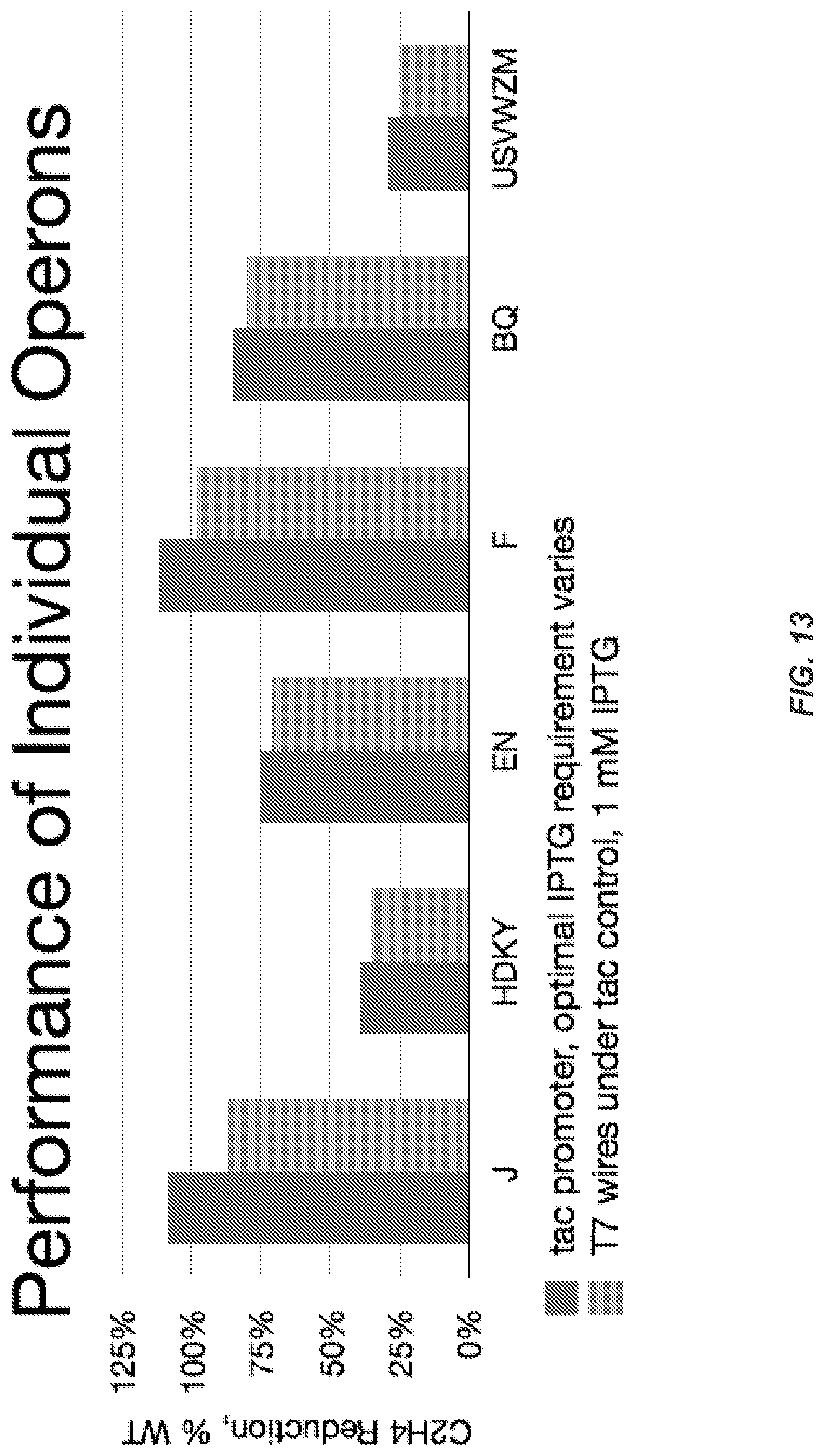
D00014
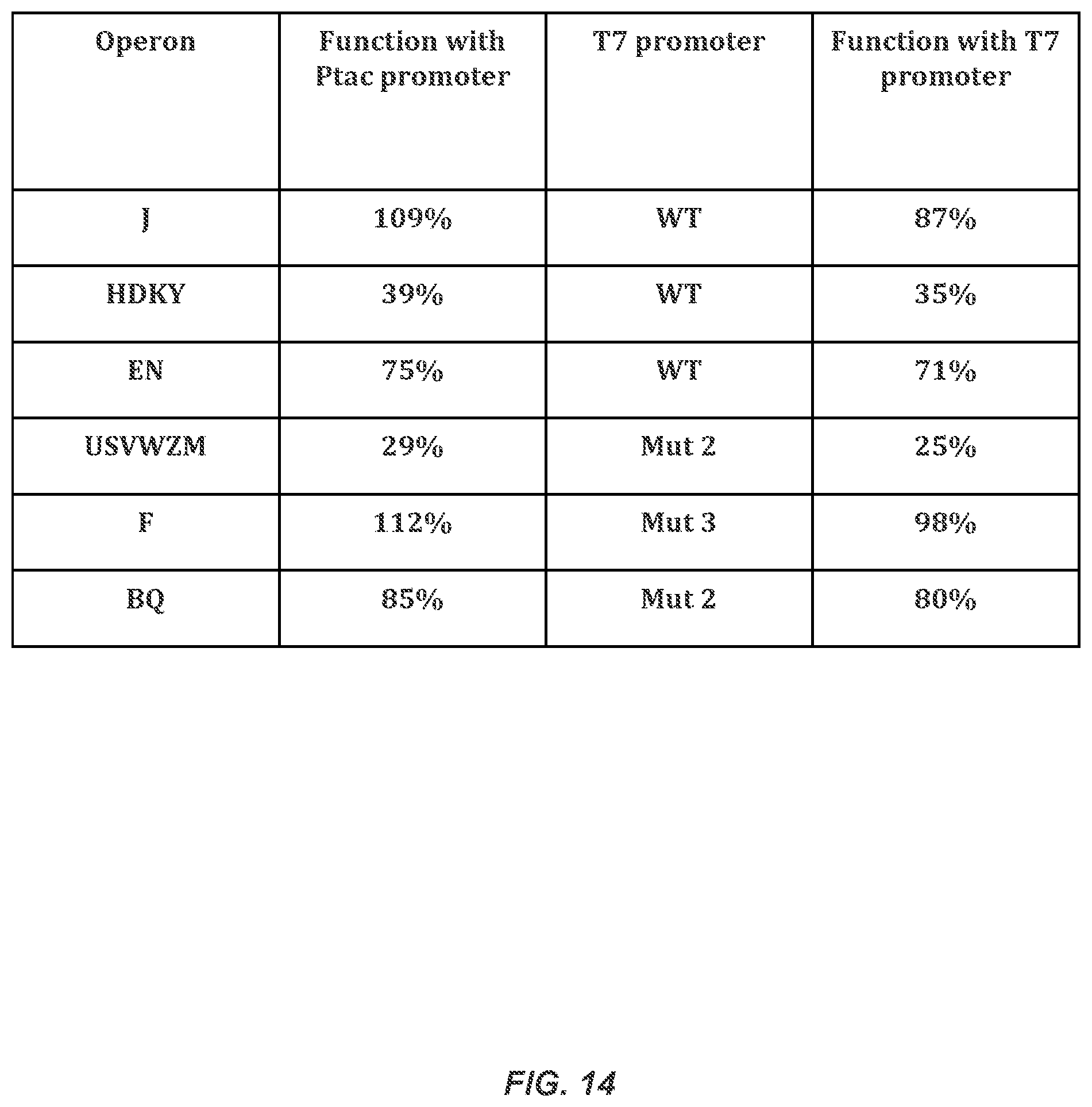
D00015
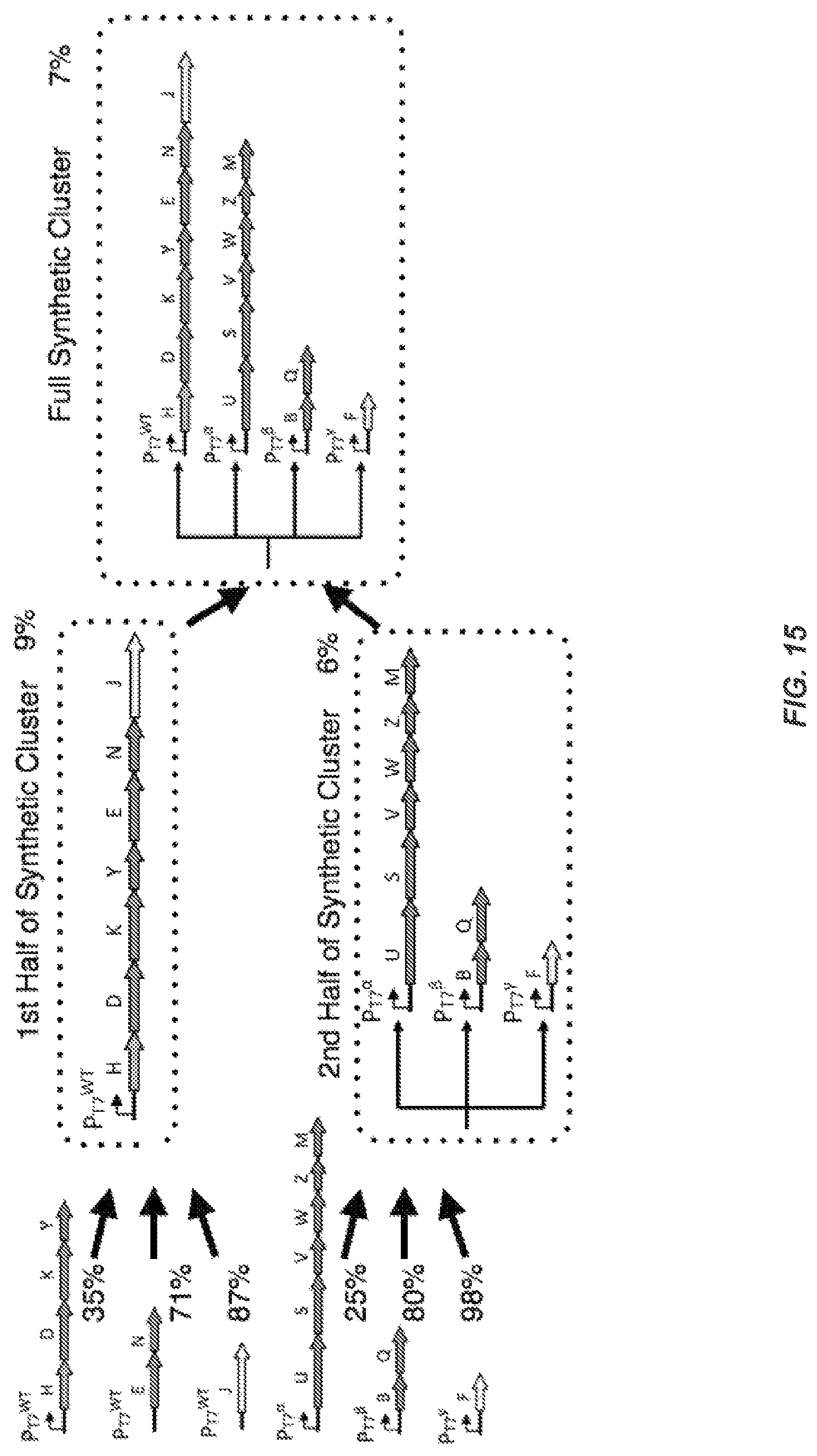
D00016
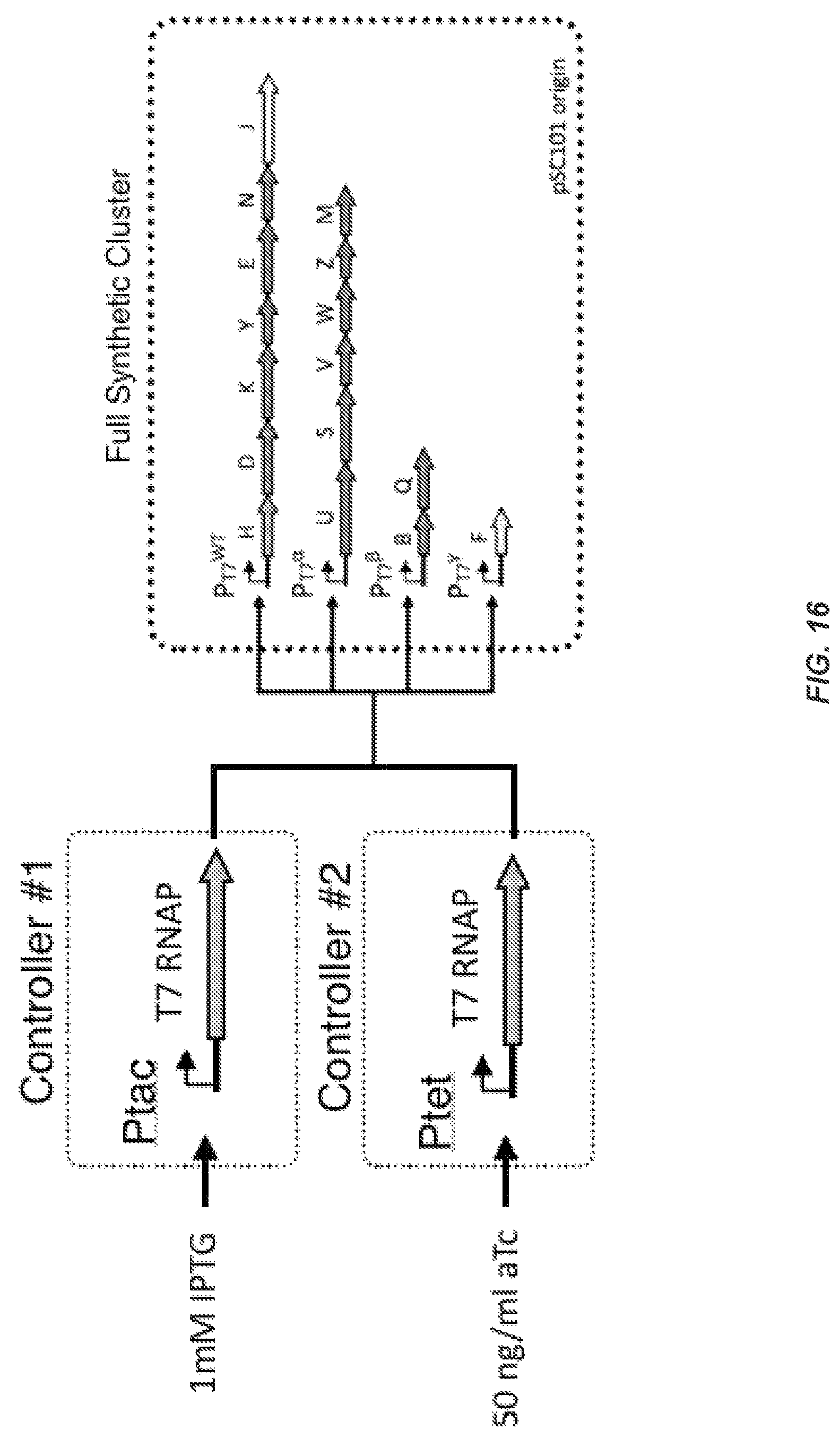
D00017
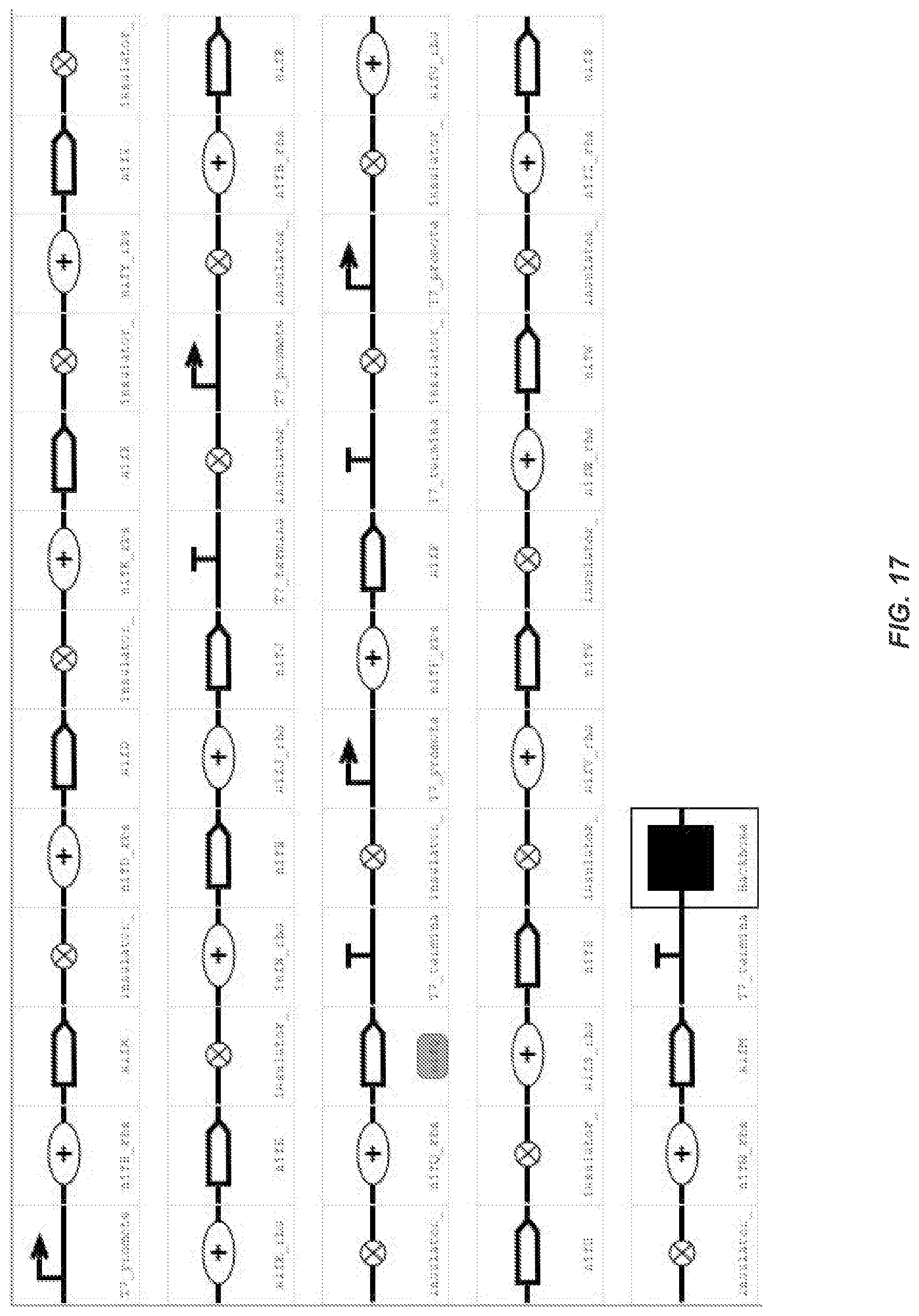
D00018

D00019
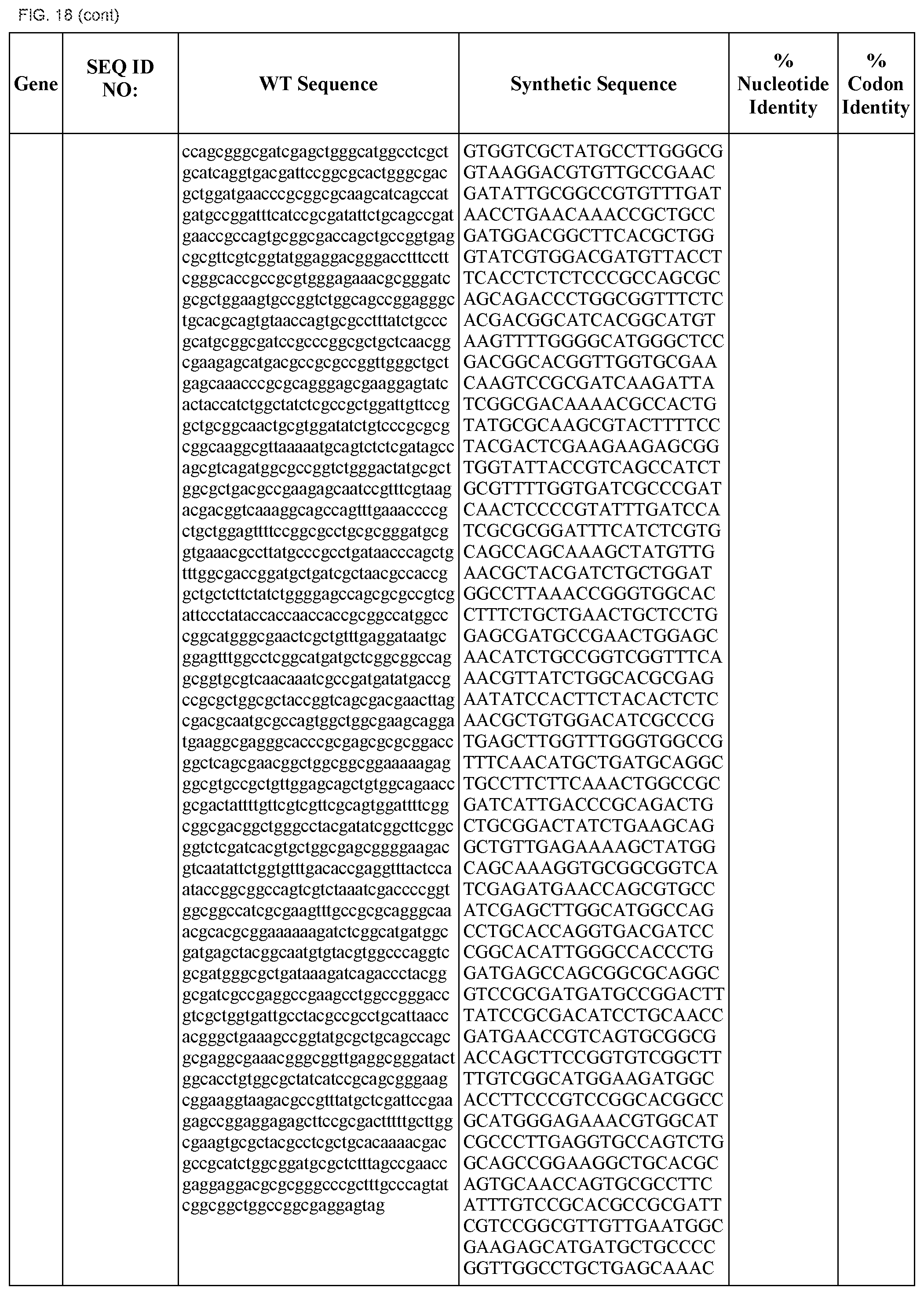
D00020
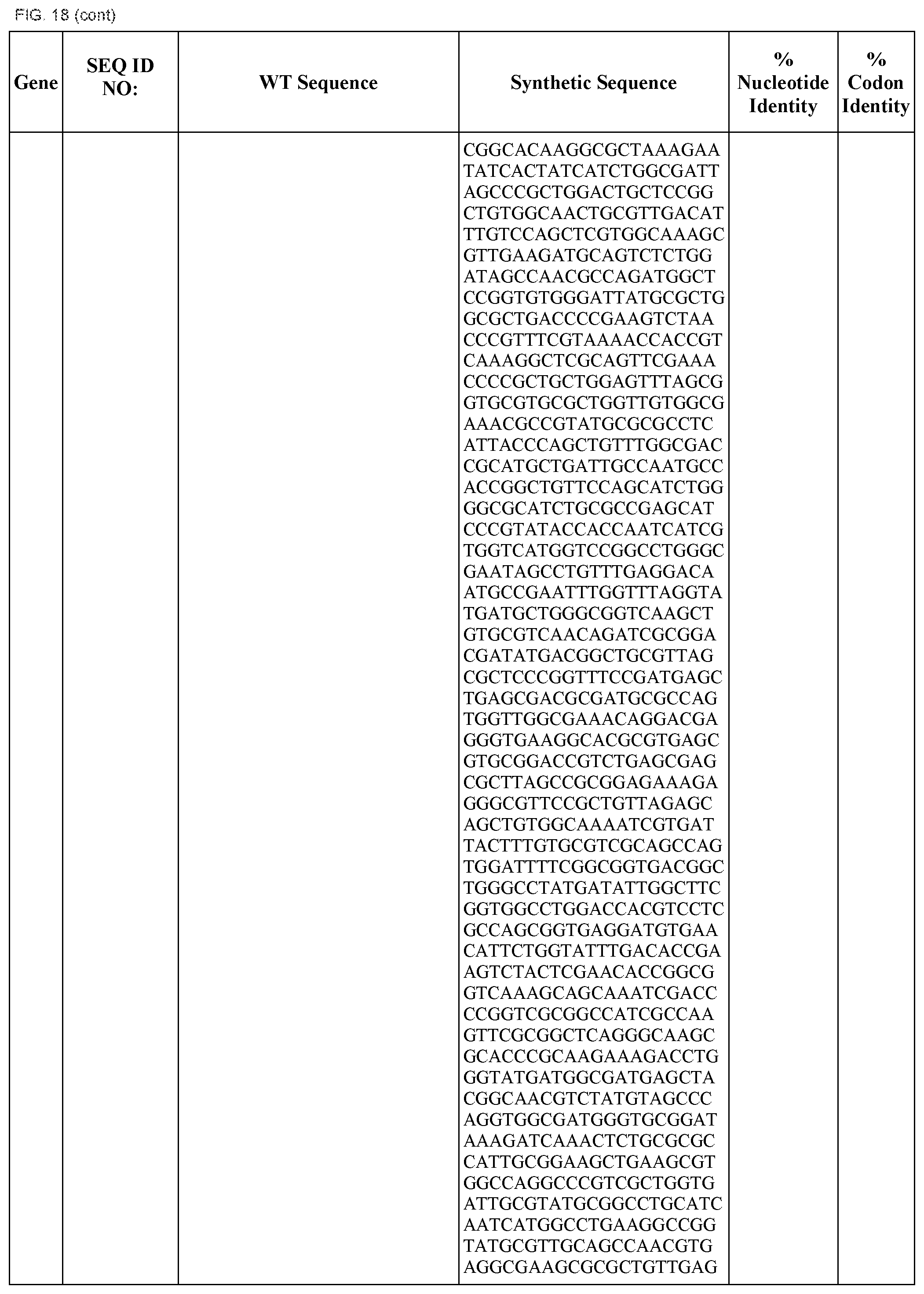
D00021
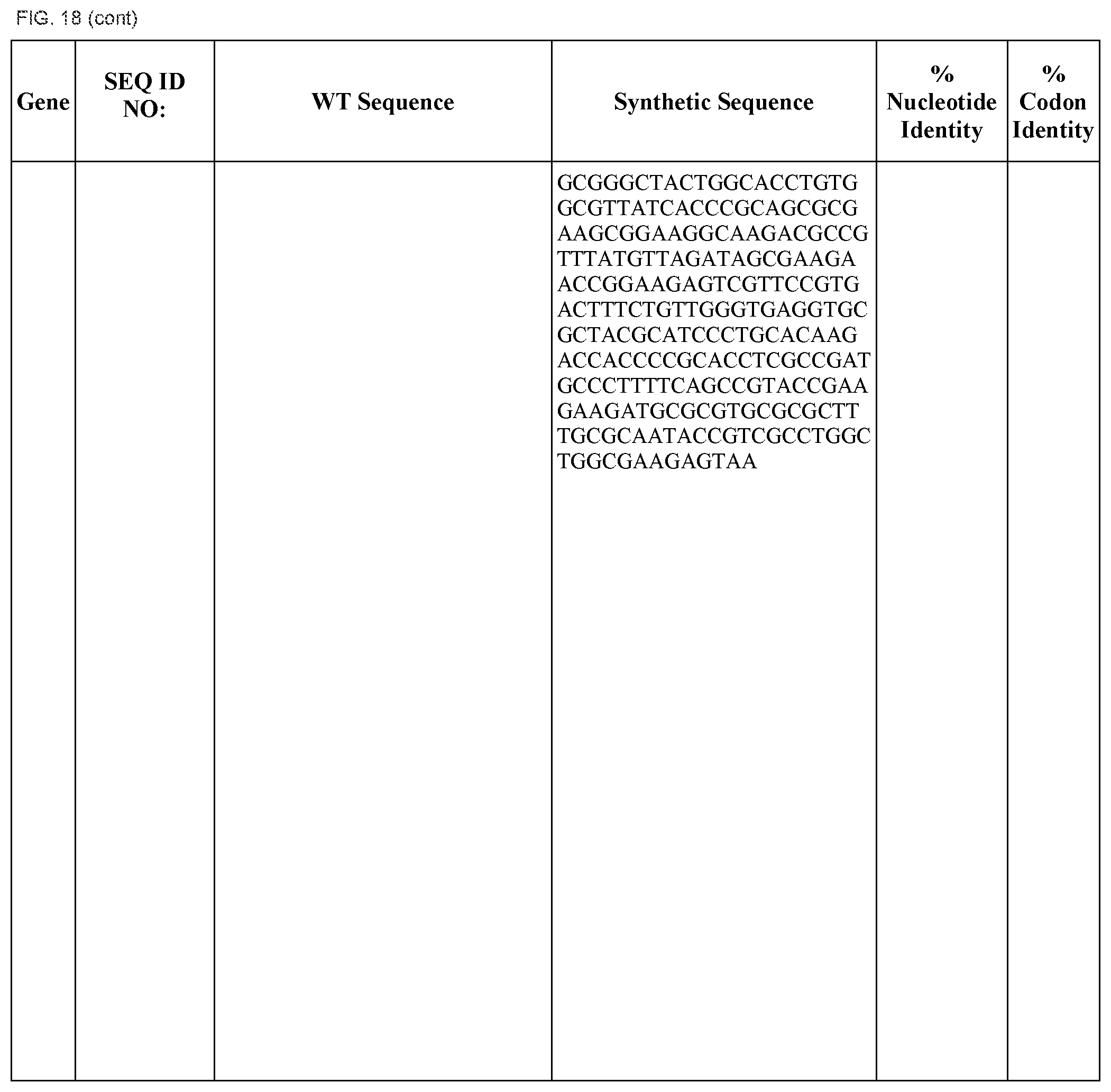
D00022
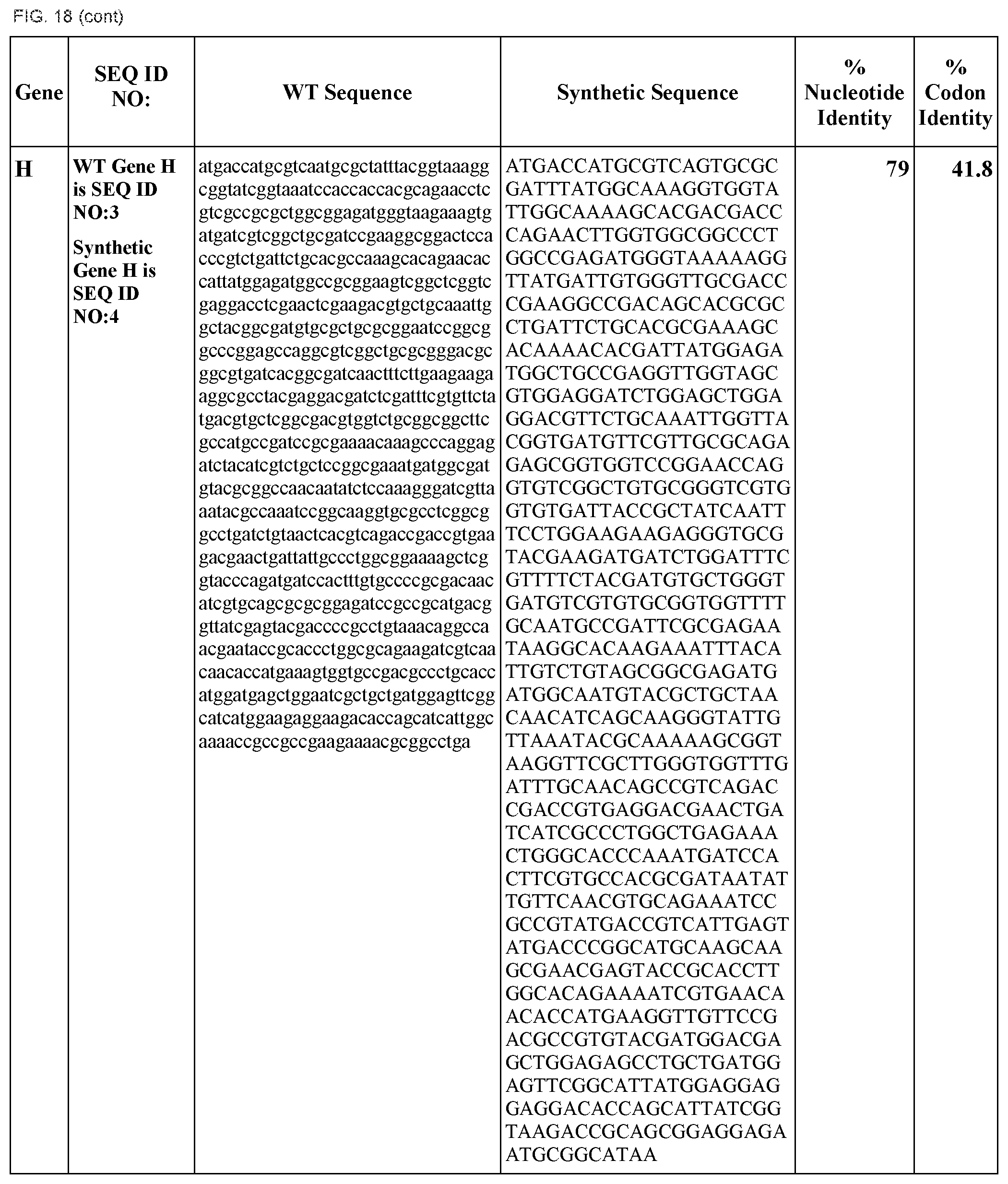
D00023

D00024

D00025
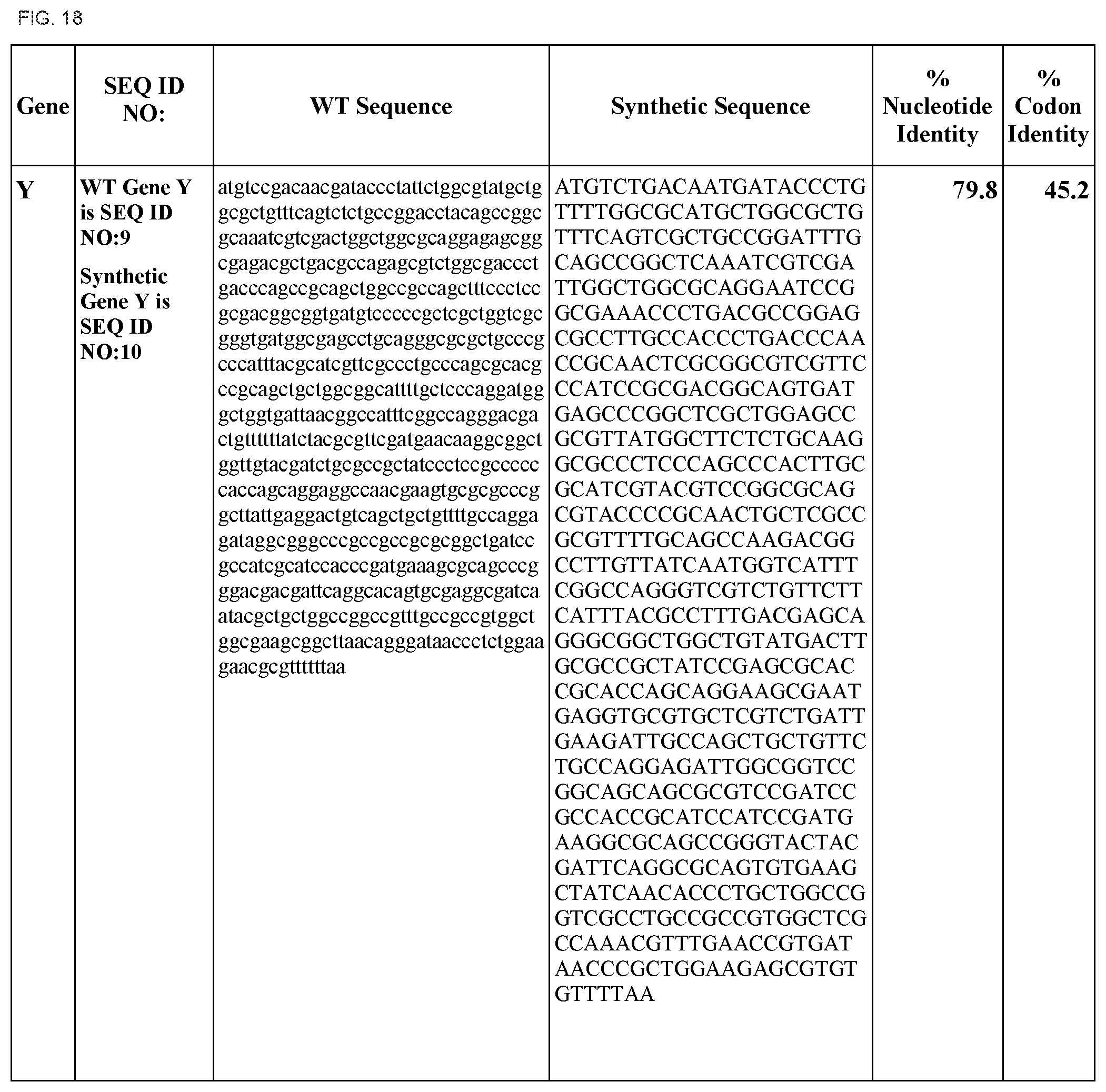
D00026

D00027
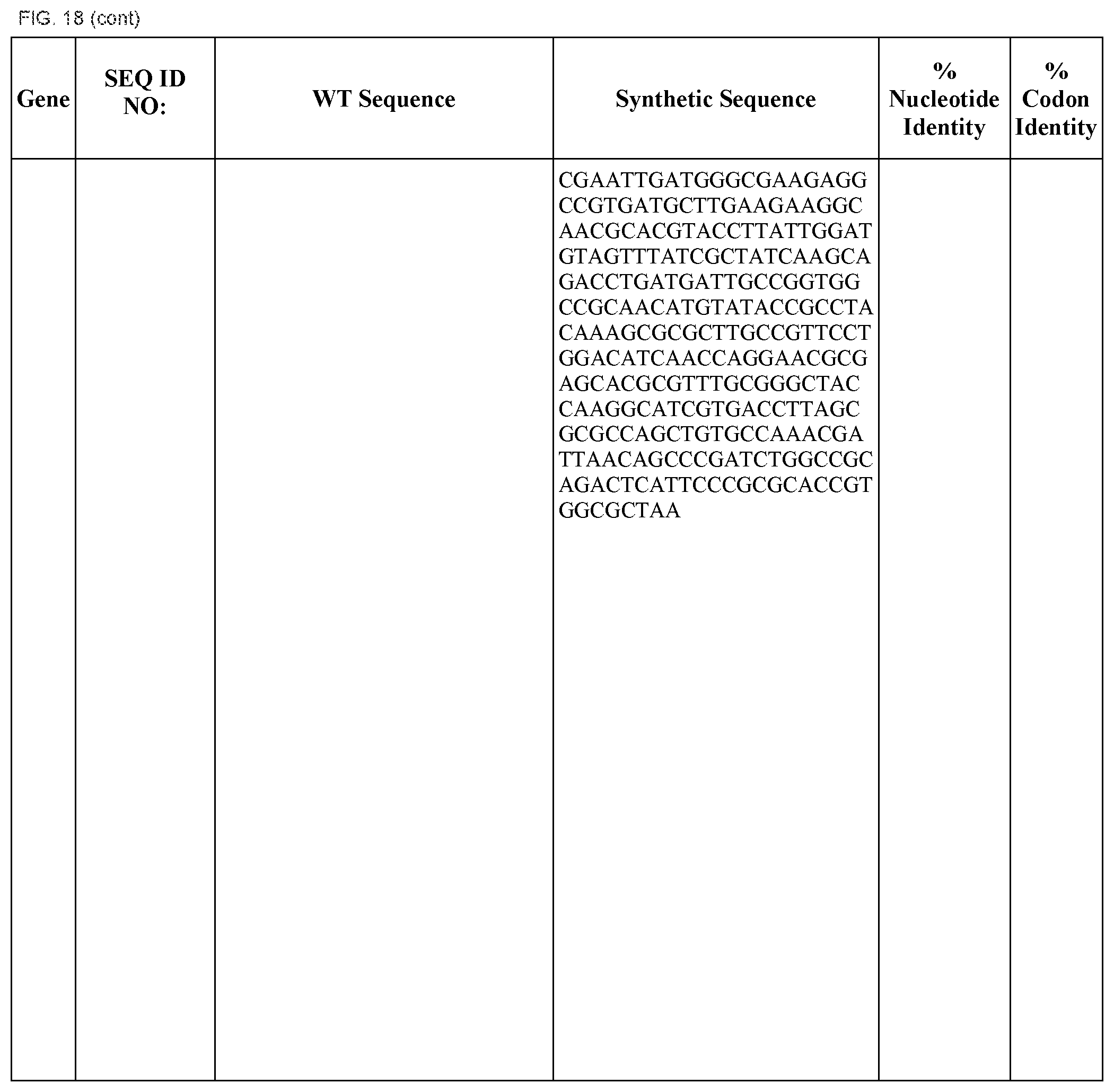
D00028

D00029
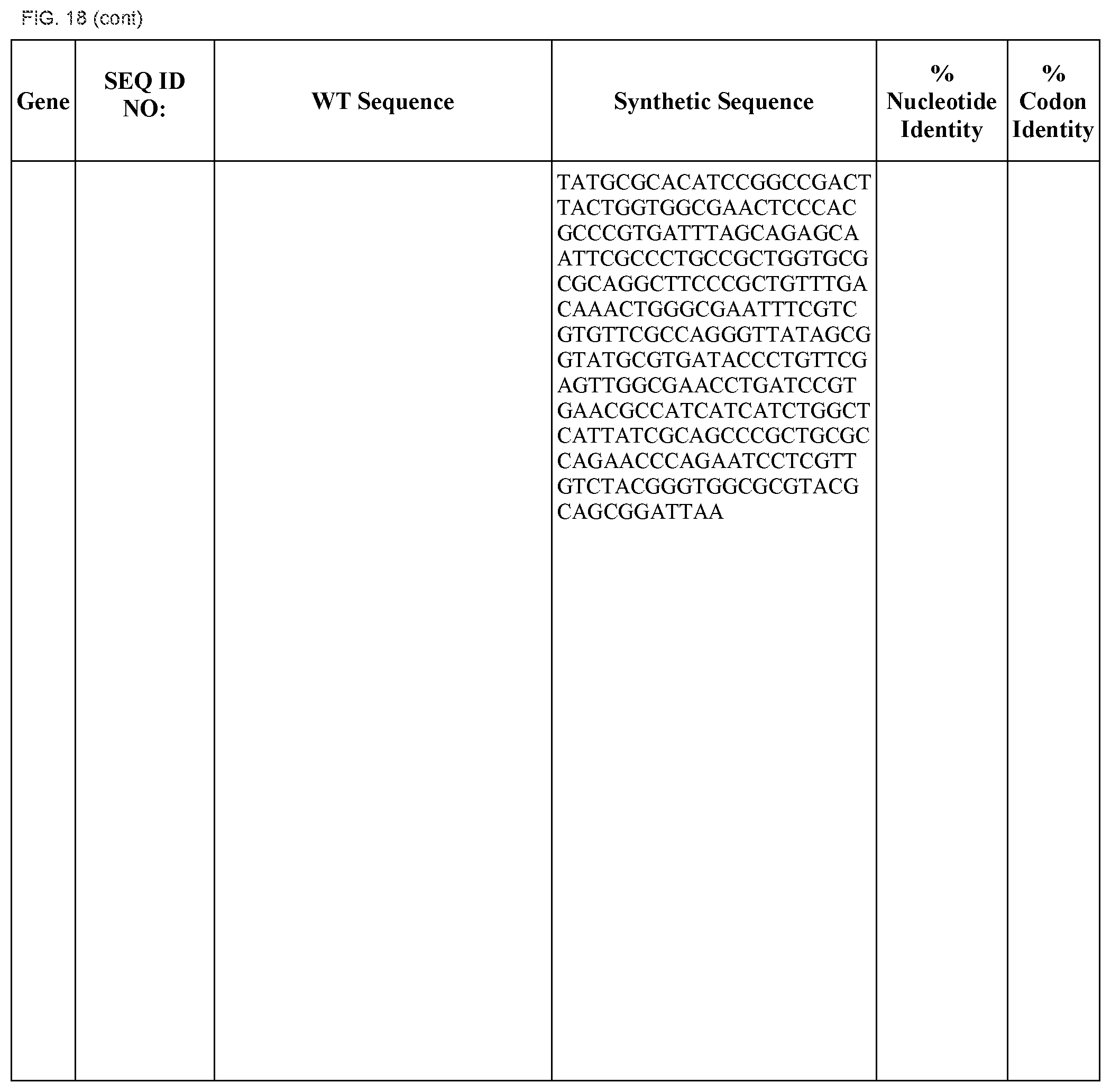
D00030

D00031

D00032
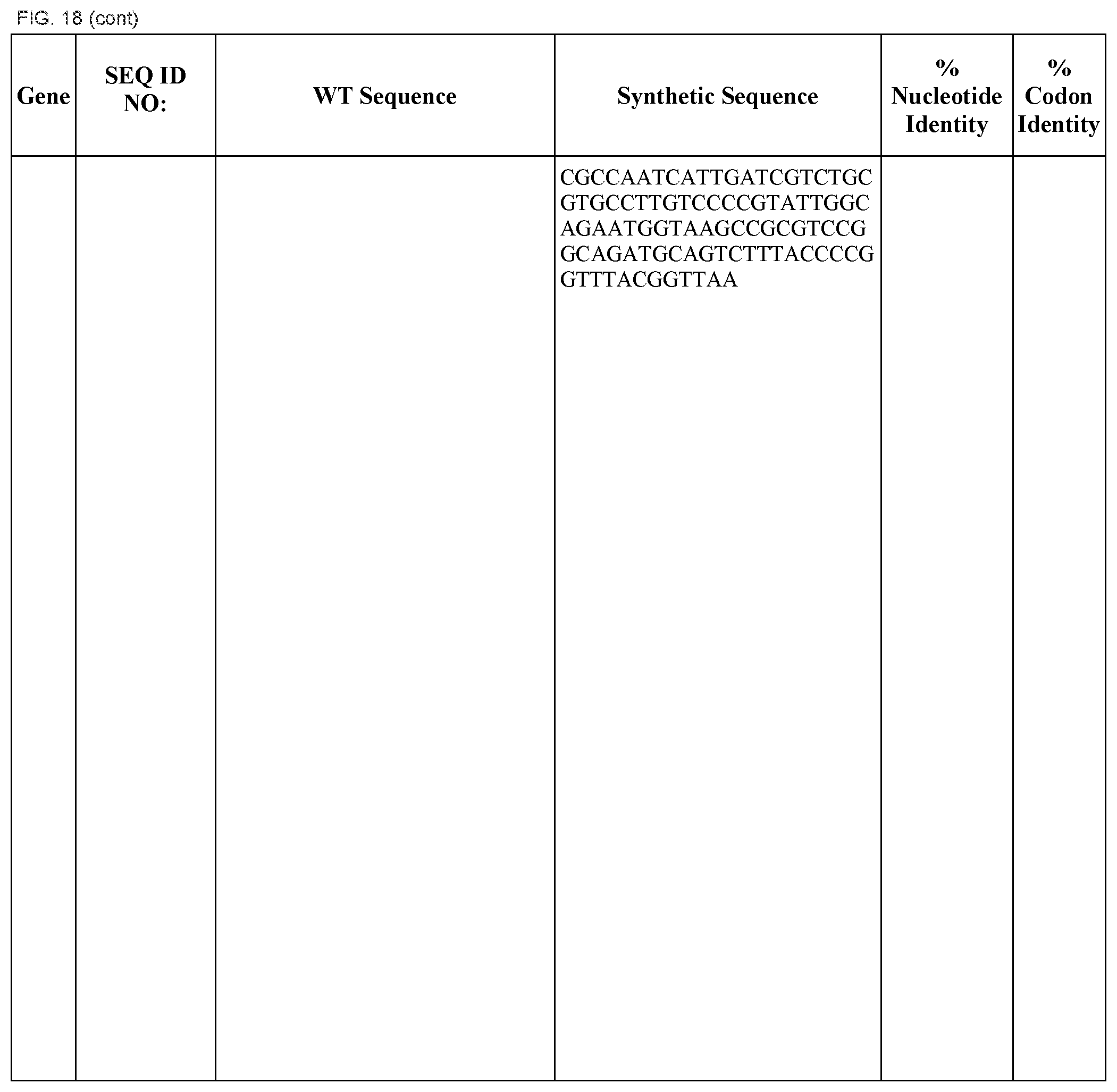
D00033
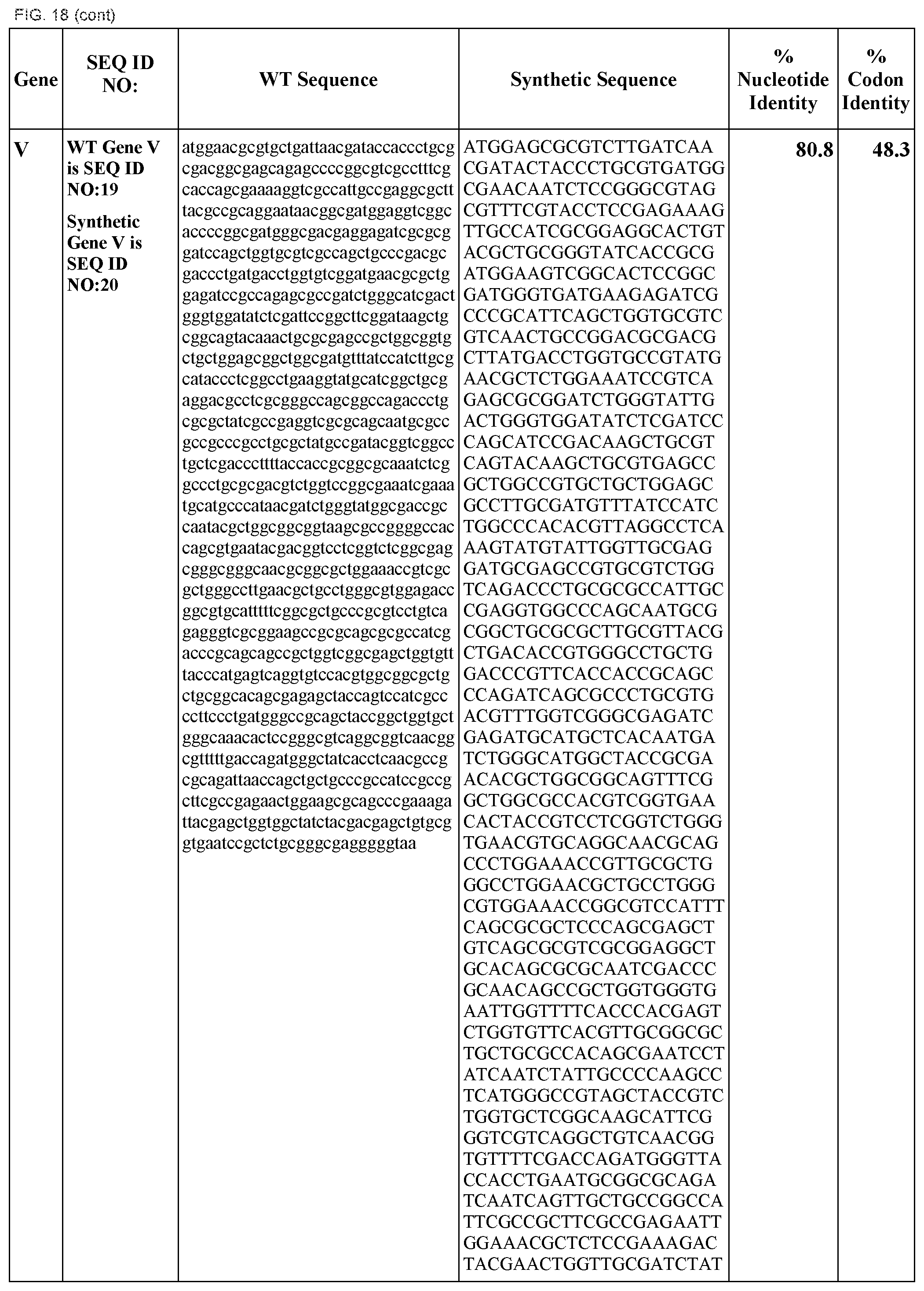
D00034
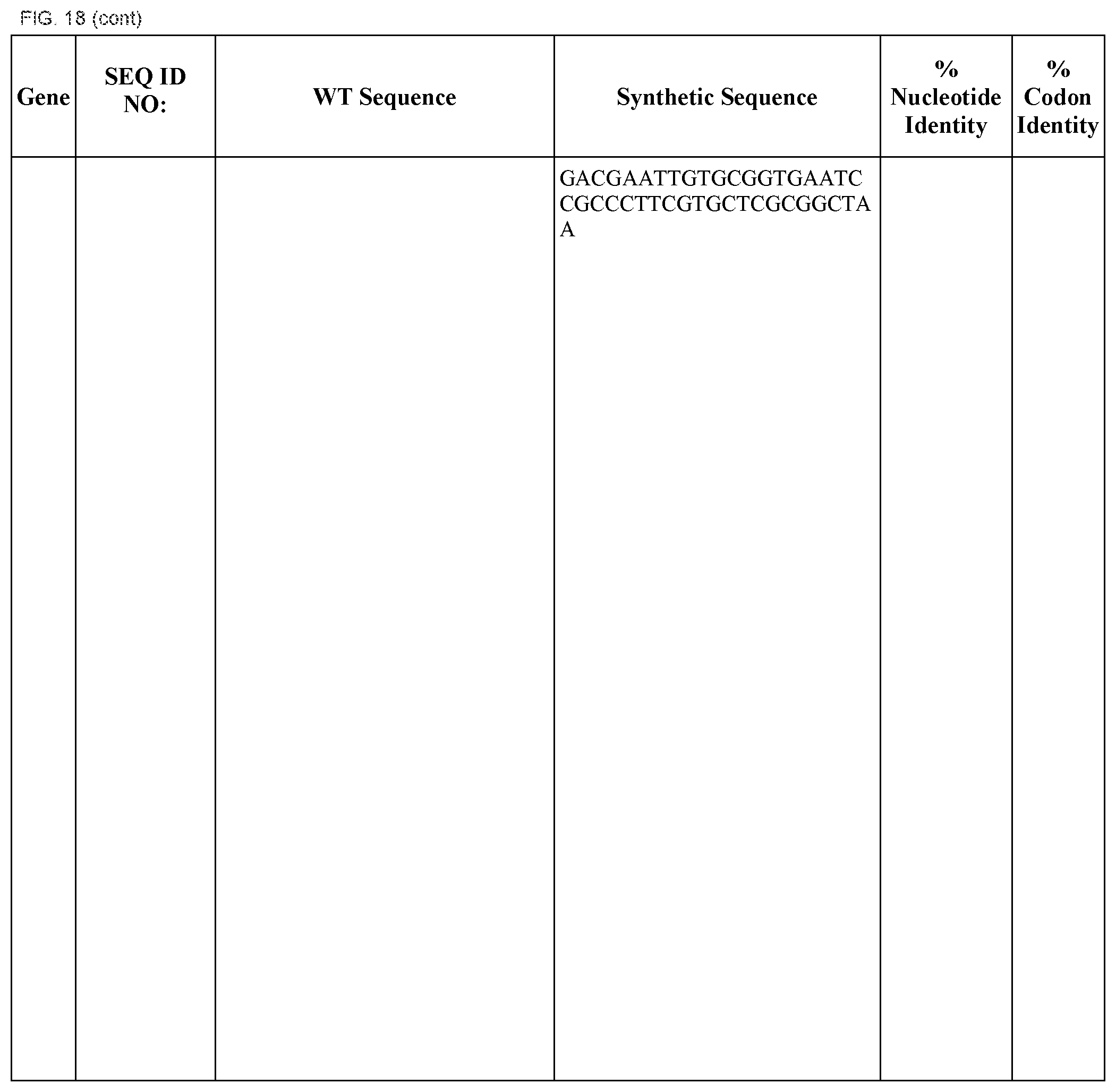
D00035
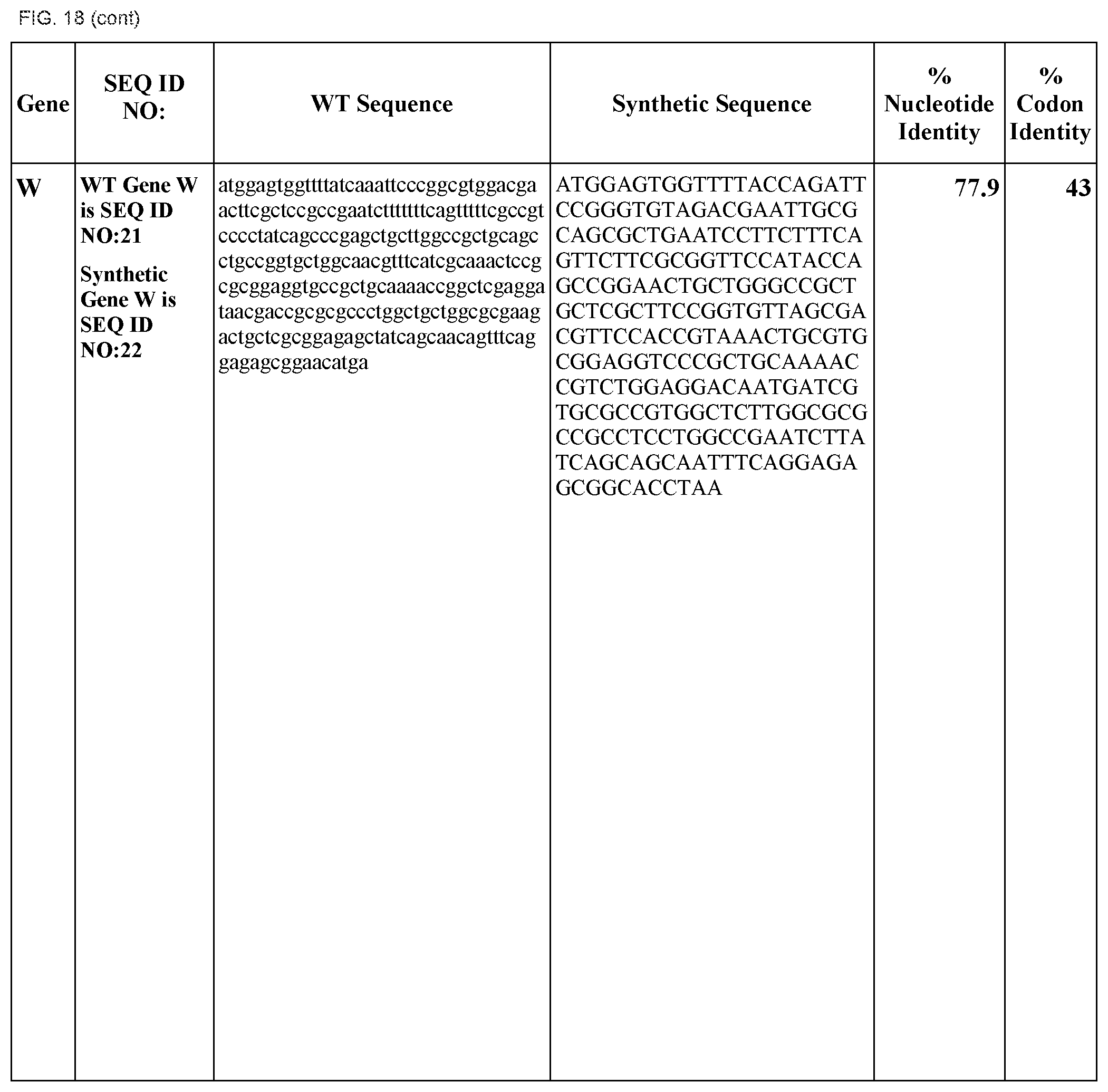
D00036
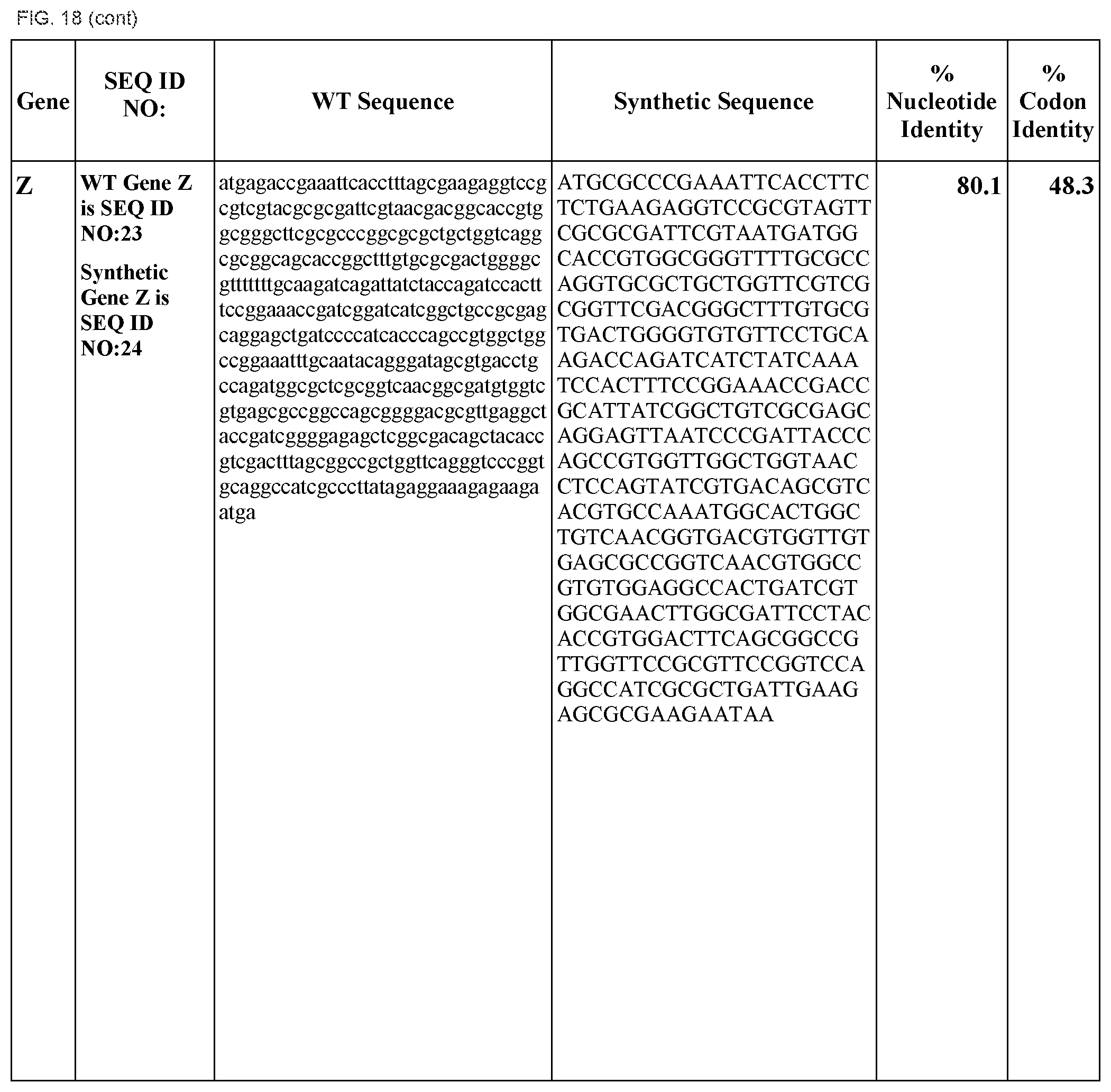
D00037

D00038

D00039
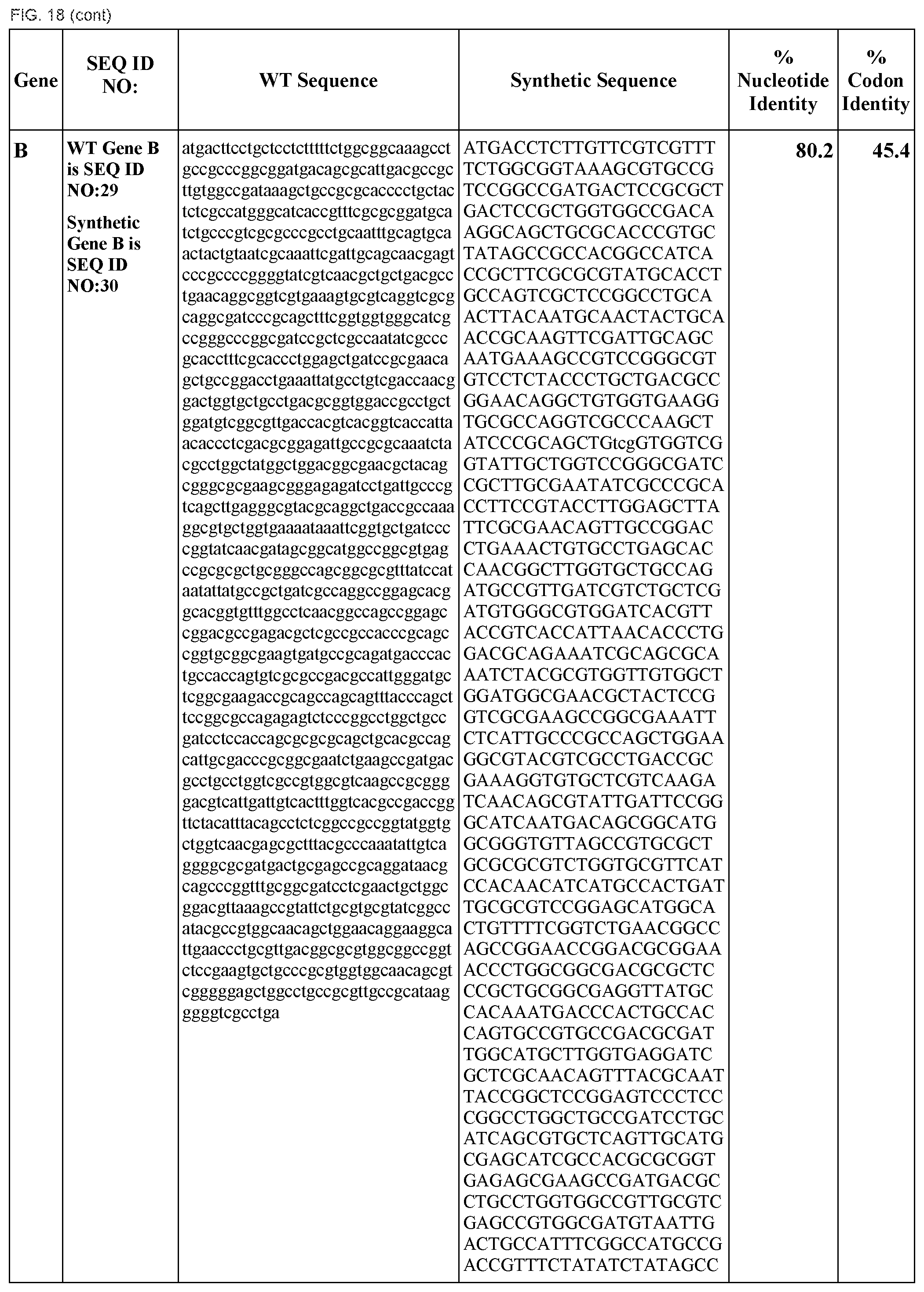
D00040
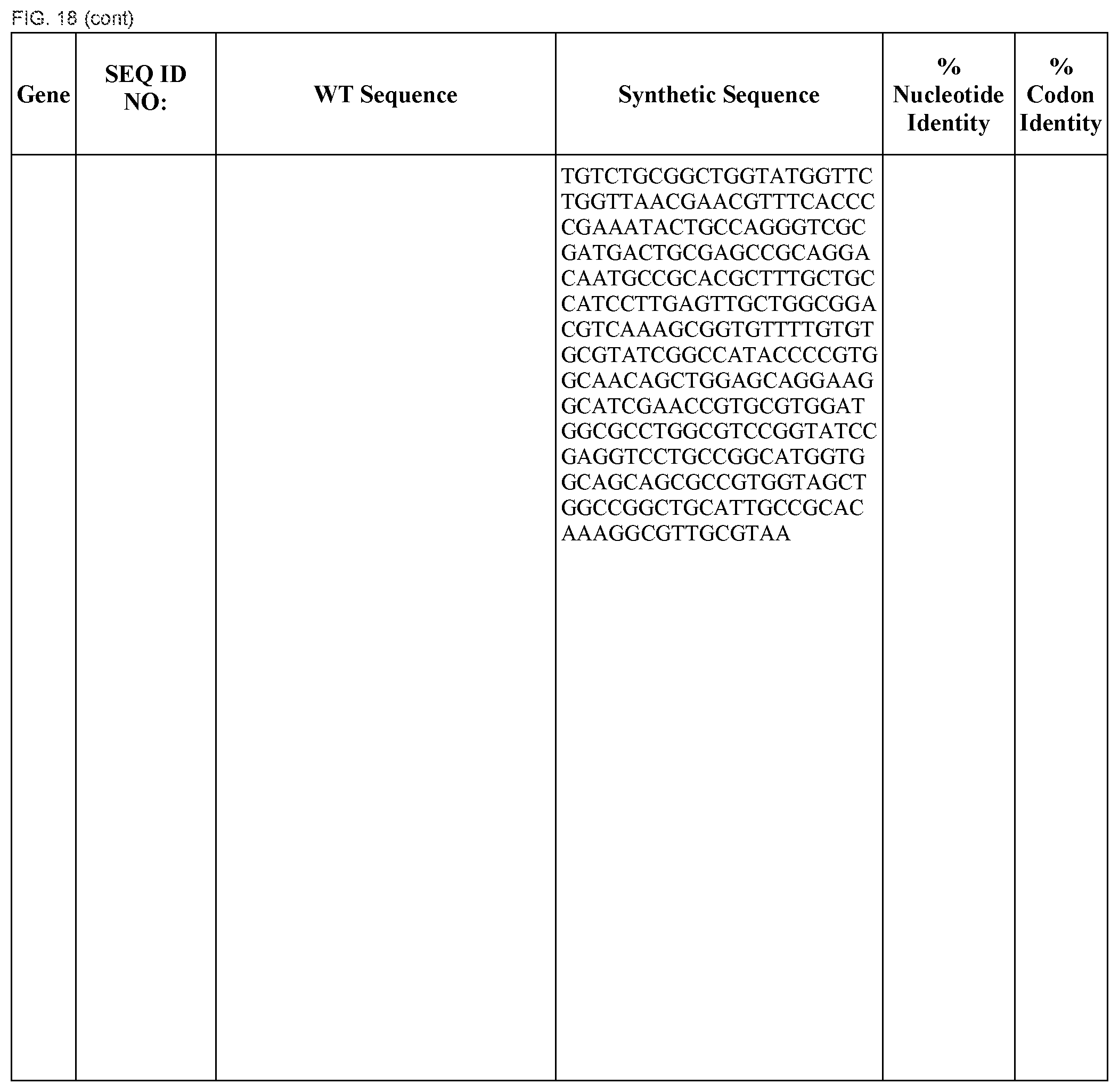
D00041

D00042

D00043

D00044
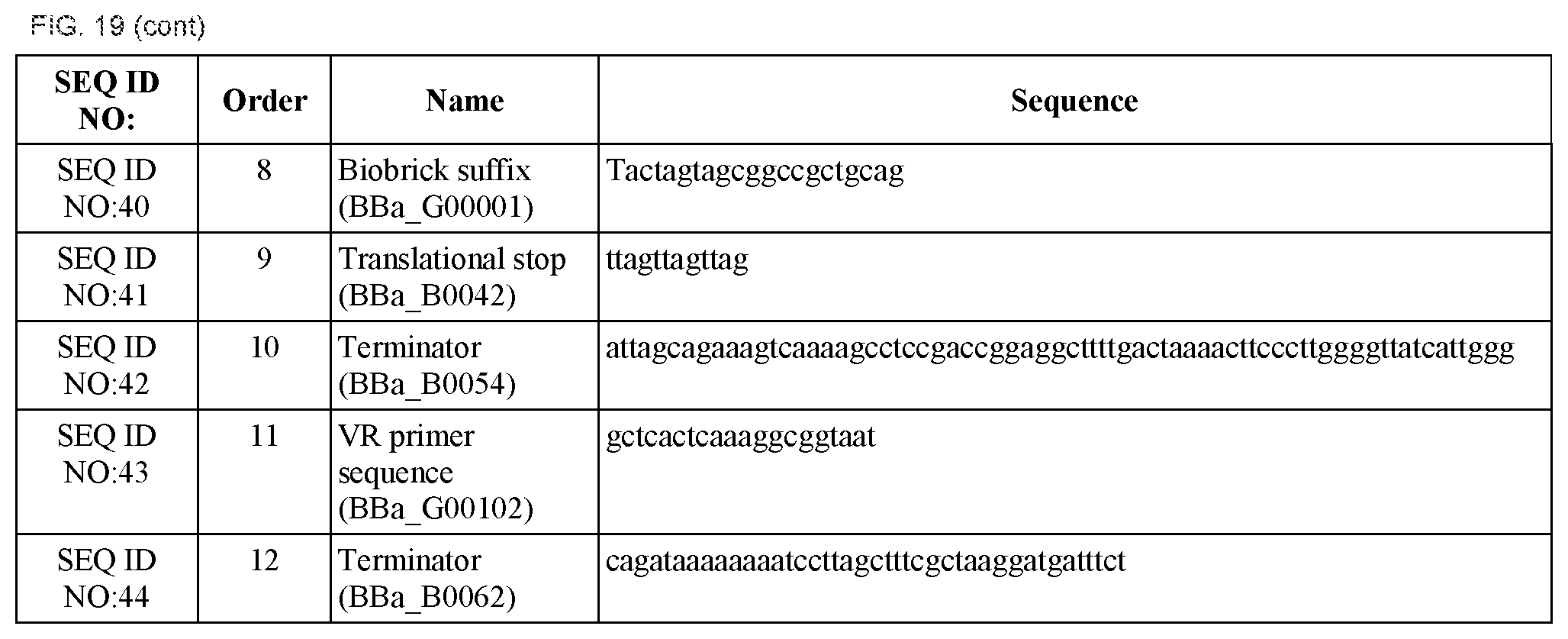
D00045

D00046

D00047
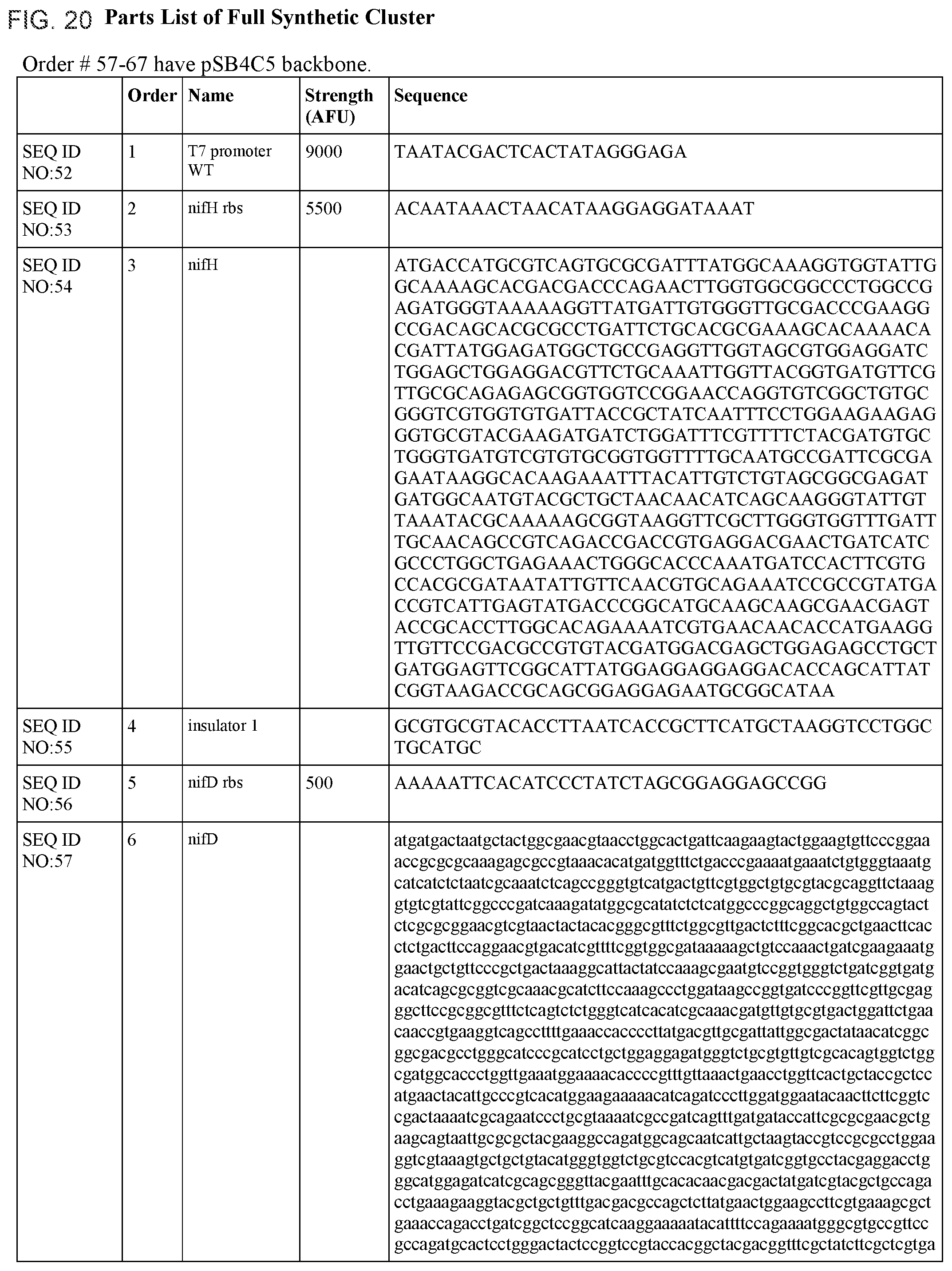
D00048
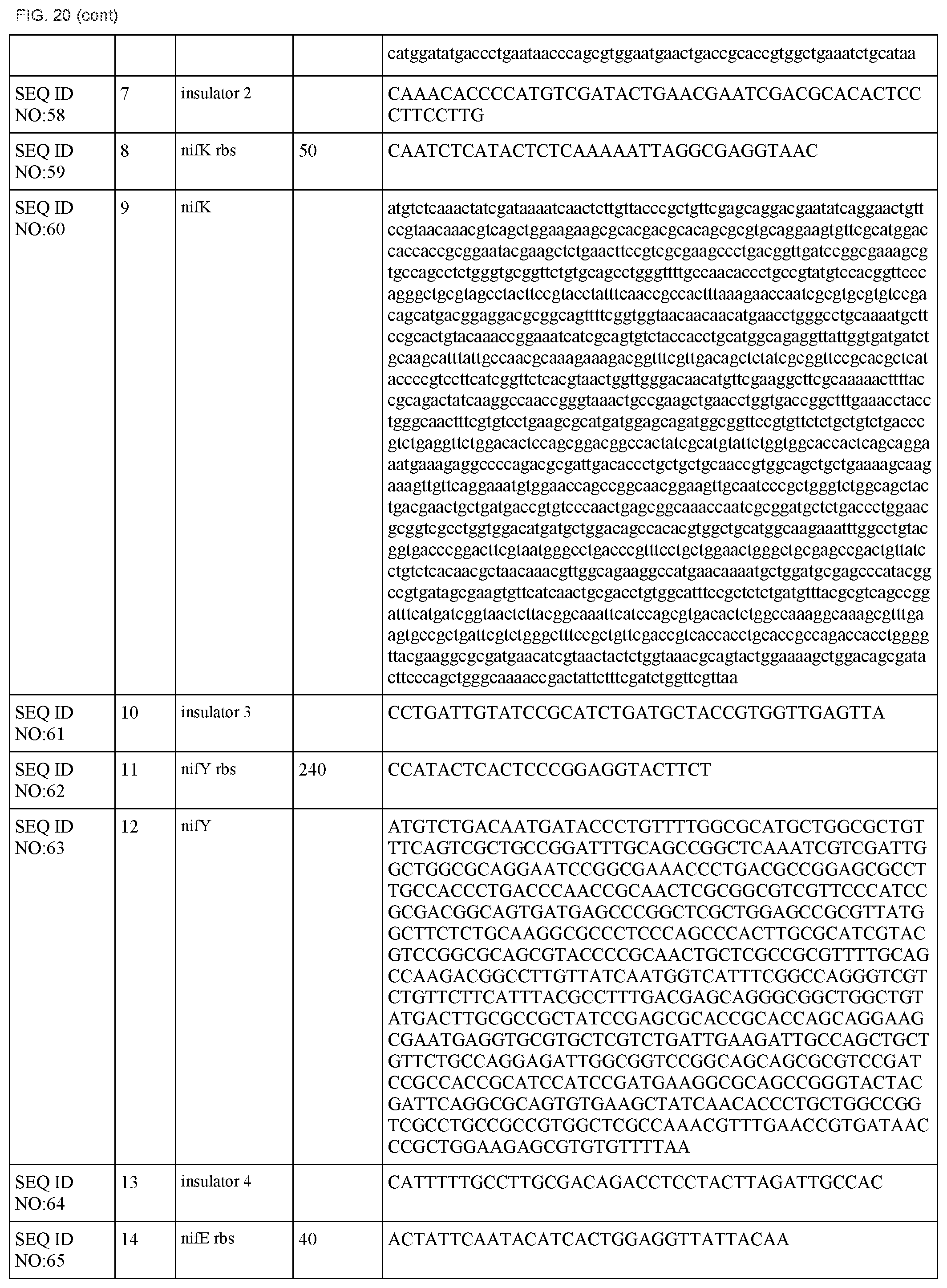
D00049
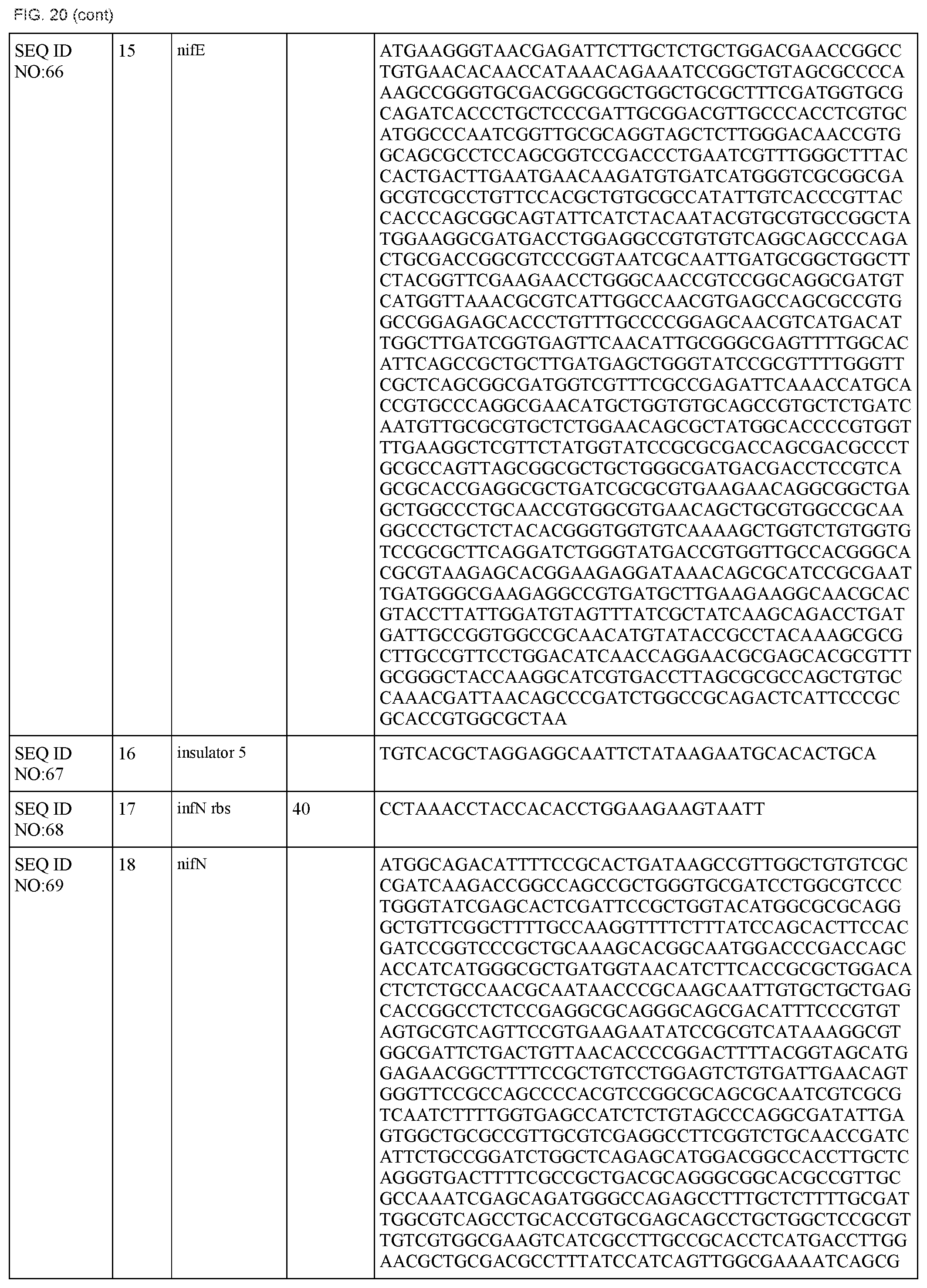
D00050
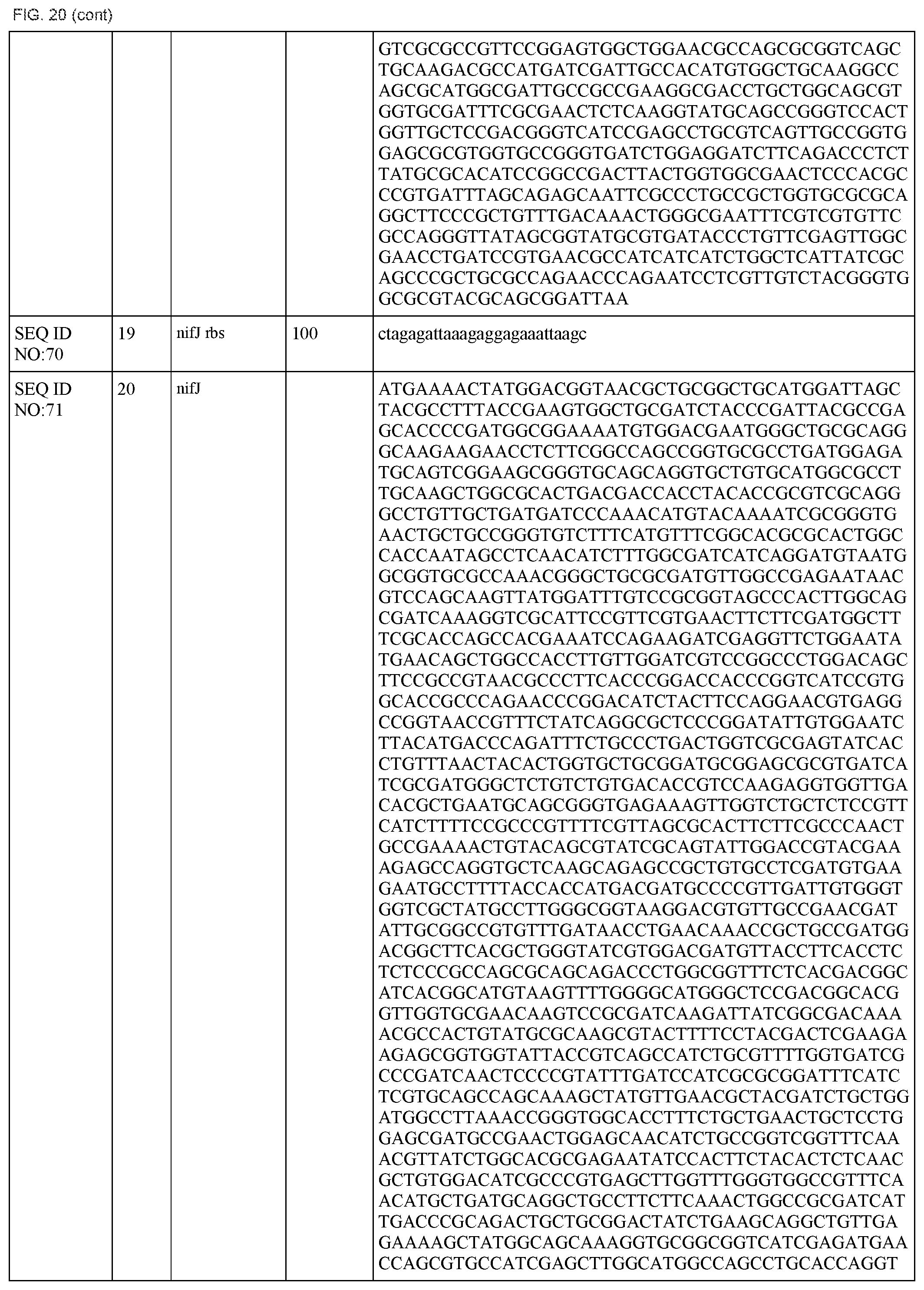
D00051
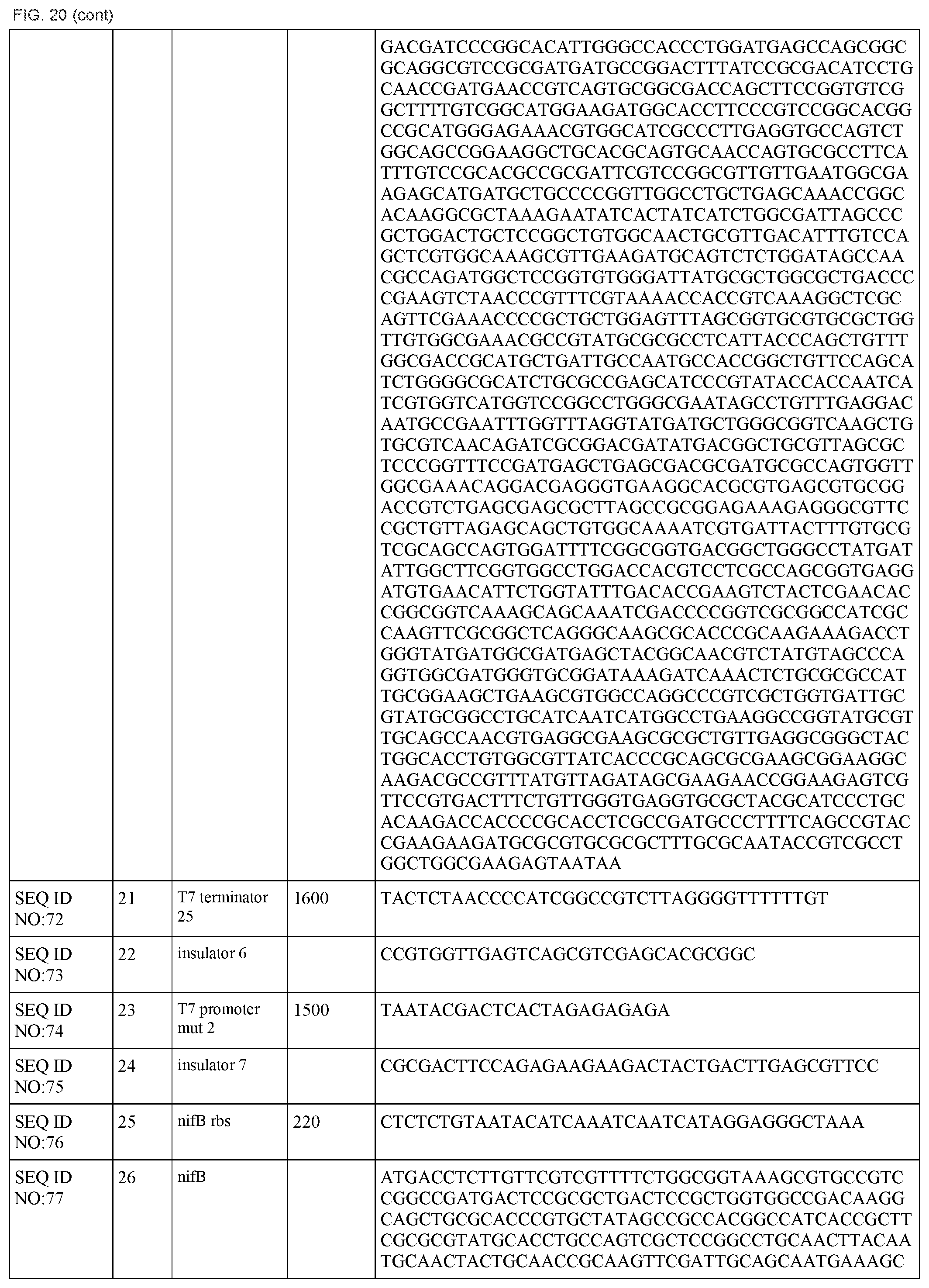
D00052

D00053
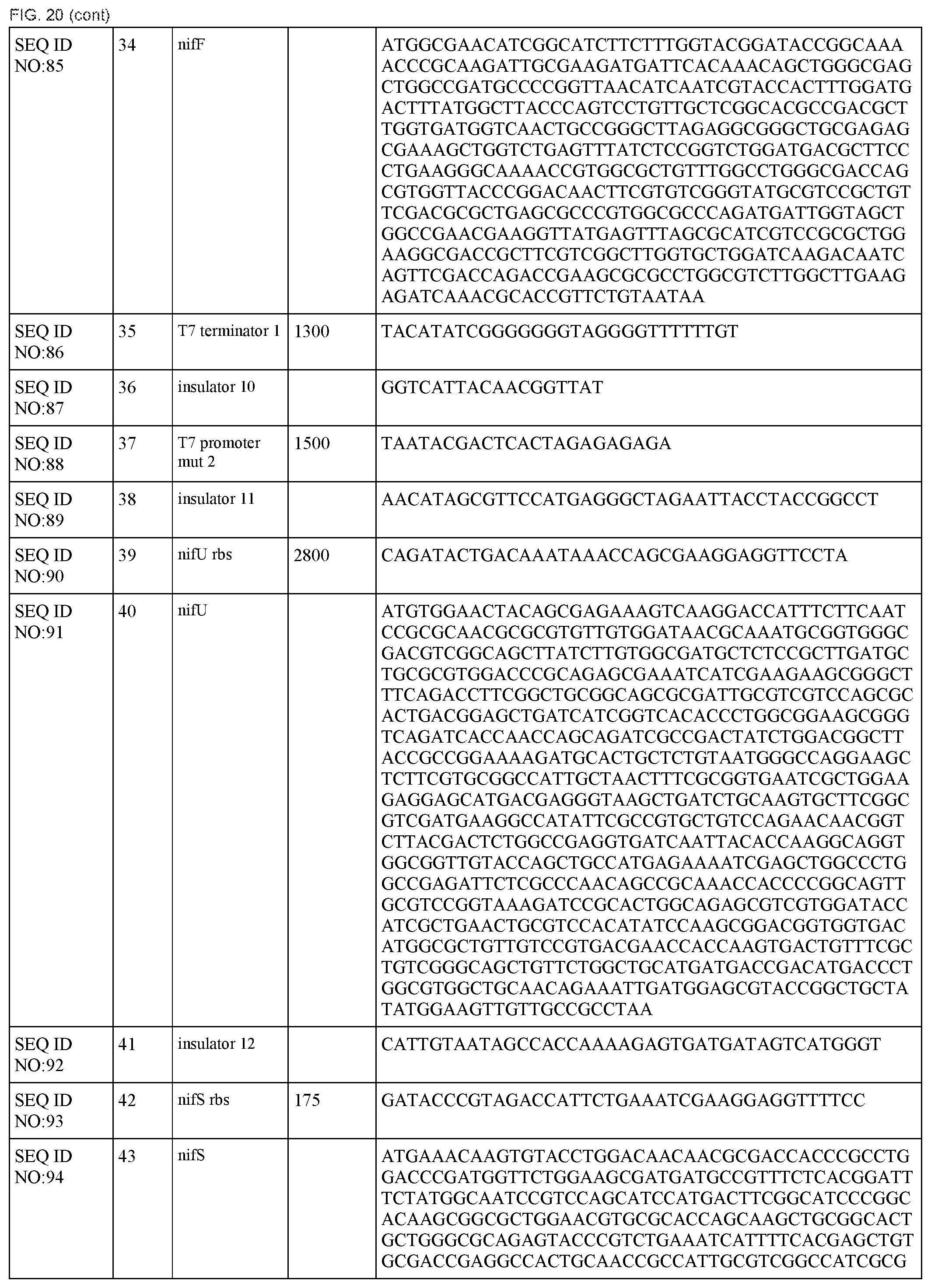
D00054

D00055
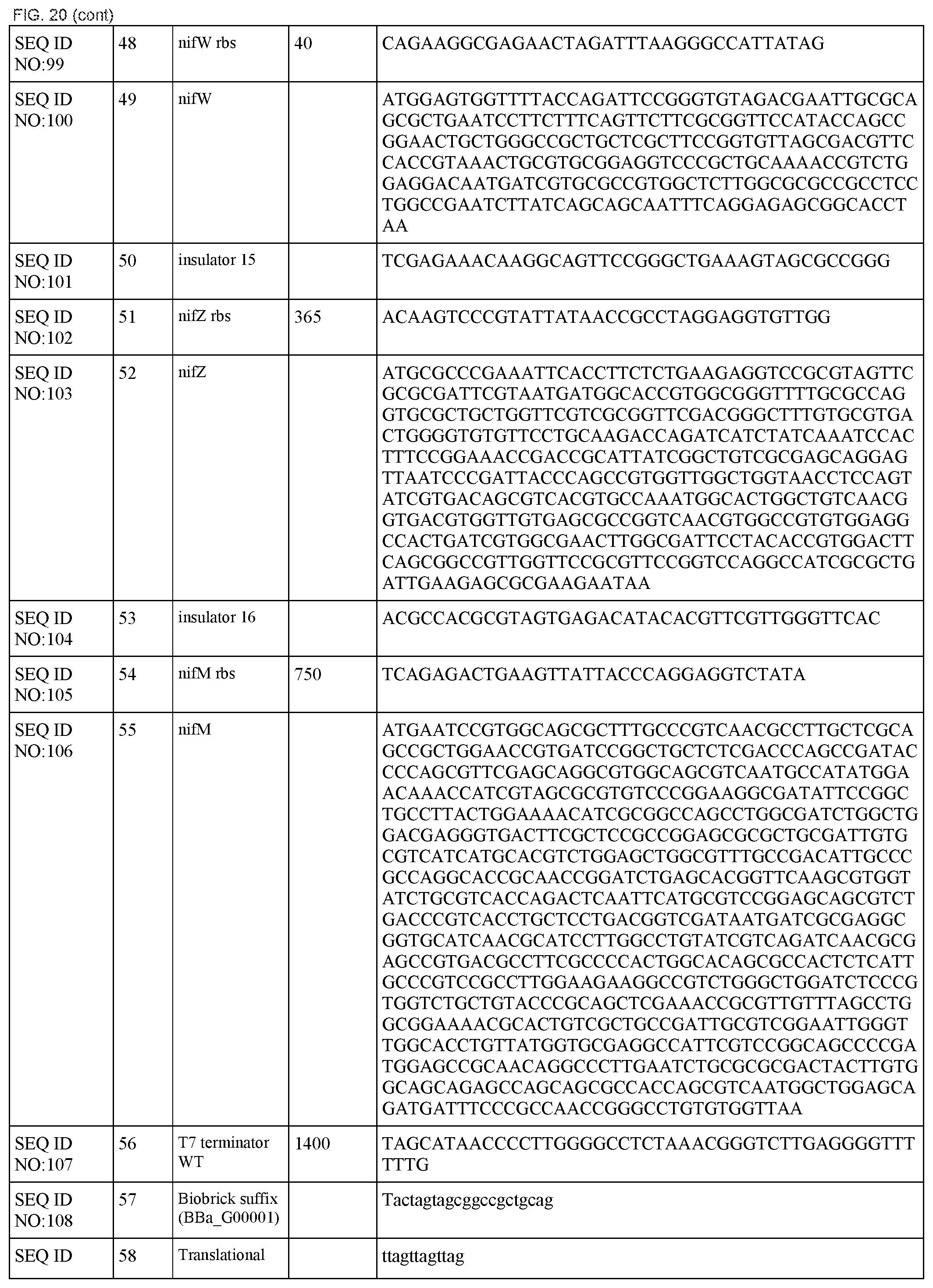
D00056

D00057

D00058
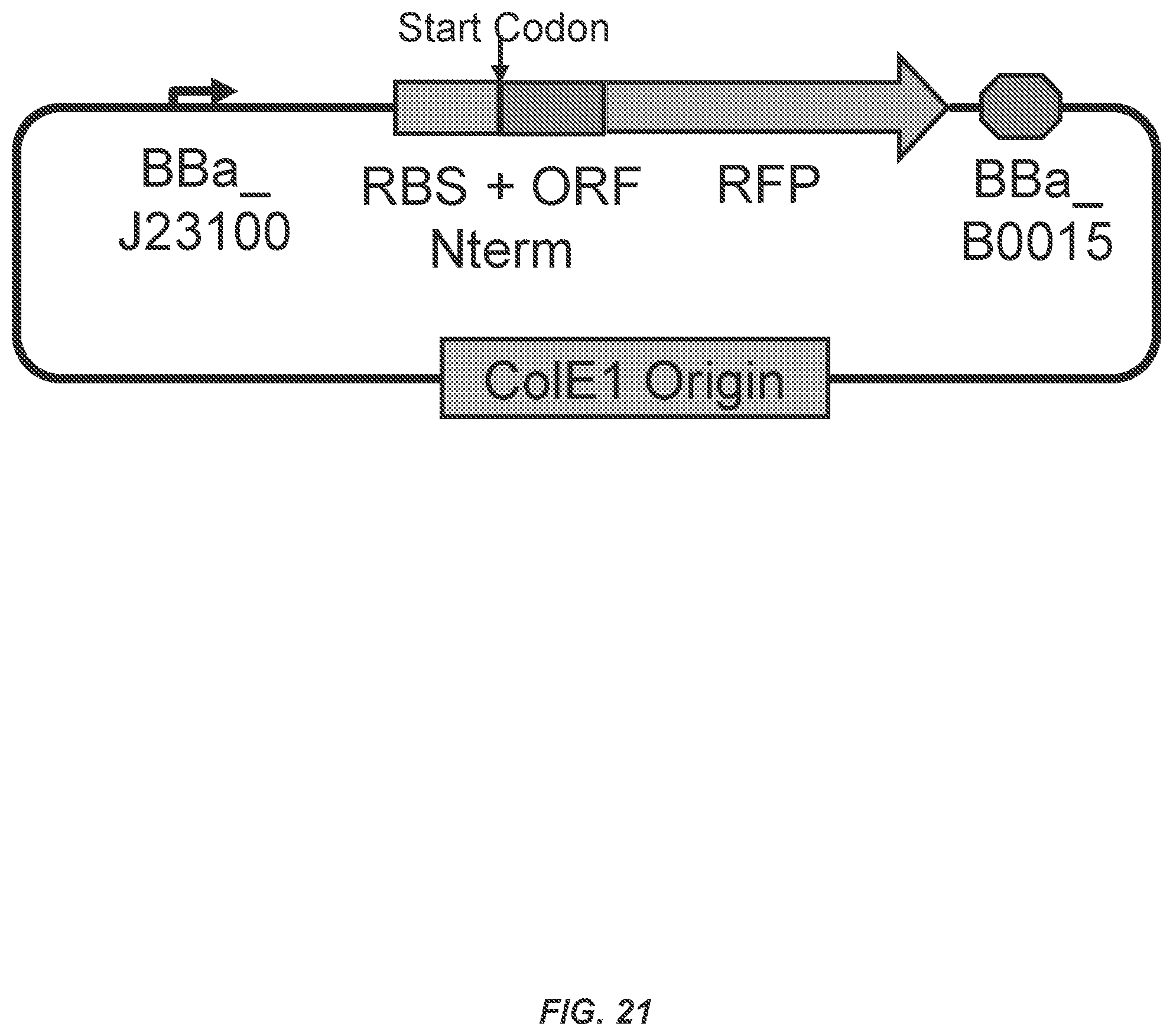
D00059
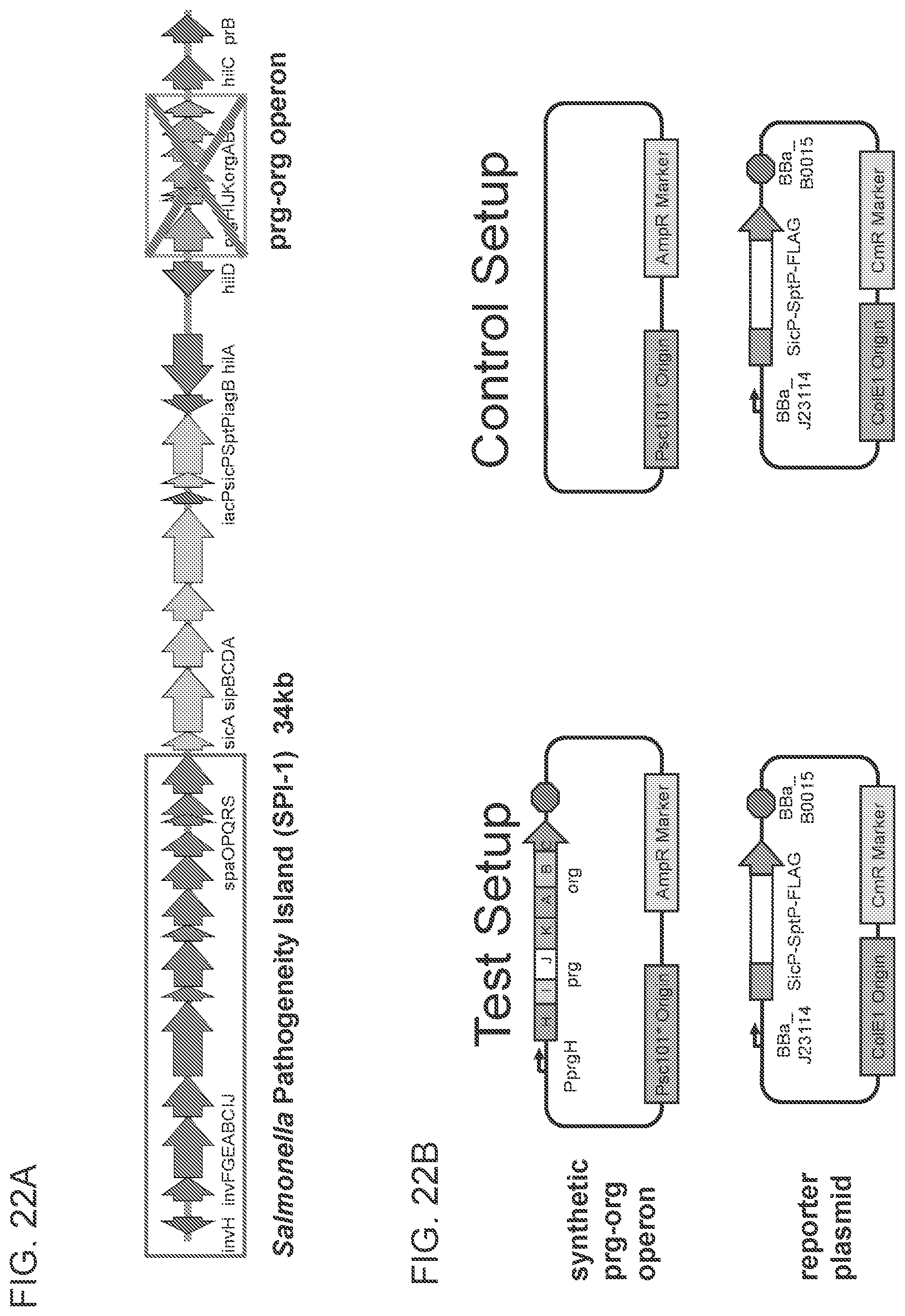
D00060
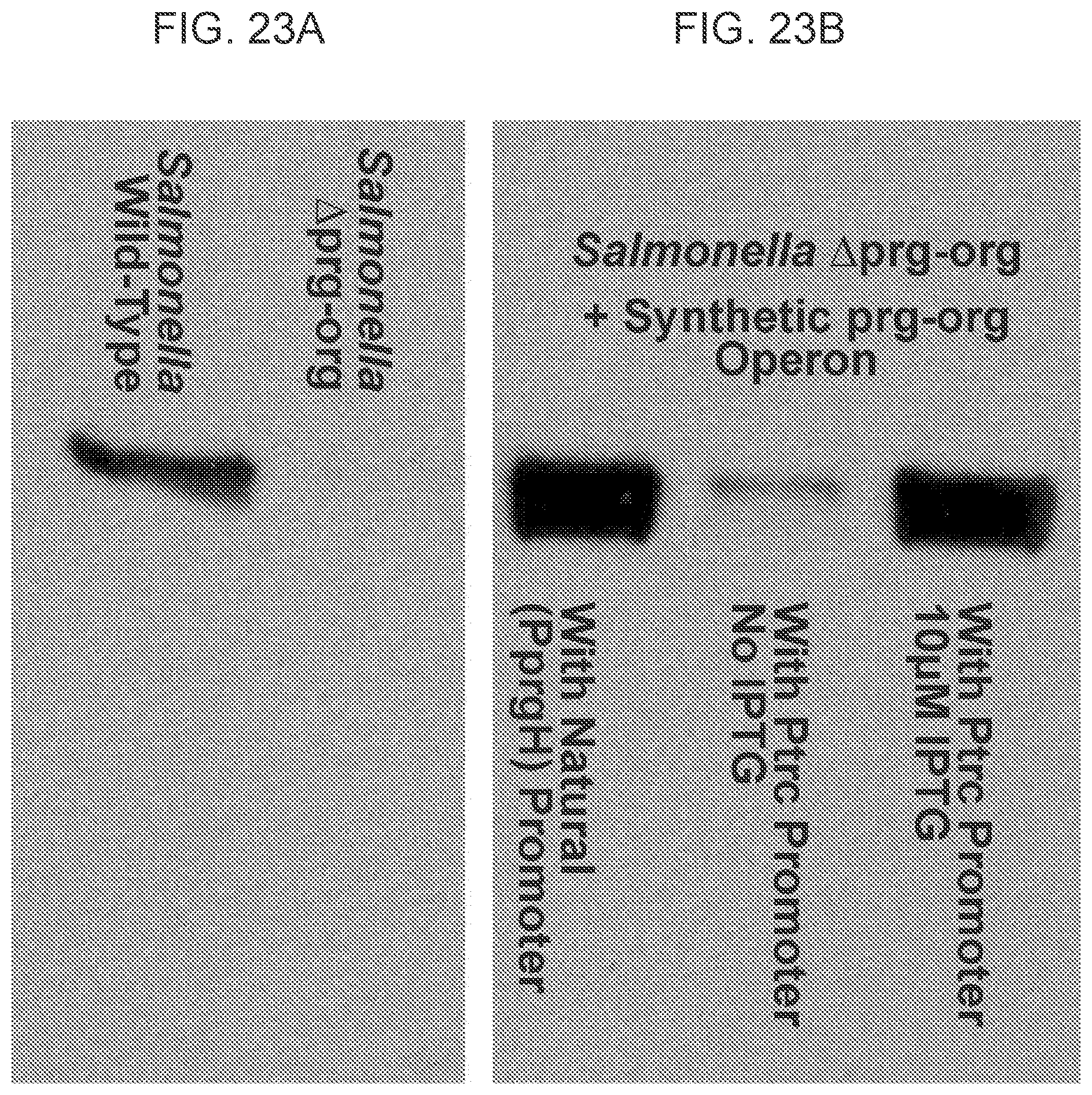
D00061
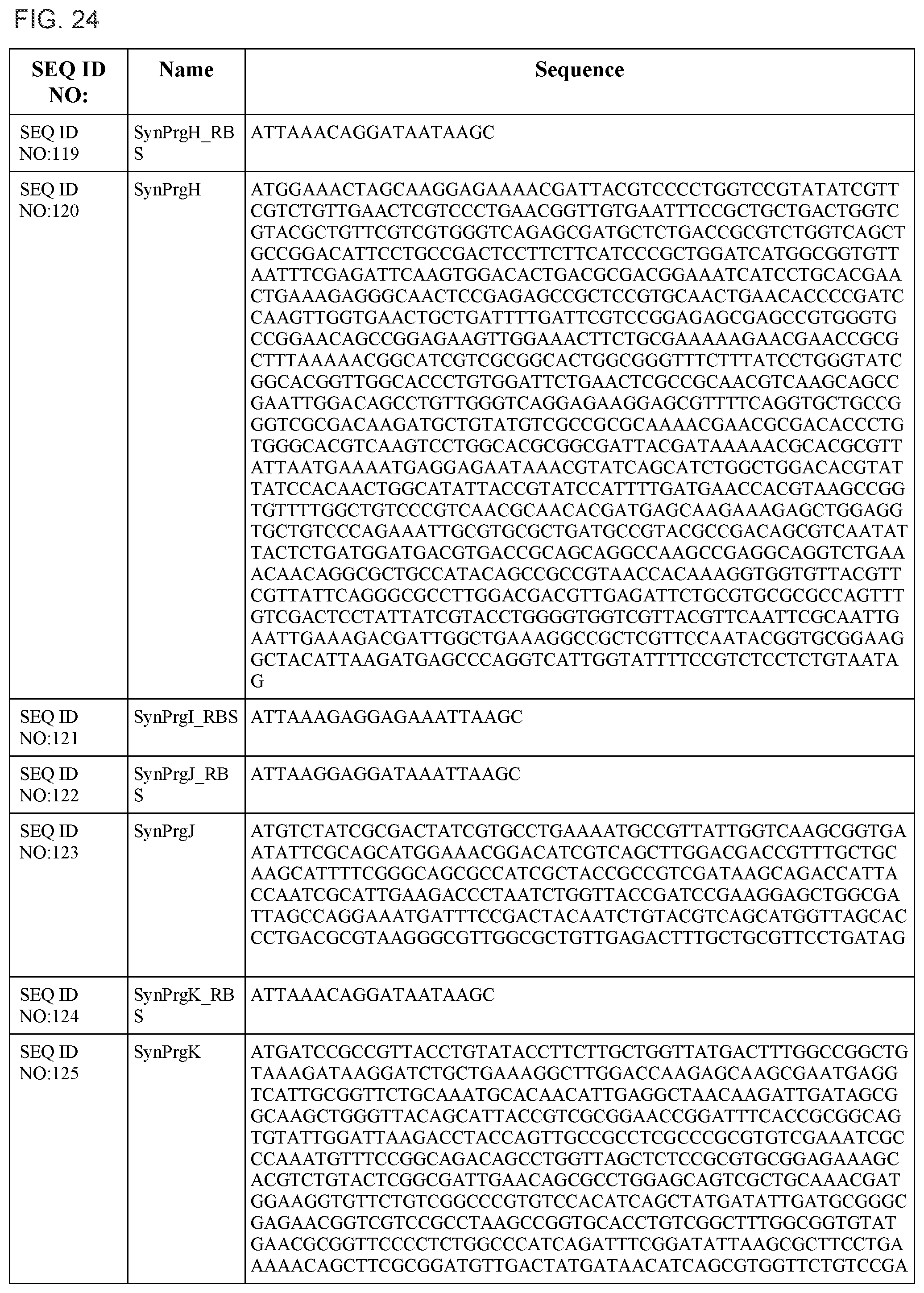
D00062
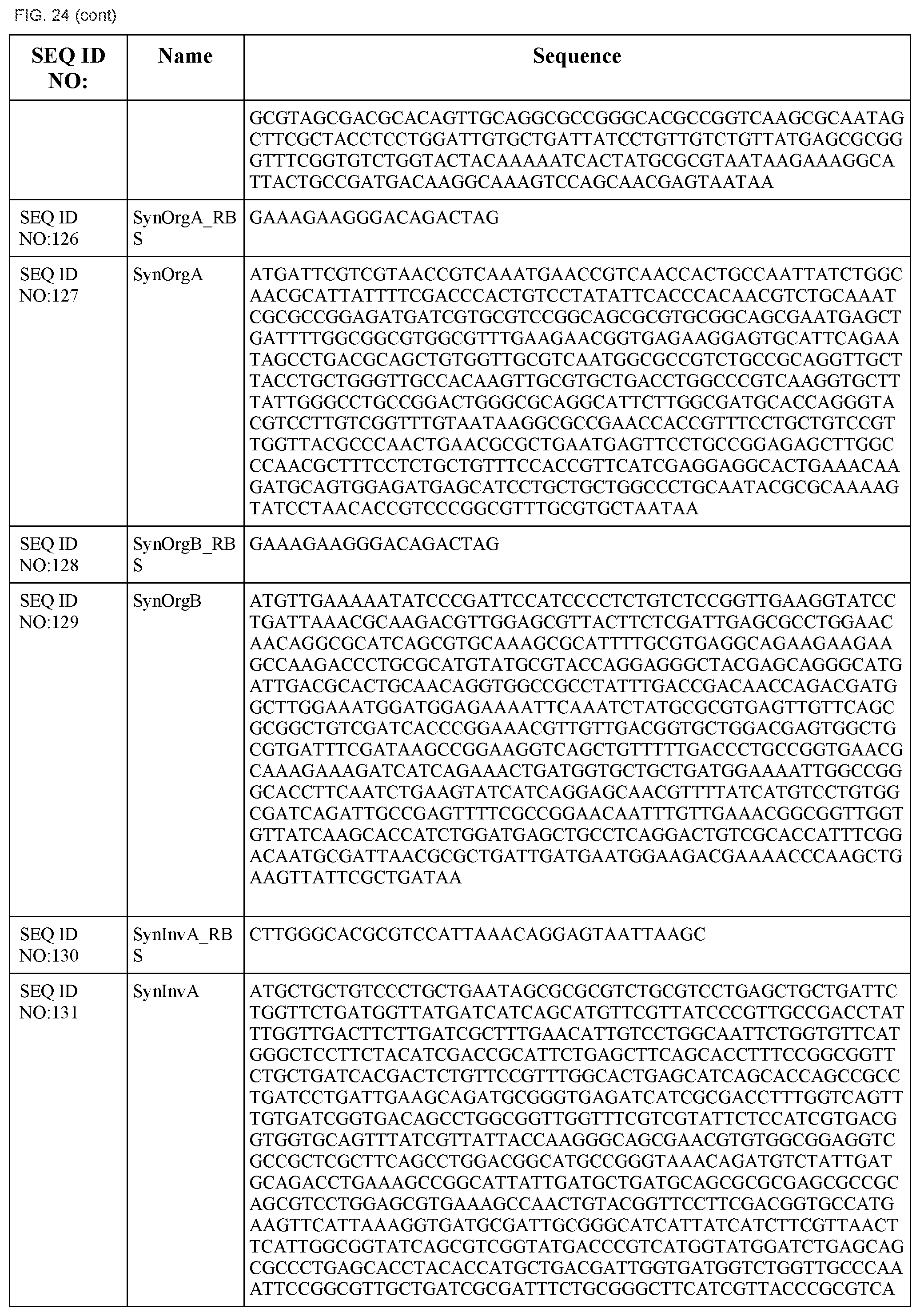
D00063

D00064
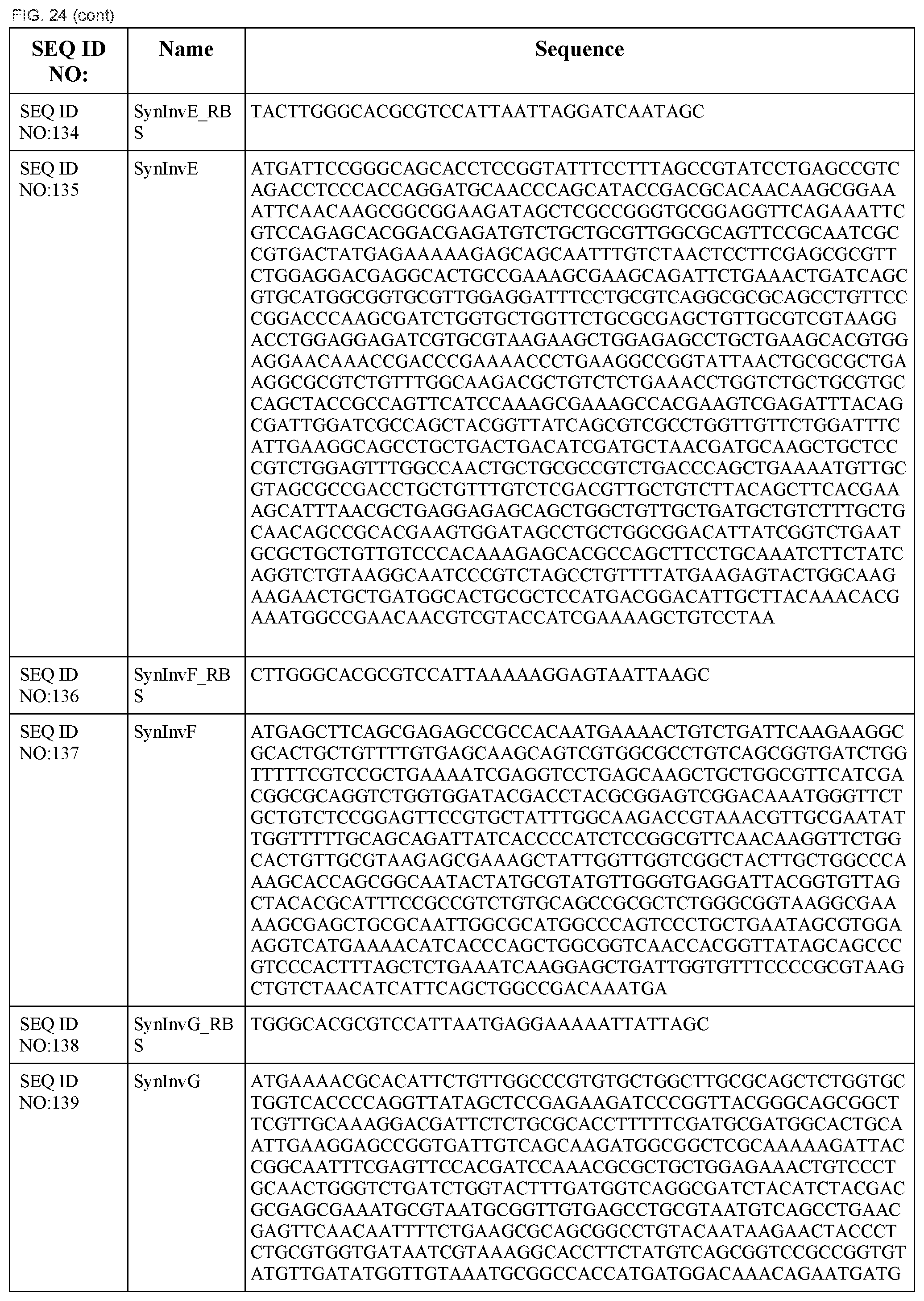
D00065
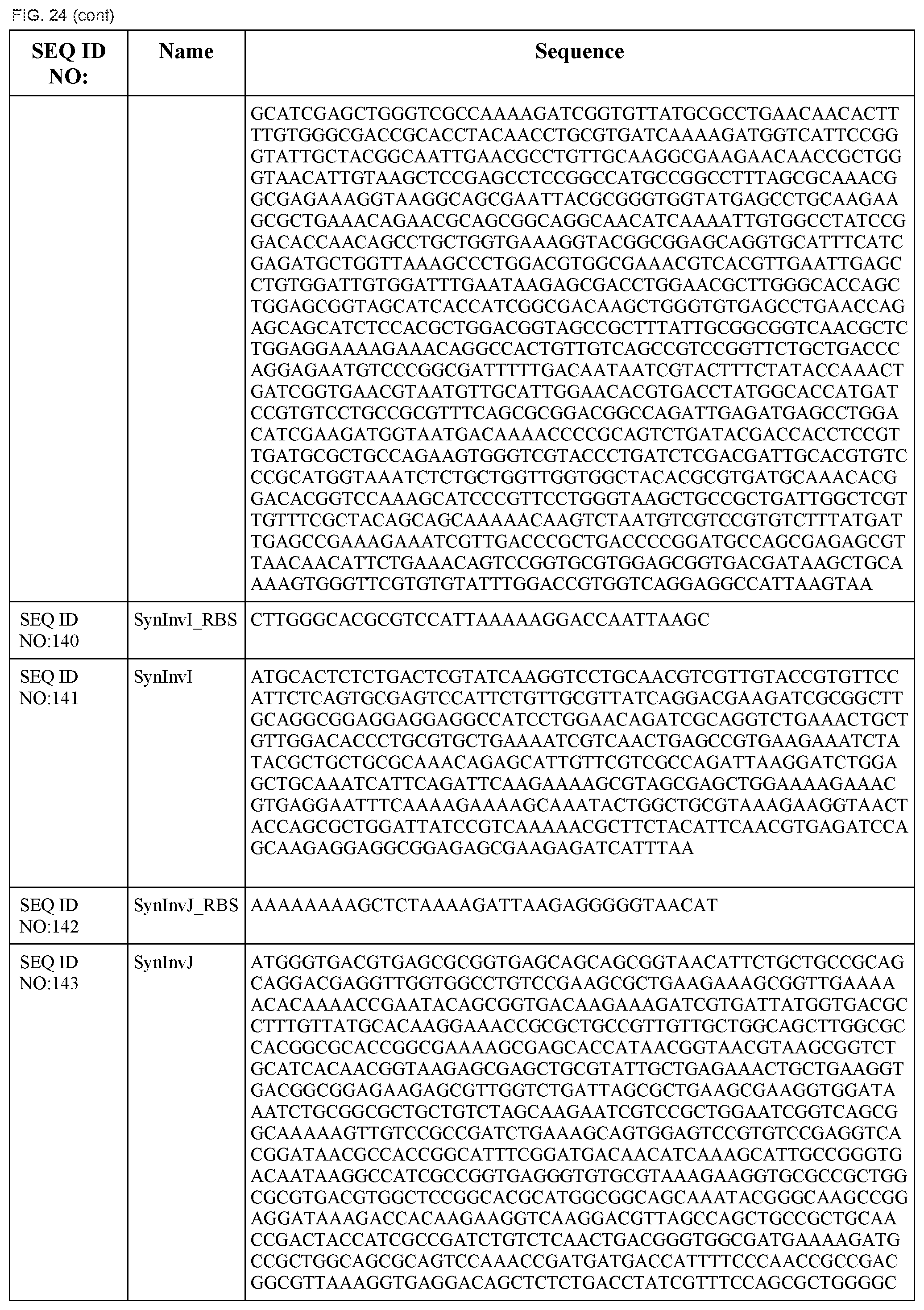
D00066
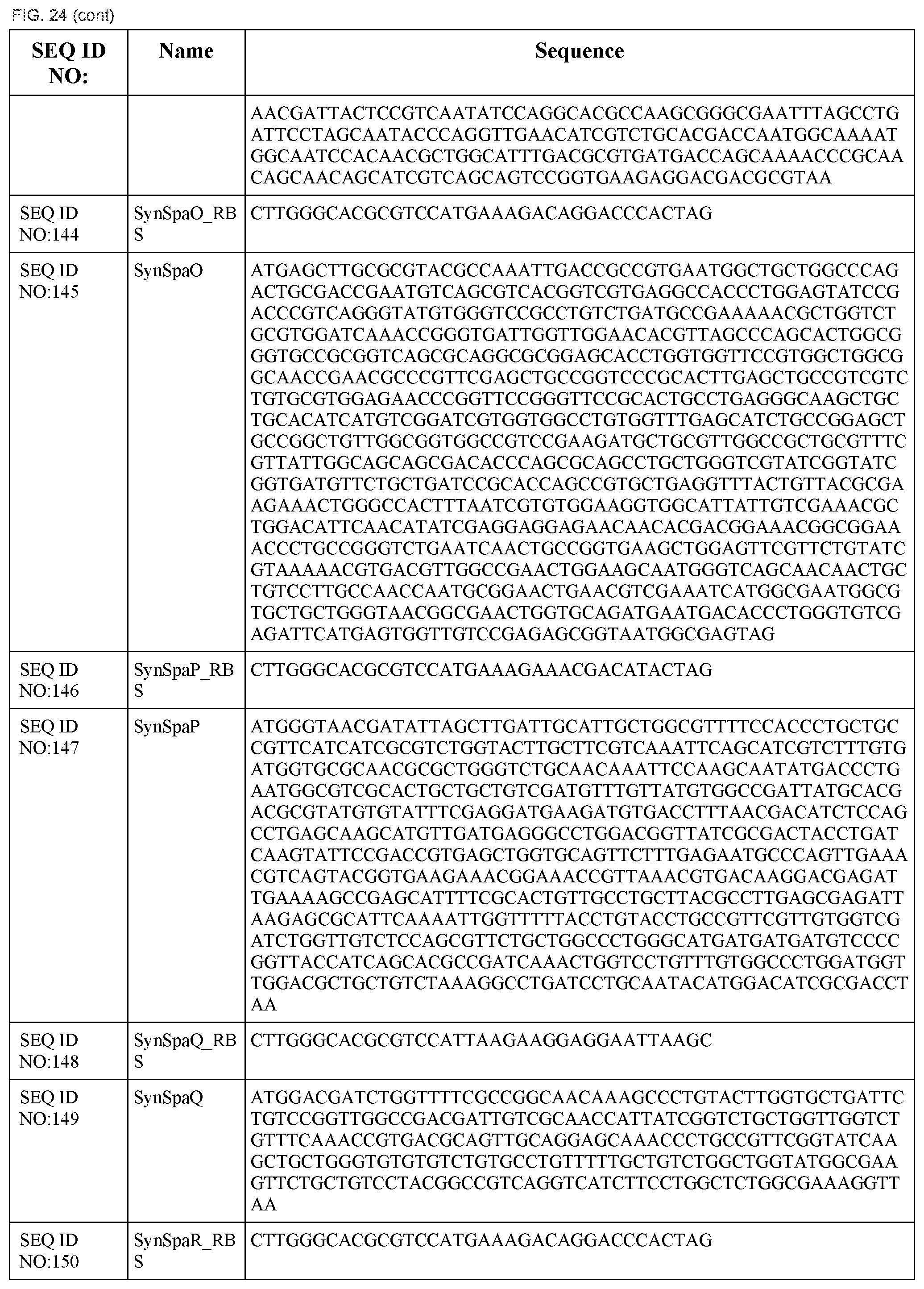
D00067
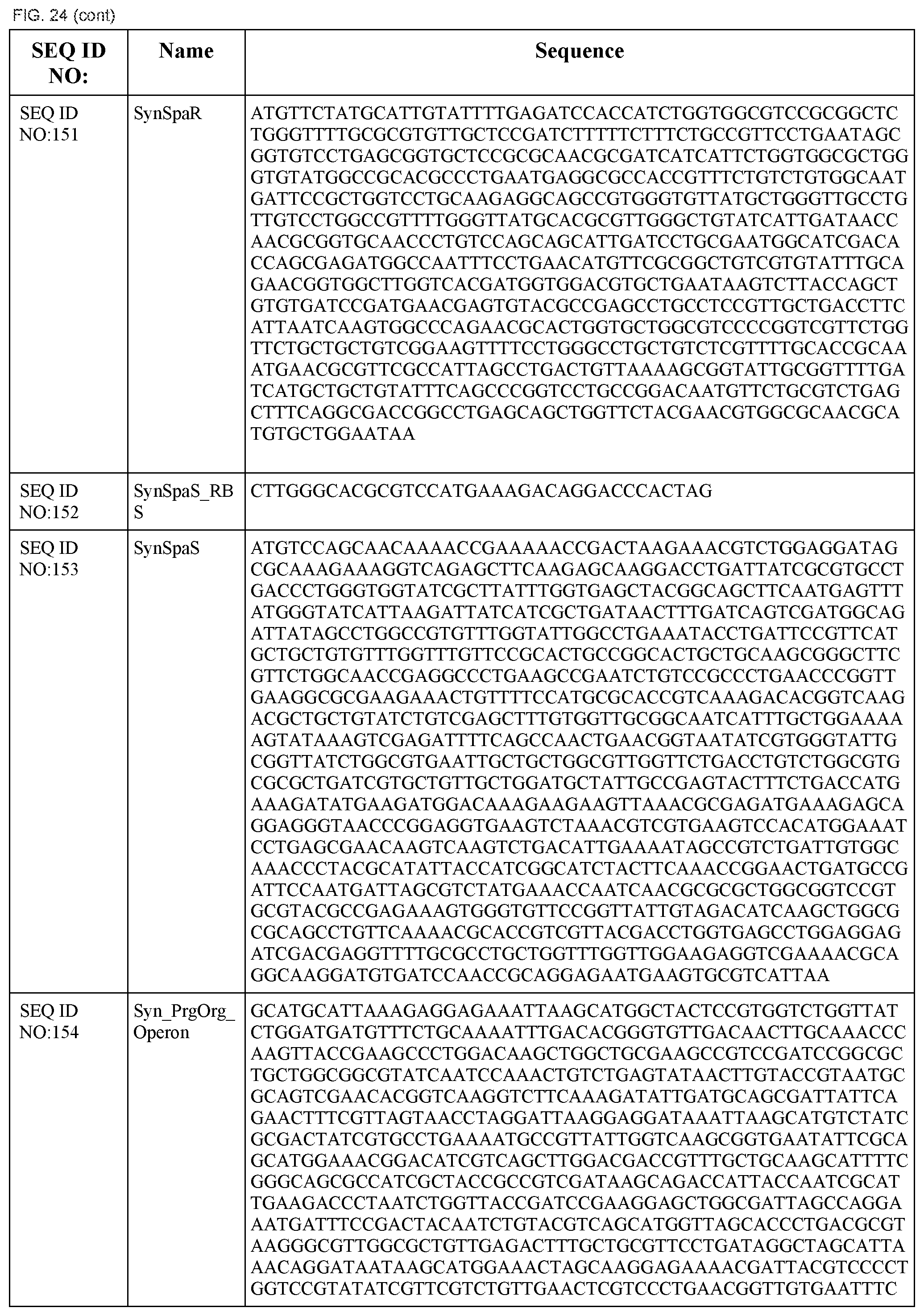
D00068
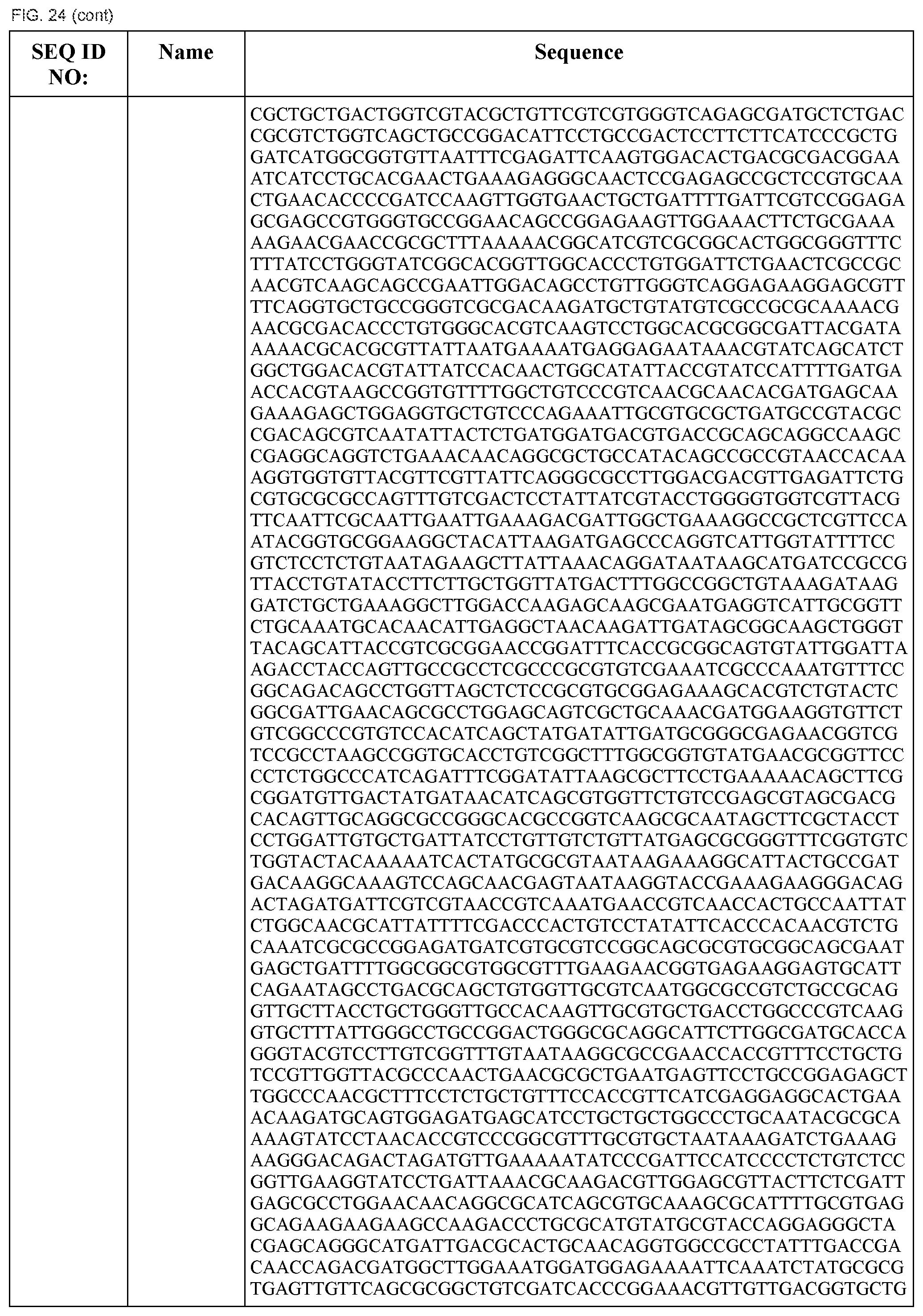
D00069
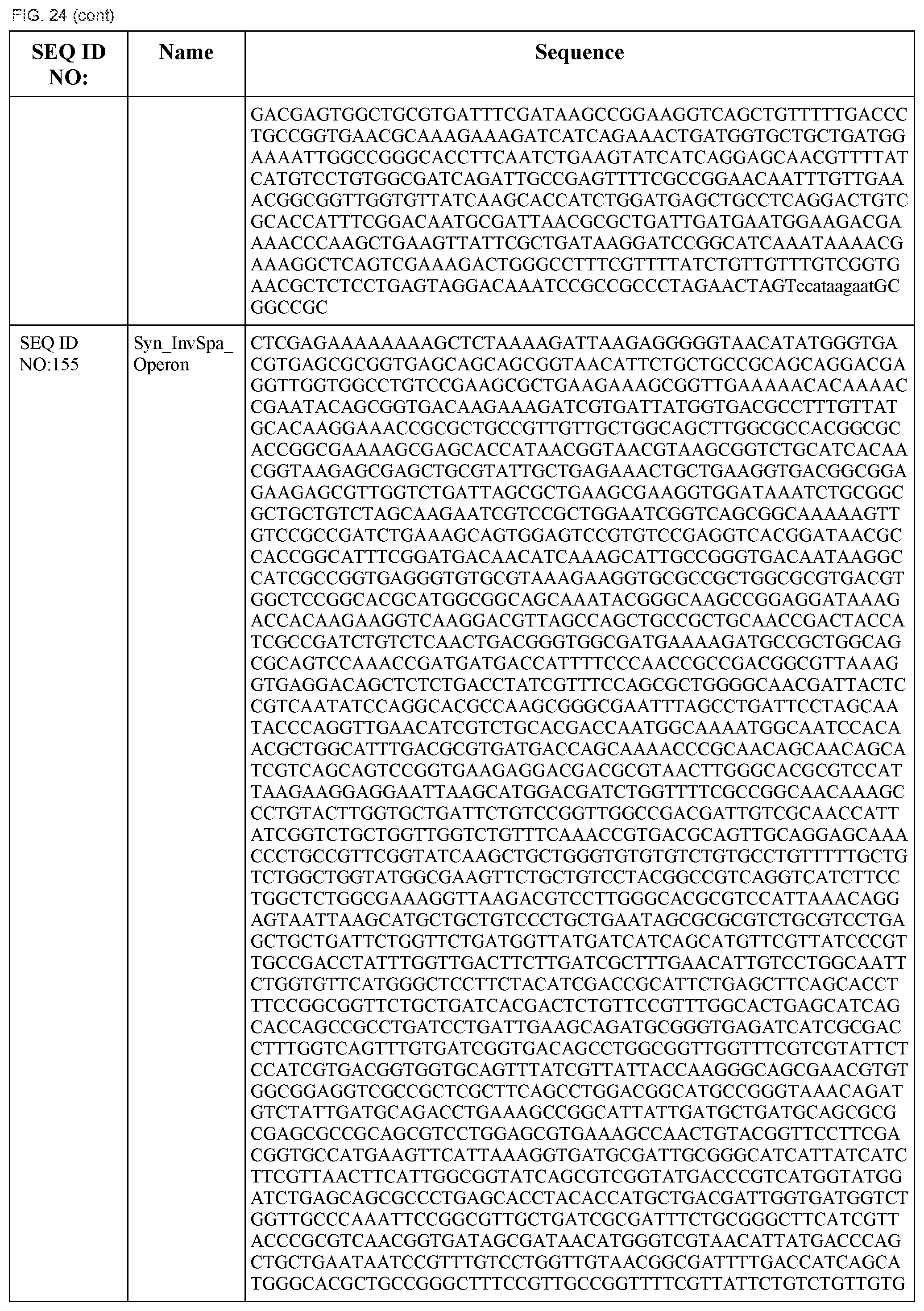
D00070

D00071
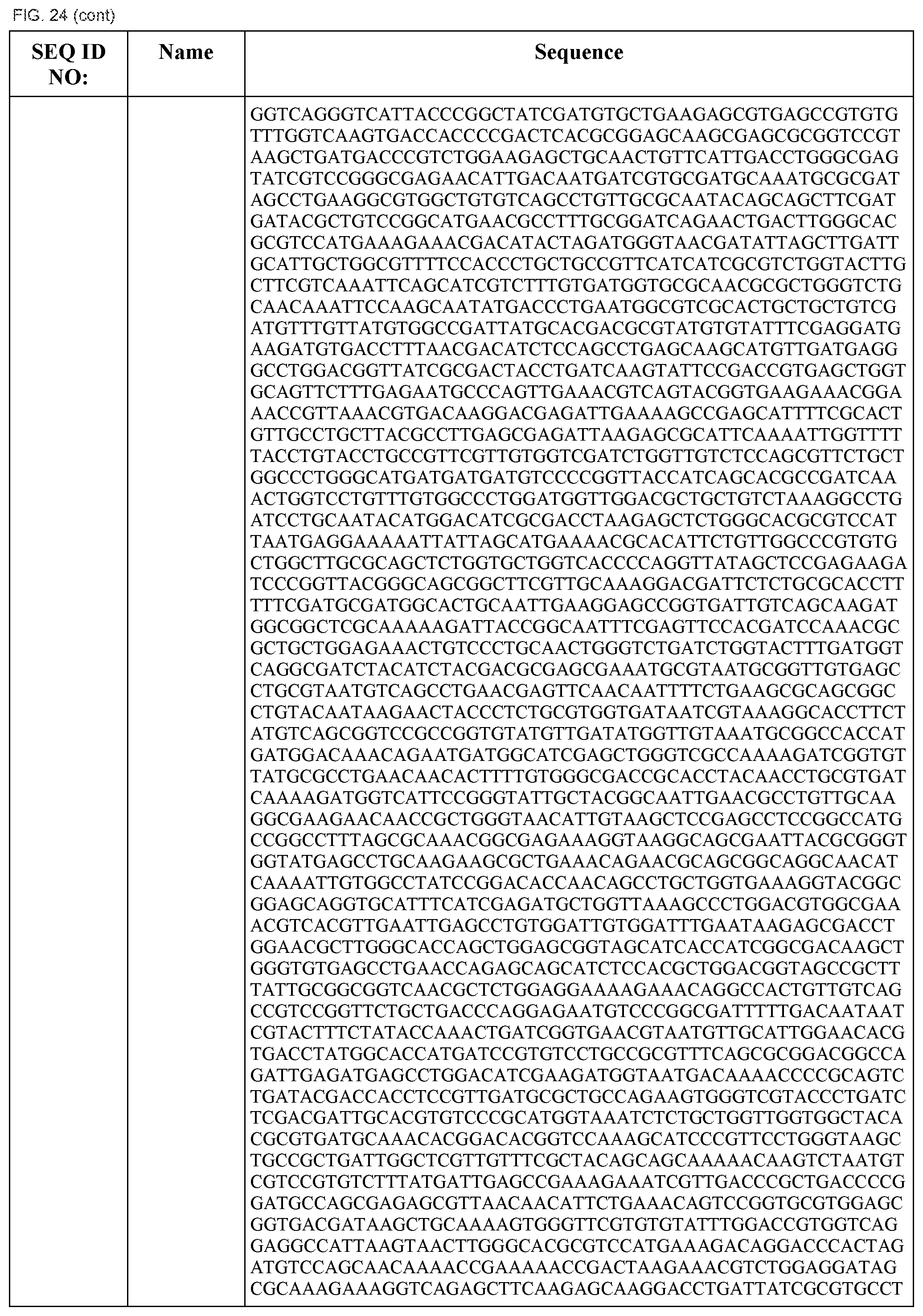
D00072
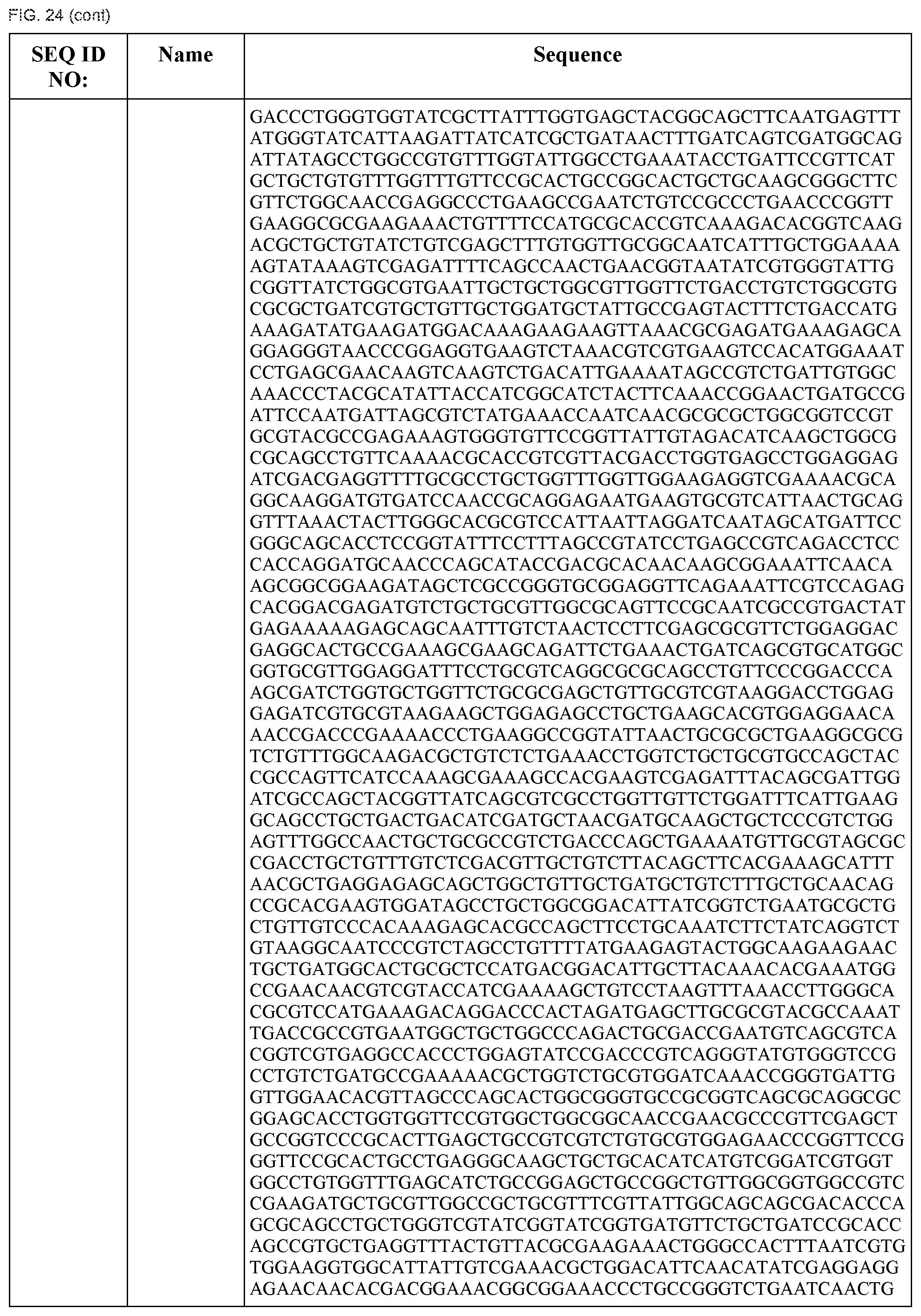
D00073
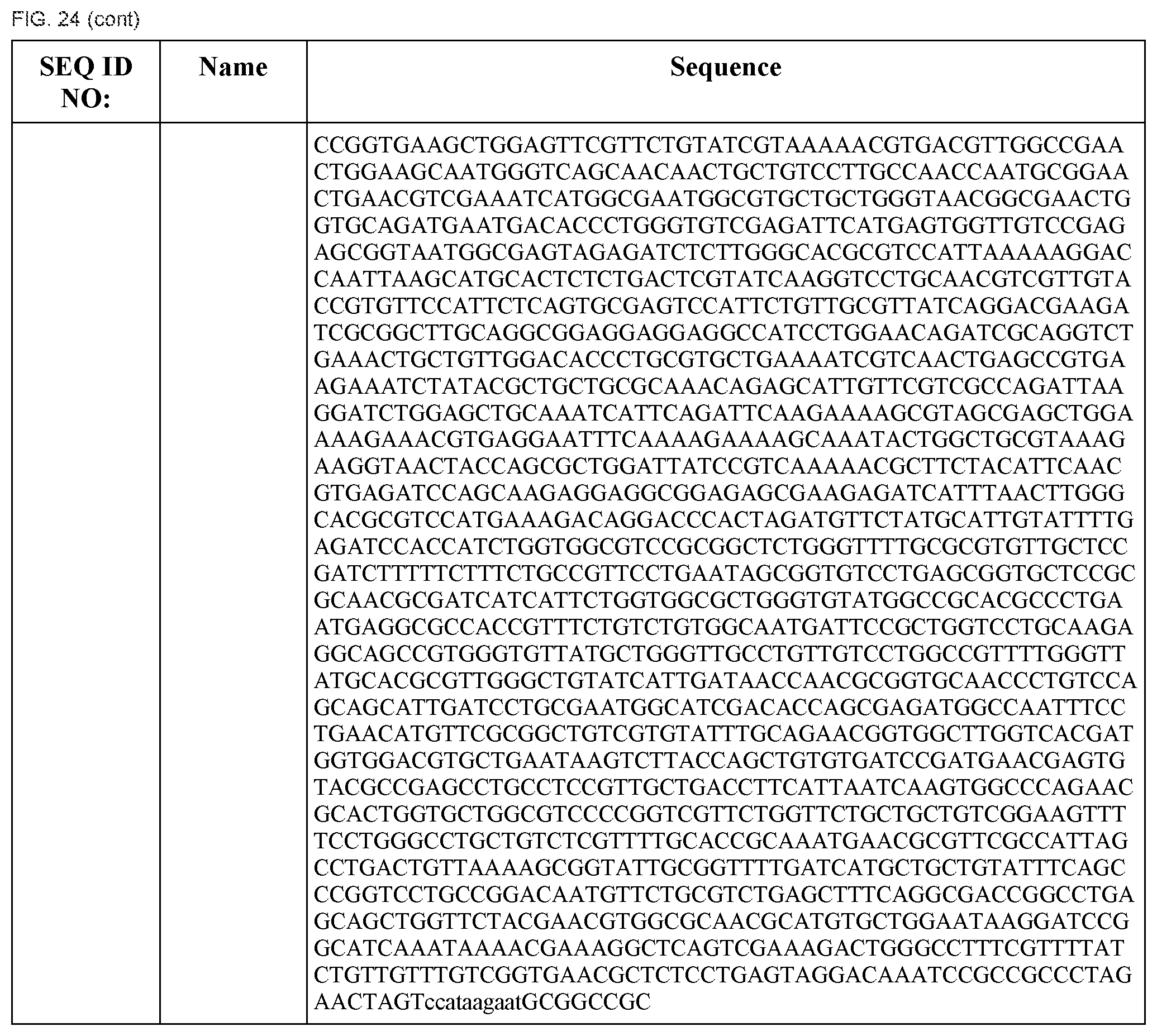
D00074
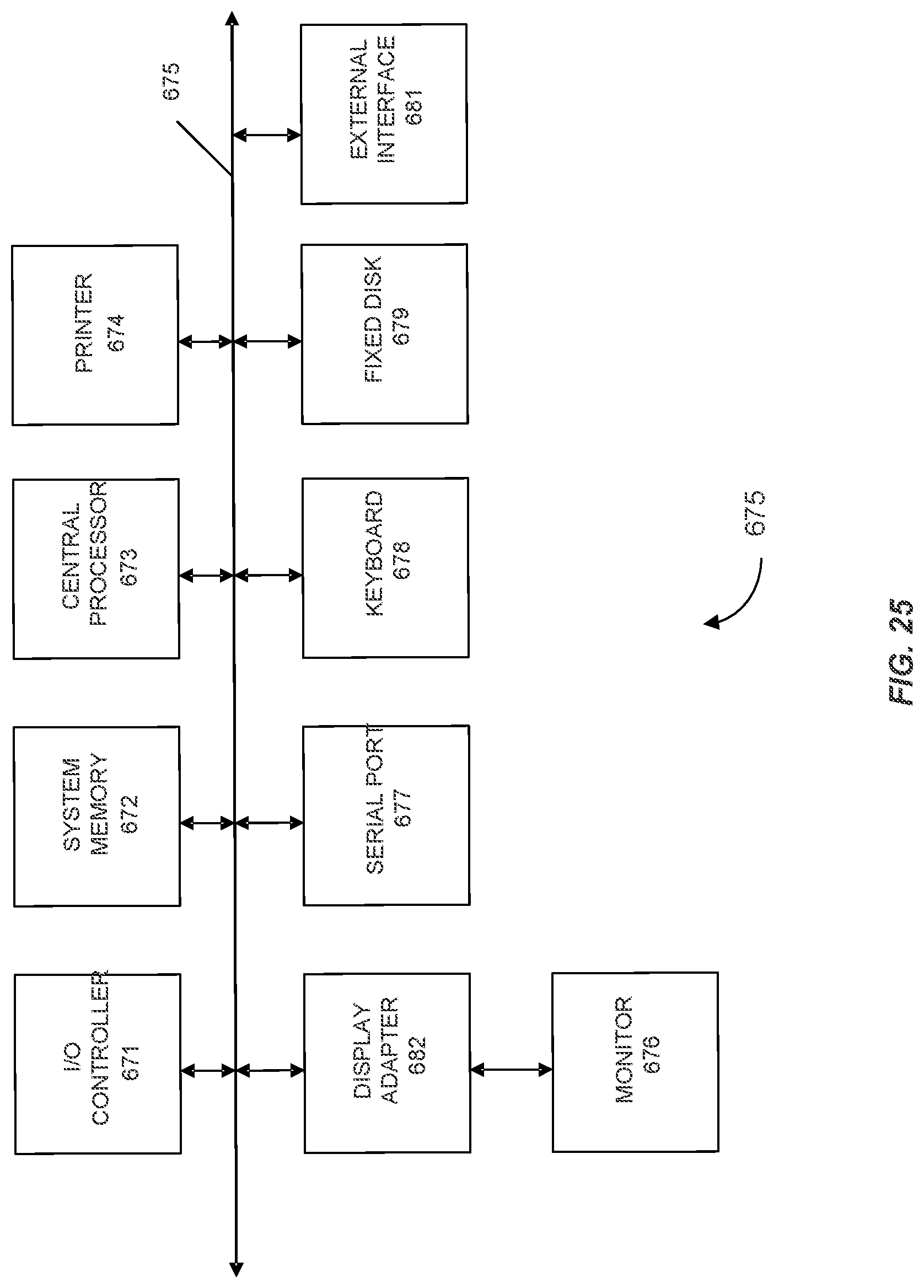
D00075

D00076
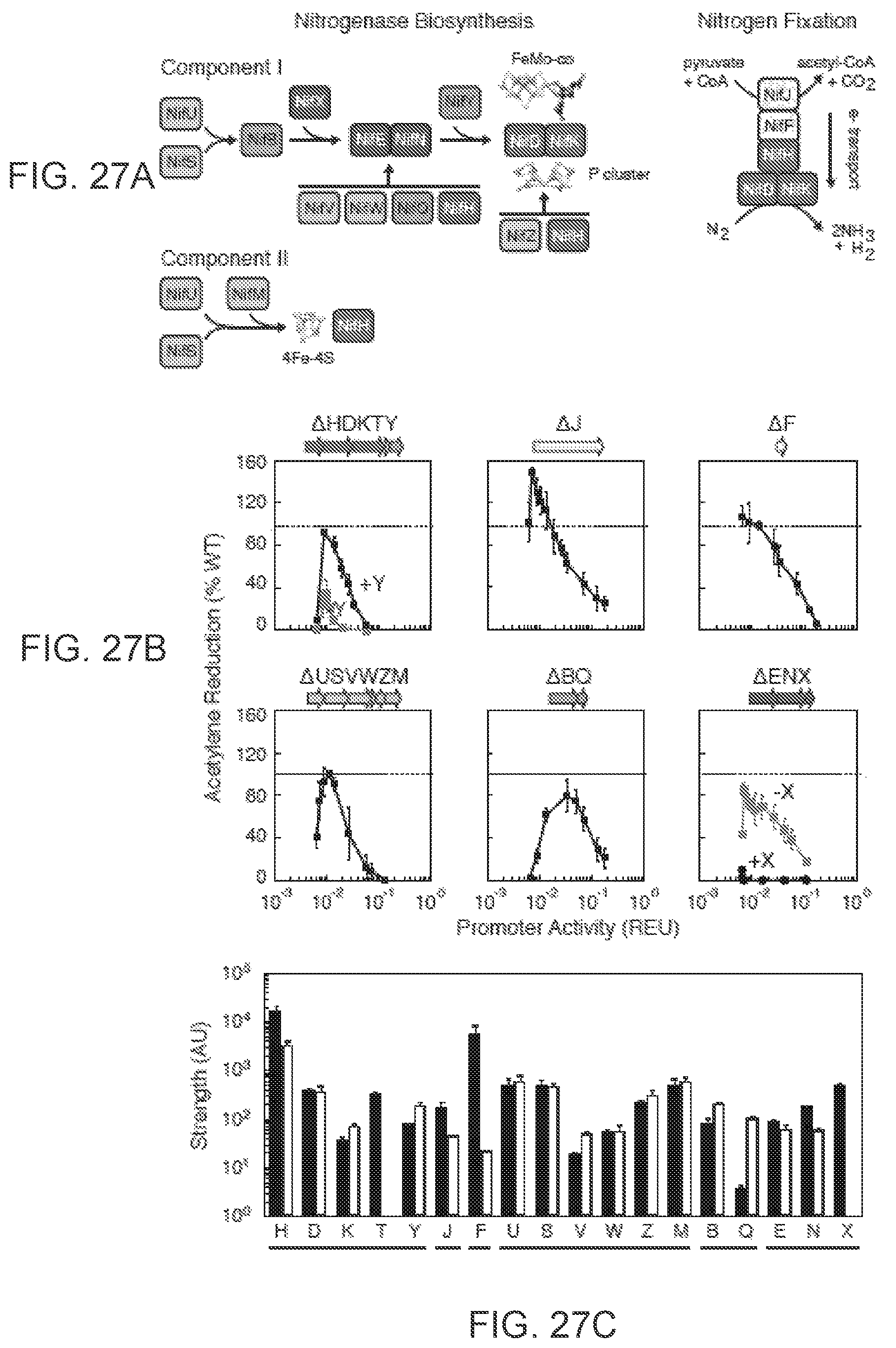
D00077

D00078

D00079
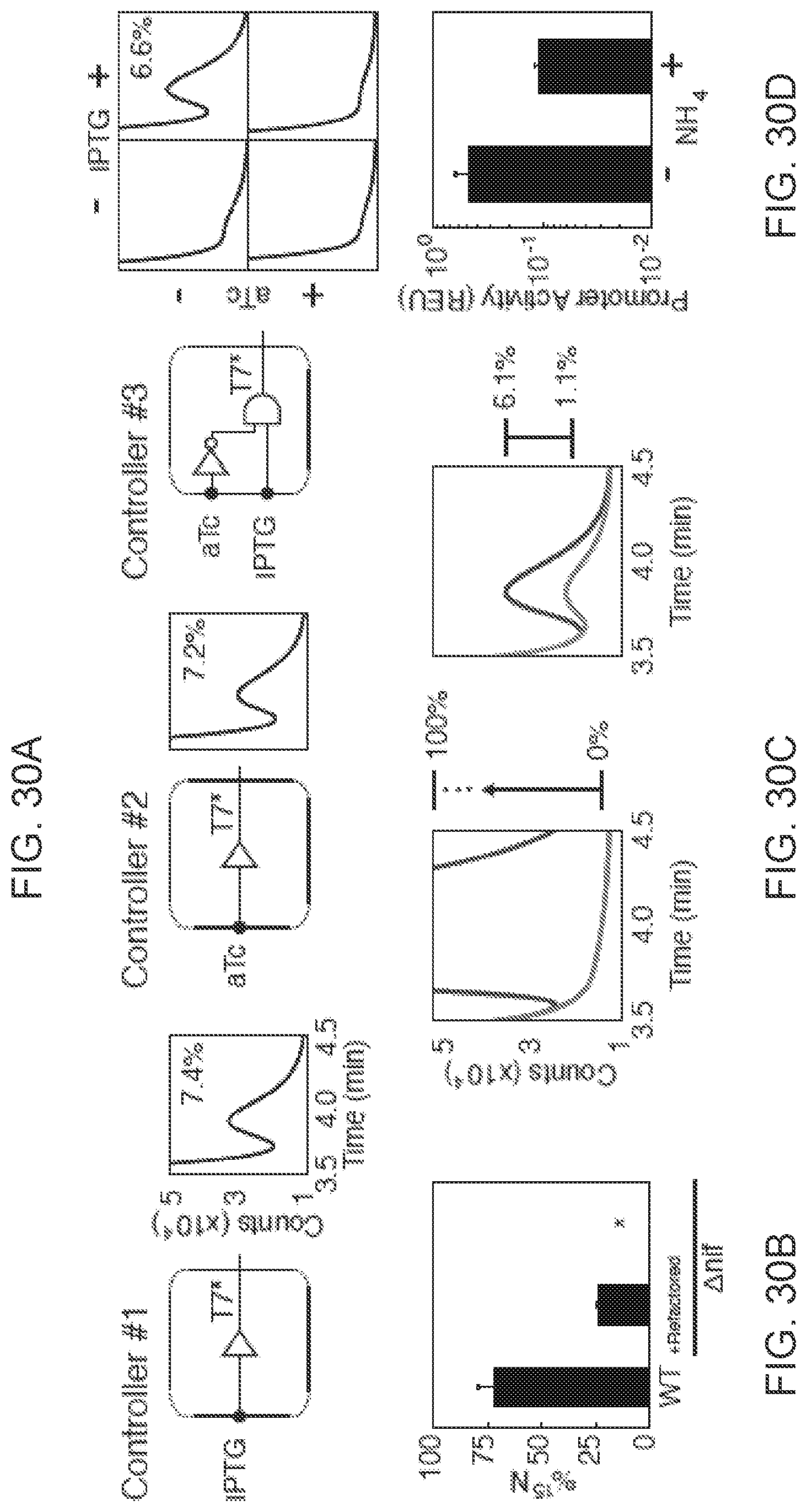
D00080

D00081

D00082
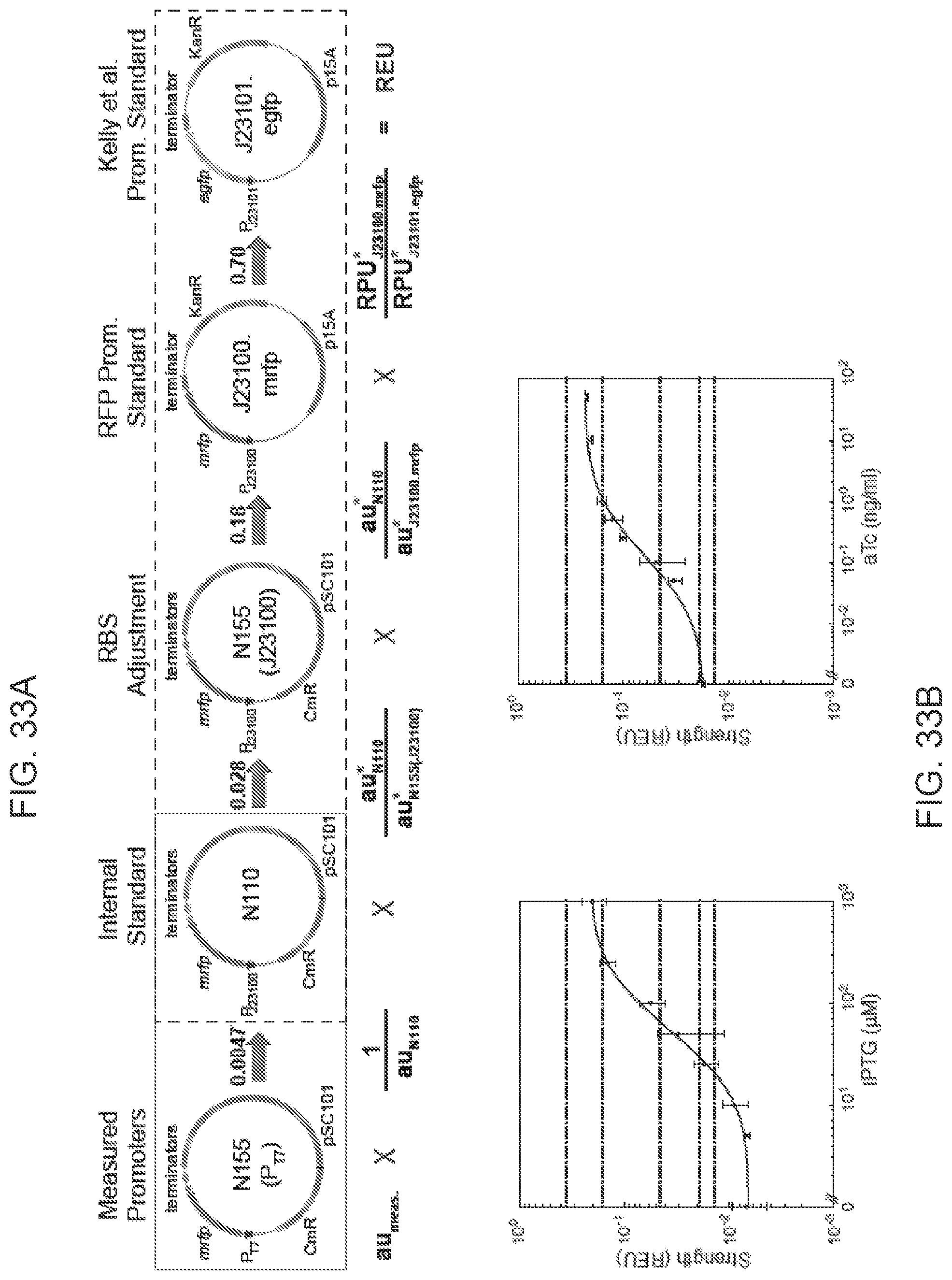
D00083
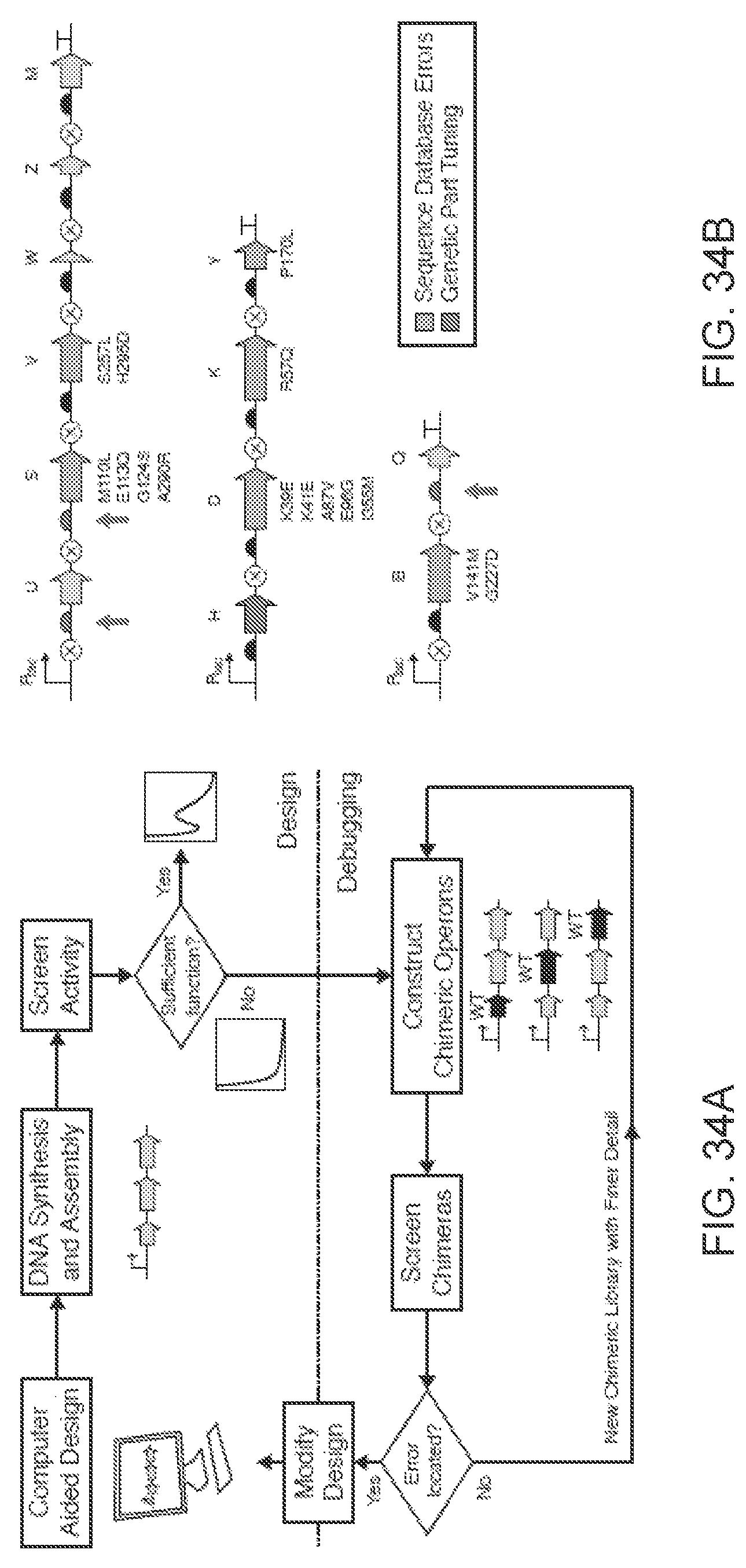
D00084
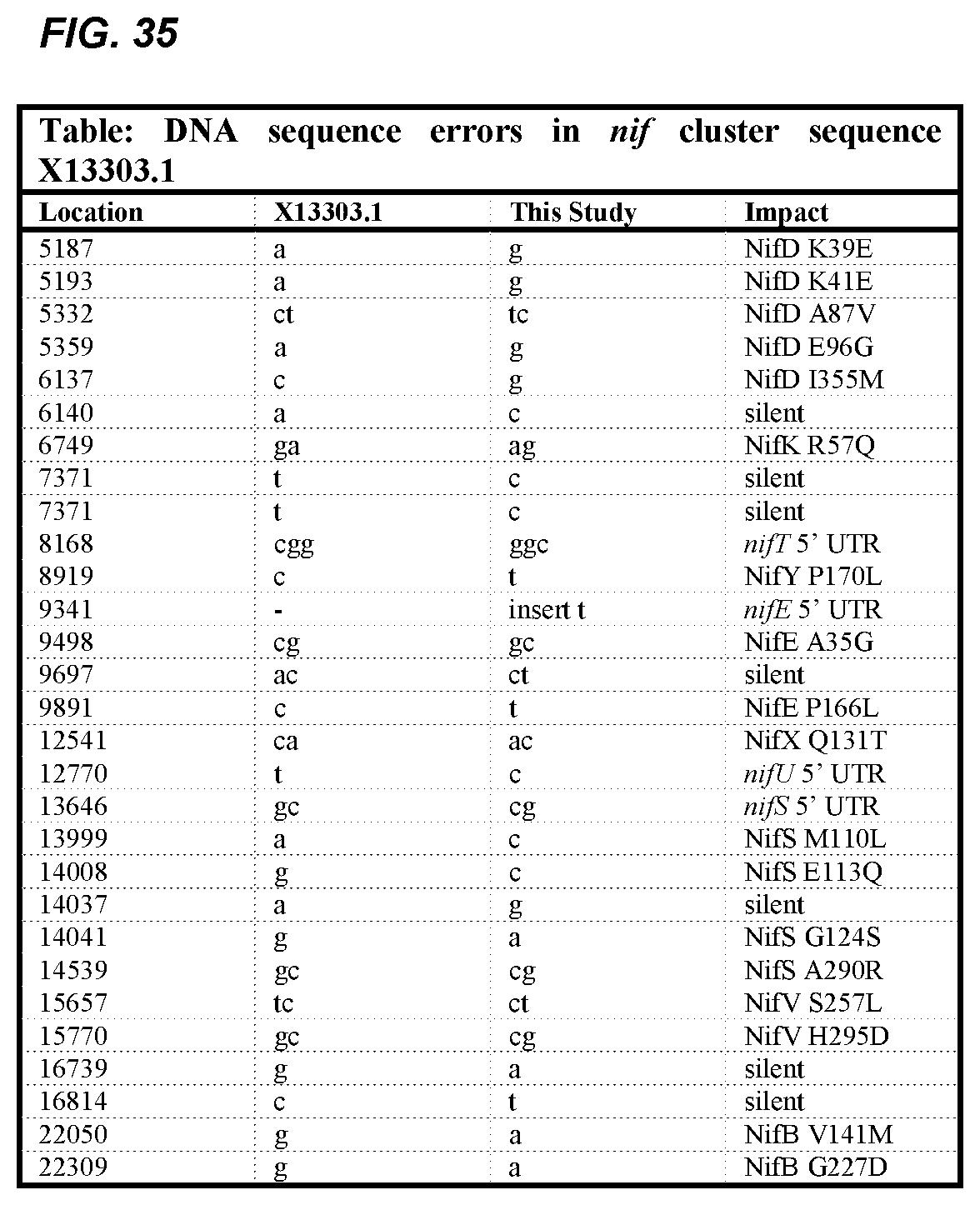
D00085
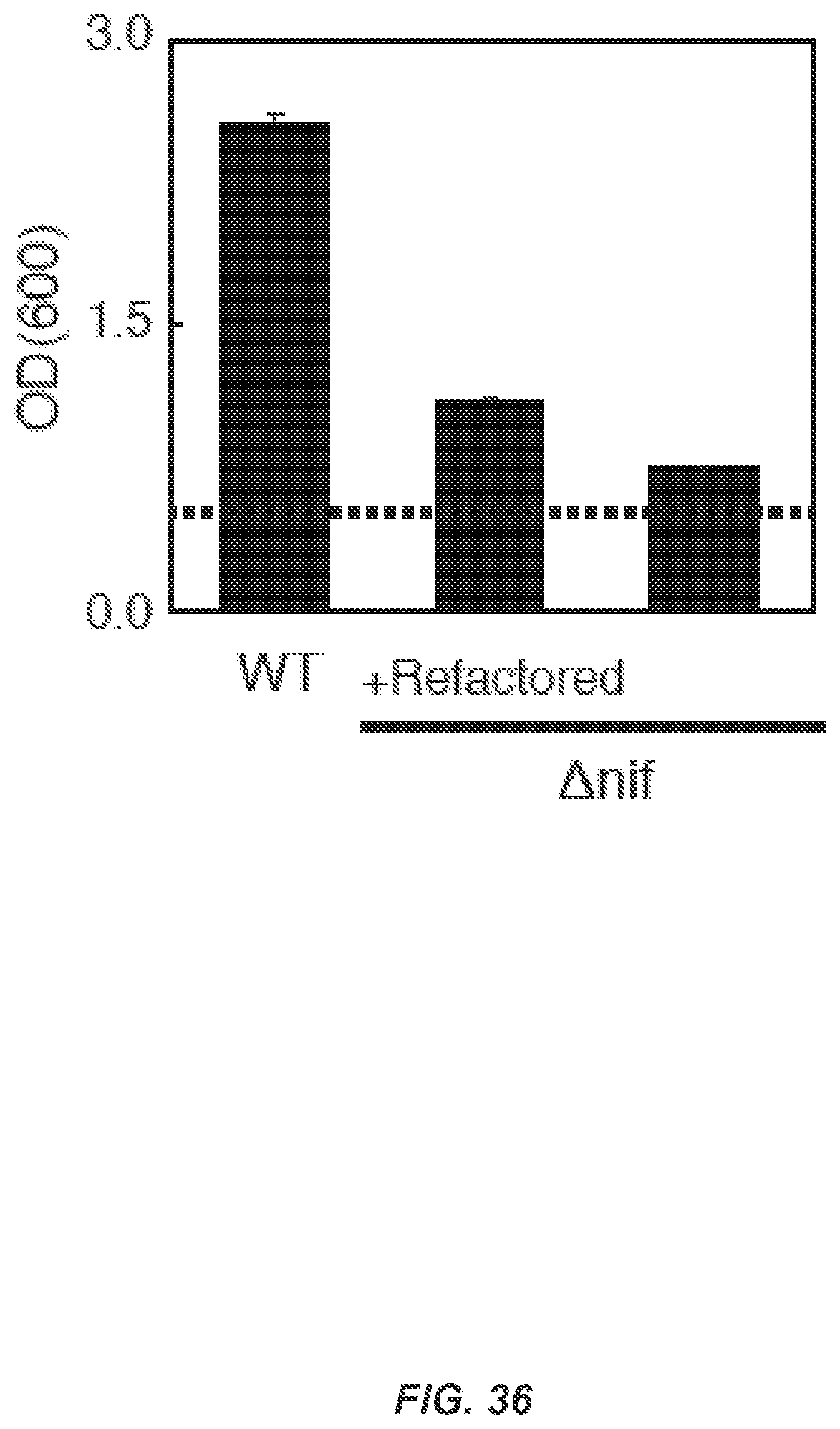
D00086

D00087
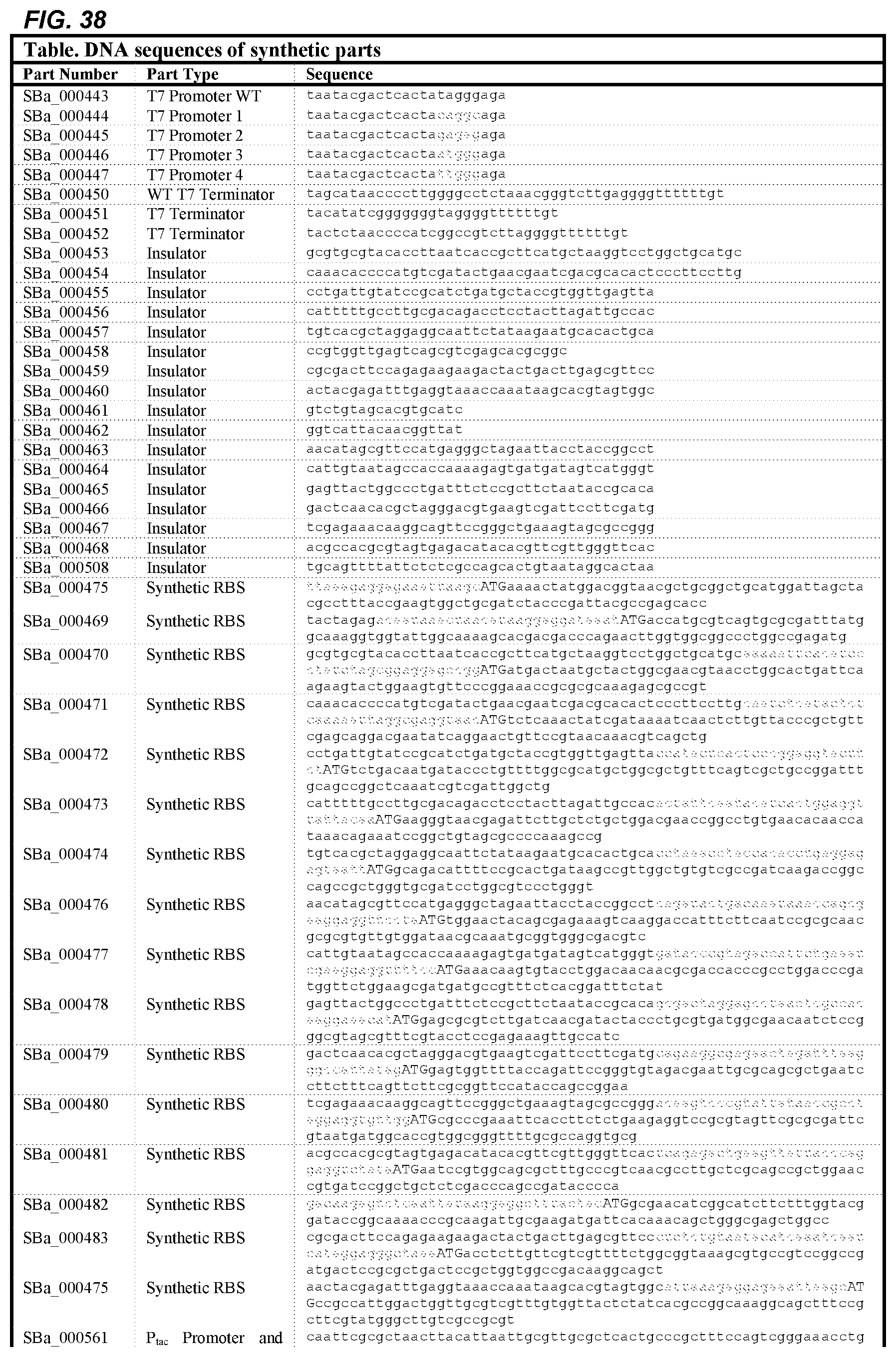
D00088
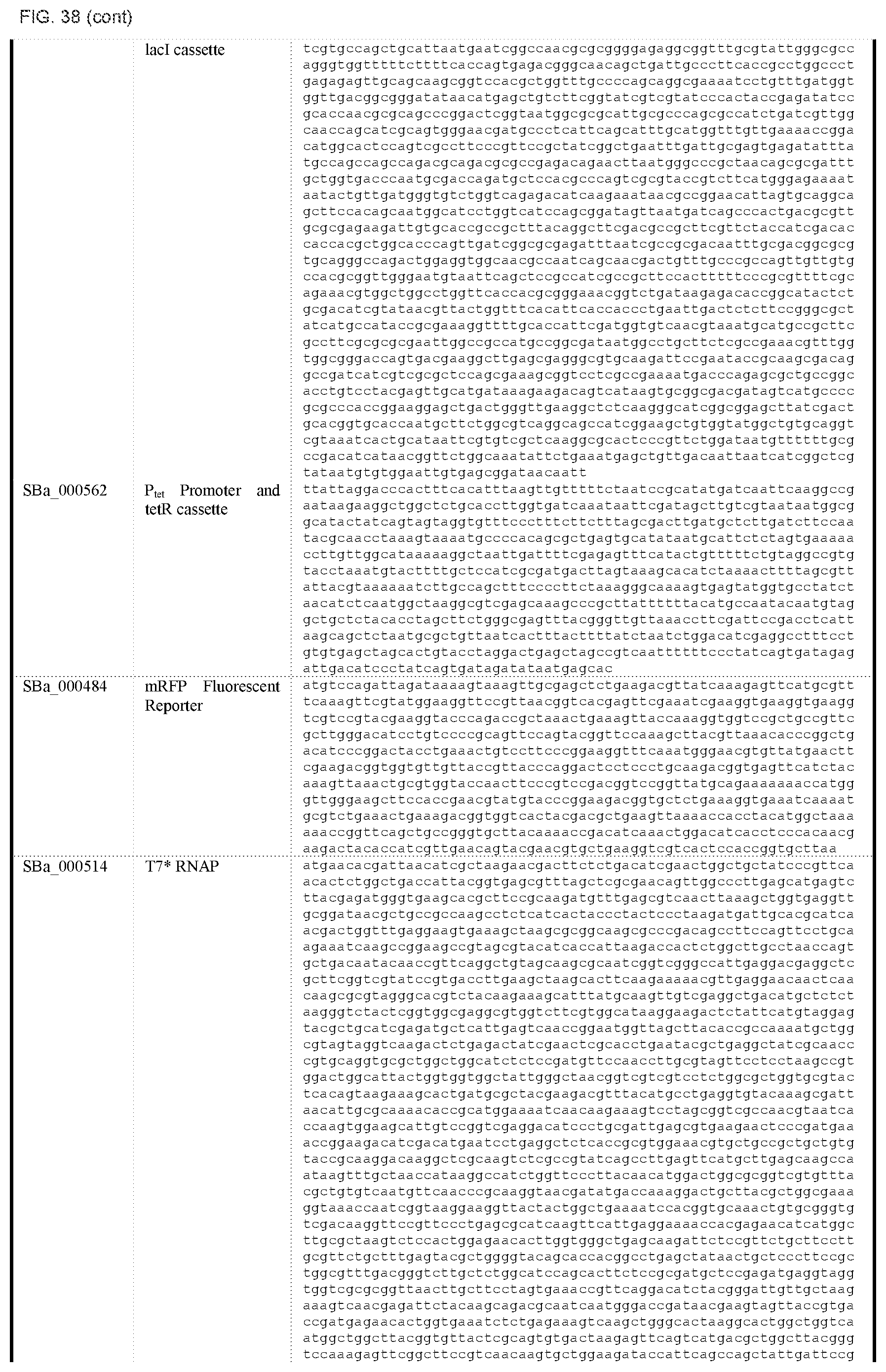
D00089
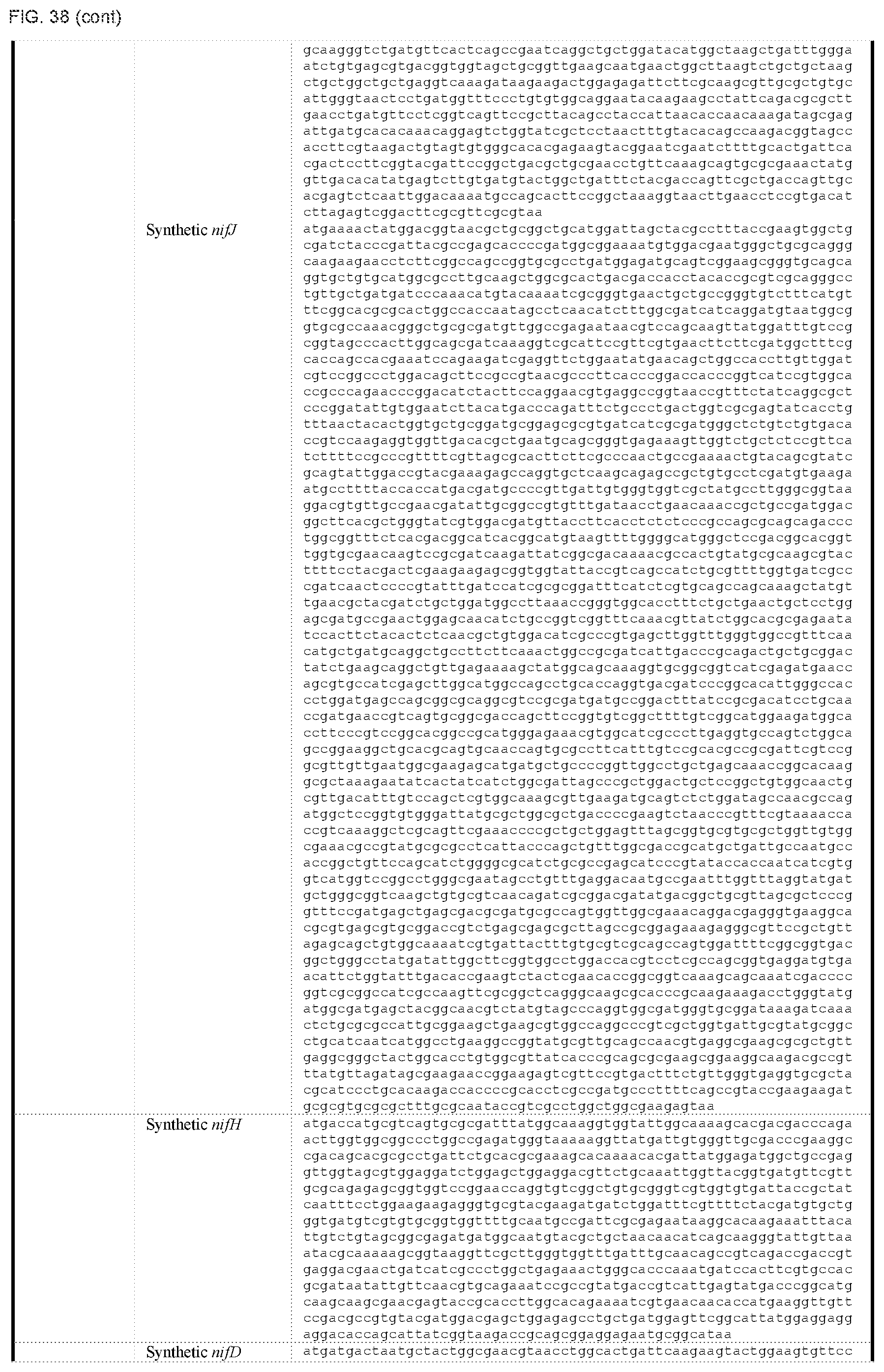
D00090
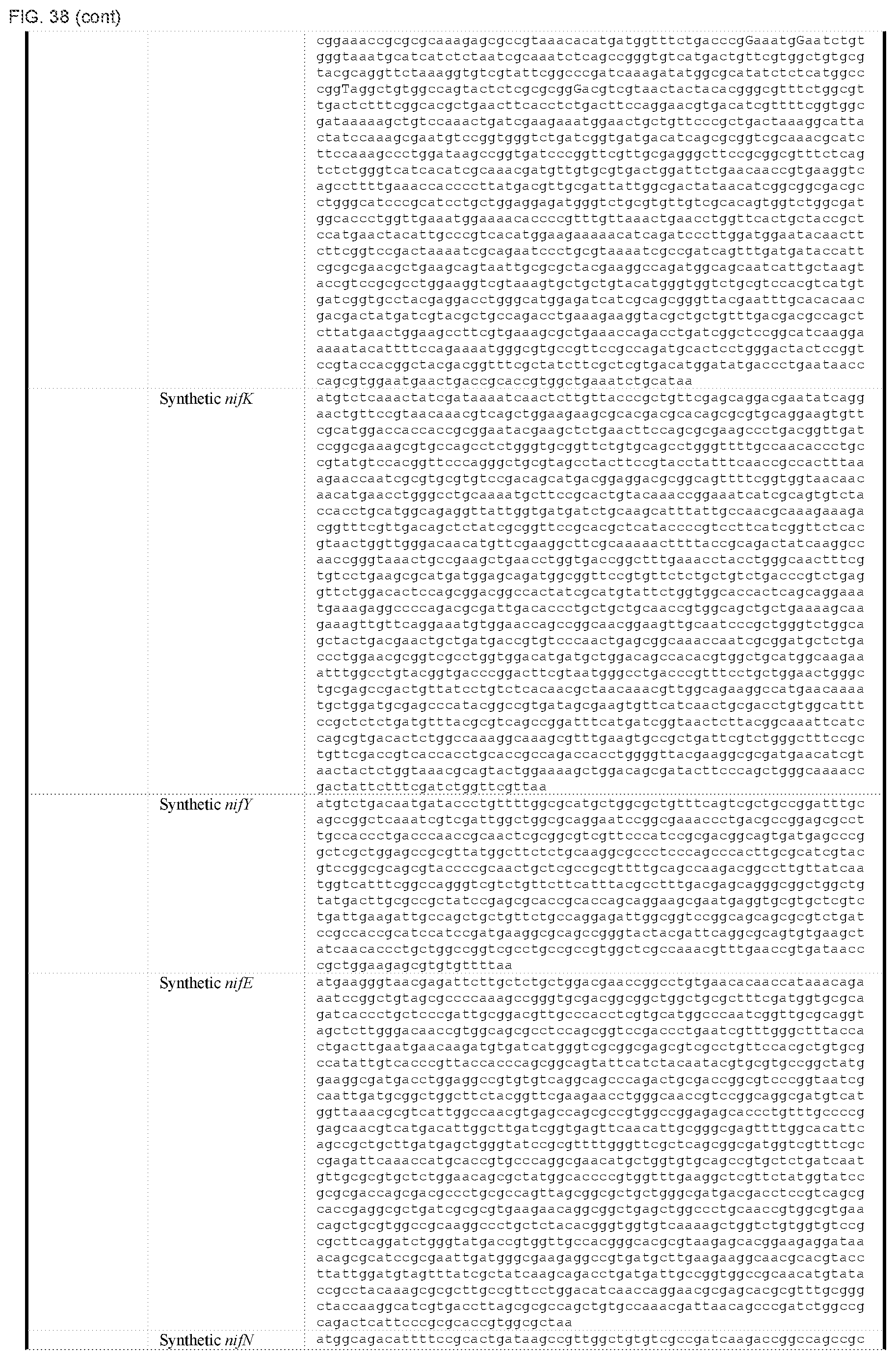
D00091
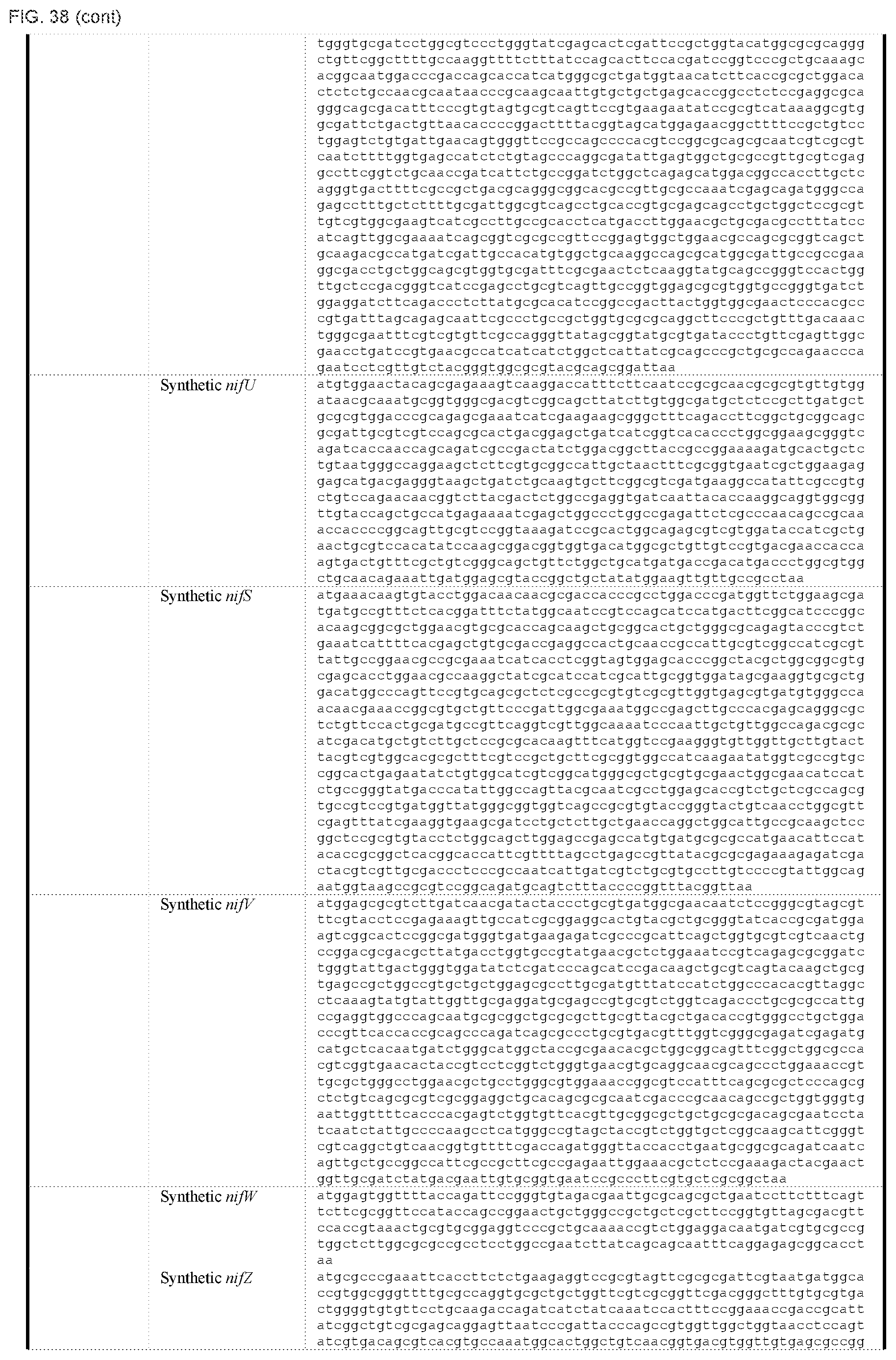
D00092
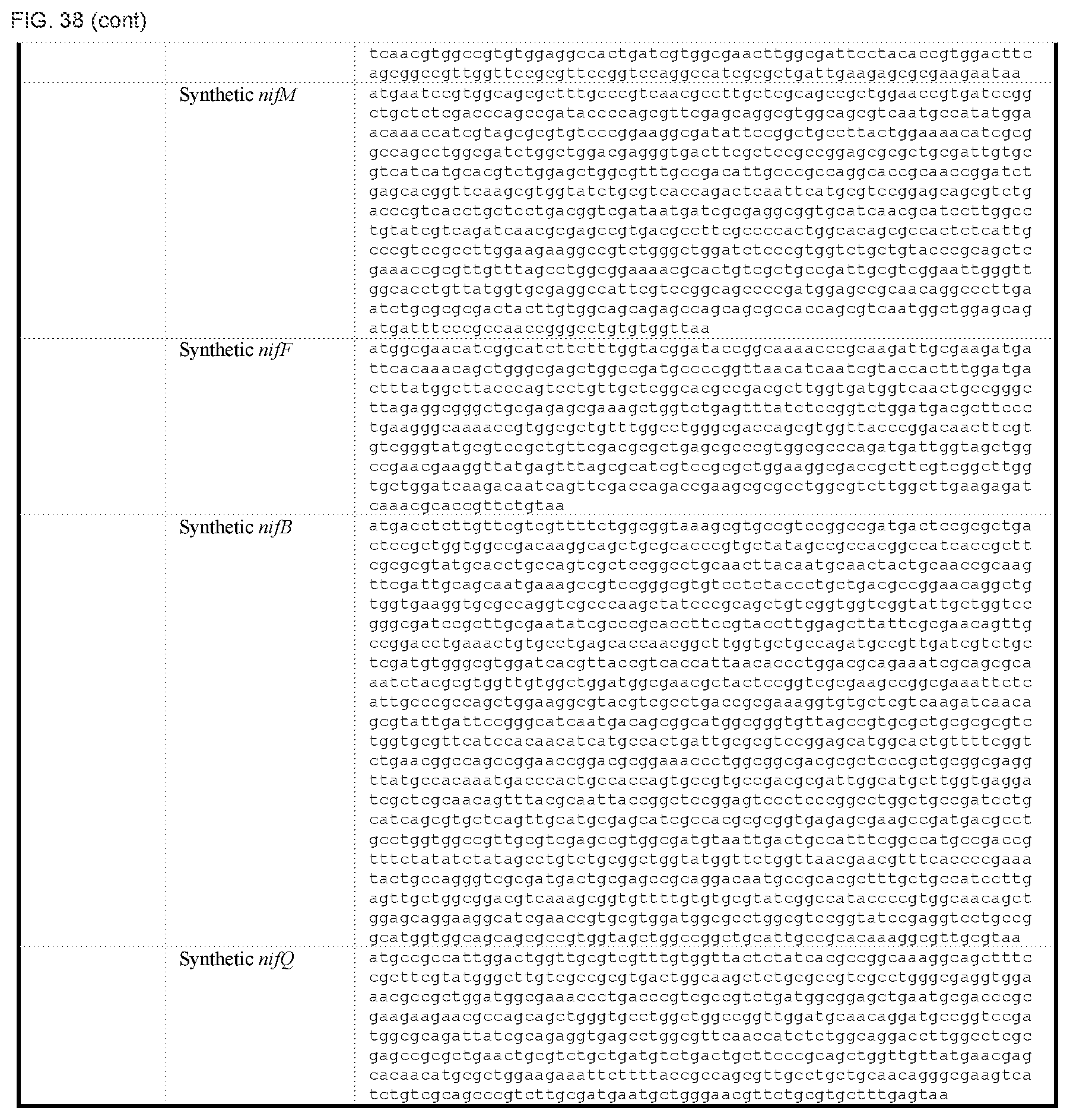
D00093
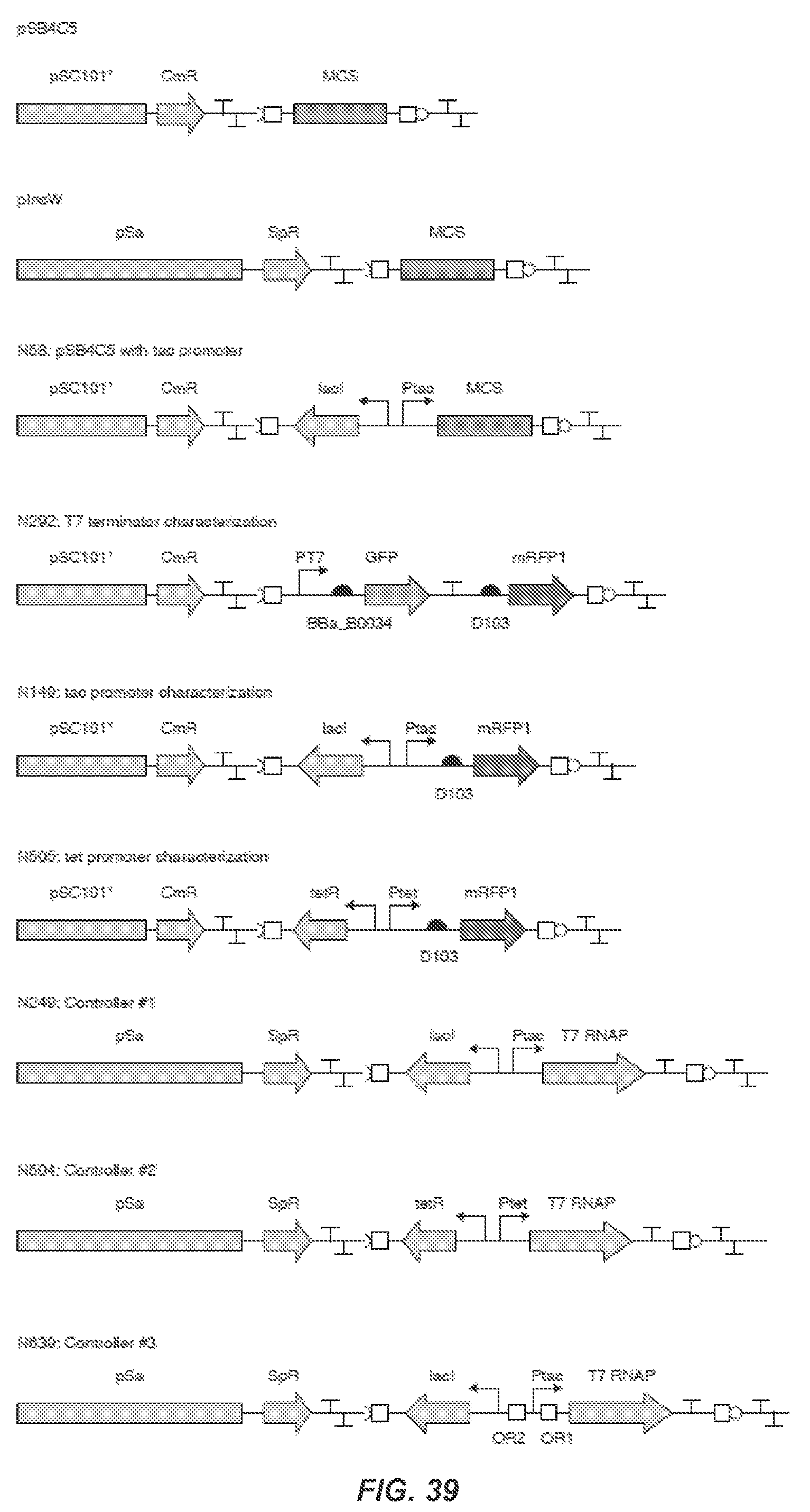
S00001
XML
uspto.report is an independent third-party trademark research tool that is not affiliated, endorsed, or sponsored by the United States Patent and Trademark Office (USPTO) or any other governmental organization. The information provided by uspto.report is based on publicly available data at the time of writing and is intended for informational purposes only.
While we strive to provide accurate and up-to-date information, we do not guarantee the accuracy, completeness, reliability, or suitability of the information displayed on this site. The use of this site is at your own risk. Any reliance you place on such information is therefore strictly at your own risk.
All official trademark data, including owner information, should be verified by visiting the official USPTO website at www.uspto.gov. This site is not intended to replace professional legal advice and should not be used as a substitute for consulting with a legal professional who is knowledgeable about trademark law.